compendium on extrapolation - wip iykyk
beyond pigment & pixel (pigment -> pixel -> 🗯)
prognose, trend, forecast, estimation, predict, future
.jpg)
.jpg)
.jpg)
.jpg)
extrapolation explained by Johan Rijpma
first prototype:
.jpg)
.jpg)
.jpg)
18.03.
some (reverse)extrapolation combinations. no pre no post.
.jpg)
rgb + irr 14
.jpg)
rgb + uv 06
.jpg)
rgb + xray 08
.jpg)
rgb + xray 15
.jpg)
irr + uv 12
.jpg)
uv + xray 08
.jpg)
uv + xray 13
.jpg)
uv + xray 20
reverse extrapolation uv -> cam
.jpg)
rgb + uv 01
.jpg)
rgb + uv 04
.jpg)
rgb + uv 07
.jpg)
rgb + uv 08
.jpg)
rgb + uv 09
.jpg)
rgb + uv 11
.jpg)
rgb + uv 12
.jpg)
rgb + uv 13
.jpg)
rgb + uv 15
.jpg)
rgb + uv 20
extrapolation cam -> uv
6 works. each 4 different captures -> 6 combinations. 20 snaps per combination = 120 per
work
6 * 120 = 720ed.
blur + segmentation as pre?
.jpg)
kmeans, 30%,
.png)
kmeans, 100%, 15blur, 30 cluster
19.03.
js webgl experiments
.jpg)
js/0319_pipeline/index2.html
.jpg)
5 clusters
.jpg)
15 clusters
.jpg)
30 clusters
.jpg)
60 clusters
20.03.
sandwich extrapolation geometry
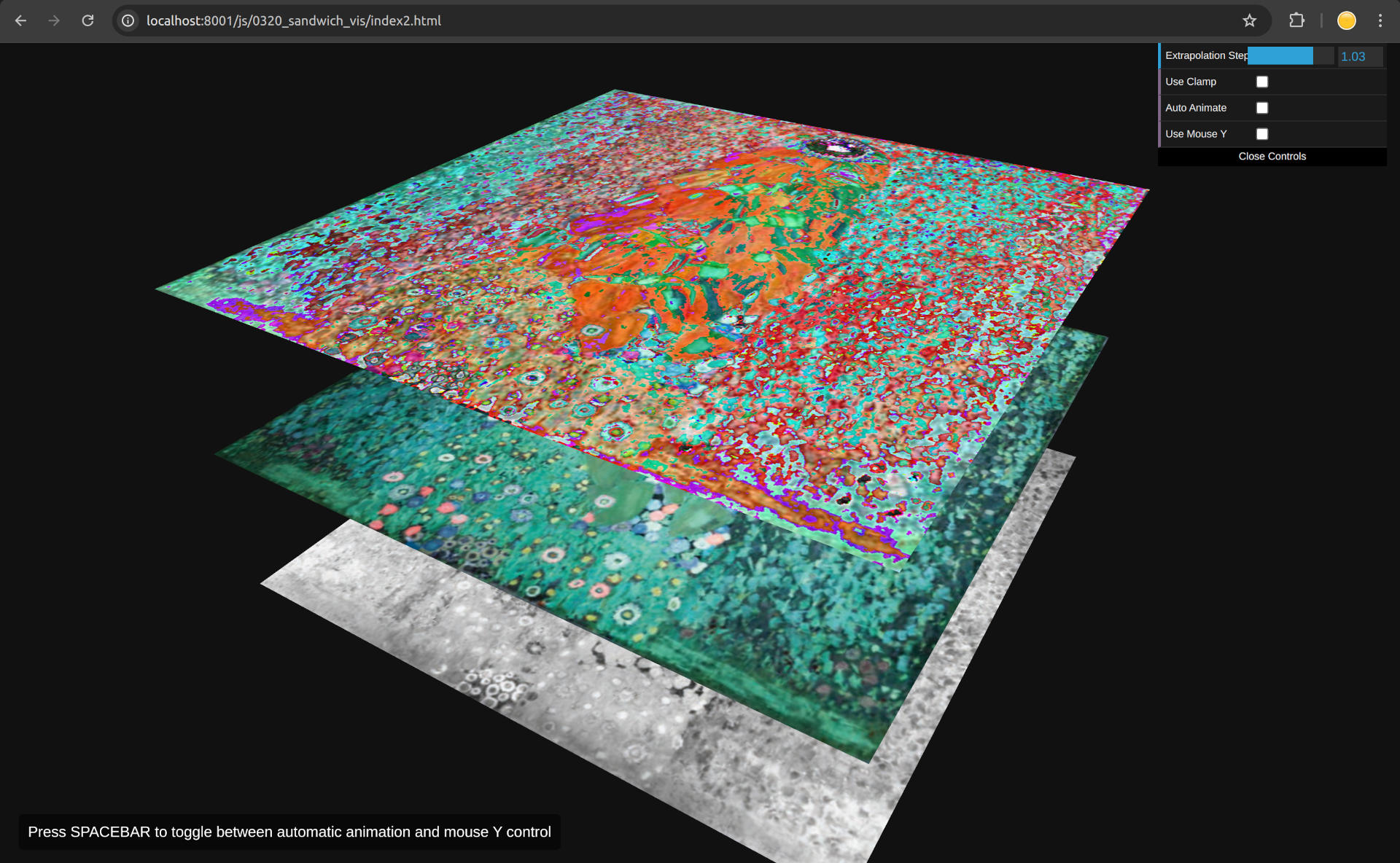
24.03.
scale/closeup test (segmentation only)
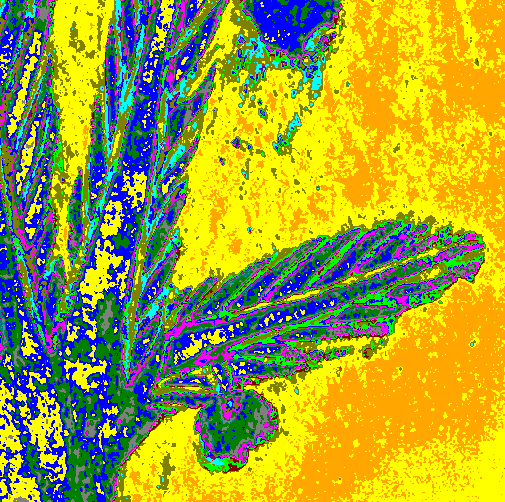
500x500 30 clusters
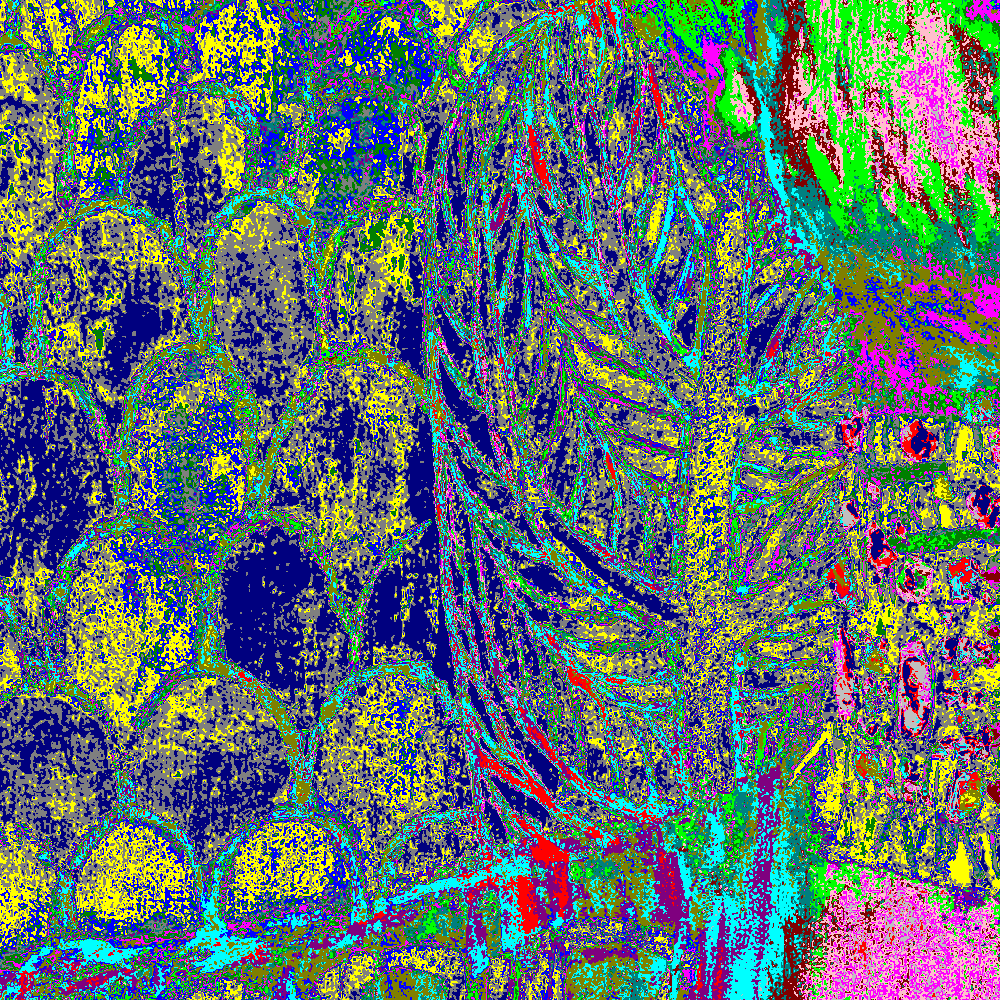
1000x1000
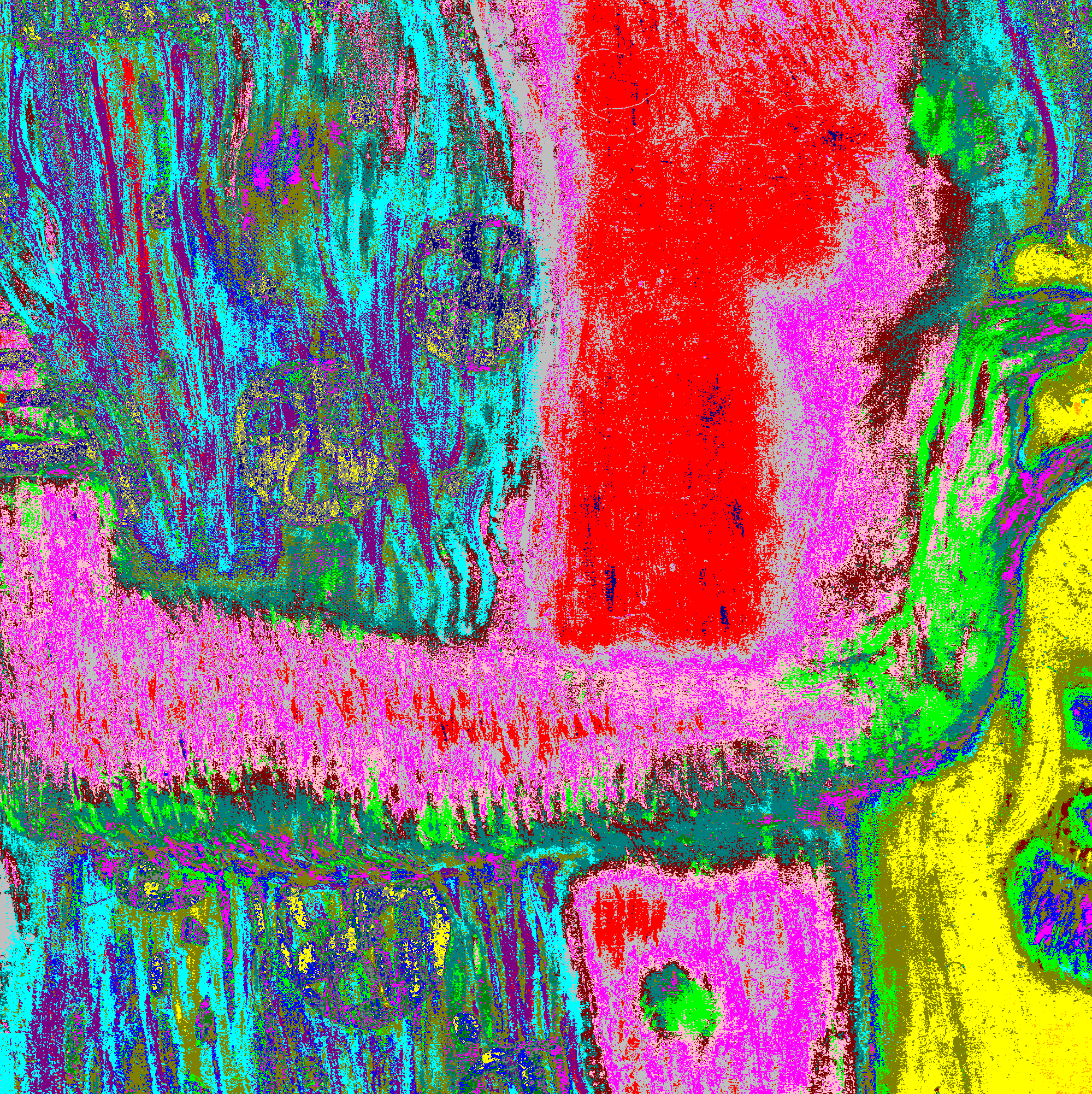
2000x2000
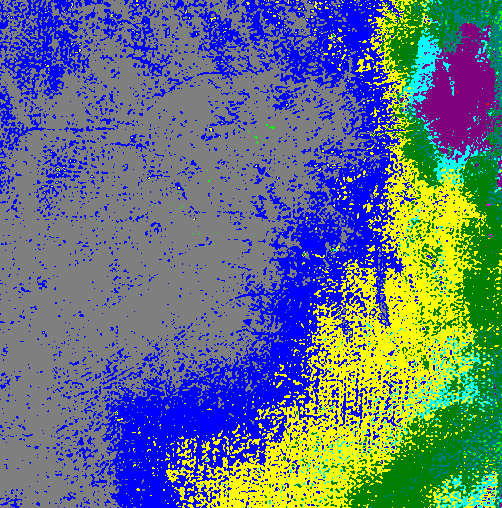
500x500 30 clusters
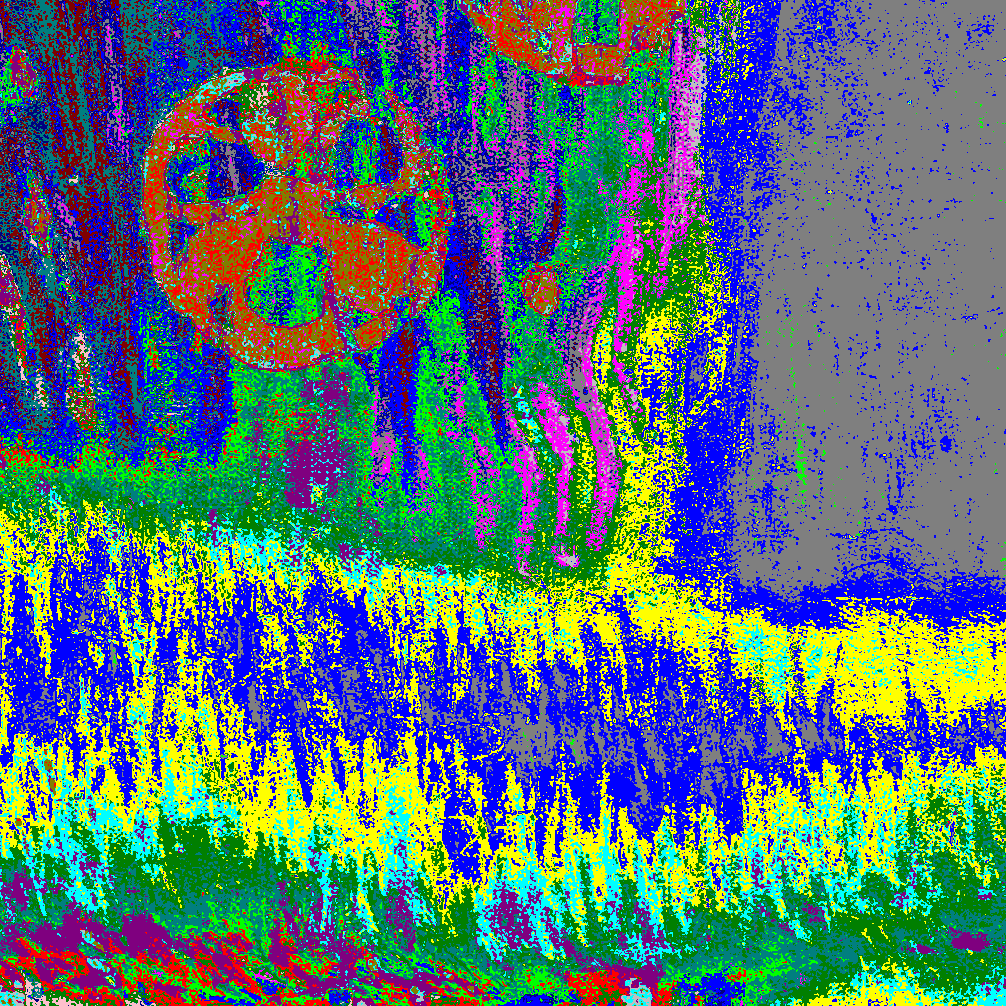
1000x1000
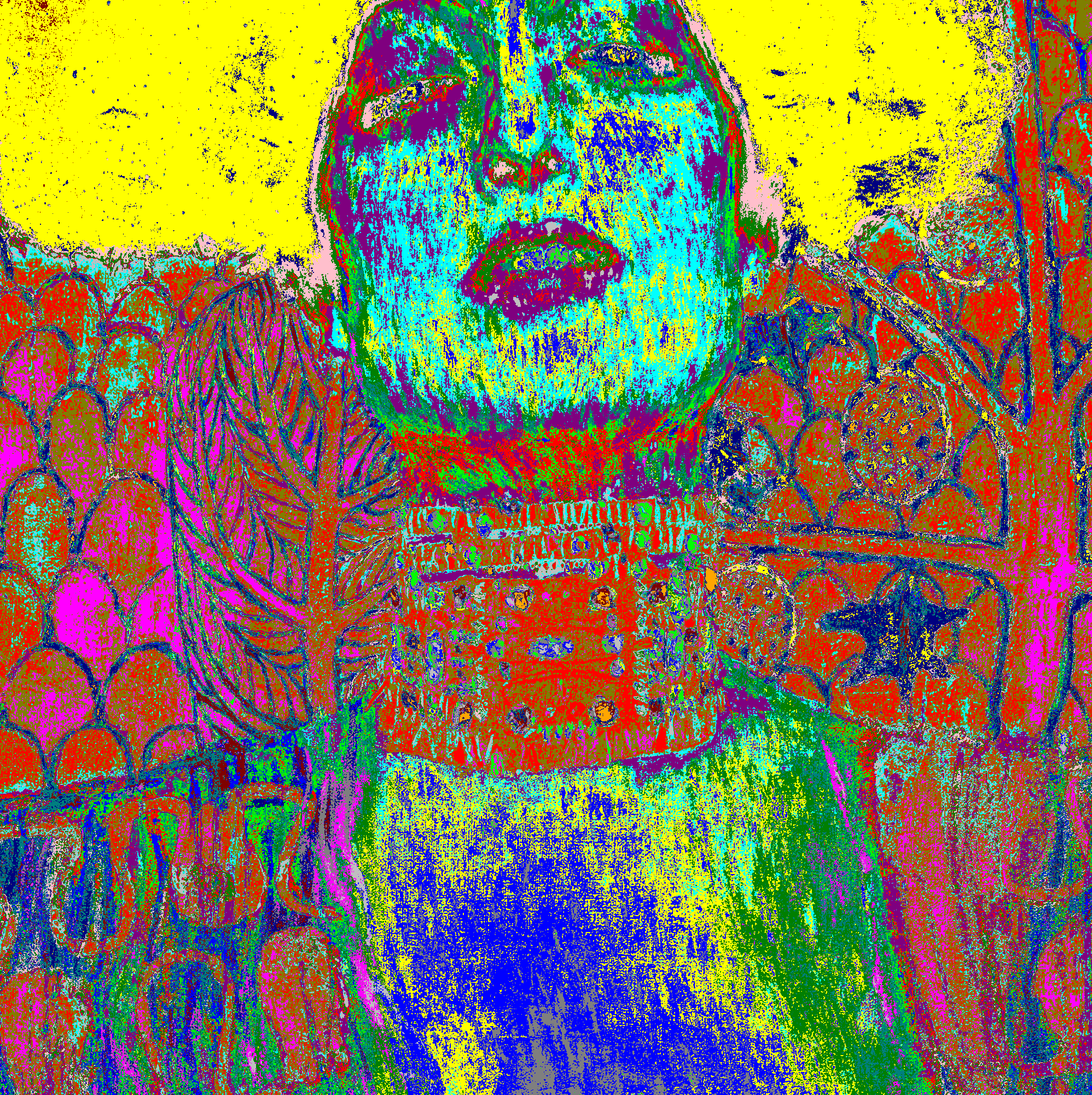
2000x2000

500x500 20 clusters
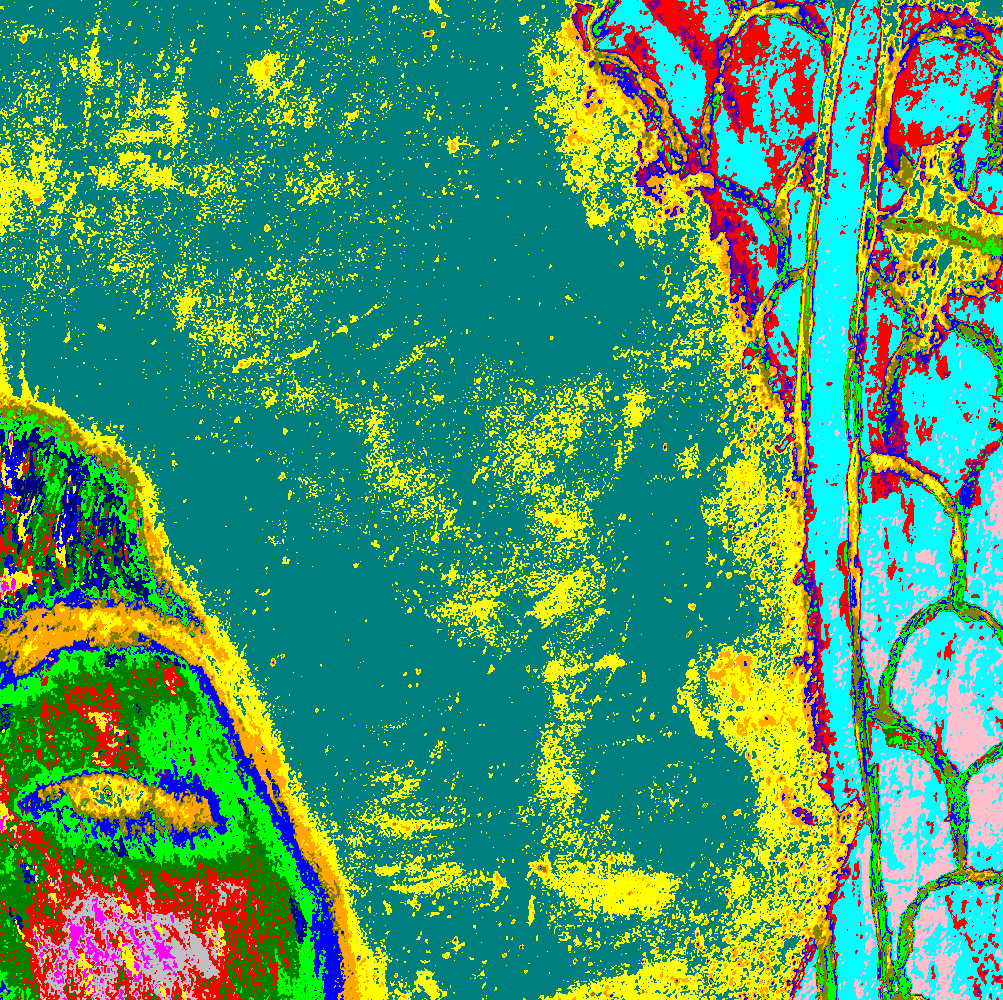
1000x1000
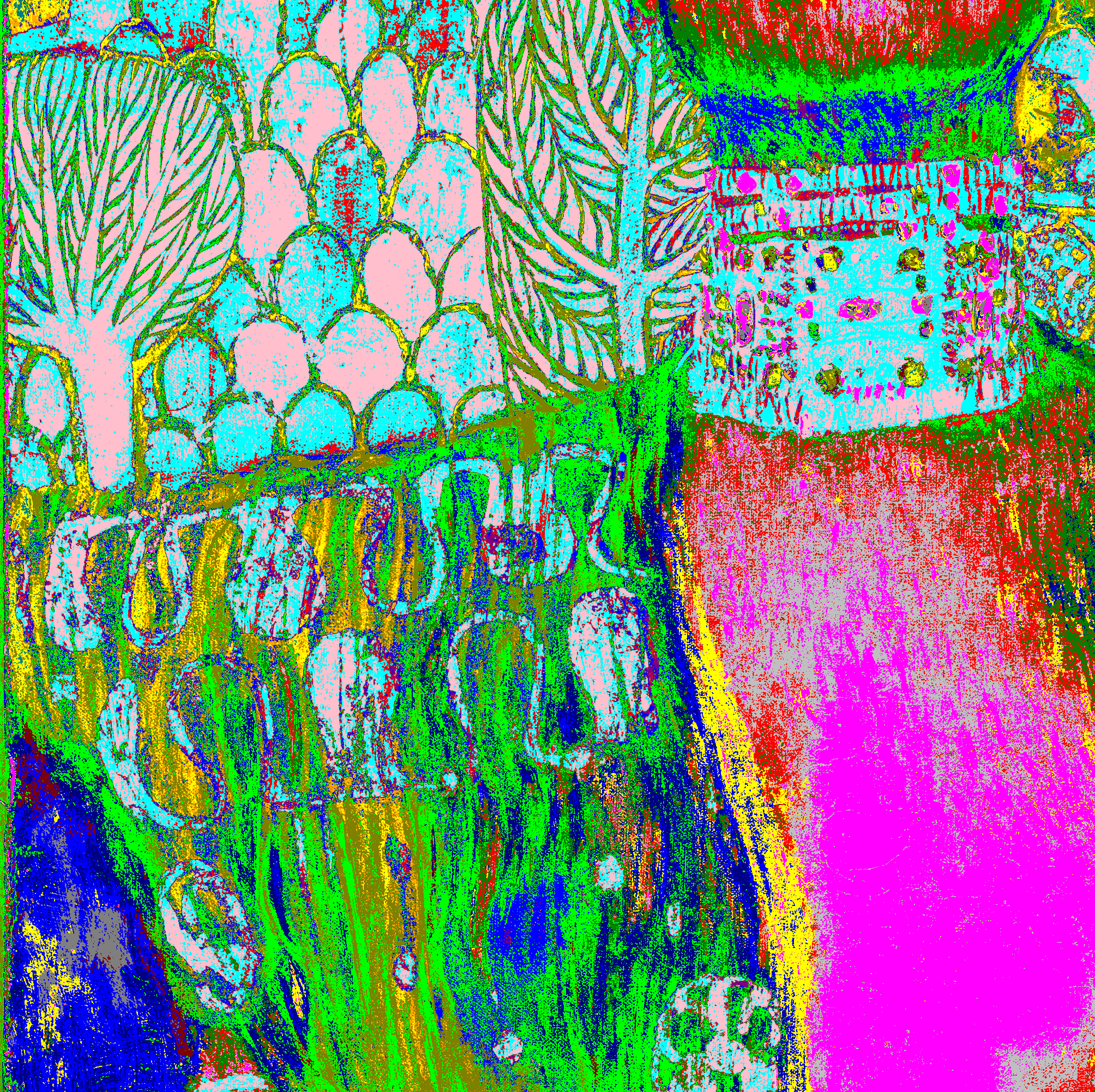
2000x2000
FFT frequency spectrum modulation
The Fast Fourier Transform (FFT) and Inverse FFT (IFFT) serve as fundamental mathematical
operations in computer vision that facilitate conversion between spatial and frequency domain
representations of images. The FFT decomposes an image into its constituent frequency components, producing
a complex-valued representation where the central region corresponds to low-frequency information
(representing the overall image structure) while peripheral regions encode high-frequency details (capturing
edges, textures, and noise). The IFFT performs the complementary operation, reconstructing the spatial image
from its frequency representation. This bidirectional transformation enables numerous practical applications
in image processing, including frequency-selective filtering, pattern recognition, image compression, and
noise reduction, as specific frequencies can be isolated, modified or suppressed before reconstruction.
These techniques prove particularly valuable when certain image features or artifacts manifest more
distinctly in one domain than the other, allowing for more effective manipulation and analysis.
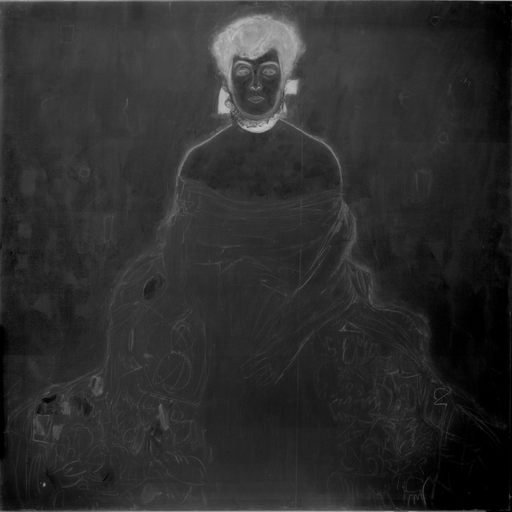
orig inv. uv
⭢

fft
⭢
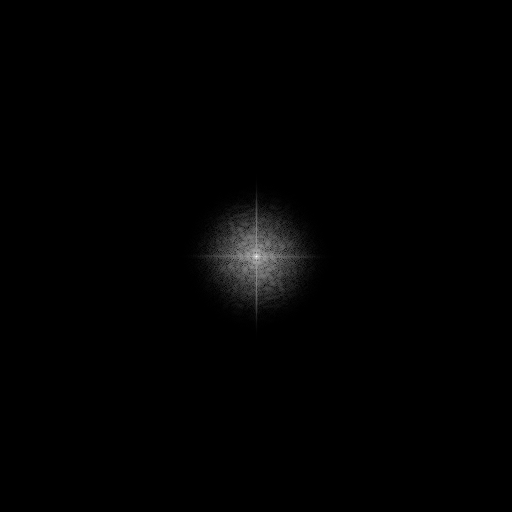
blurred fft
⭢
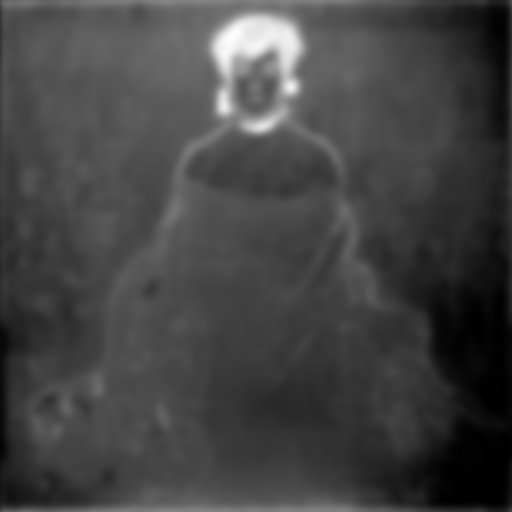
inv. fft
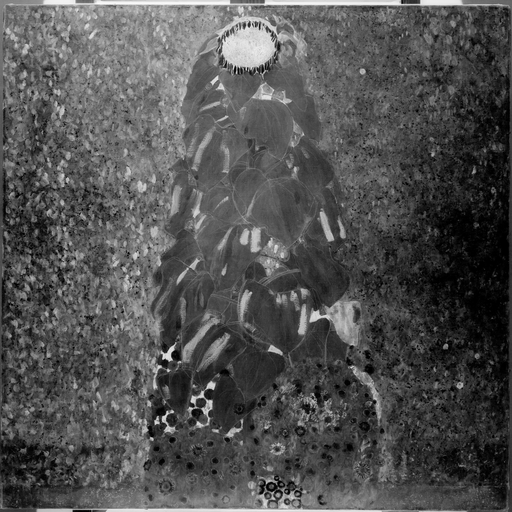
orig inv uv
⭢
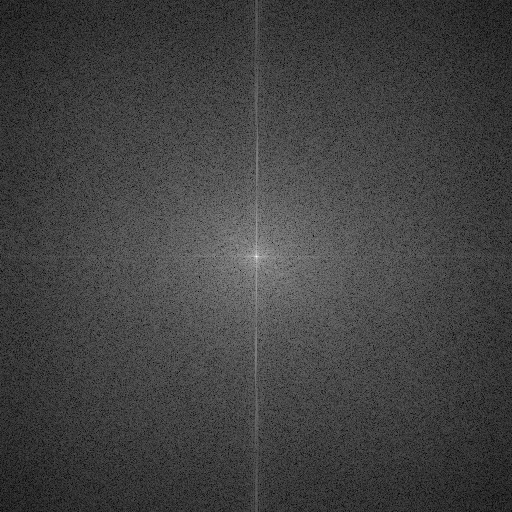
fft
⭢
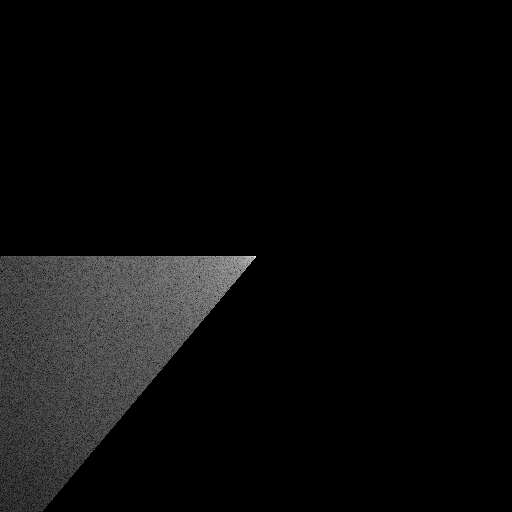
directional filter
⭢
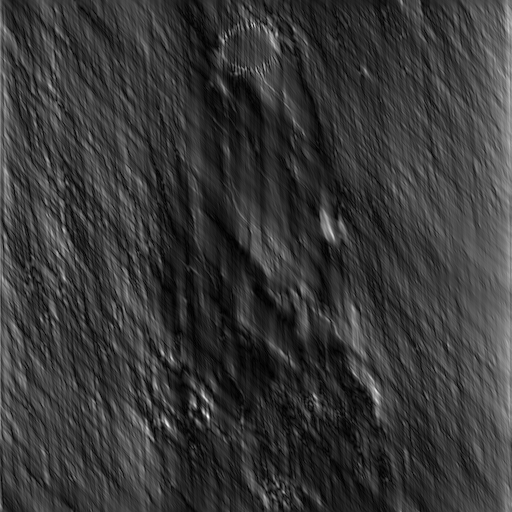
inv. fft
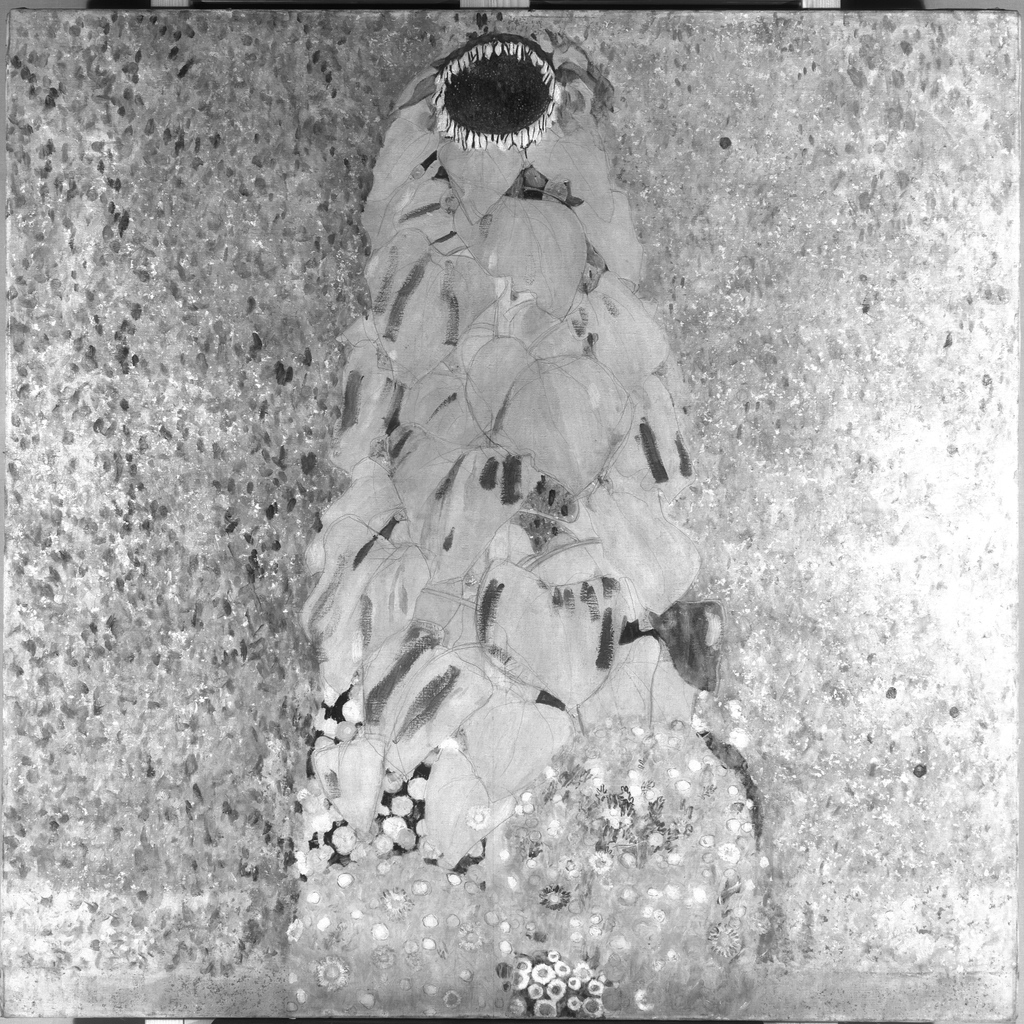
orig inv uv
⭢

fft
⭢
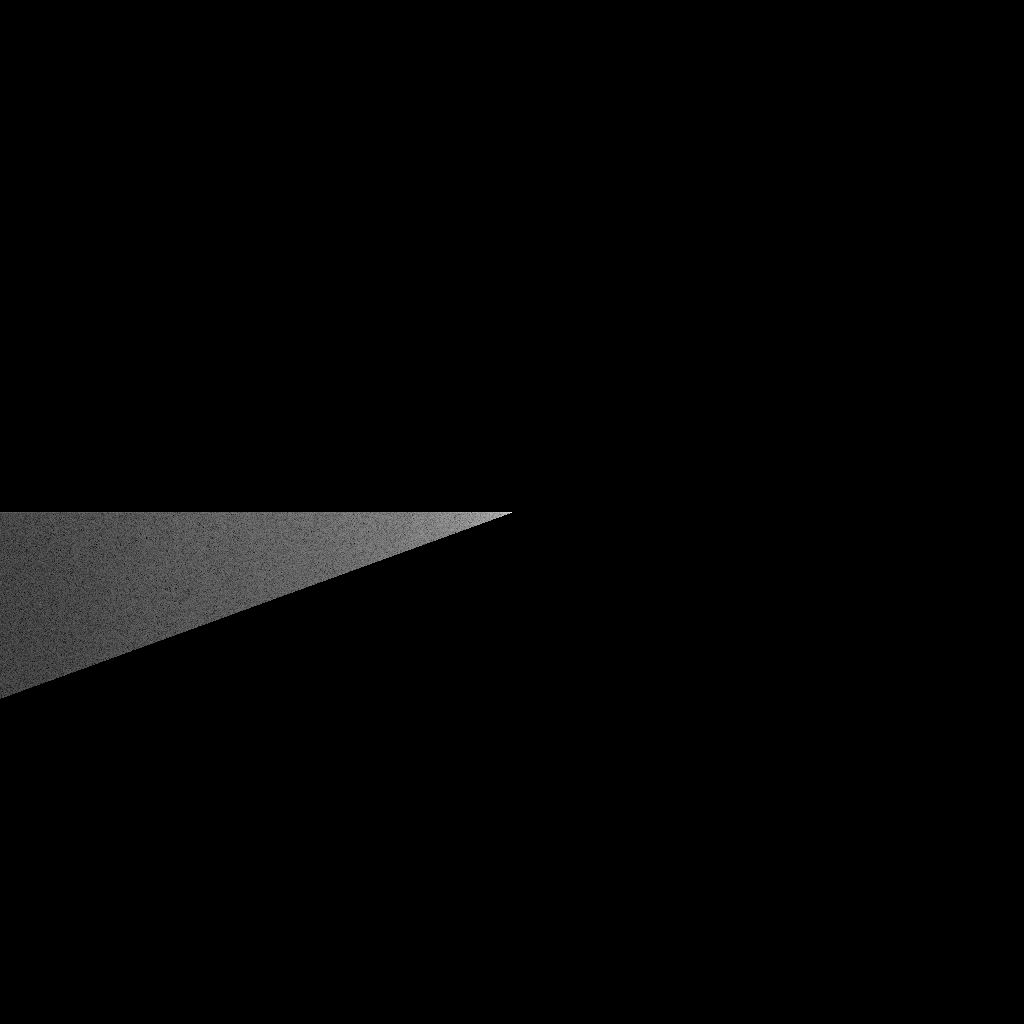
directional filter
⭢
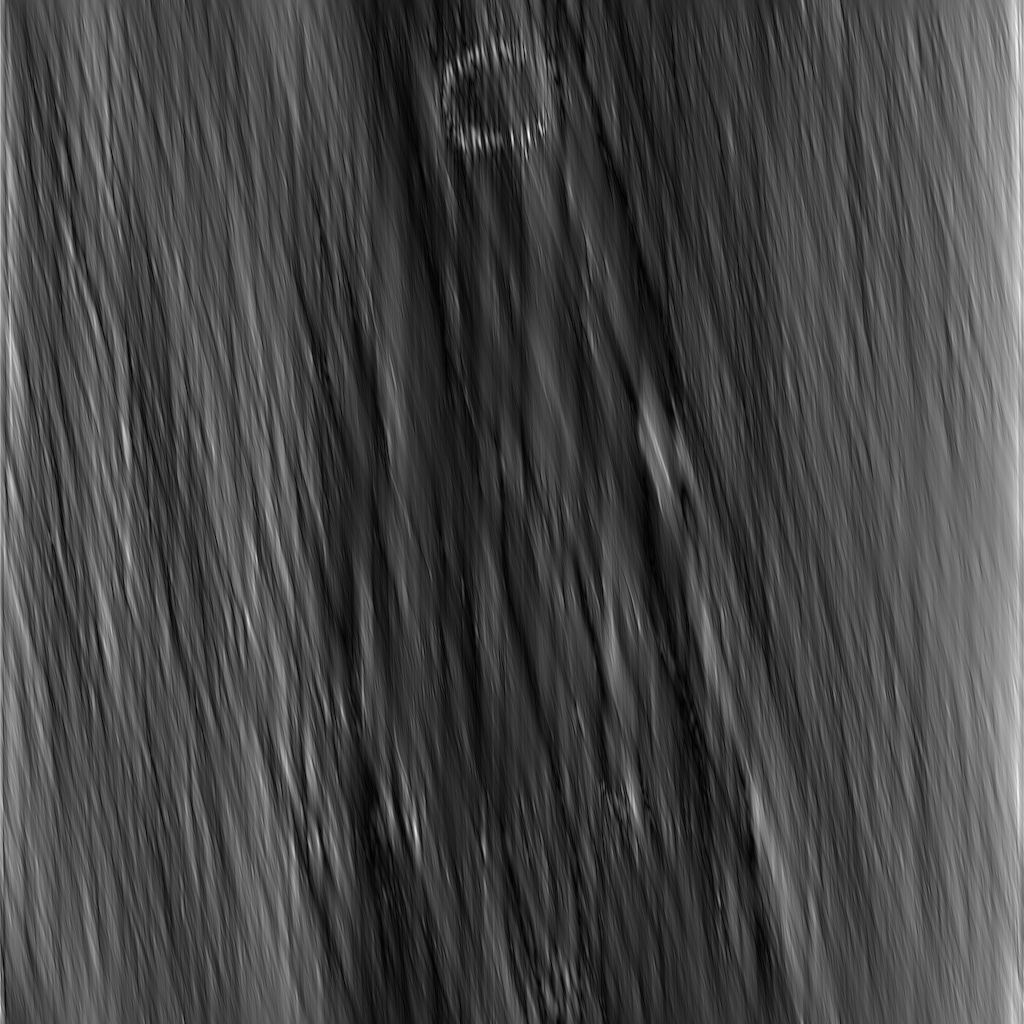
inv. fft
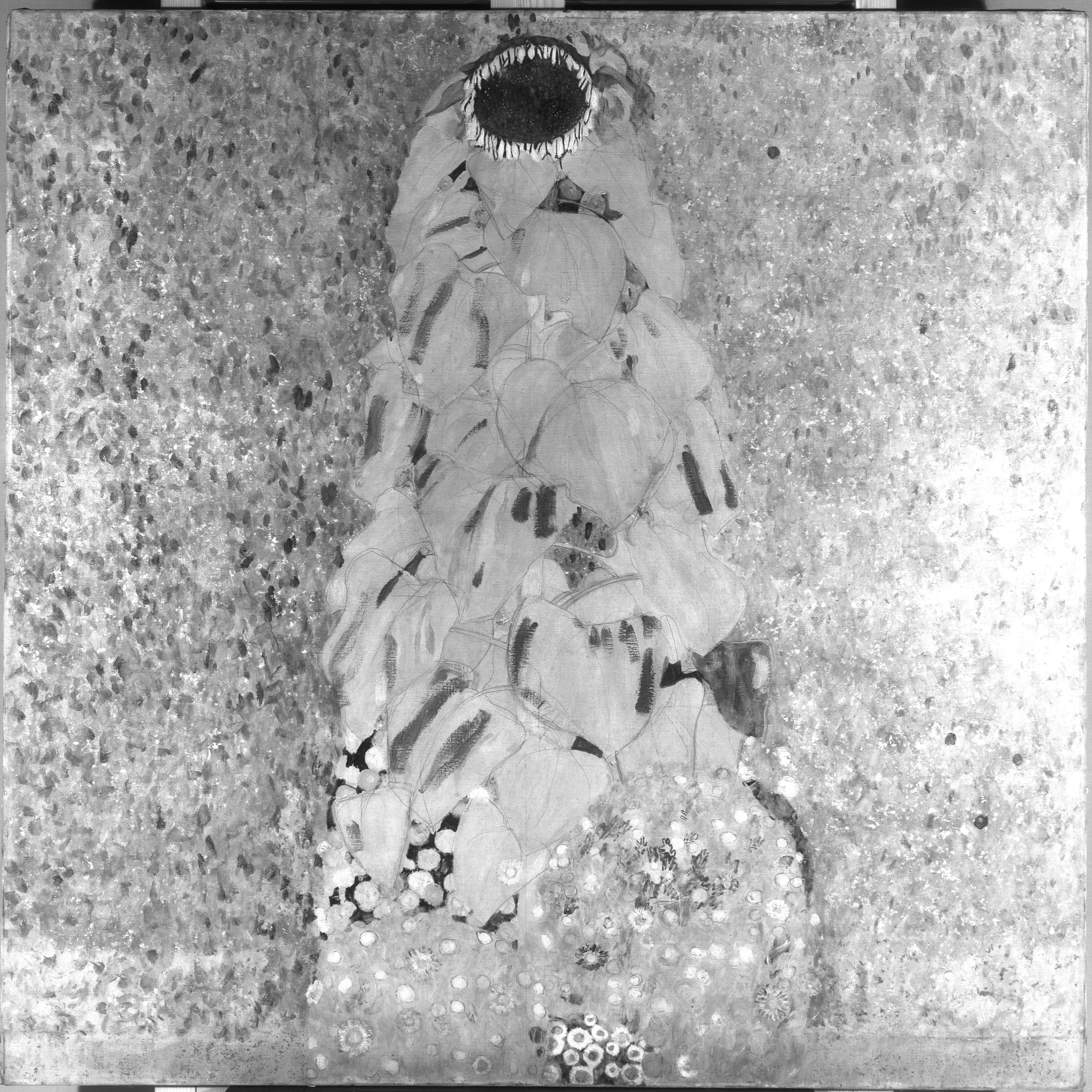
orig inv uv
⭢
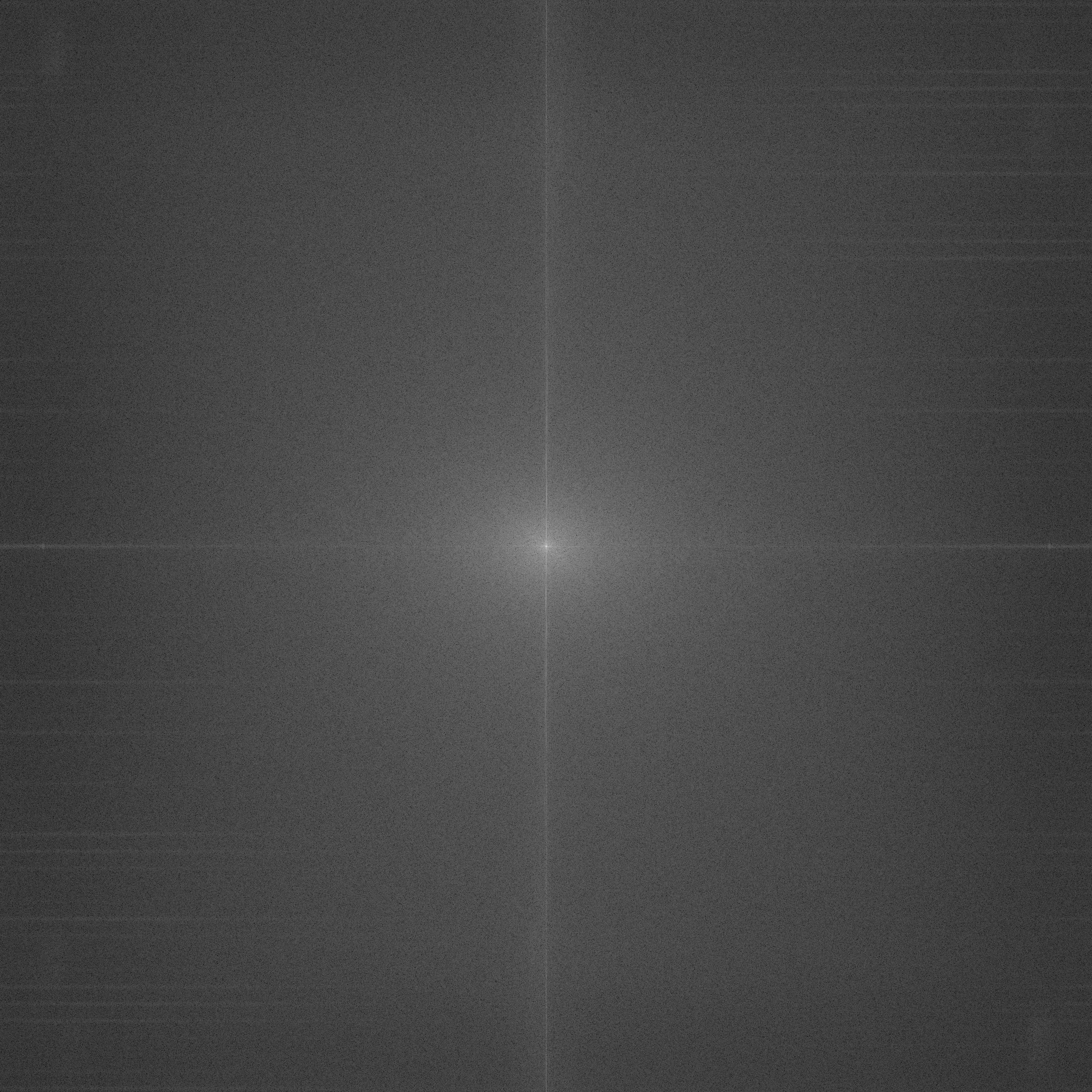
fft
⭢
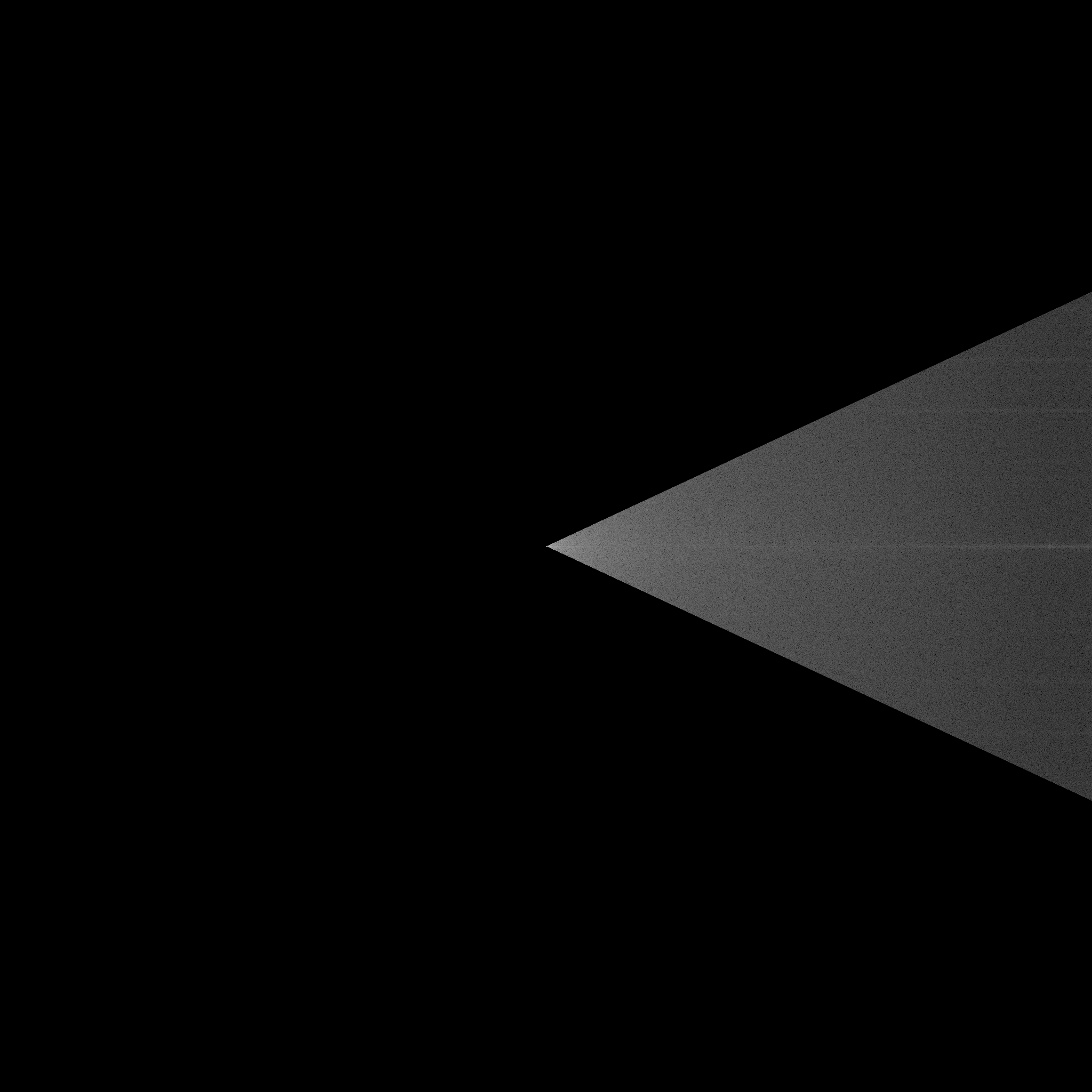
directional filter
⭢
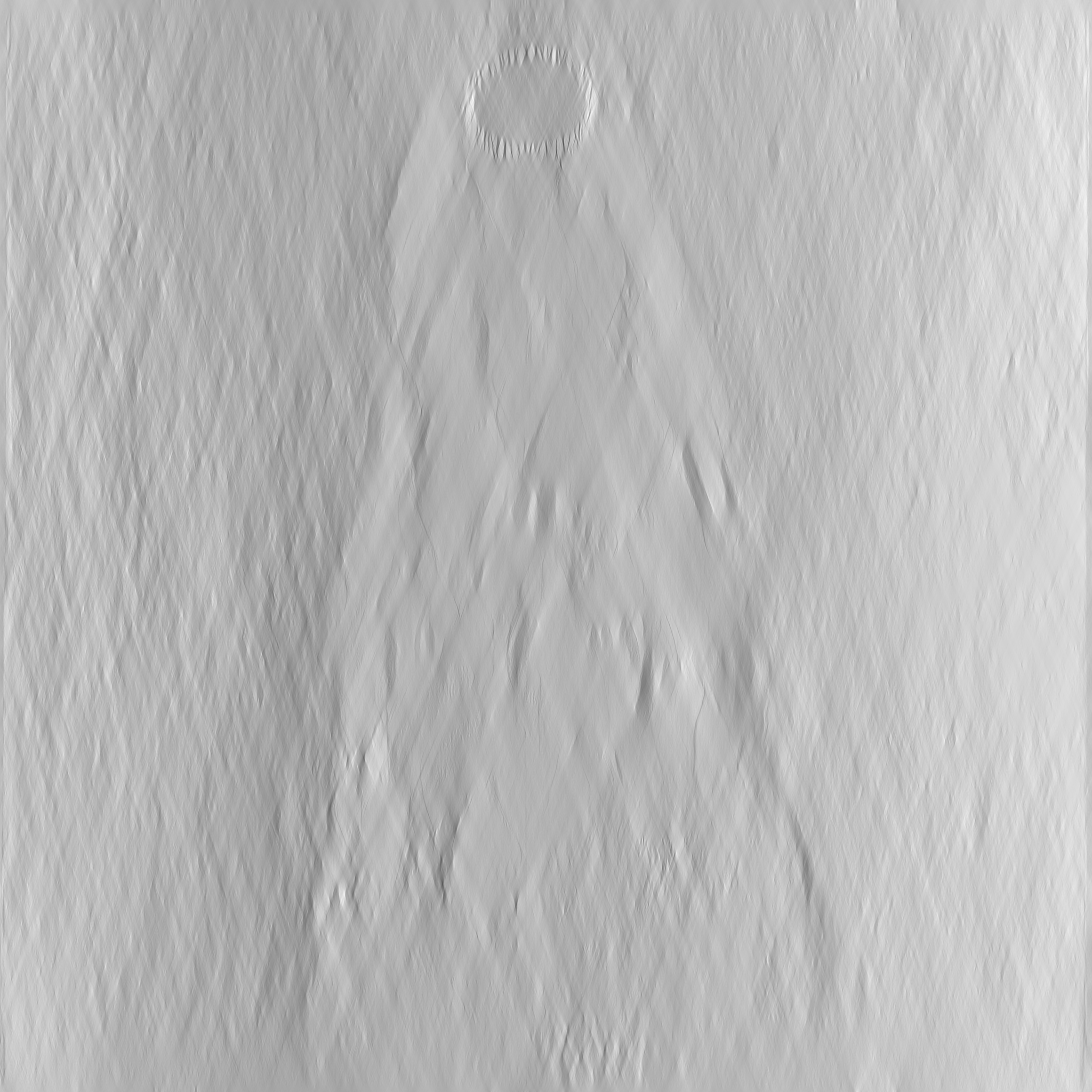
inv. fft
25.03. - fft, directional filter, binary, closing, dilating, segmenting, crop scale

analyze images to decide next processing steps of the future pipeline
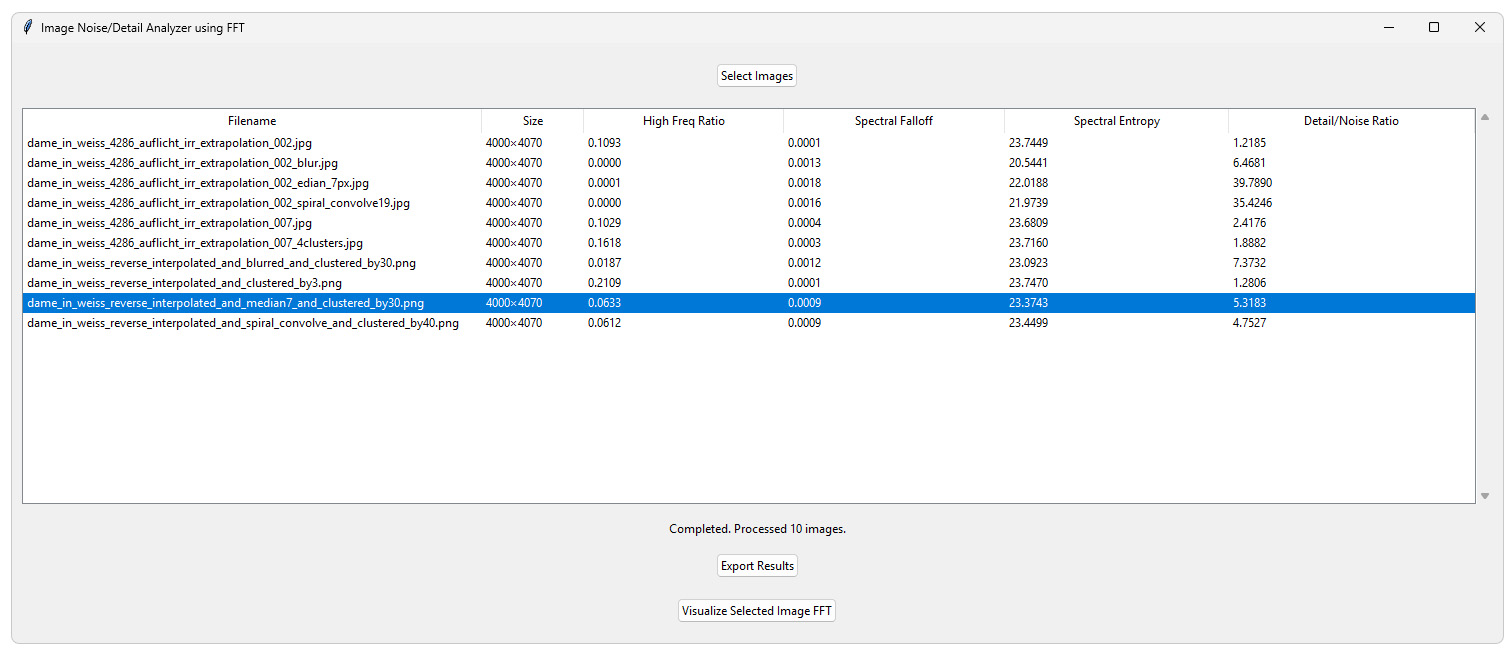
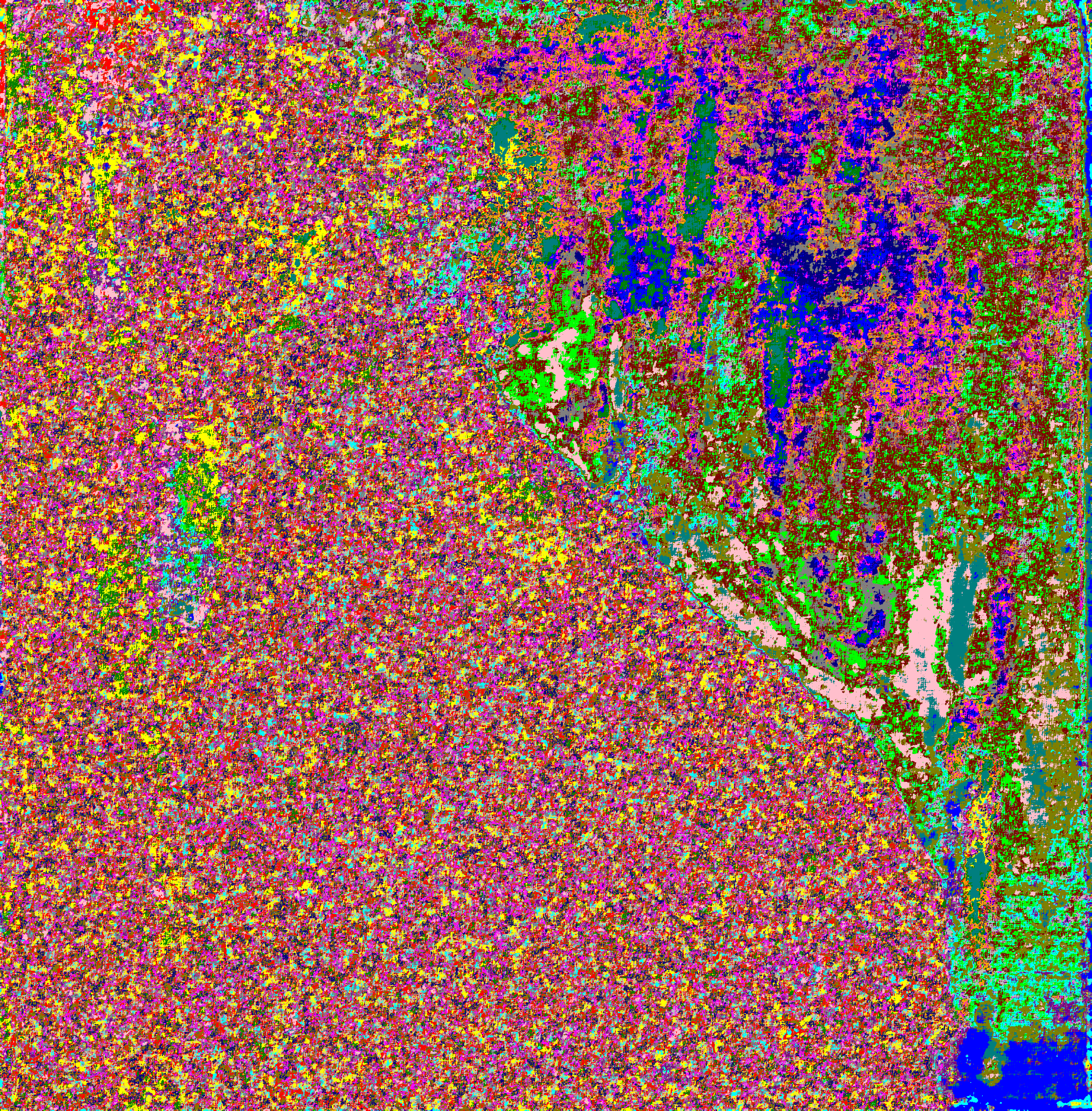
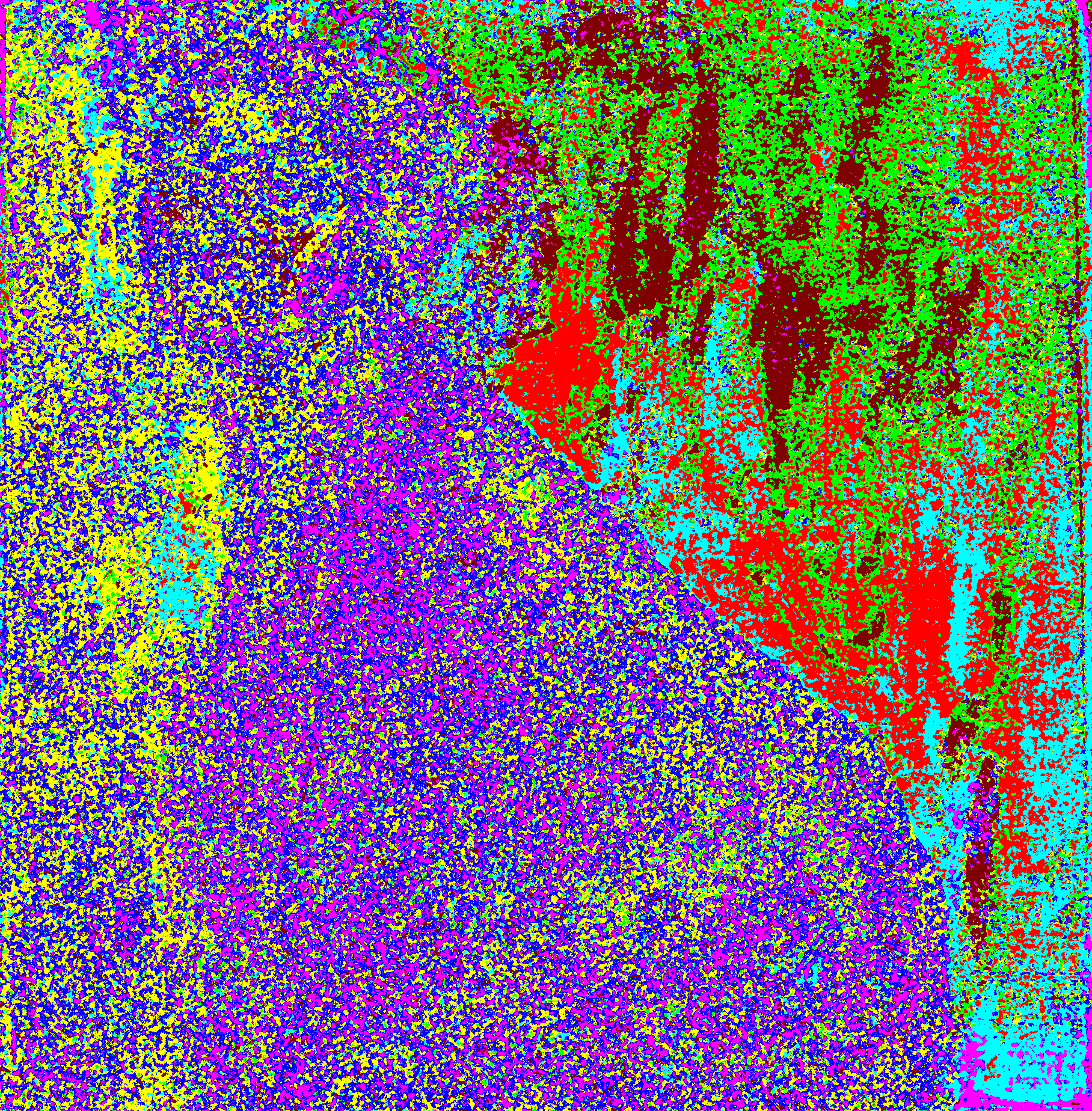
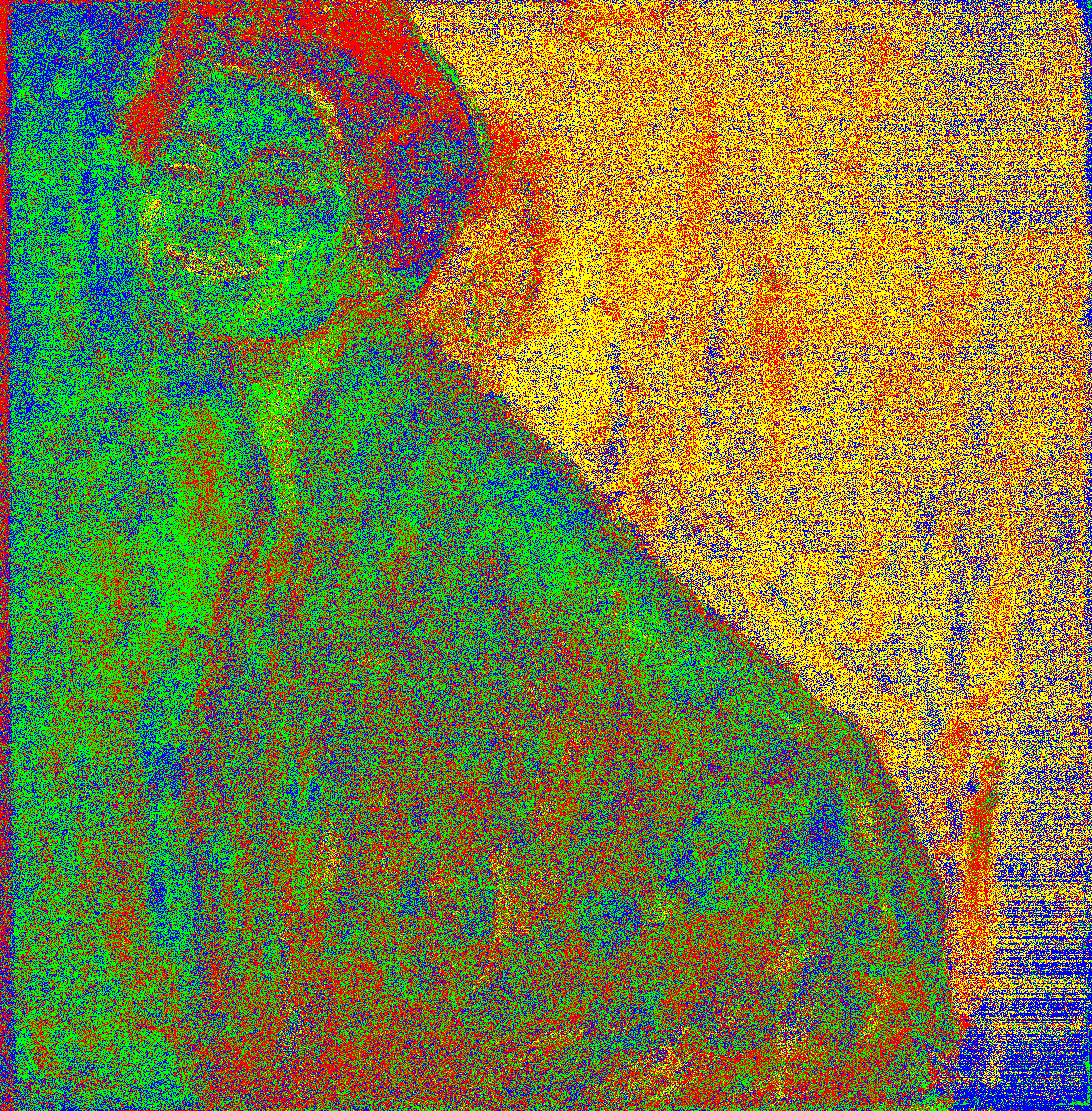
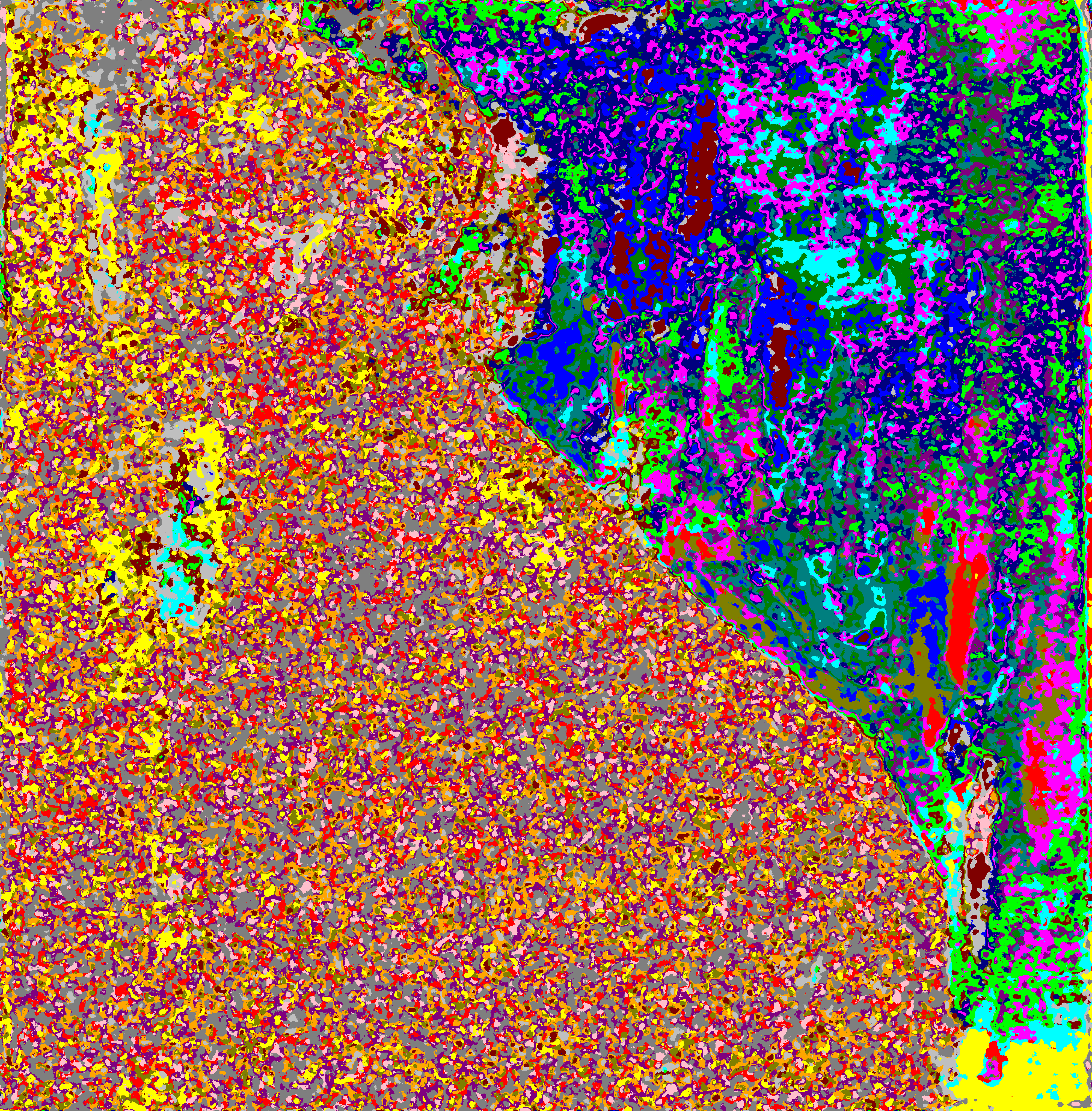
1- dame_in_weiss_reverse_interpolated_and_spiral_convolve_and_clustered_by40
2- dame_in_weiss_reverse_interpolated_and_median7_and_clustered_by30
3- dame_in_weiss_4286_auflicht_irr_extrapolation_007_4clusters
4- dame_in_weiss_reverse_interpolated_and_blurred_and_clustered_by30
1000x1000 random crops:


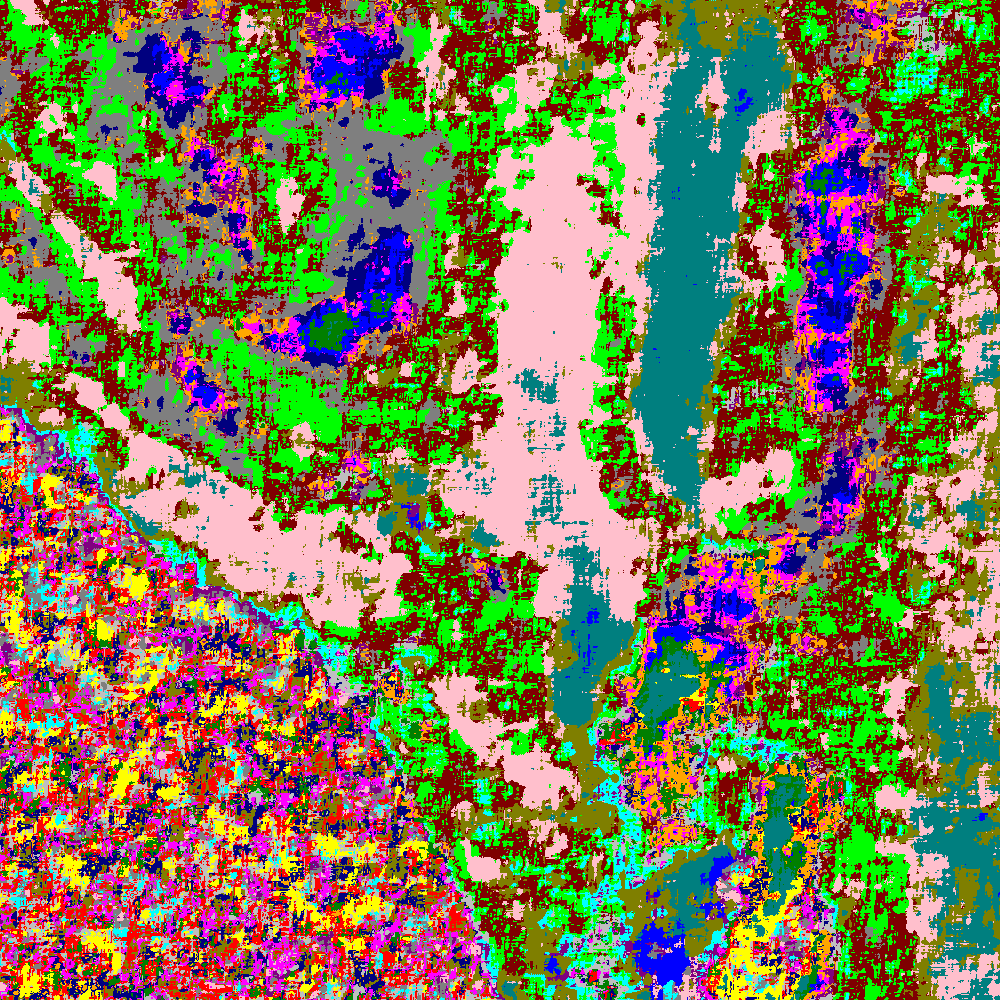
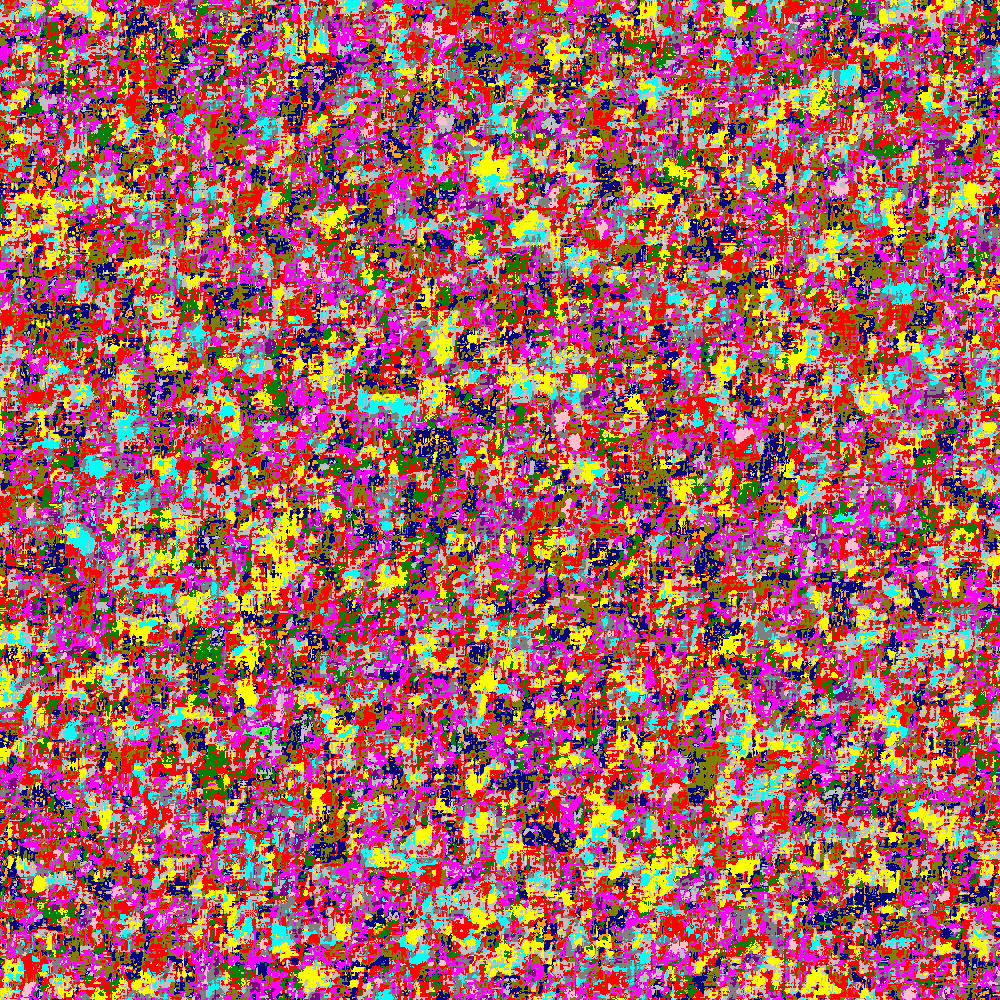
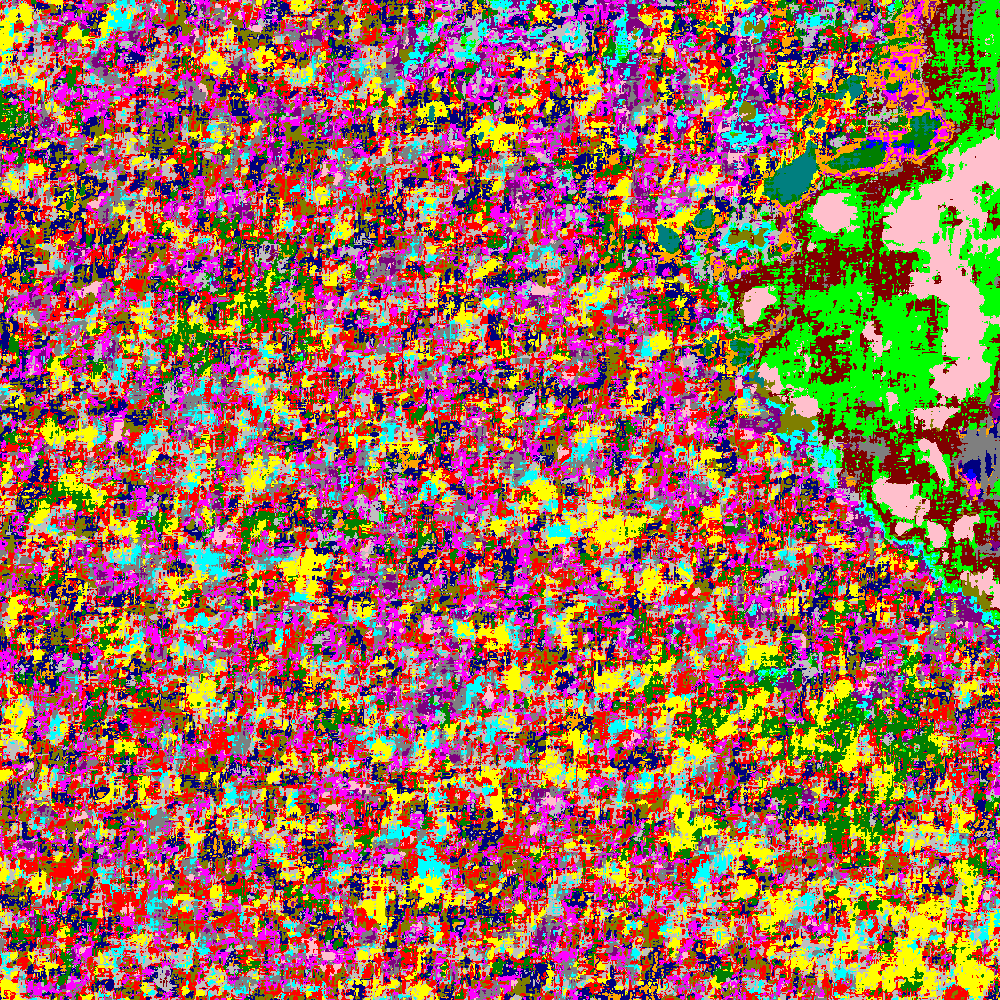
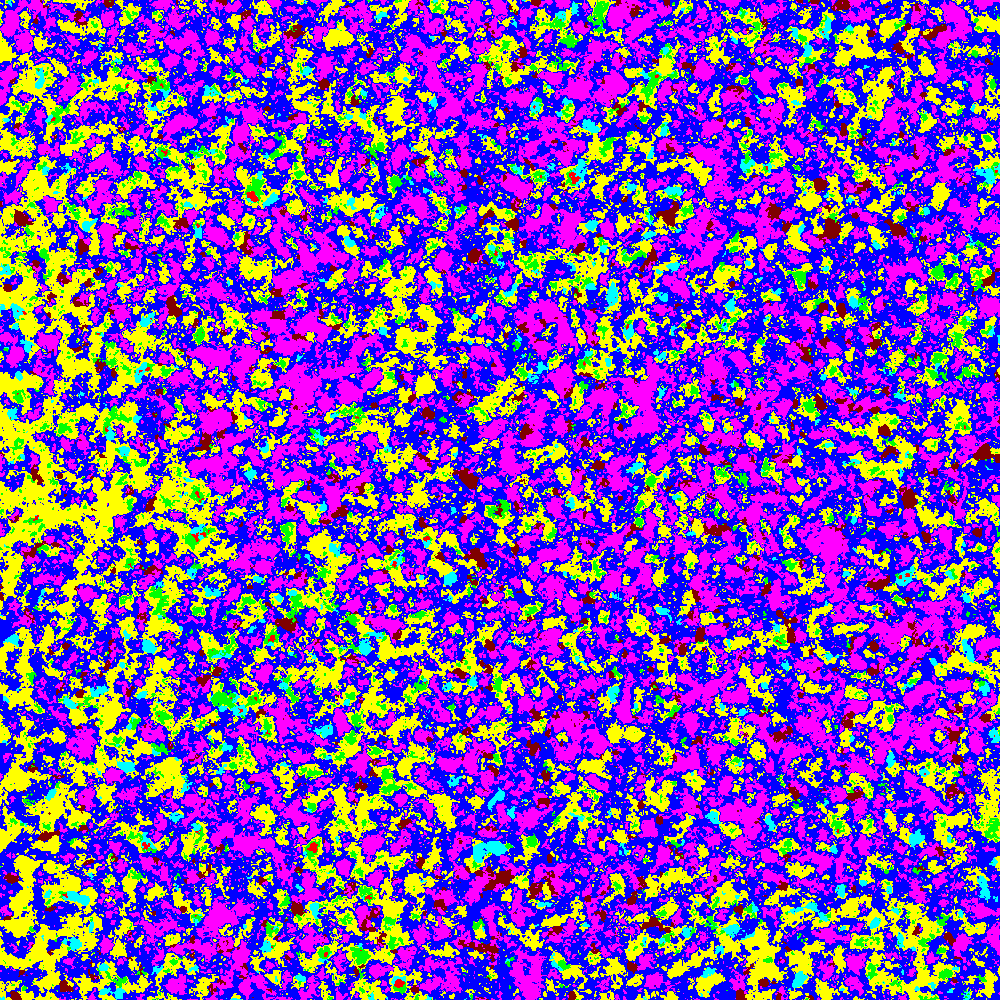
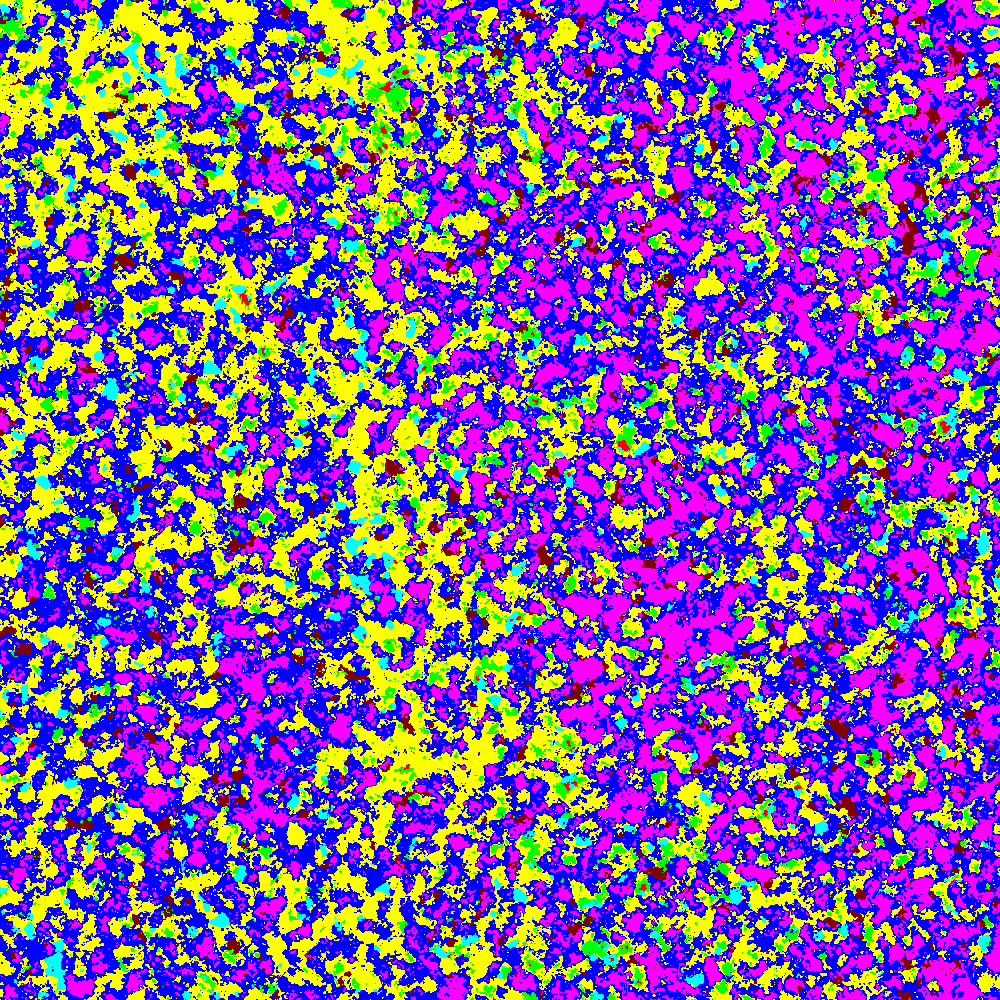
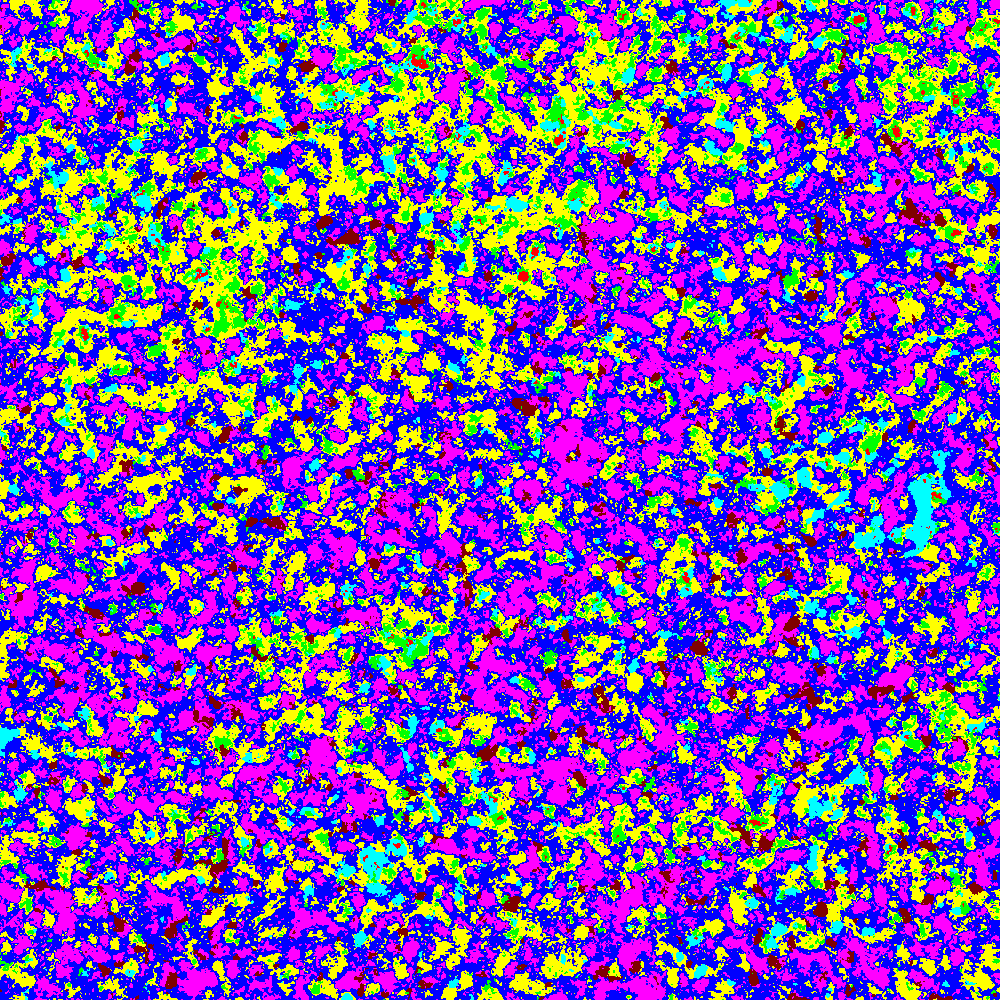
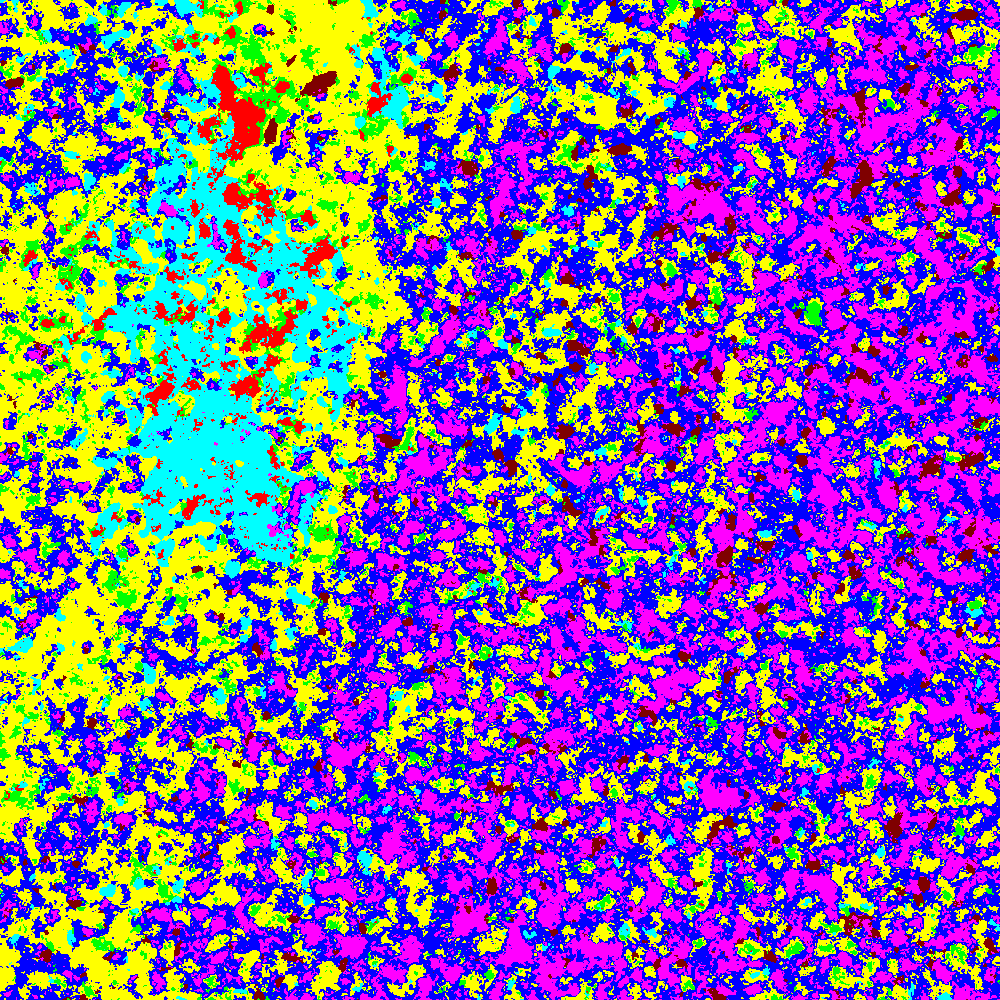
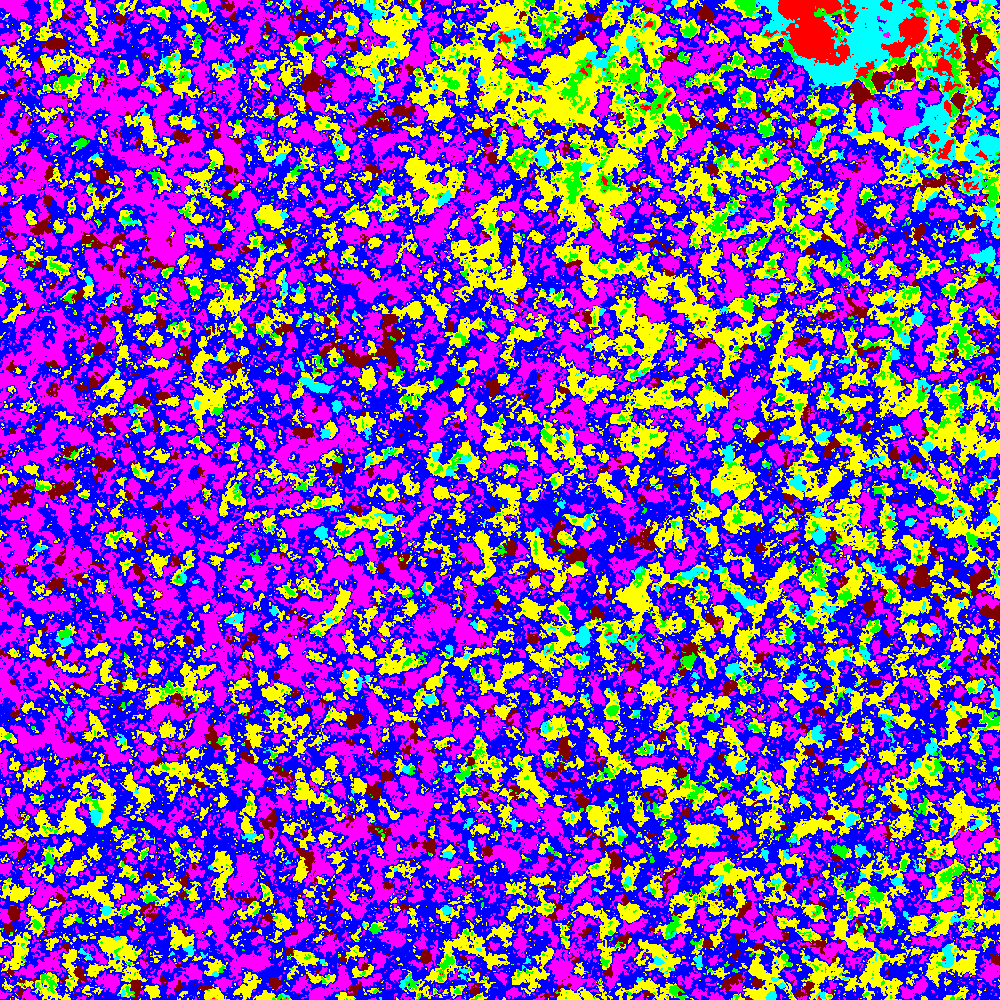
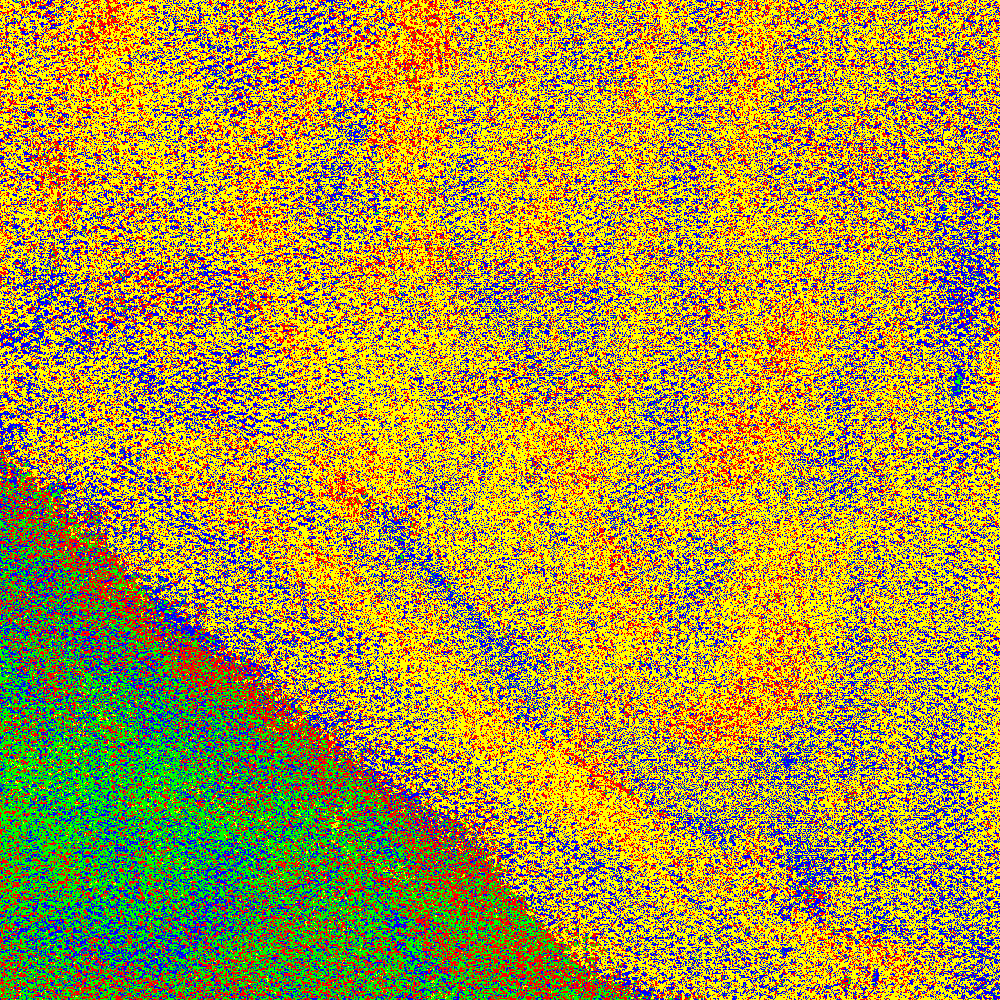
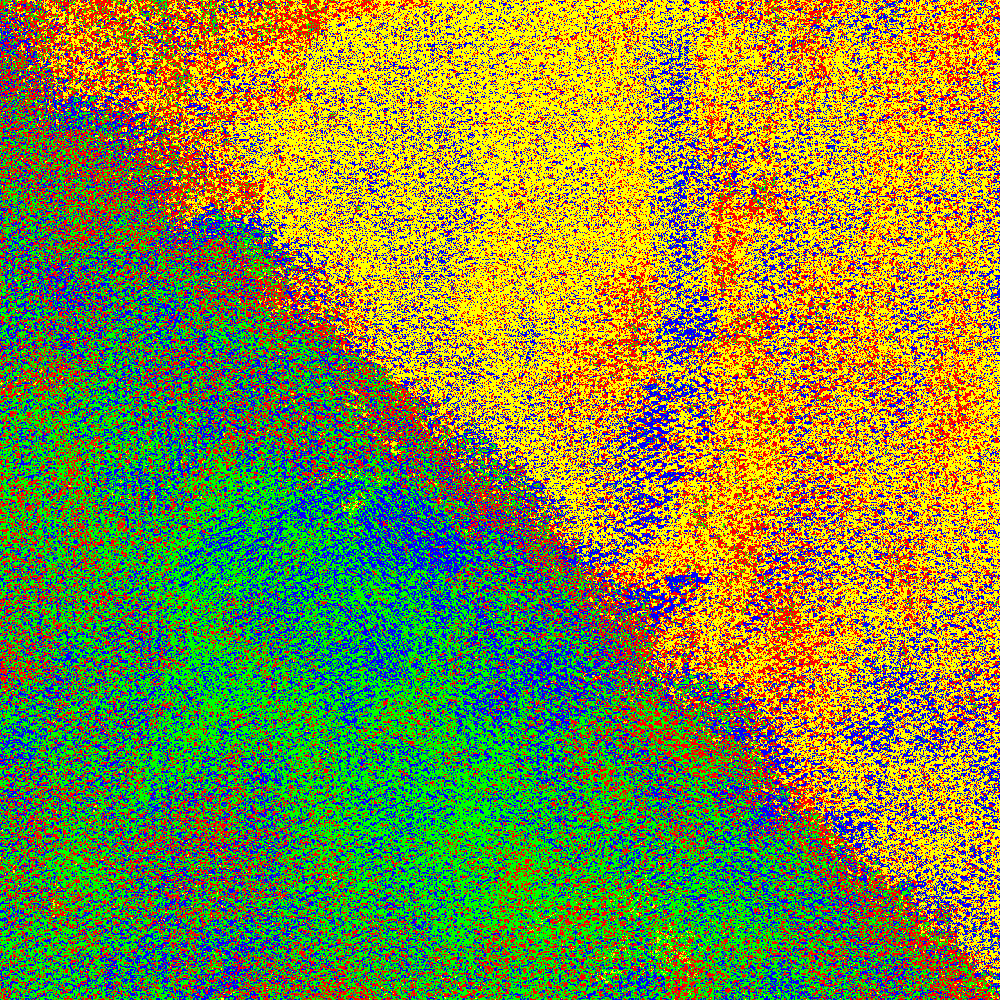

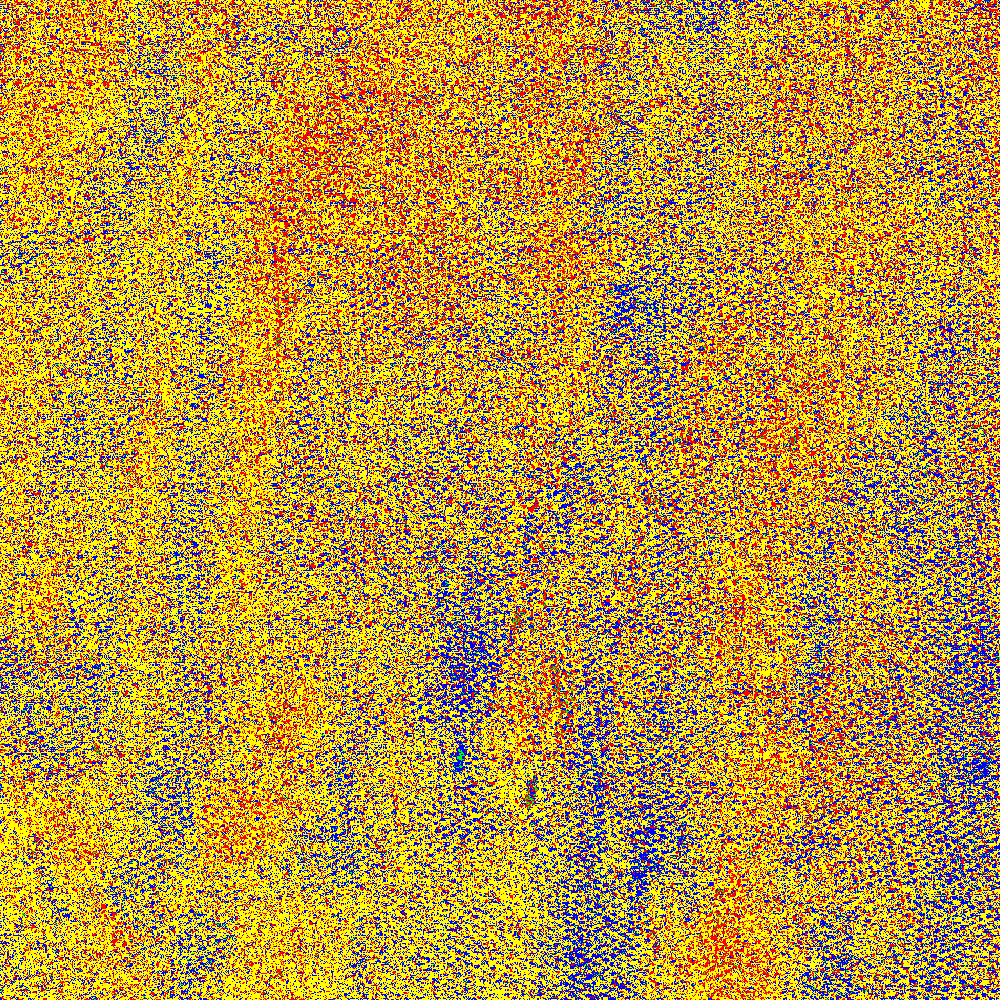


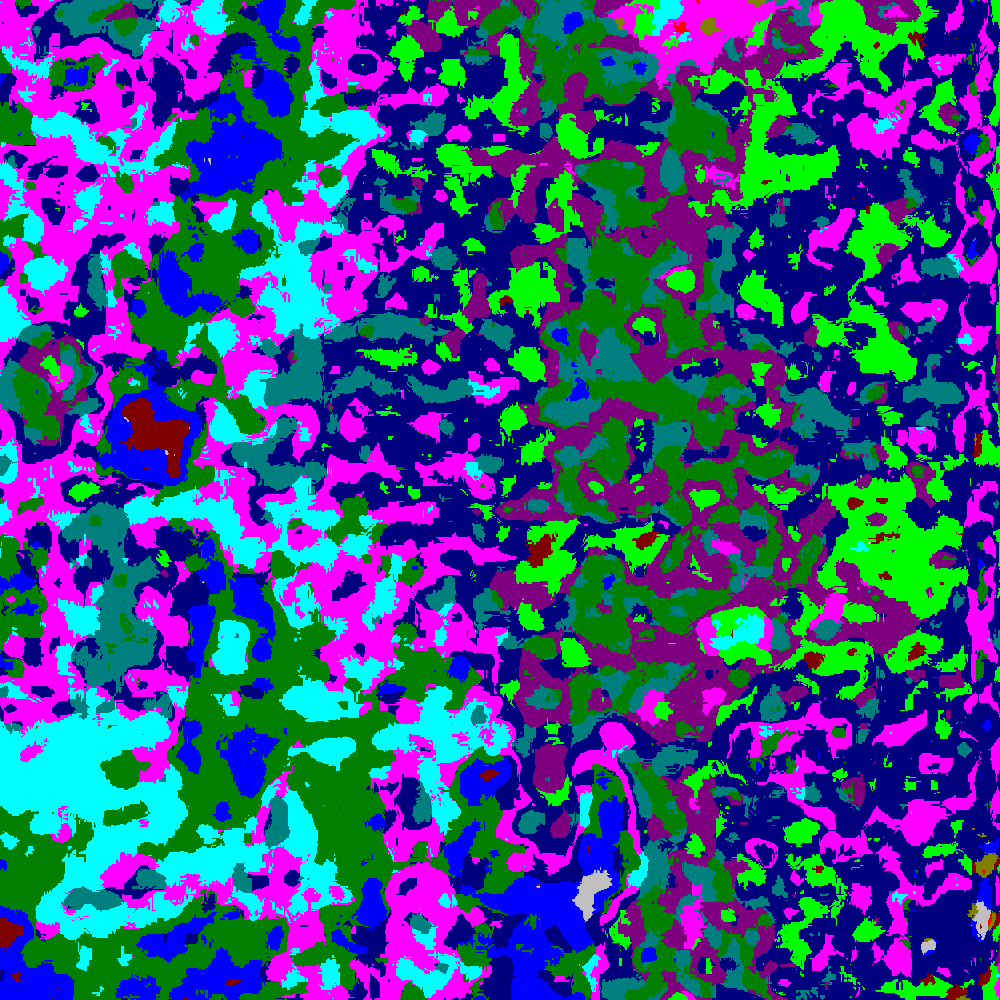
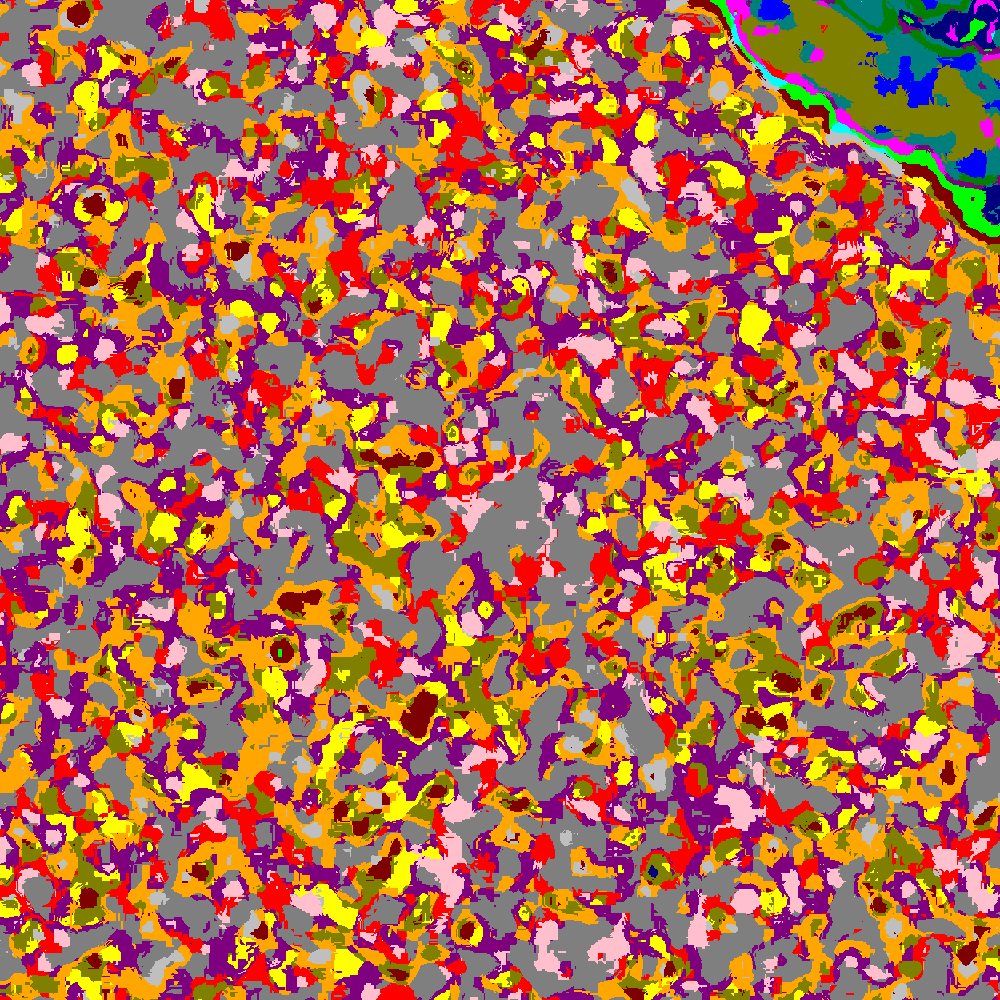
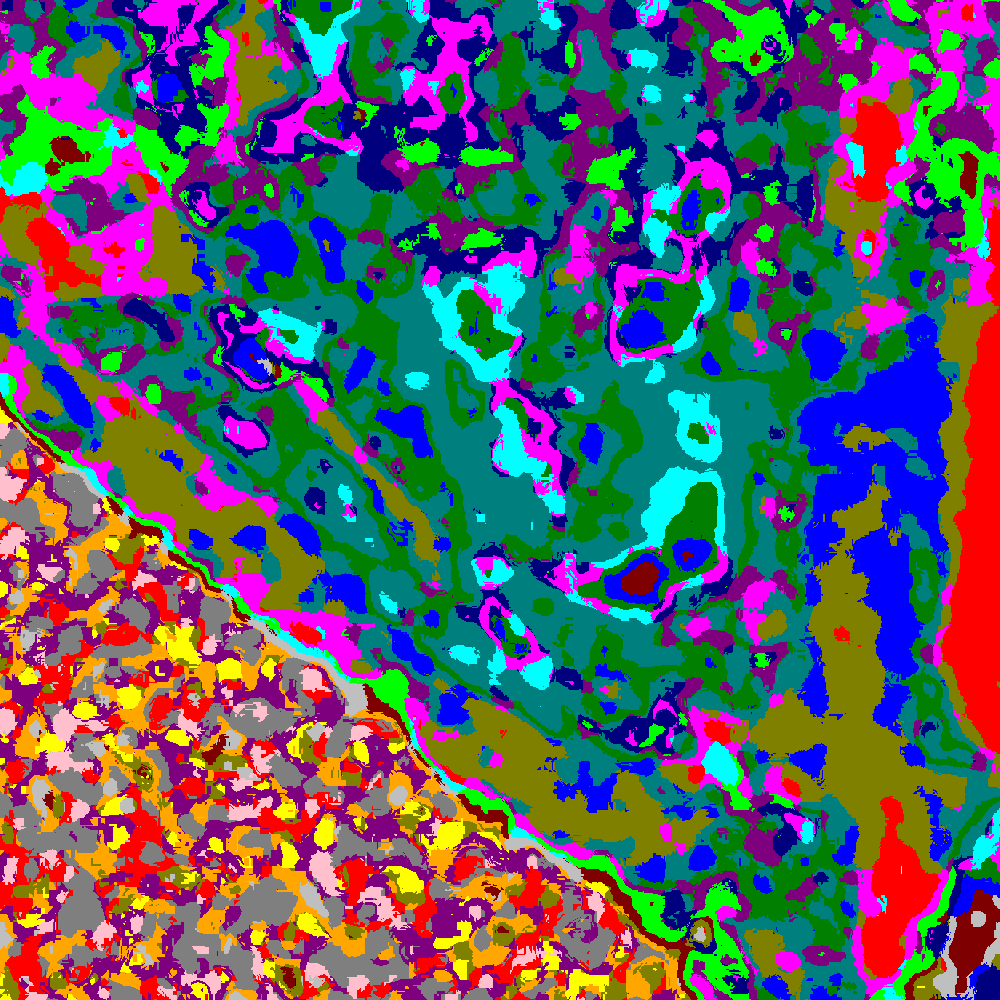
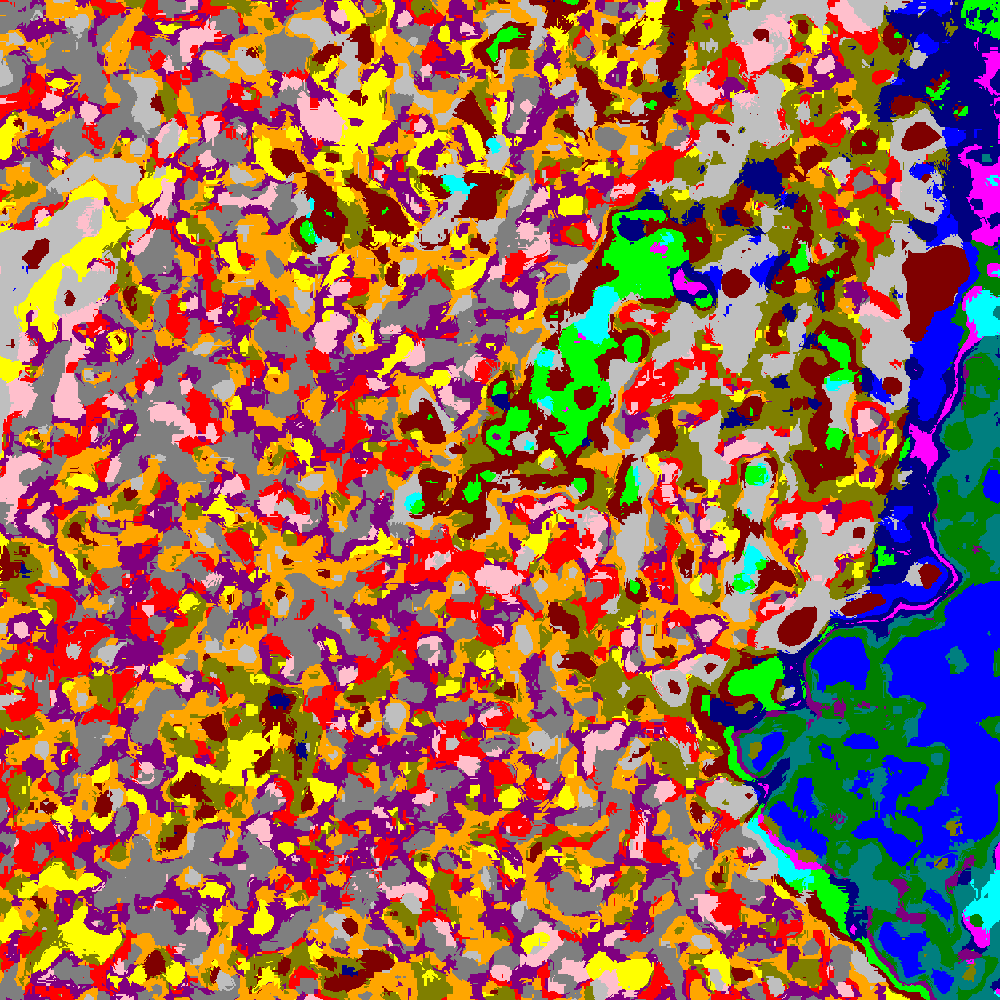
computing fft on all three channels? fft only on brightness channel?
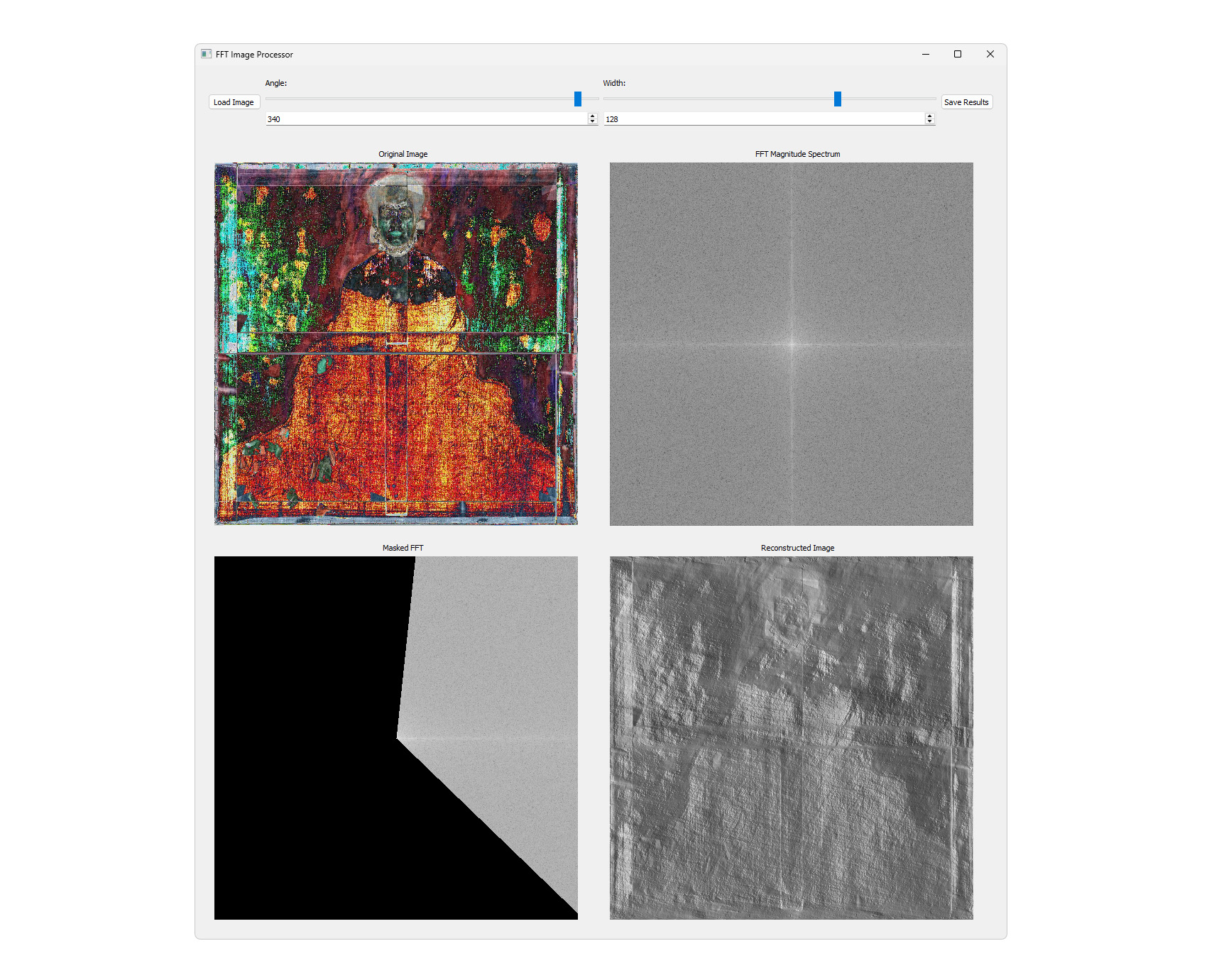
directional fft filter
the following are directional fft filtered, binaried, dilated and then k-means segmented images cropped and scaled up.
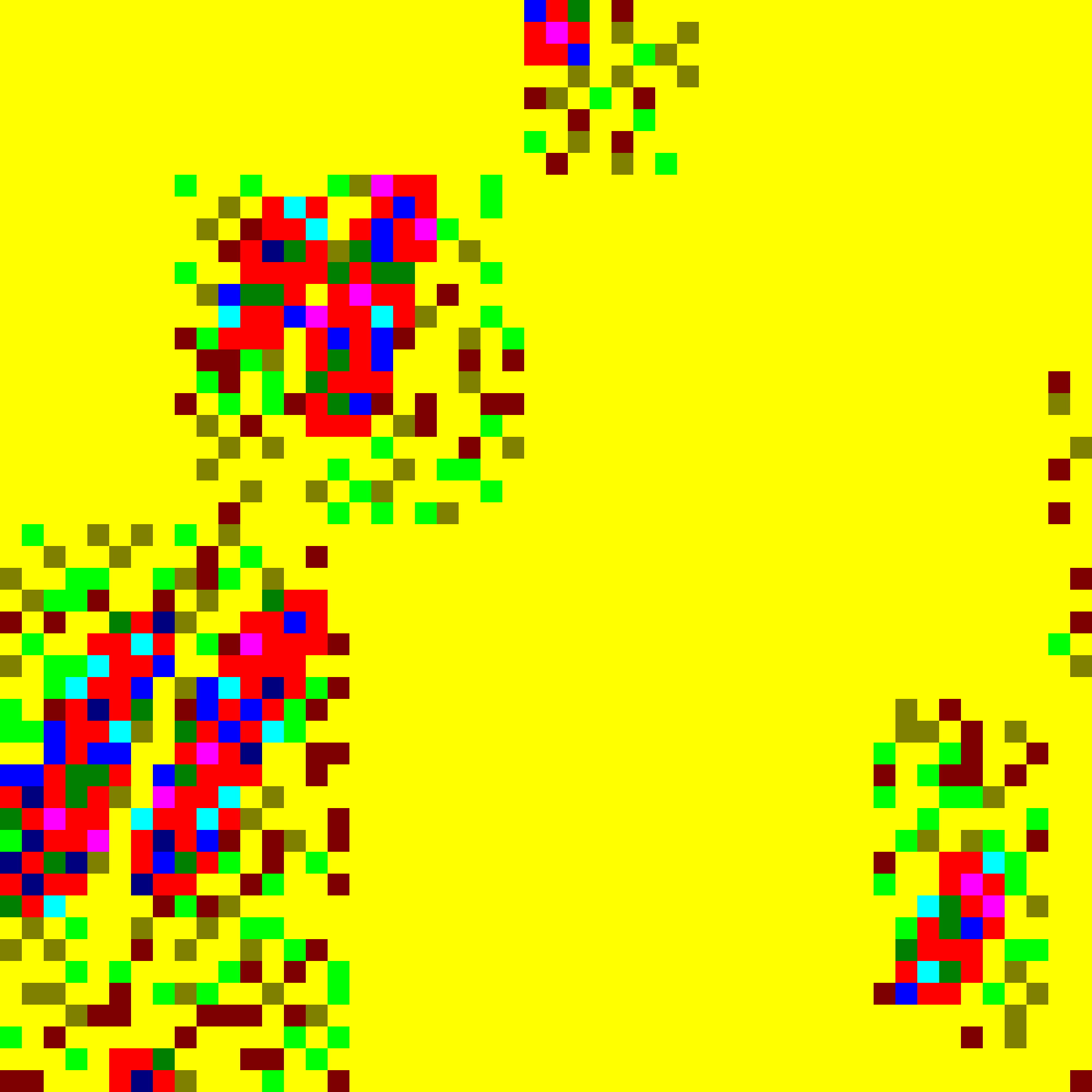
50x50 -> 2000x2000

100x100
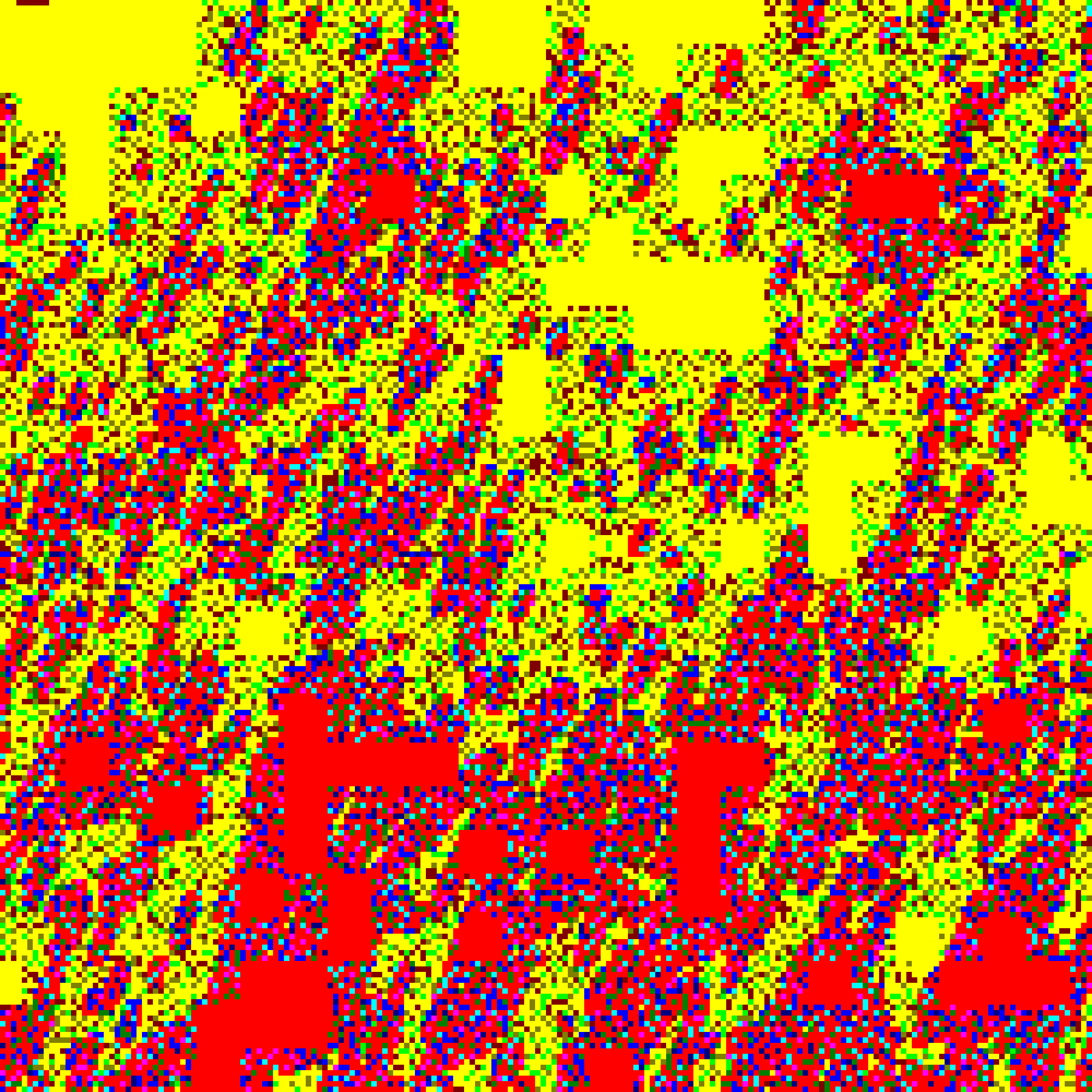
200x200
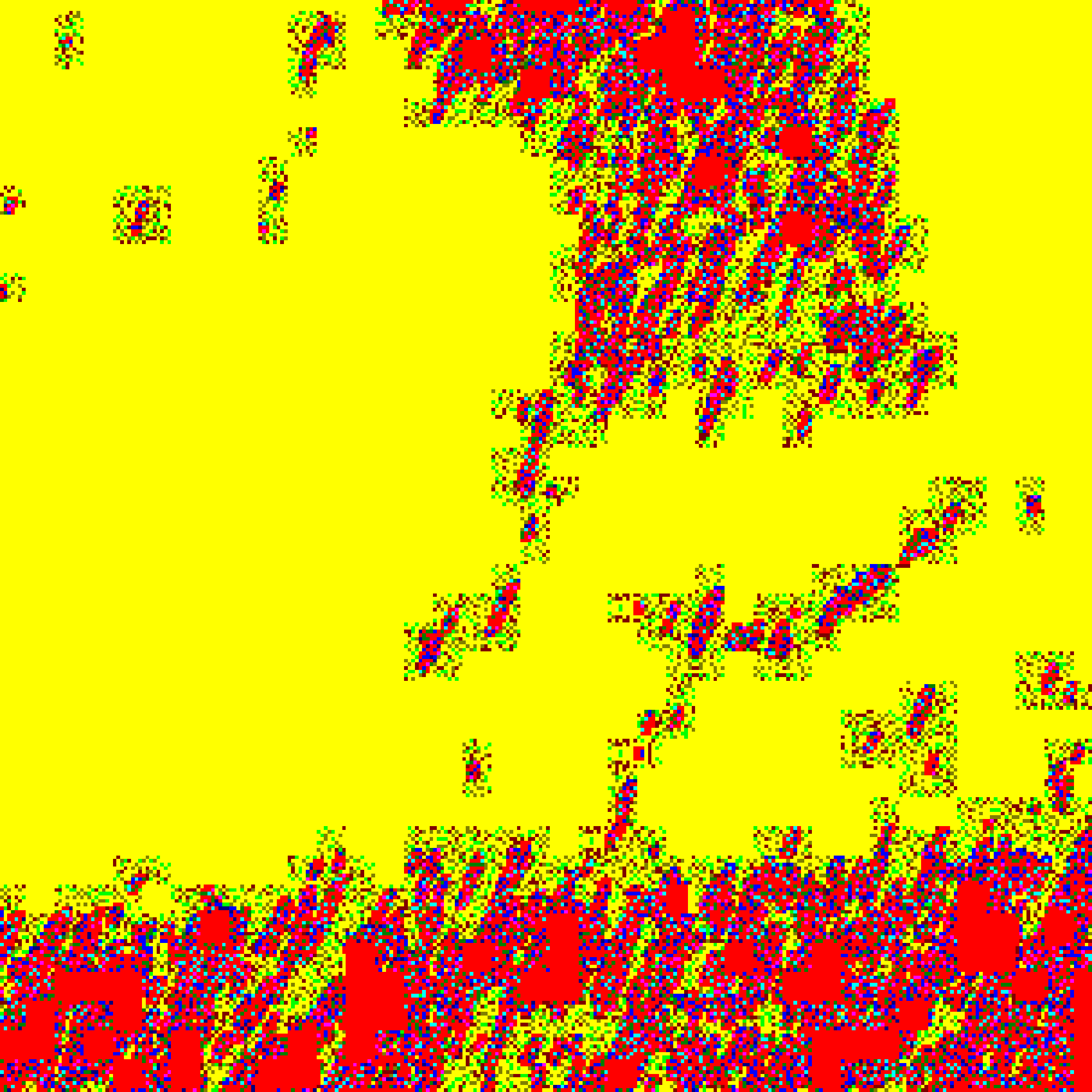
300x300
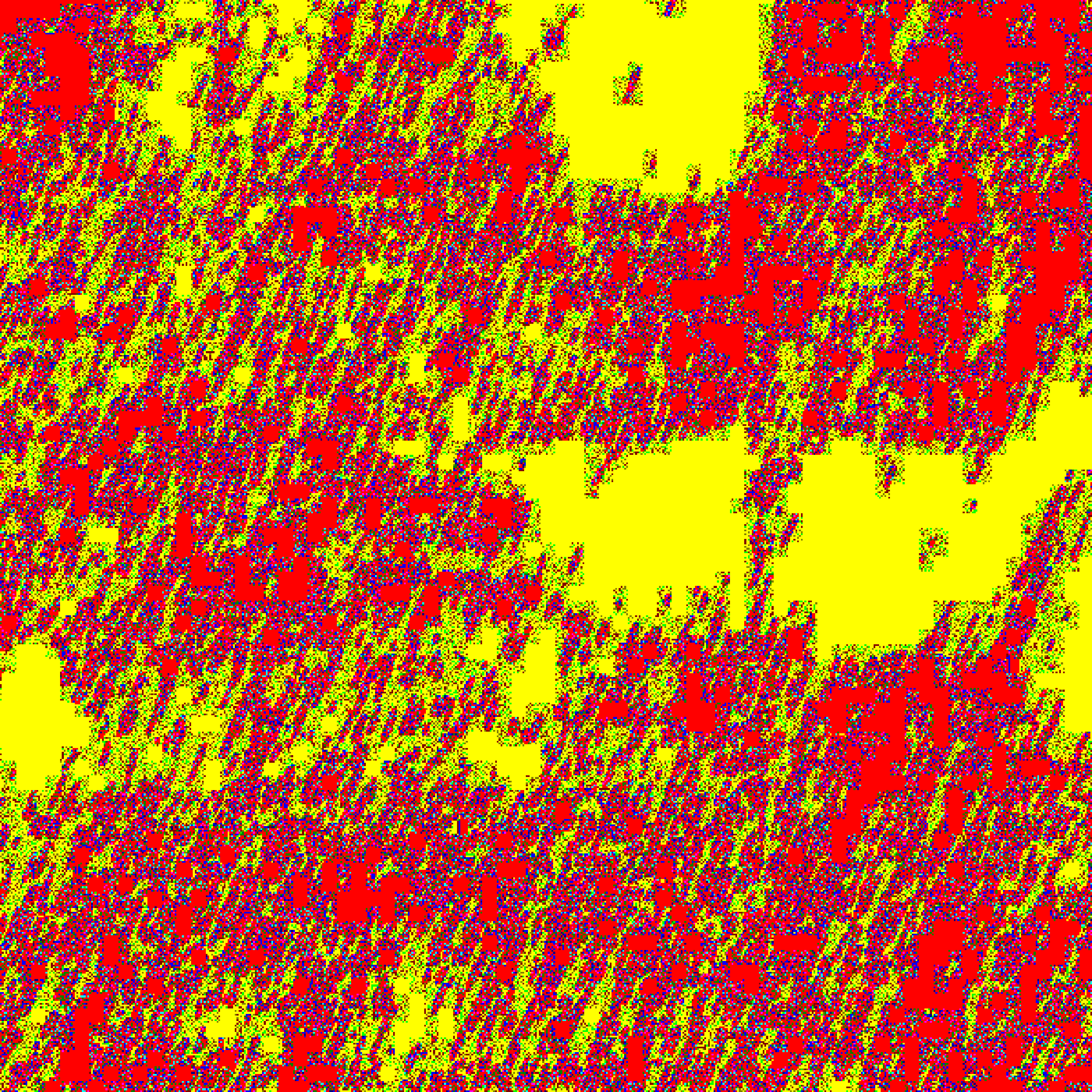
600x600
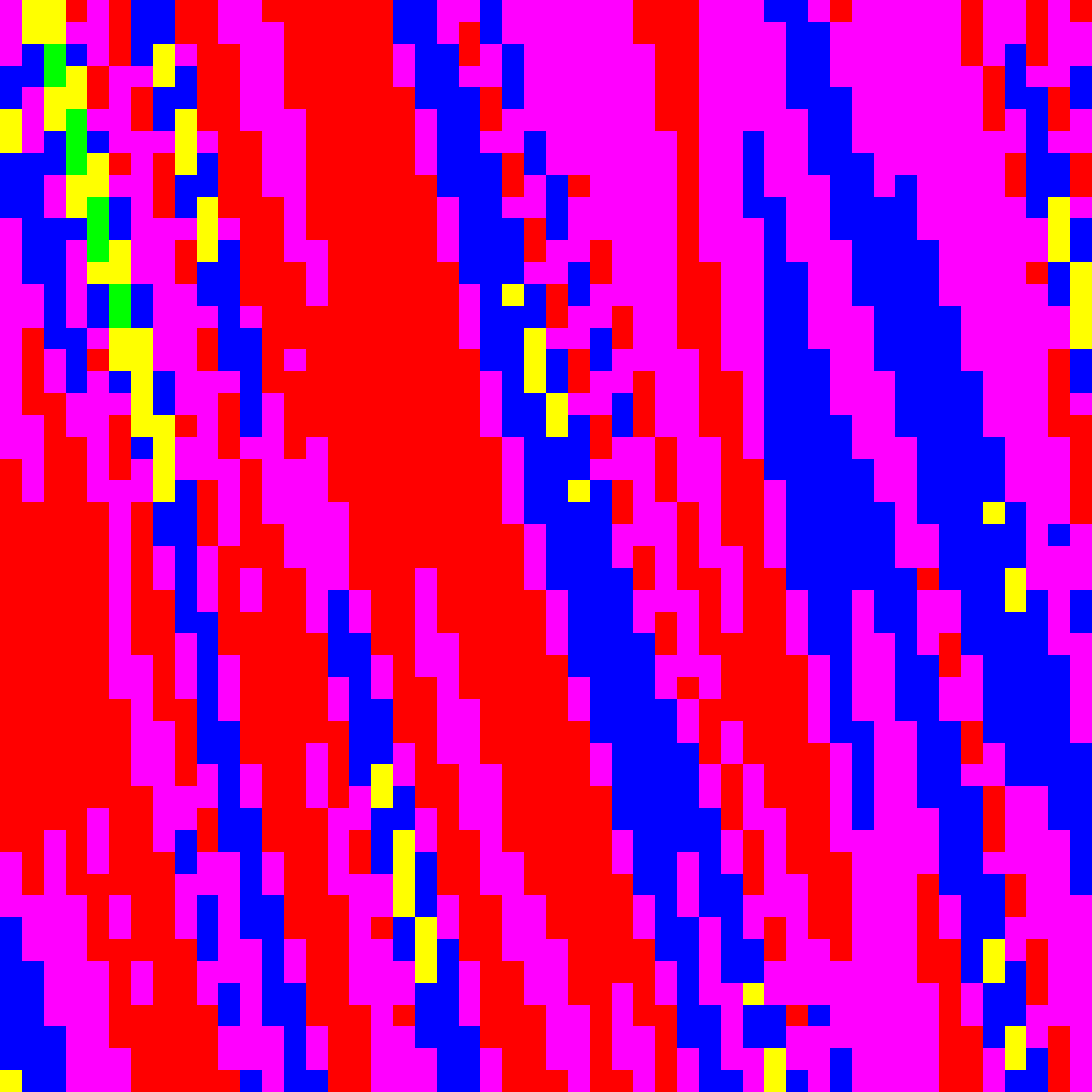
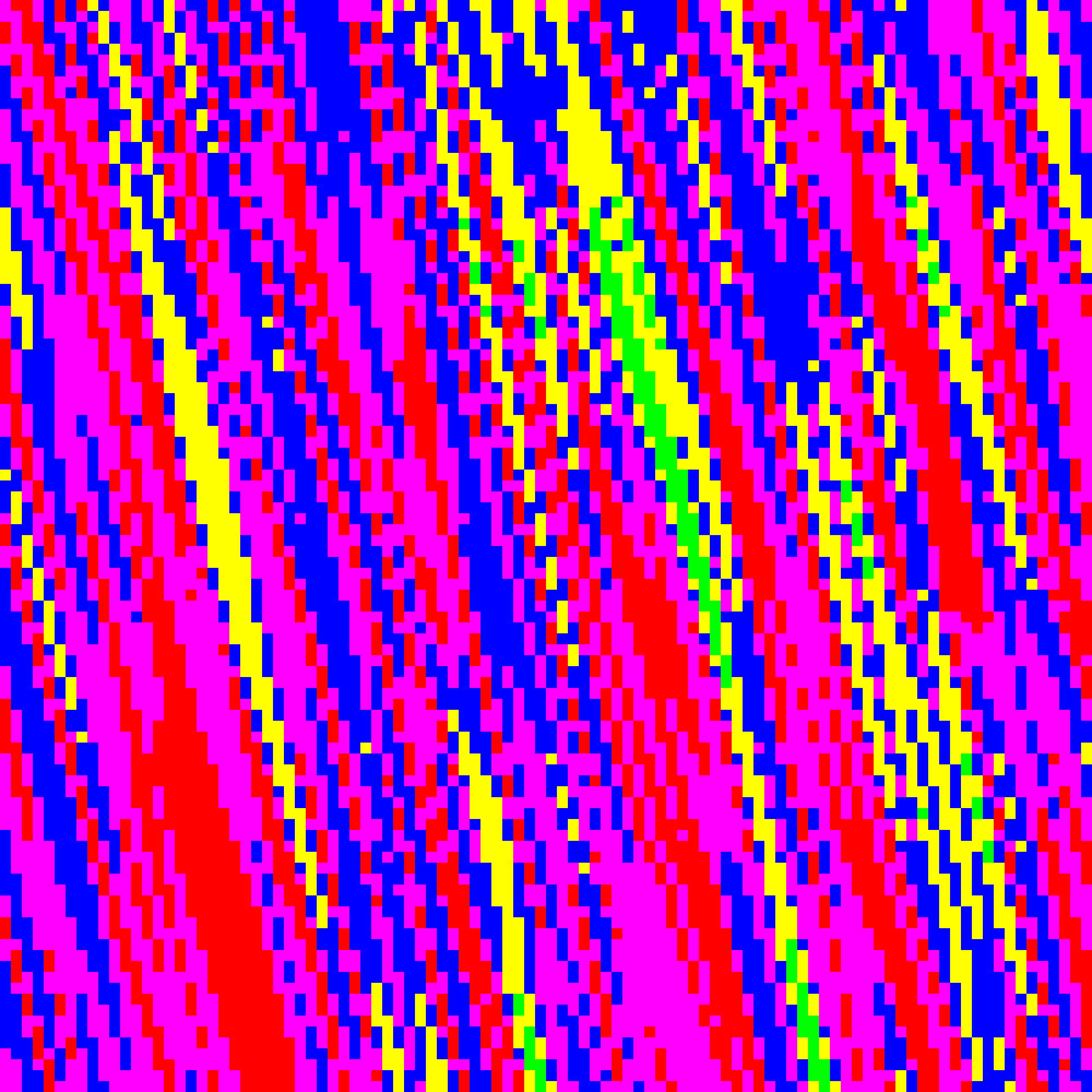
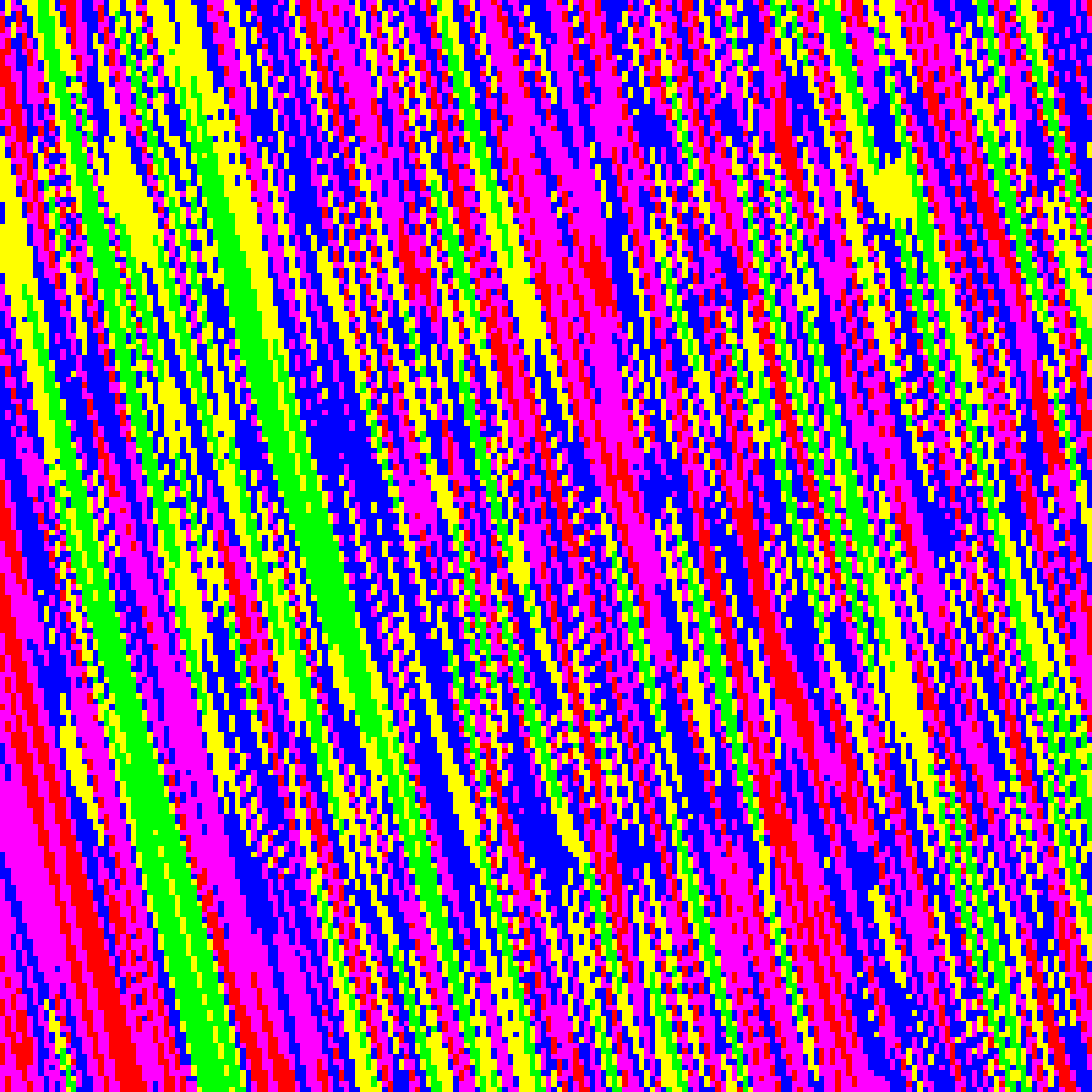
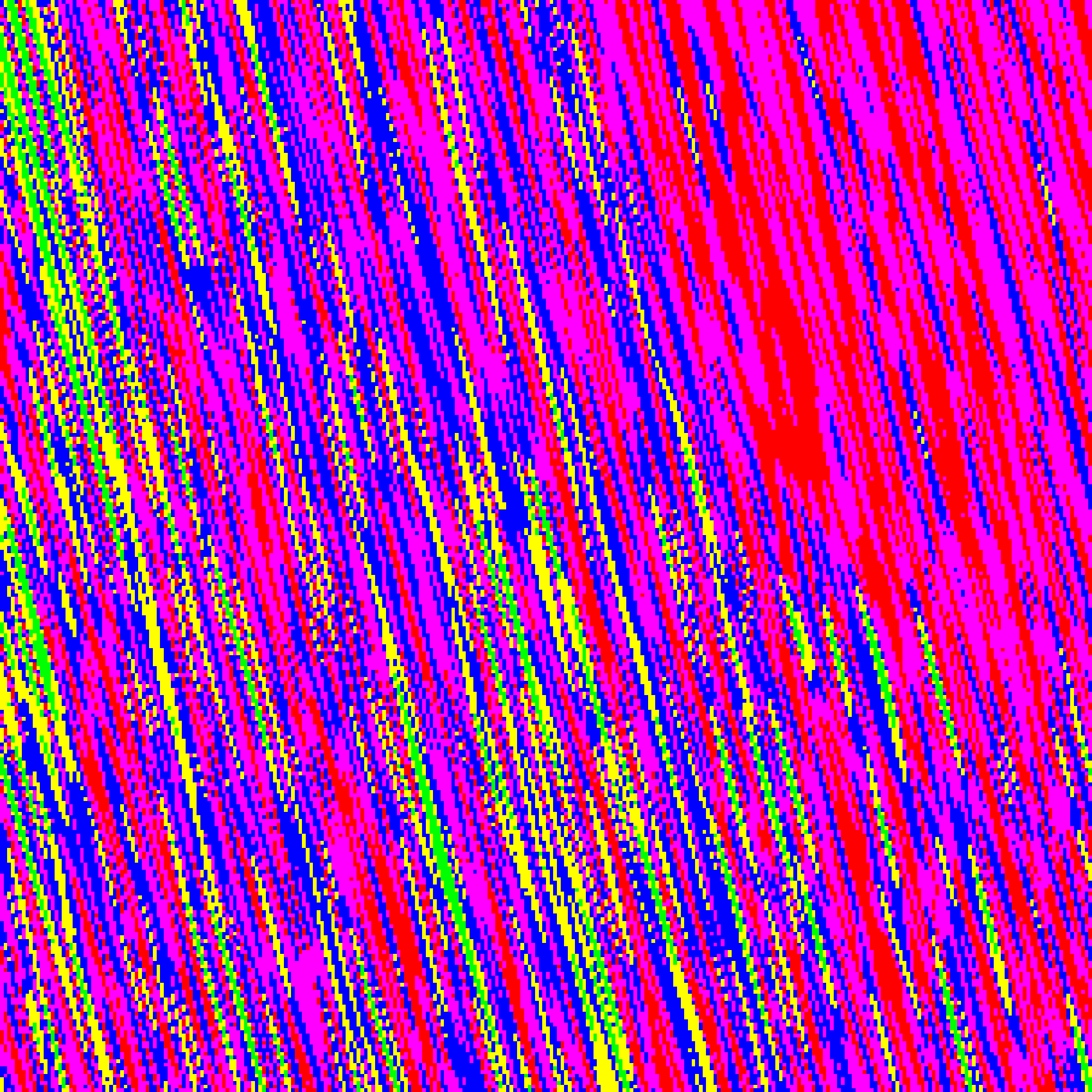
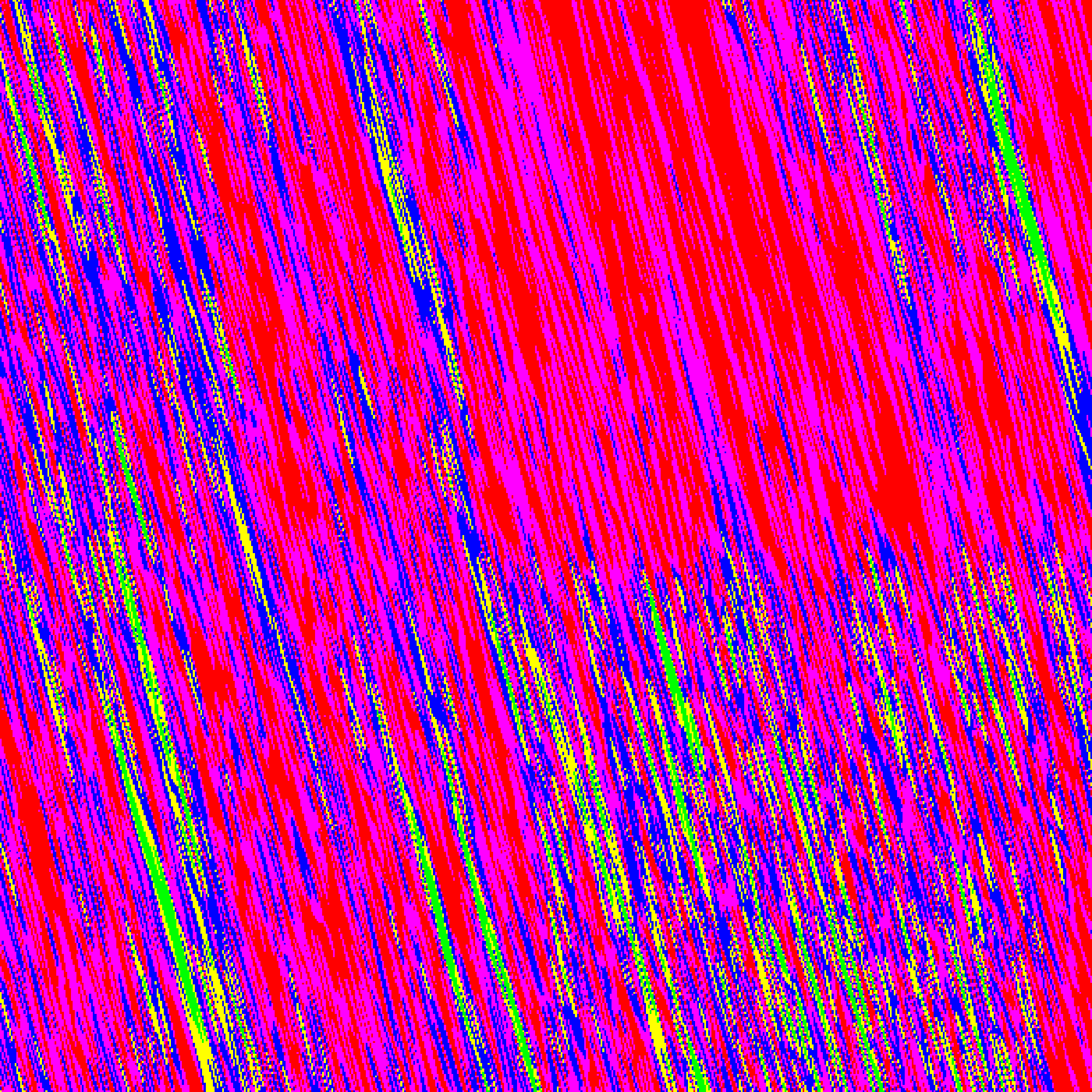
no jpeg compression artefacts
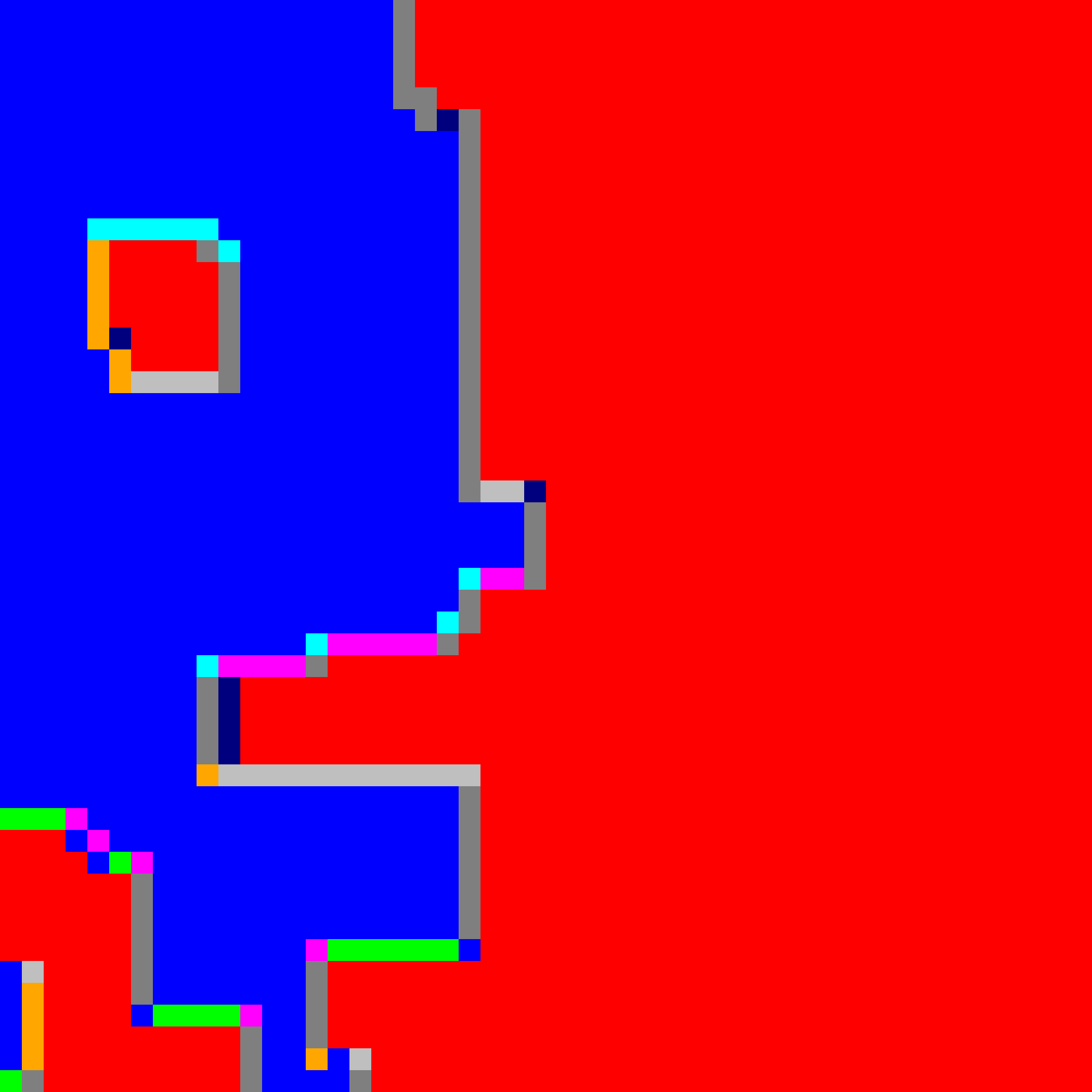
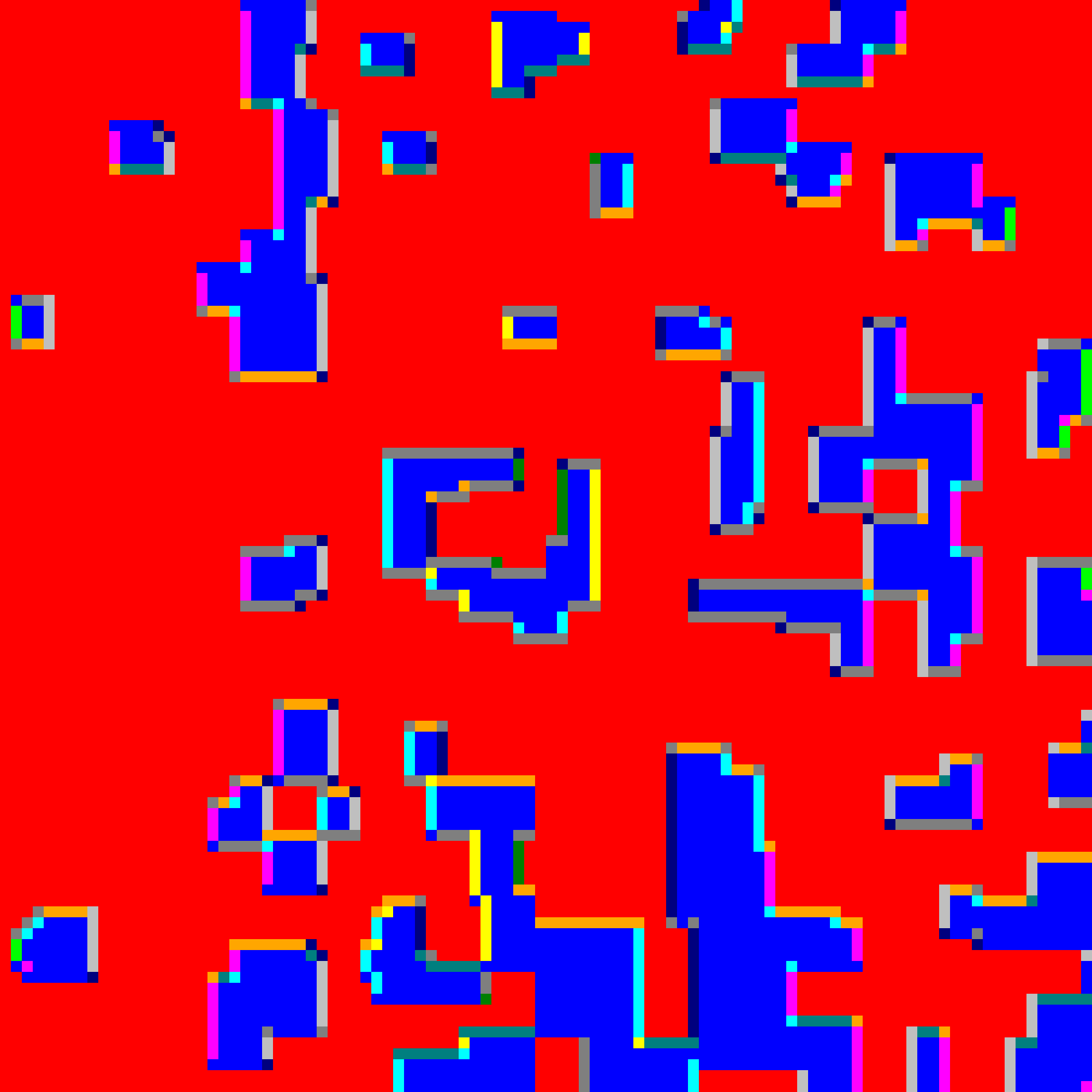
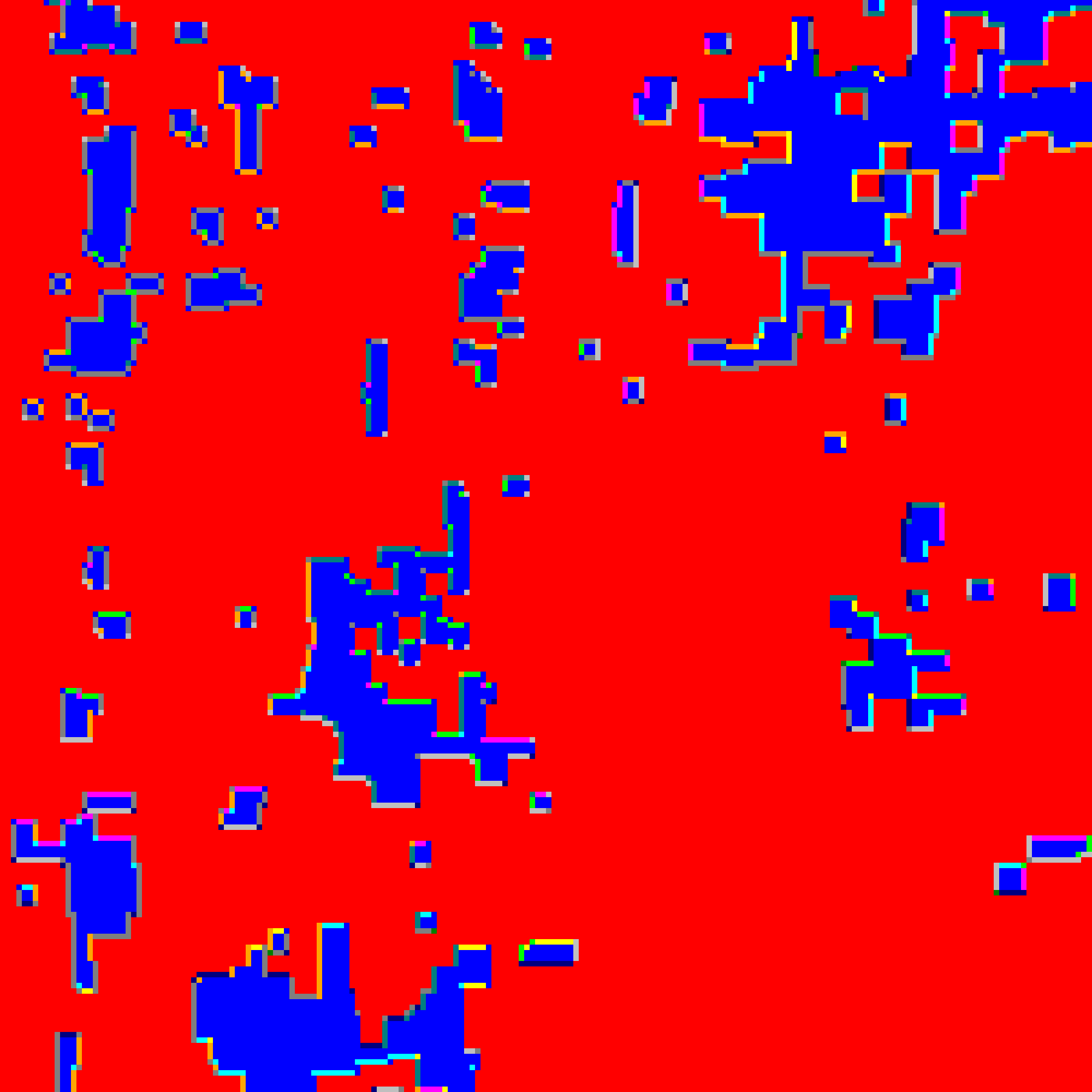
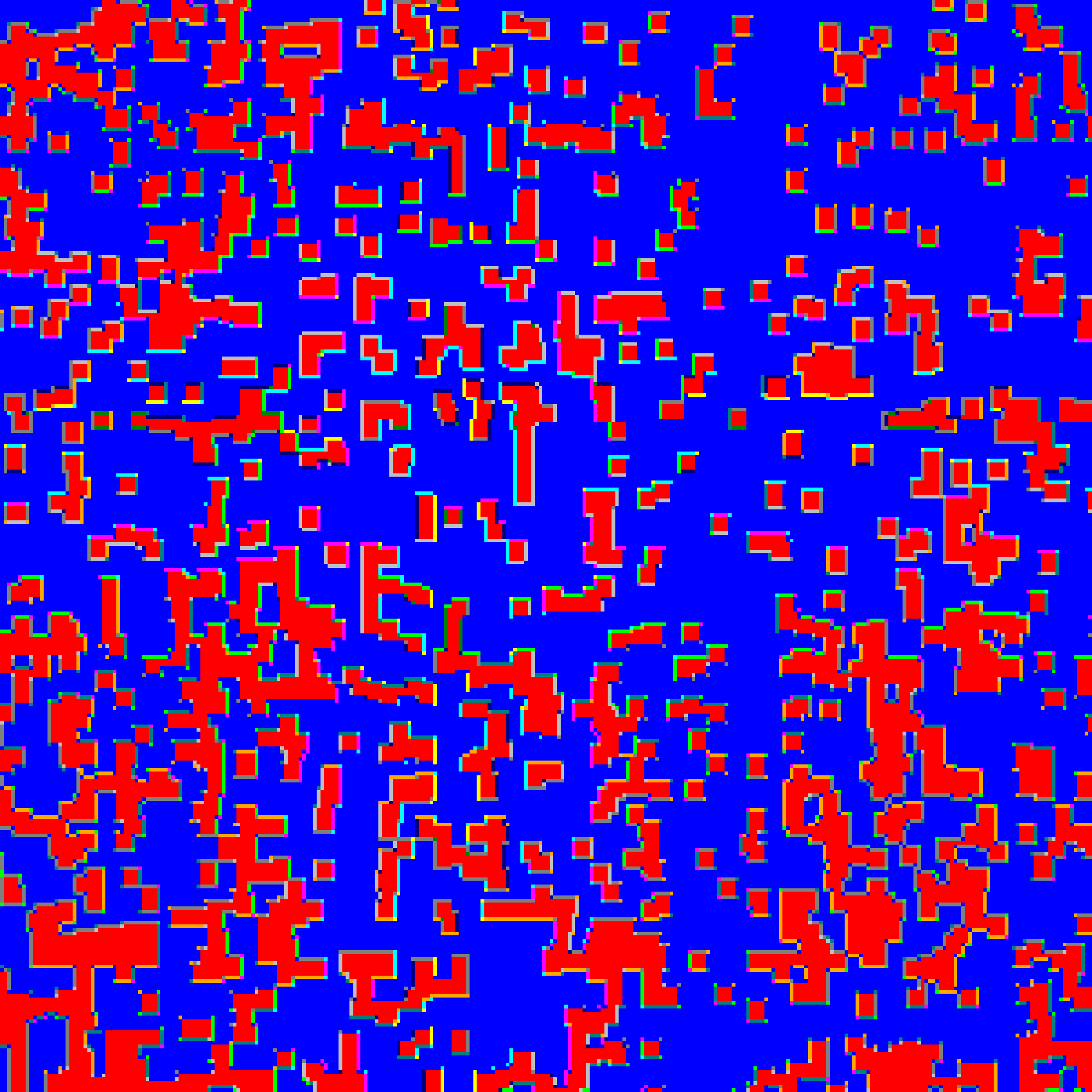
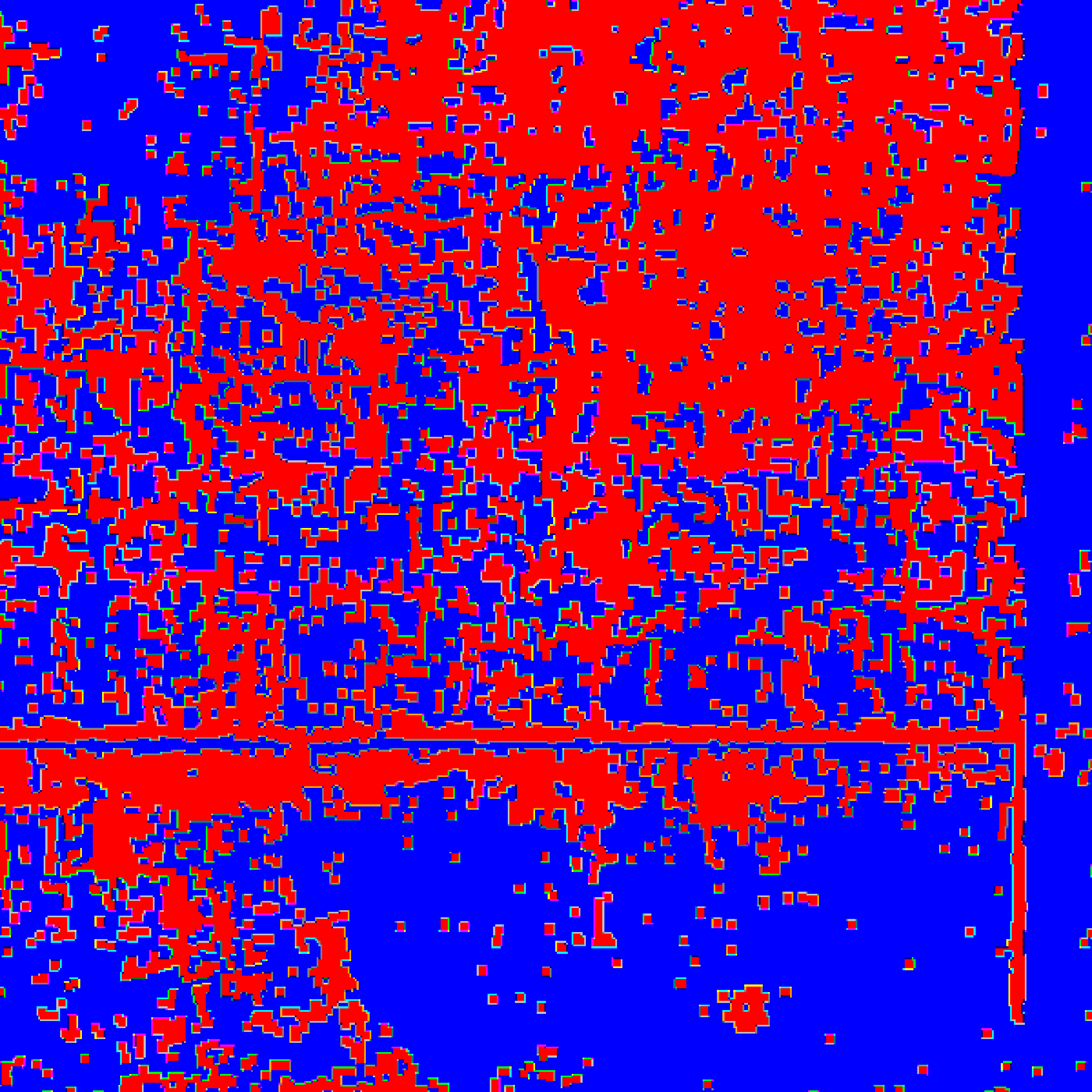
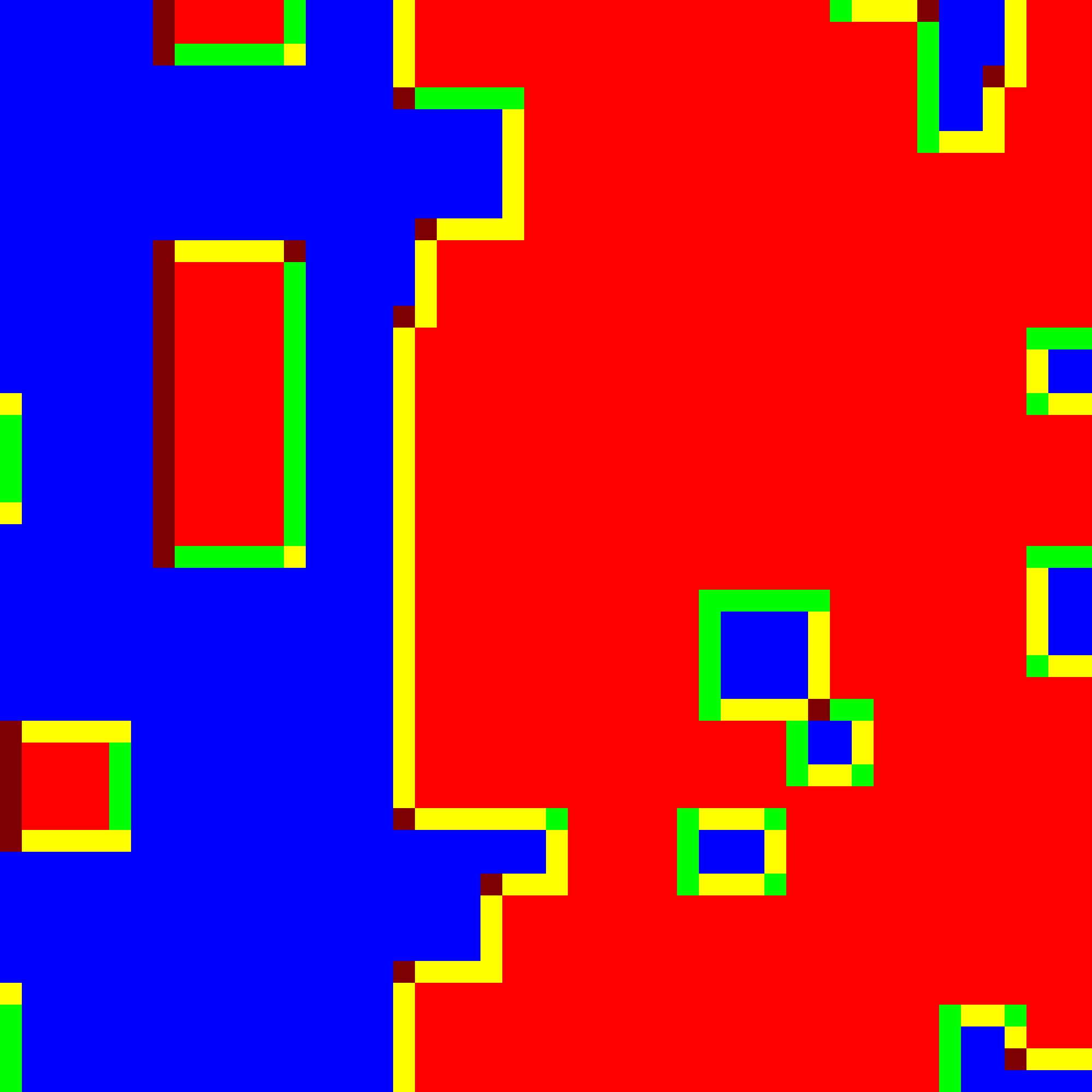
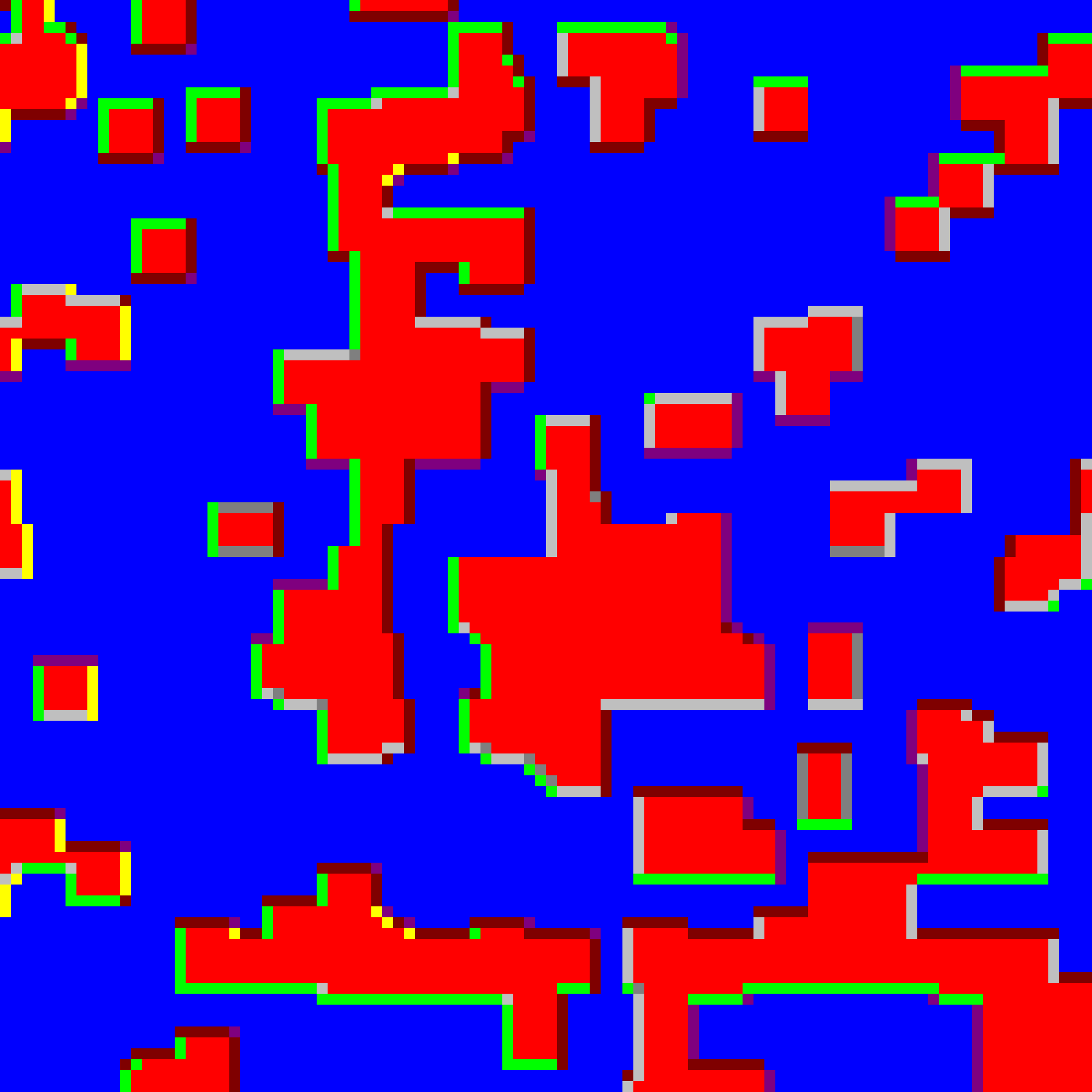
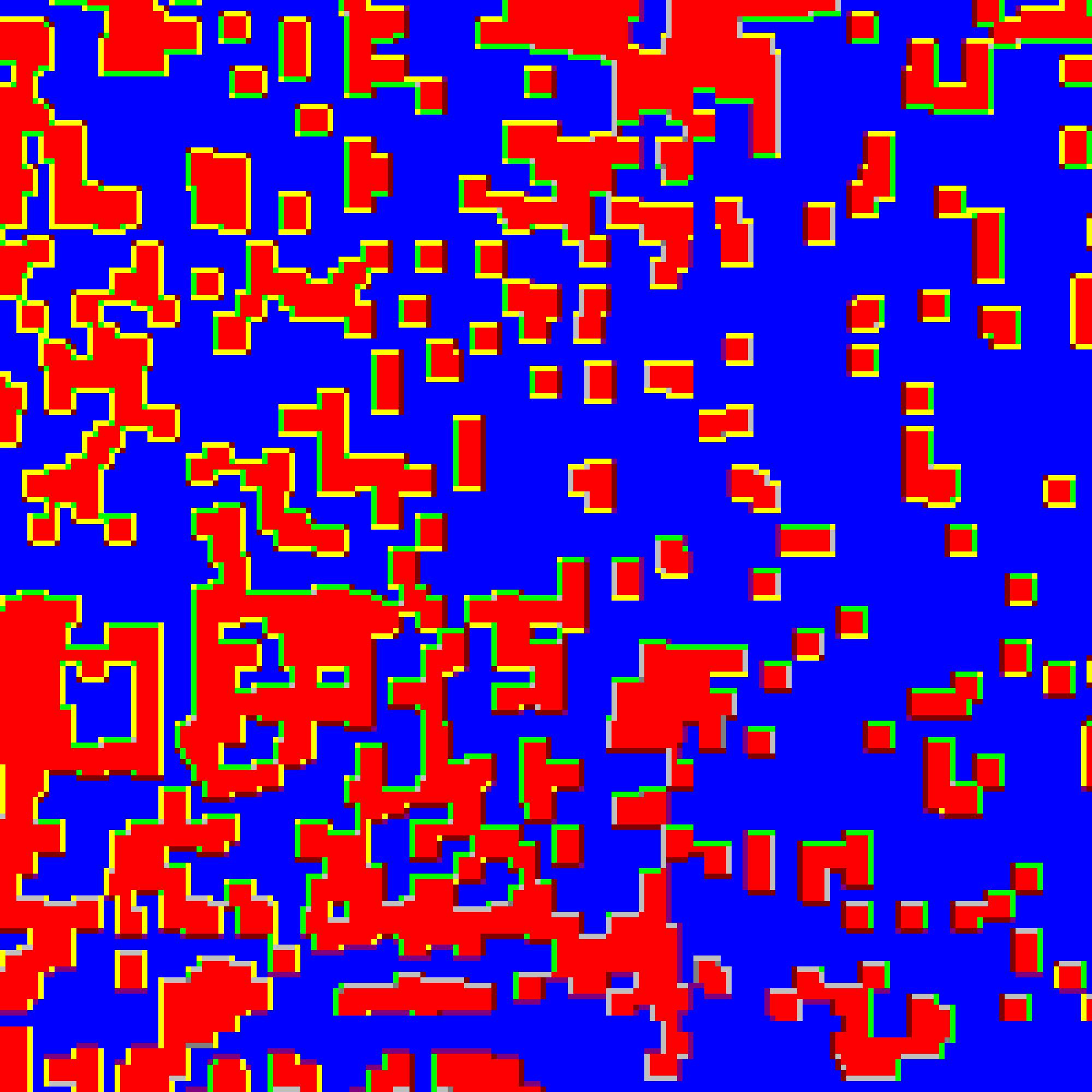
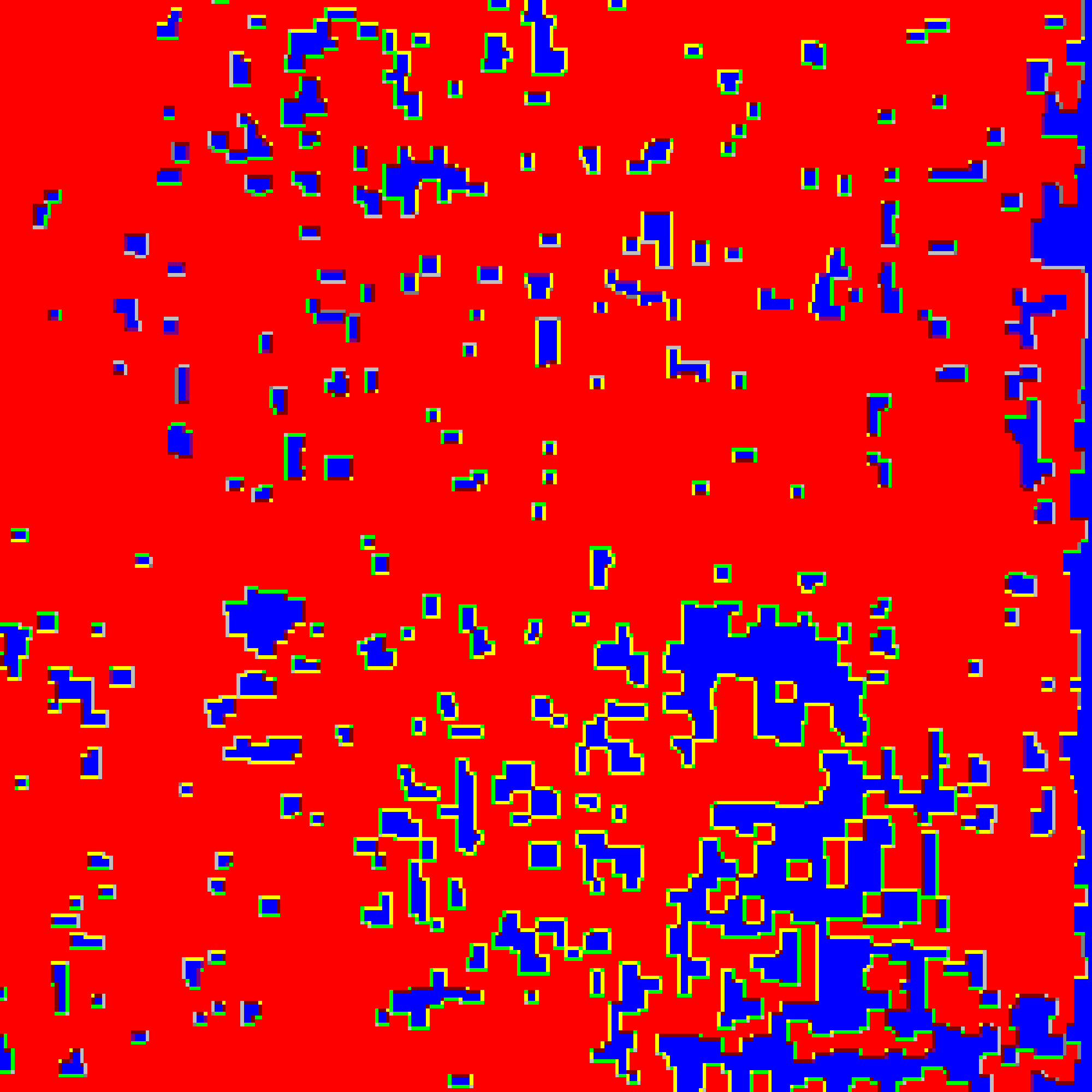
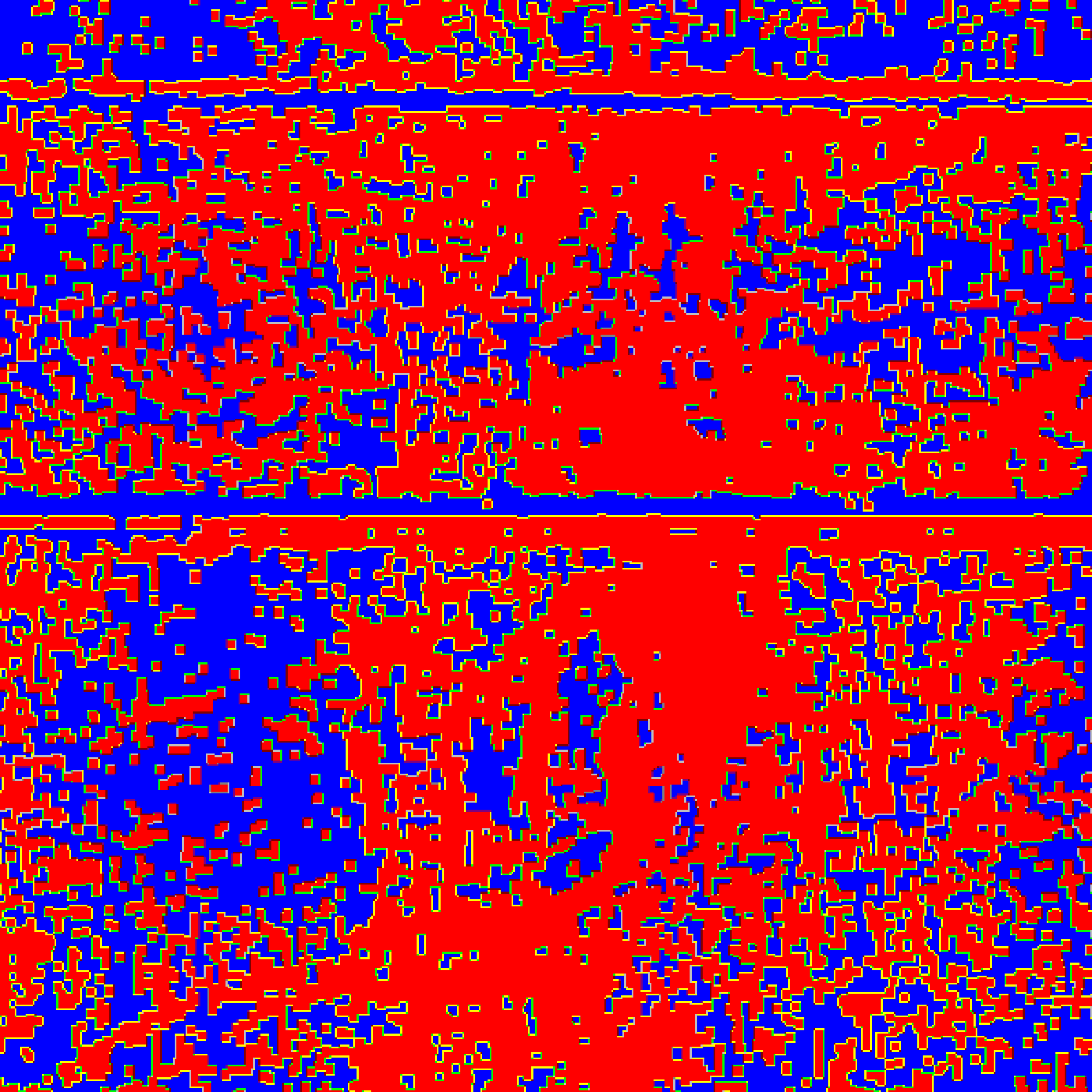
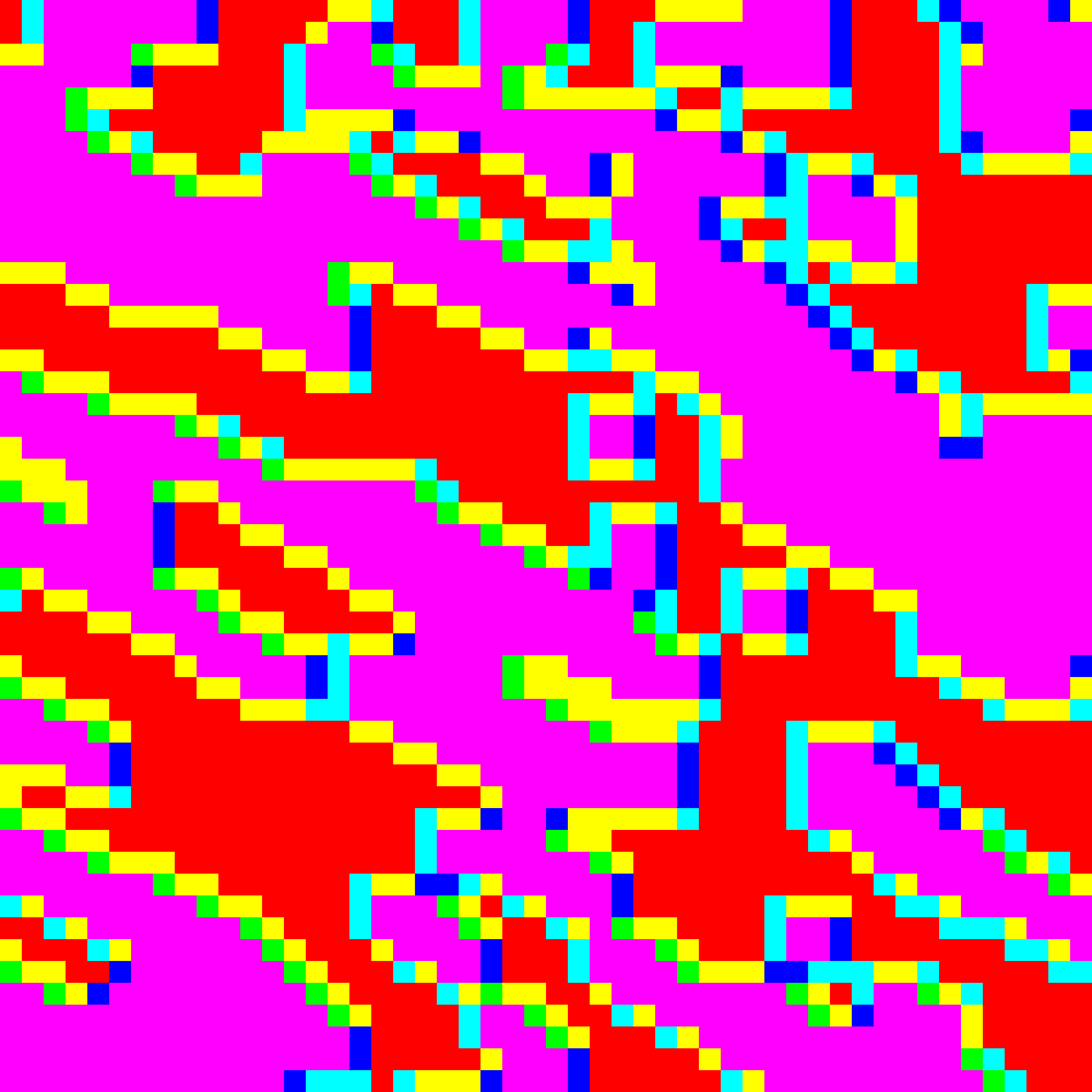
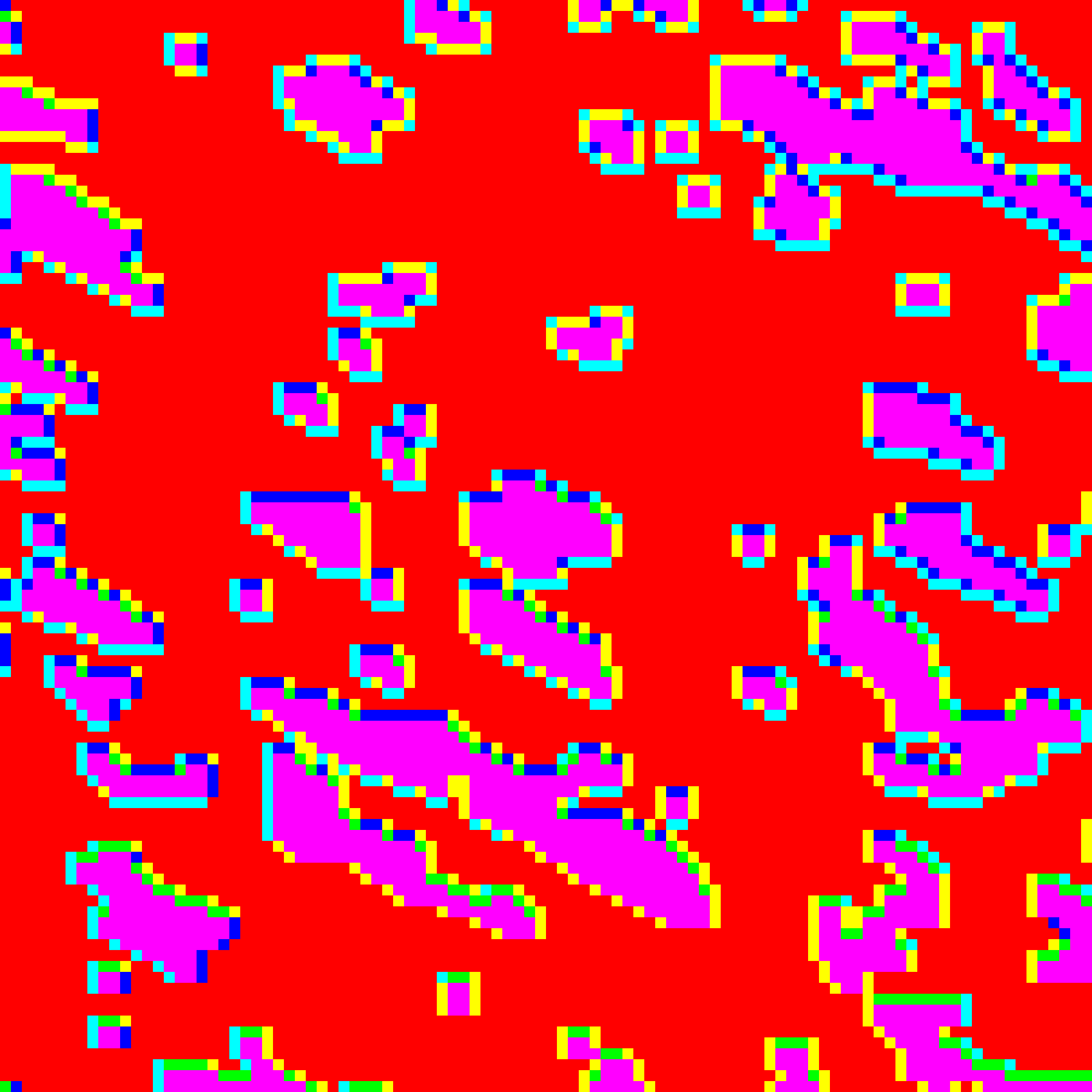
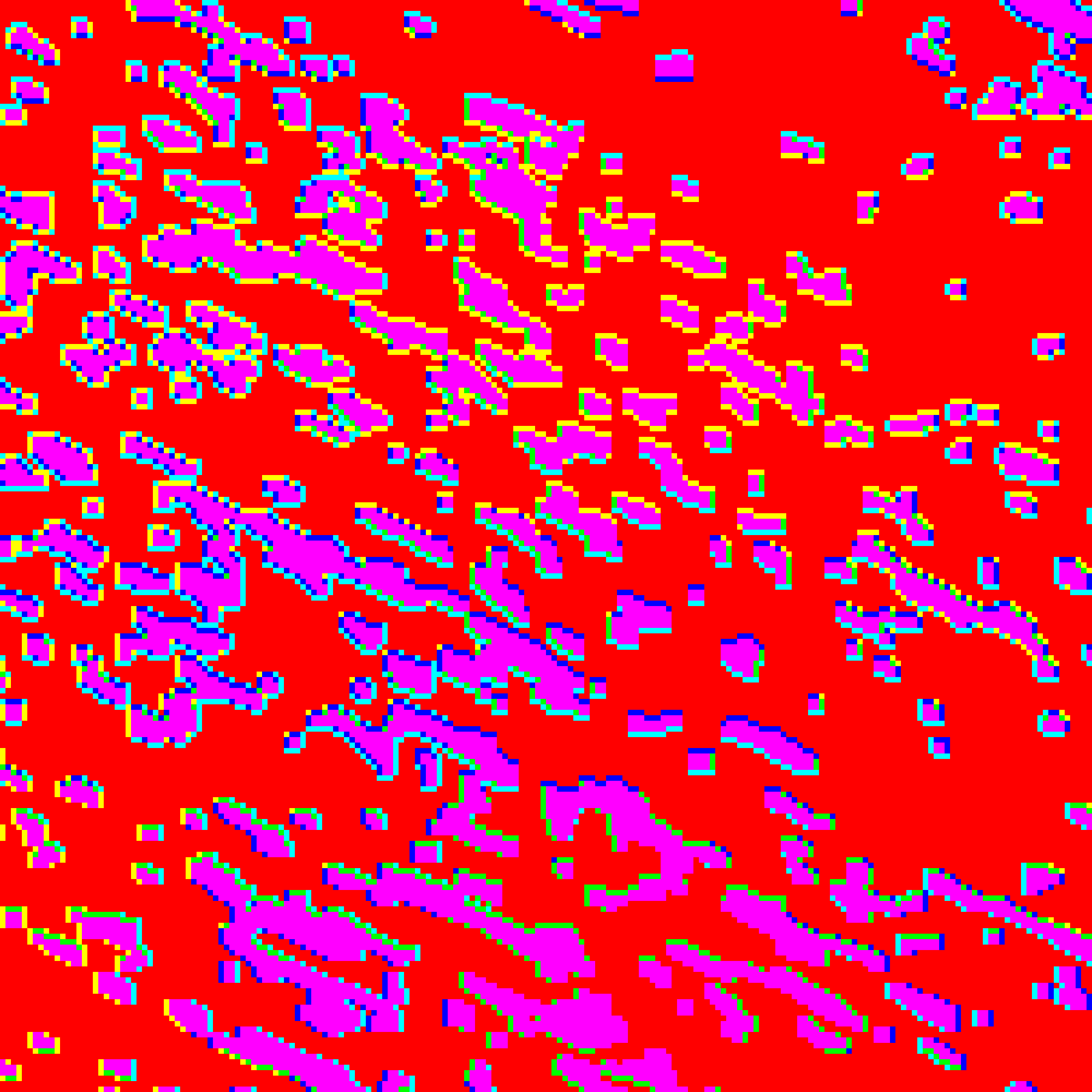
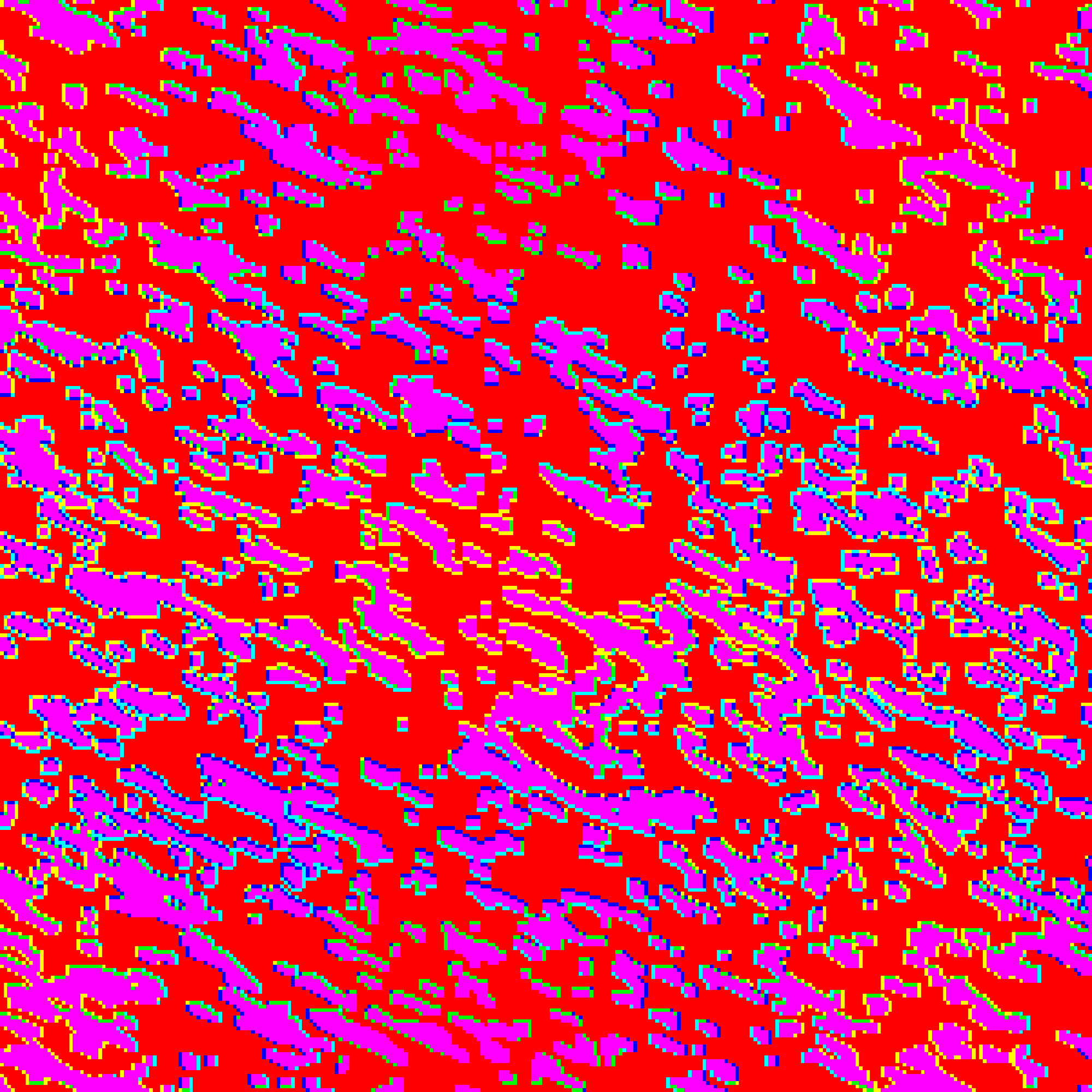
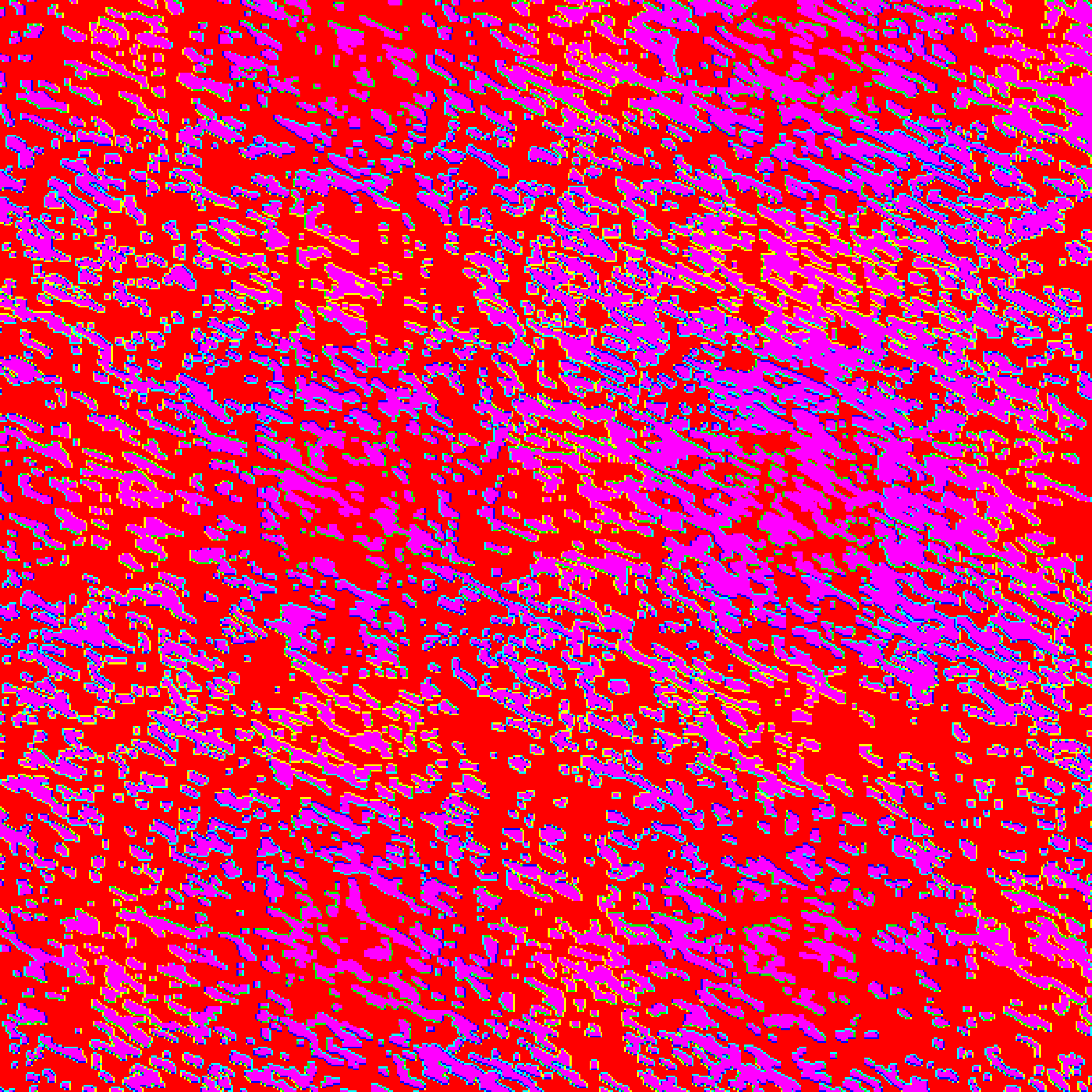
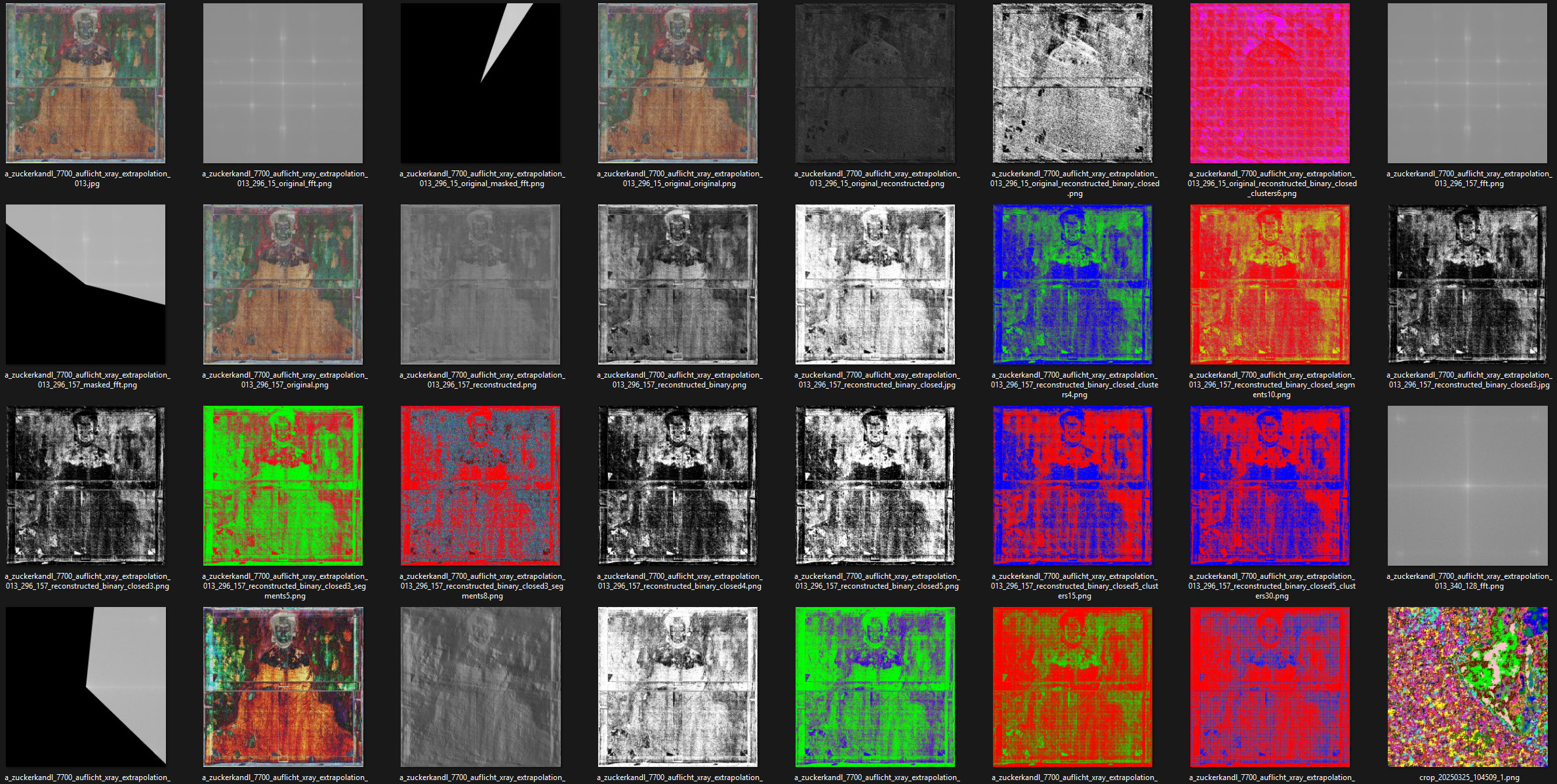
0325_directional_fft_binary_dilation_segmentation_overview
just cropped and scaled of extrapolation without postpro
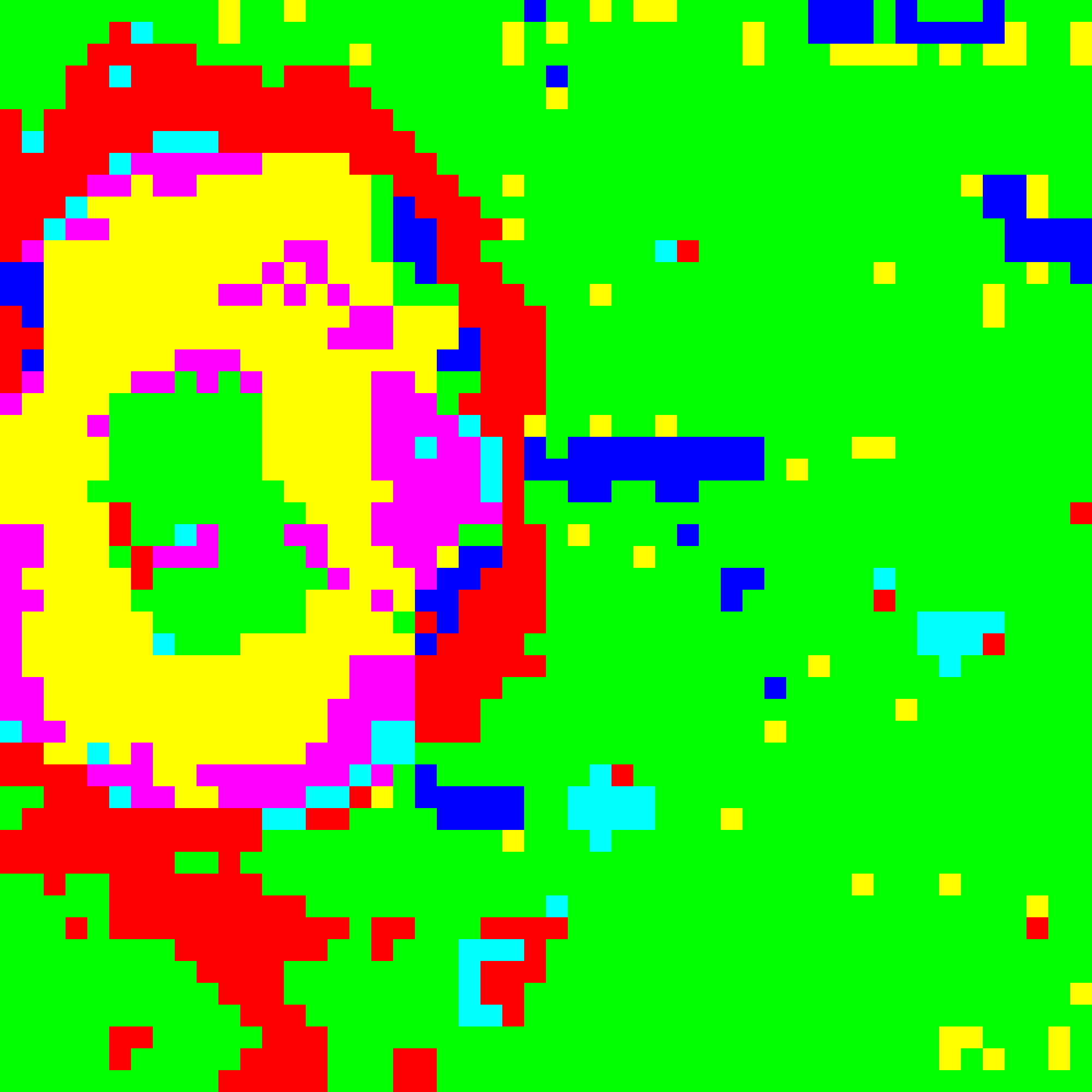

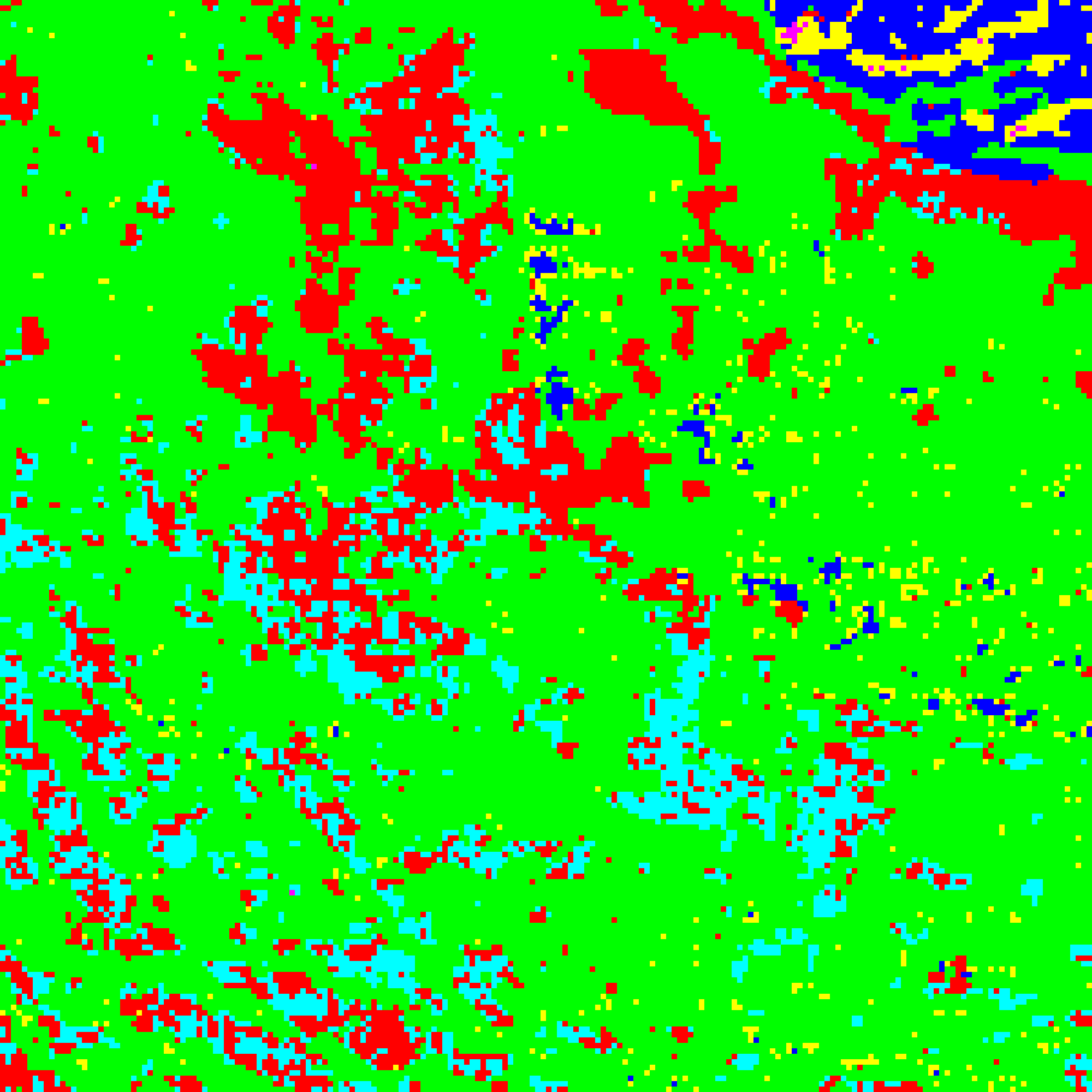
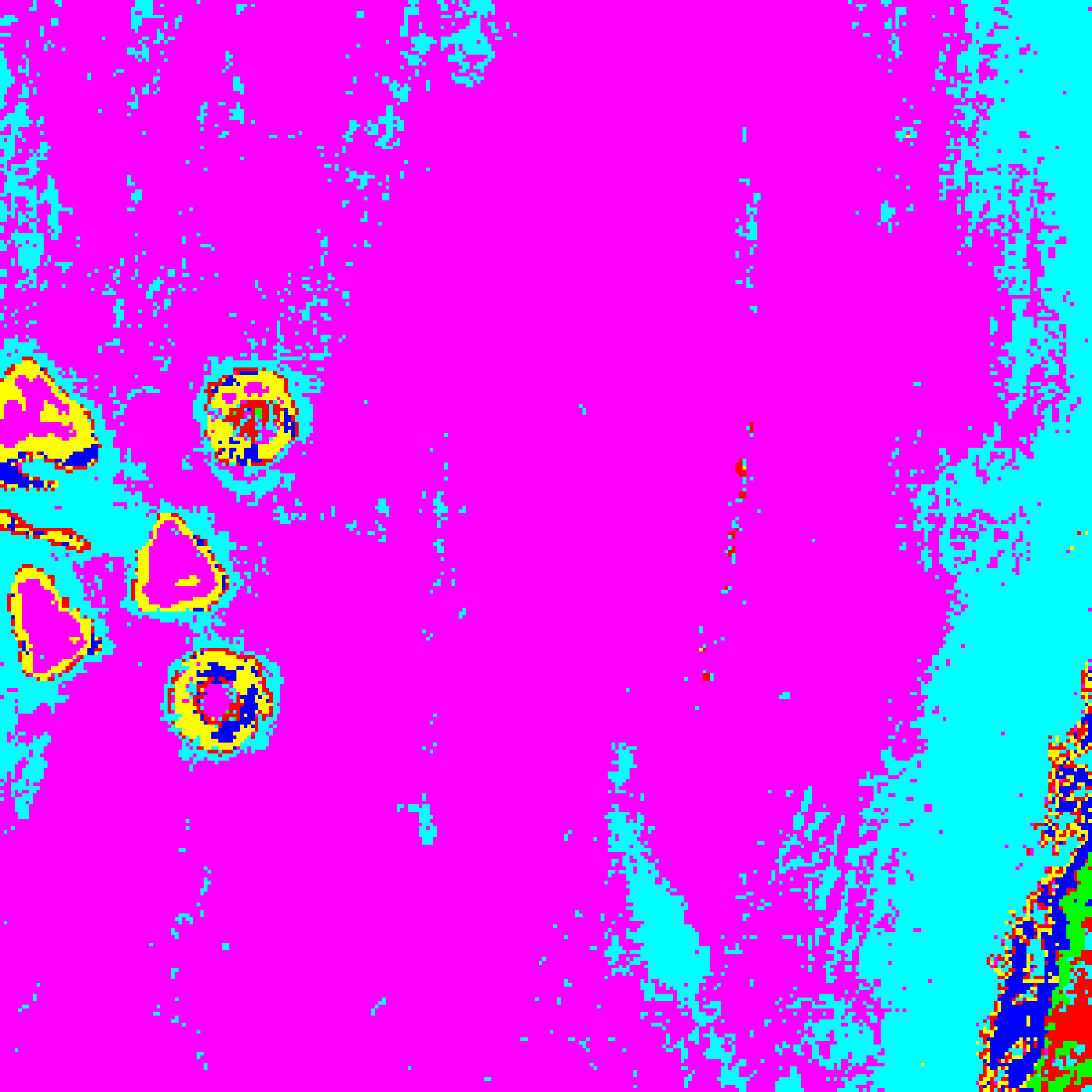
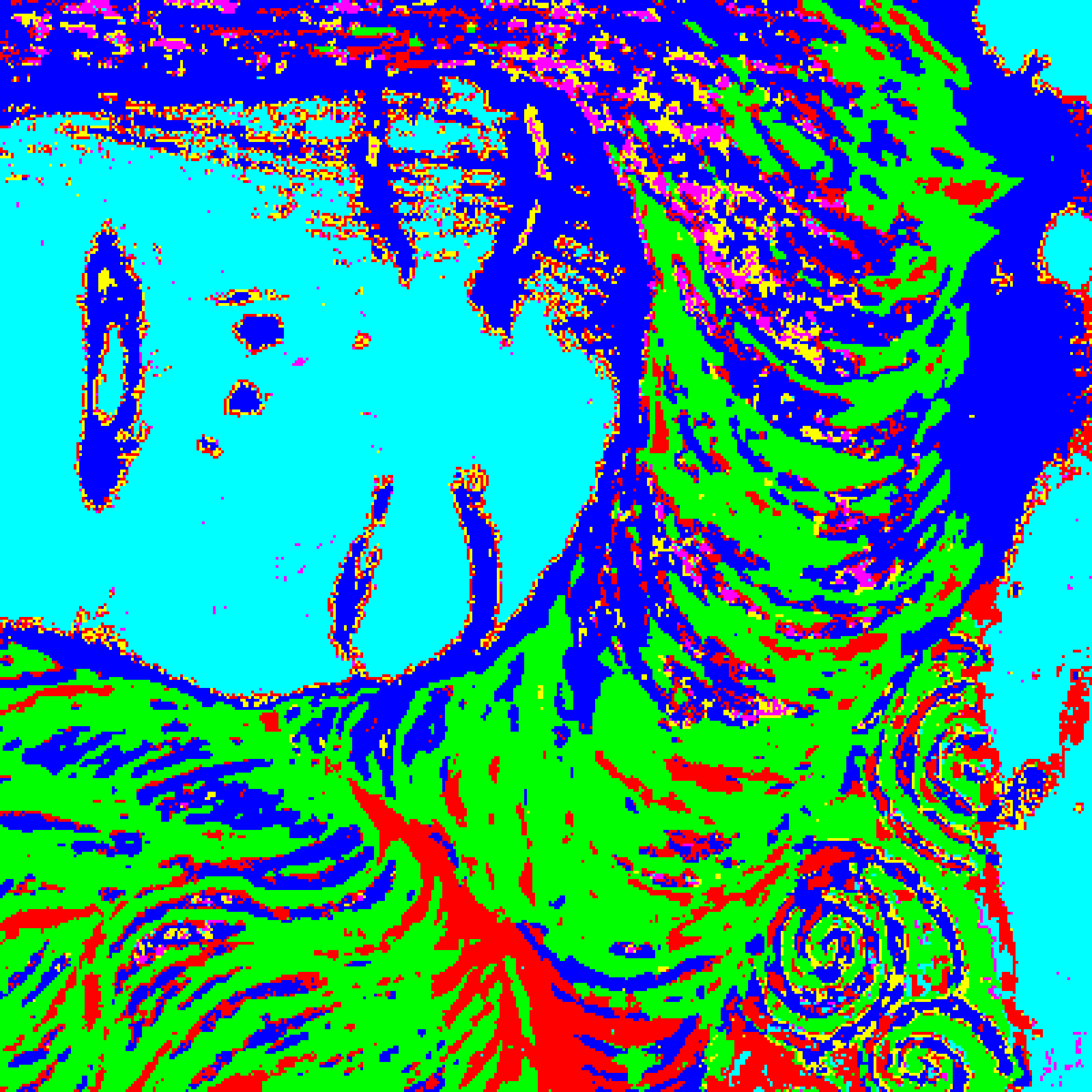
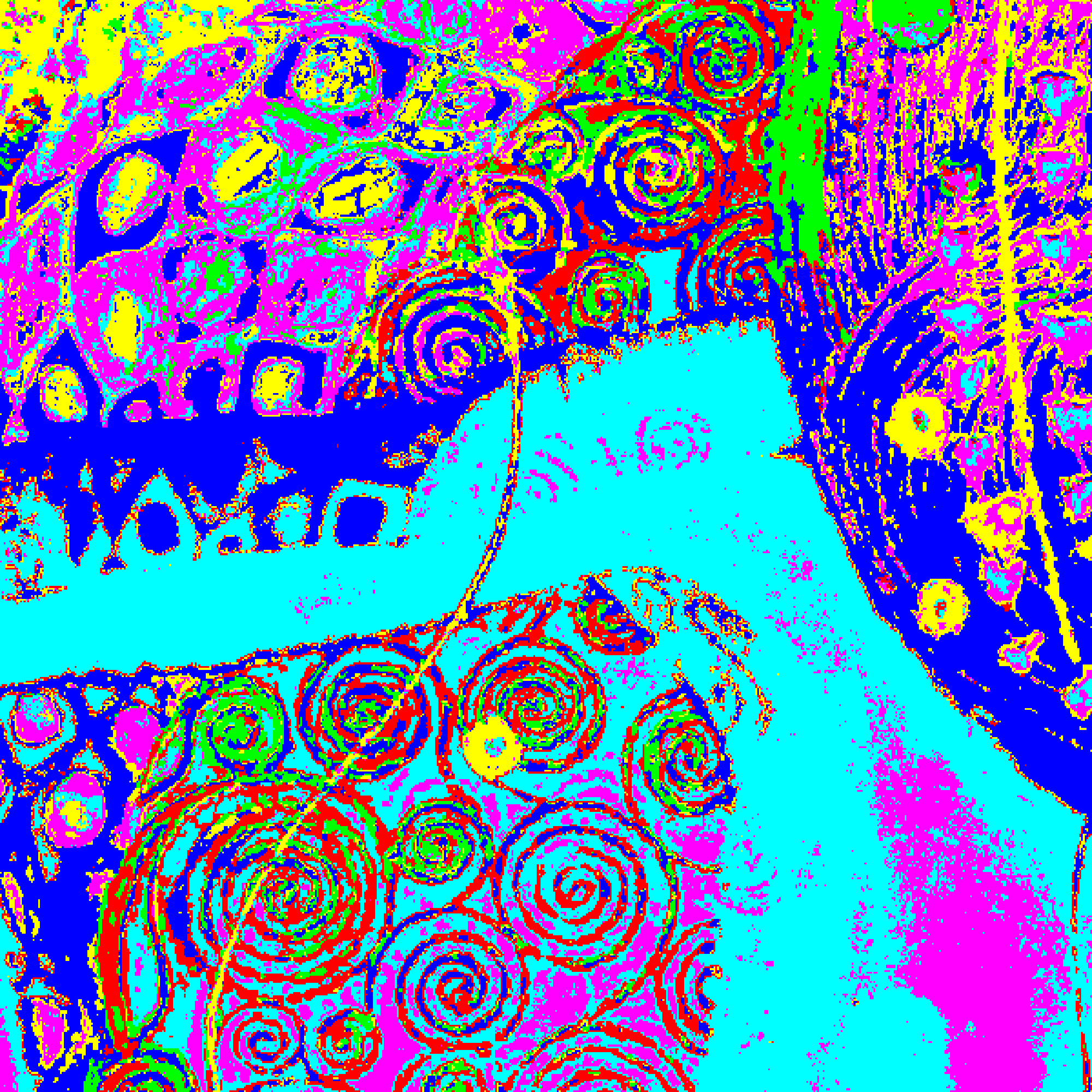
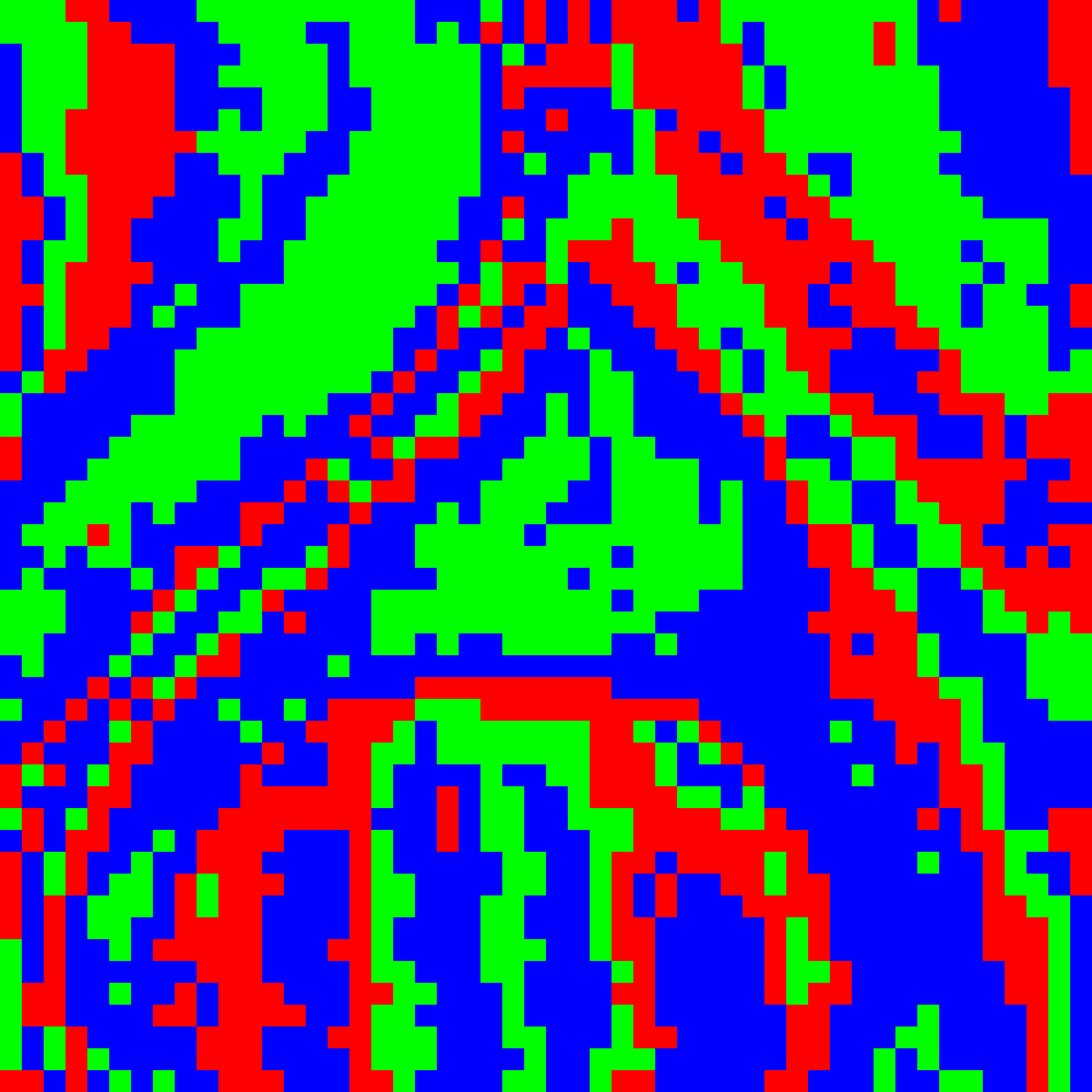

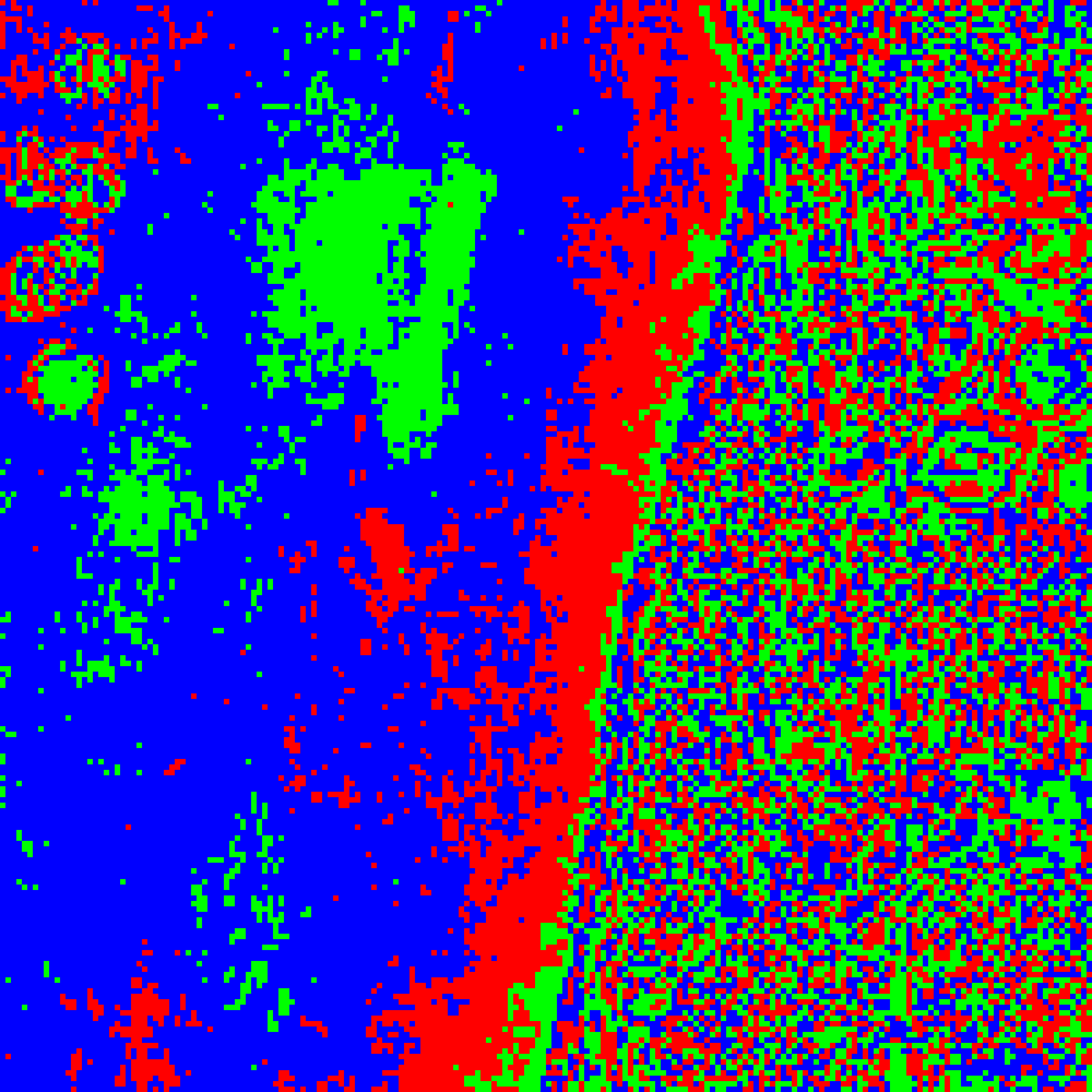
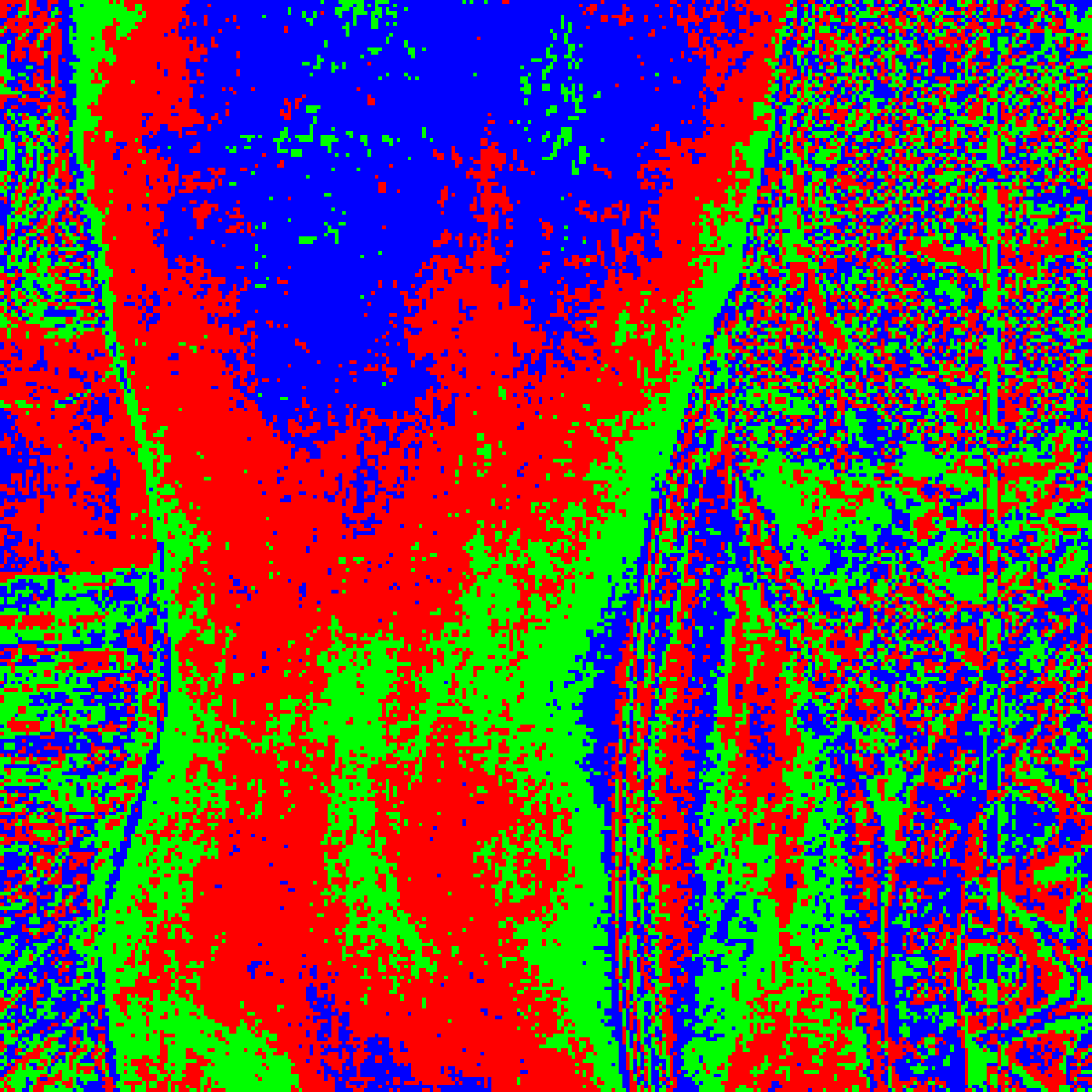
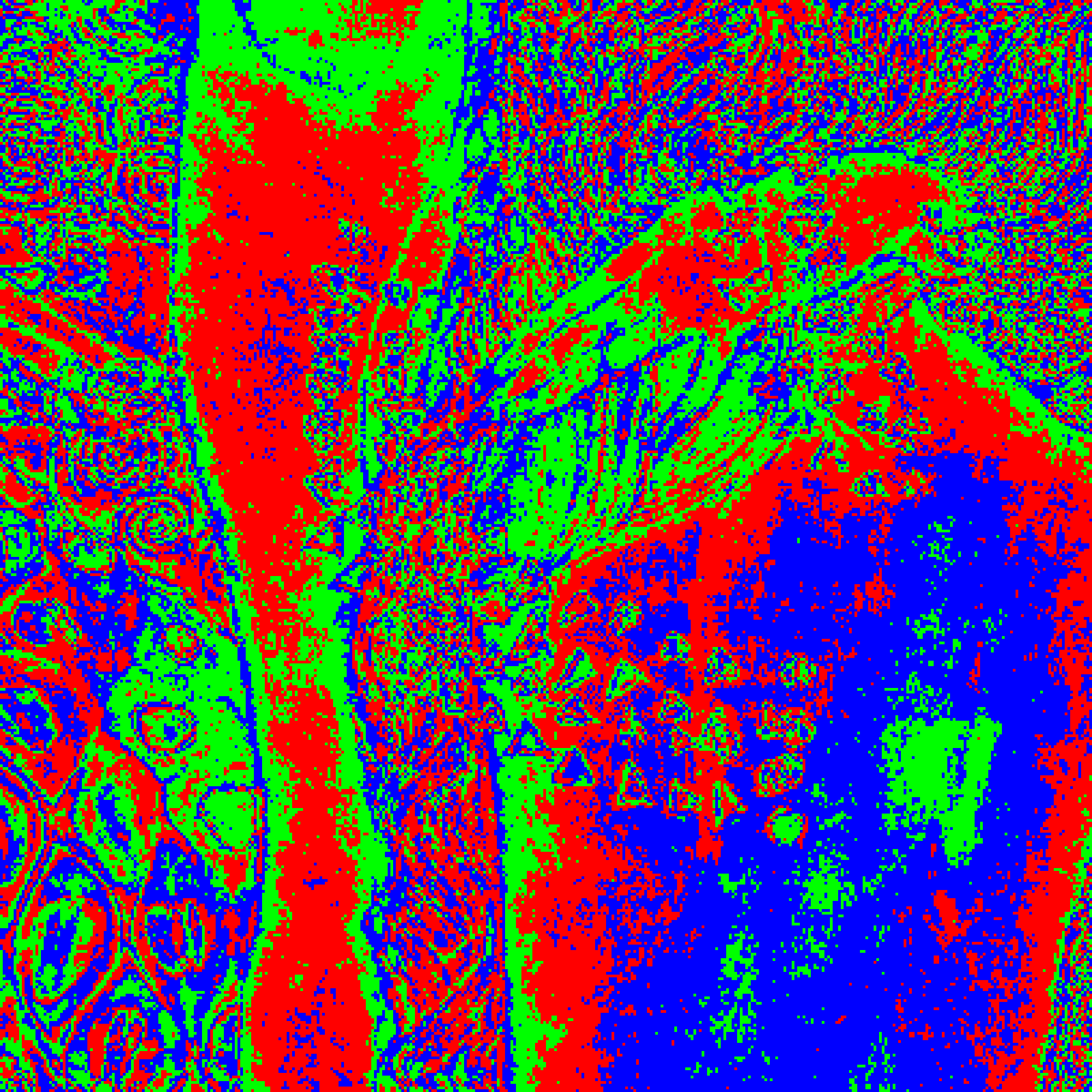
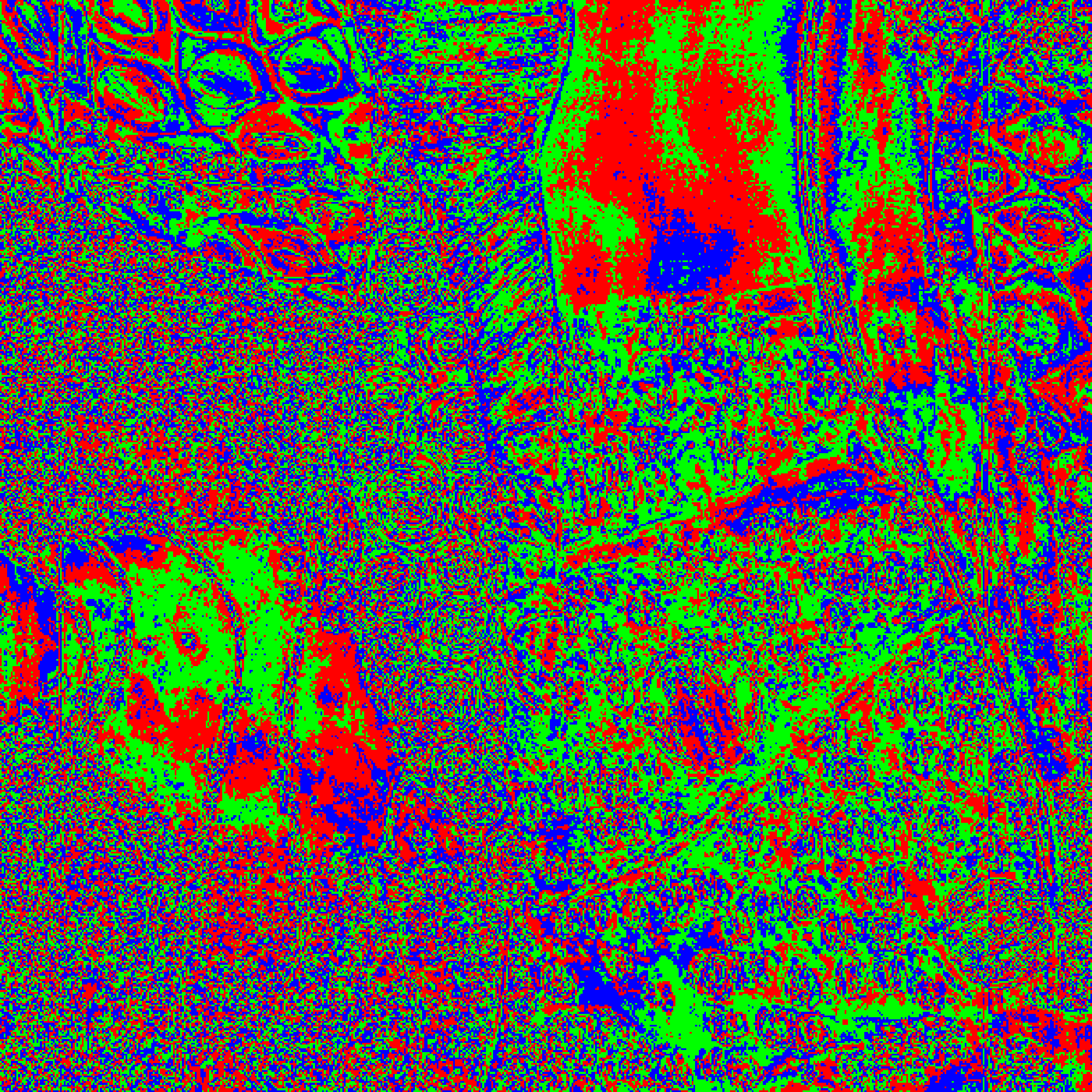
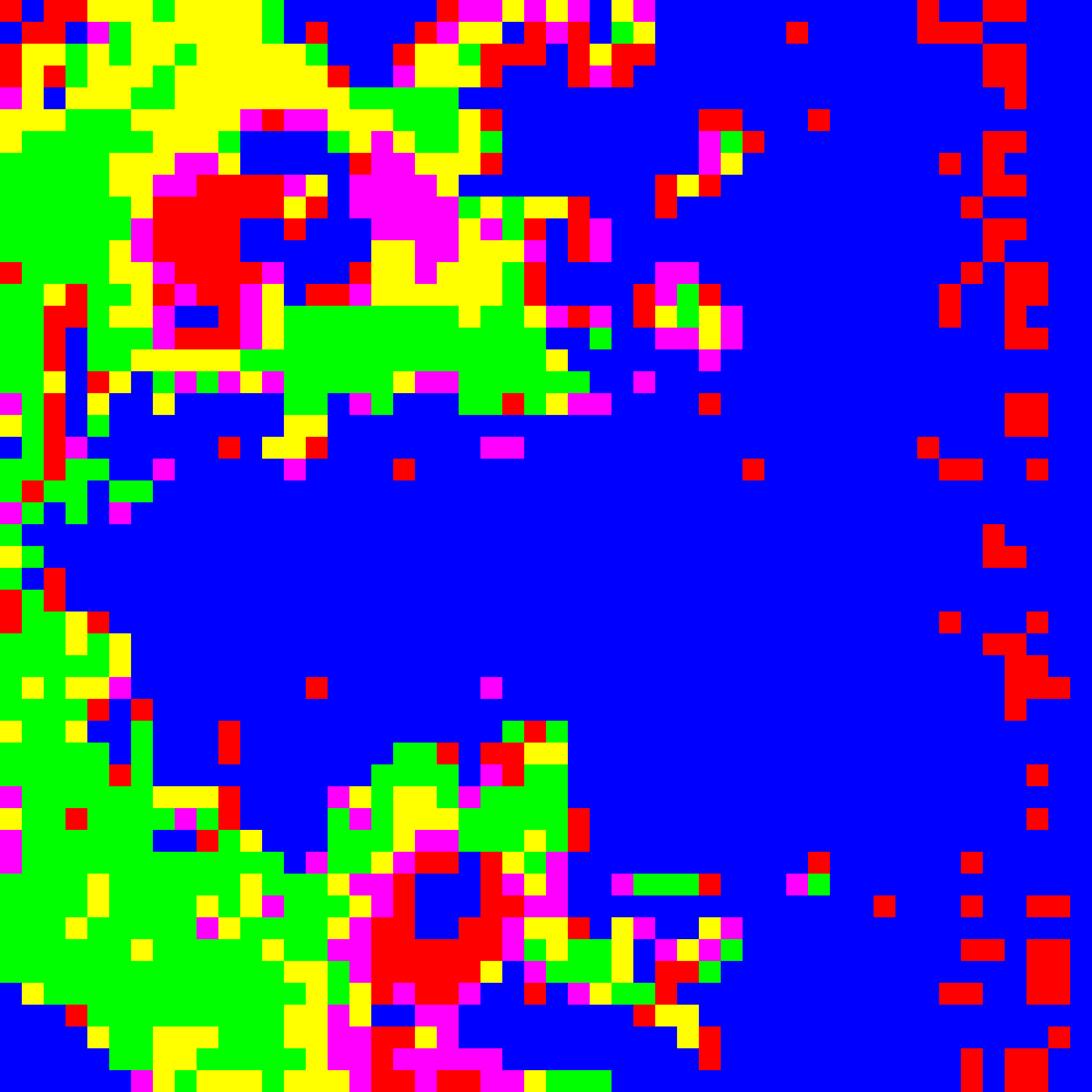
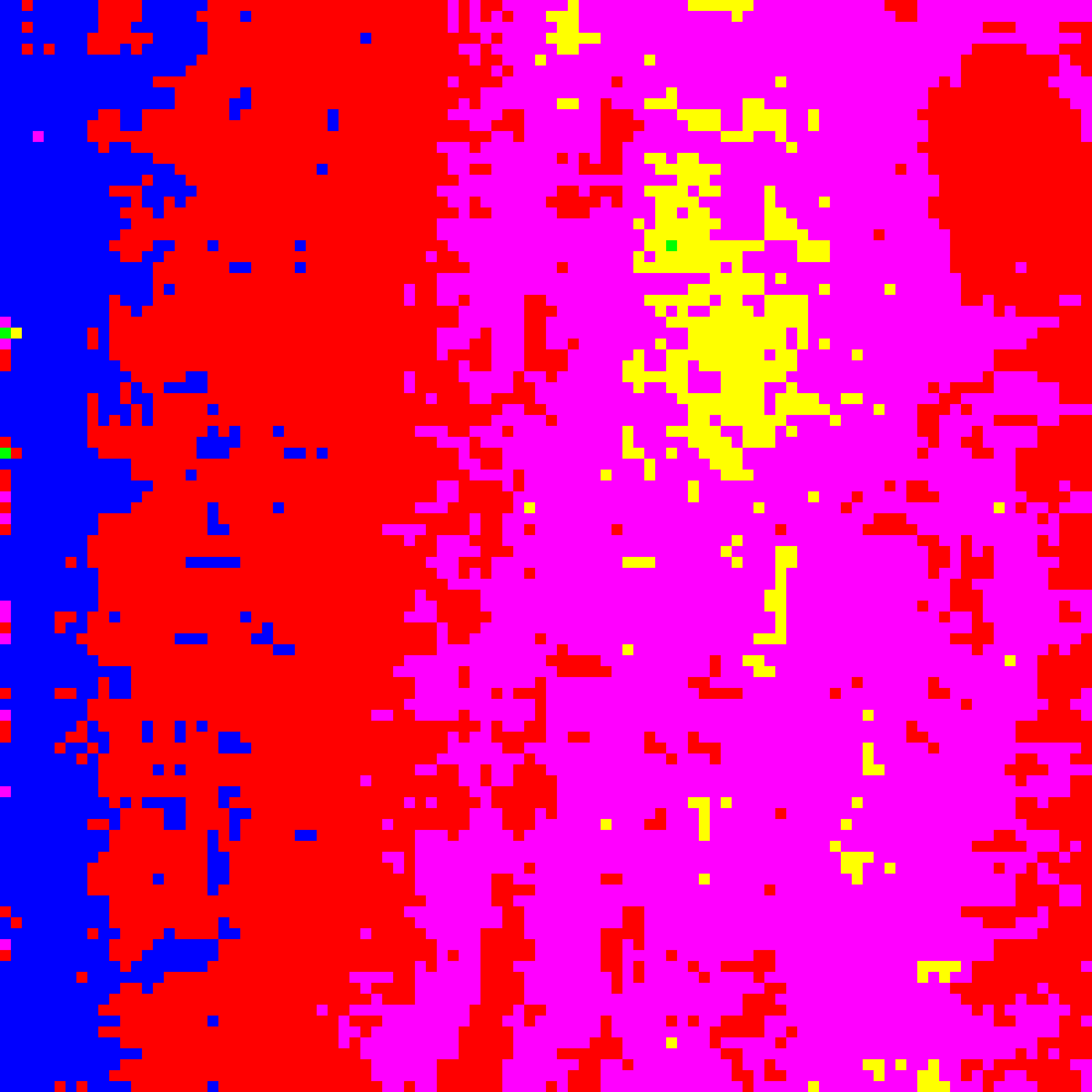
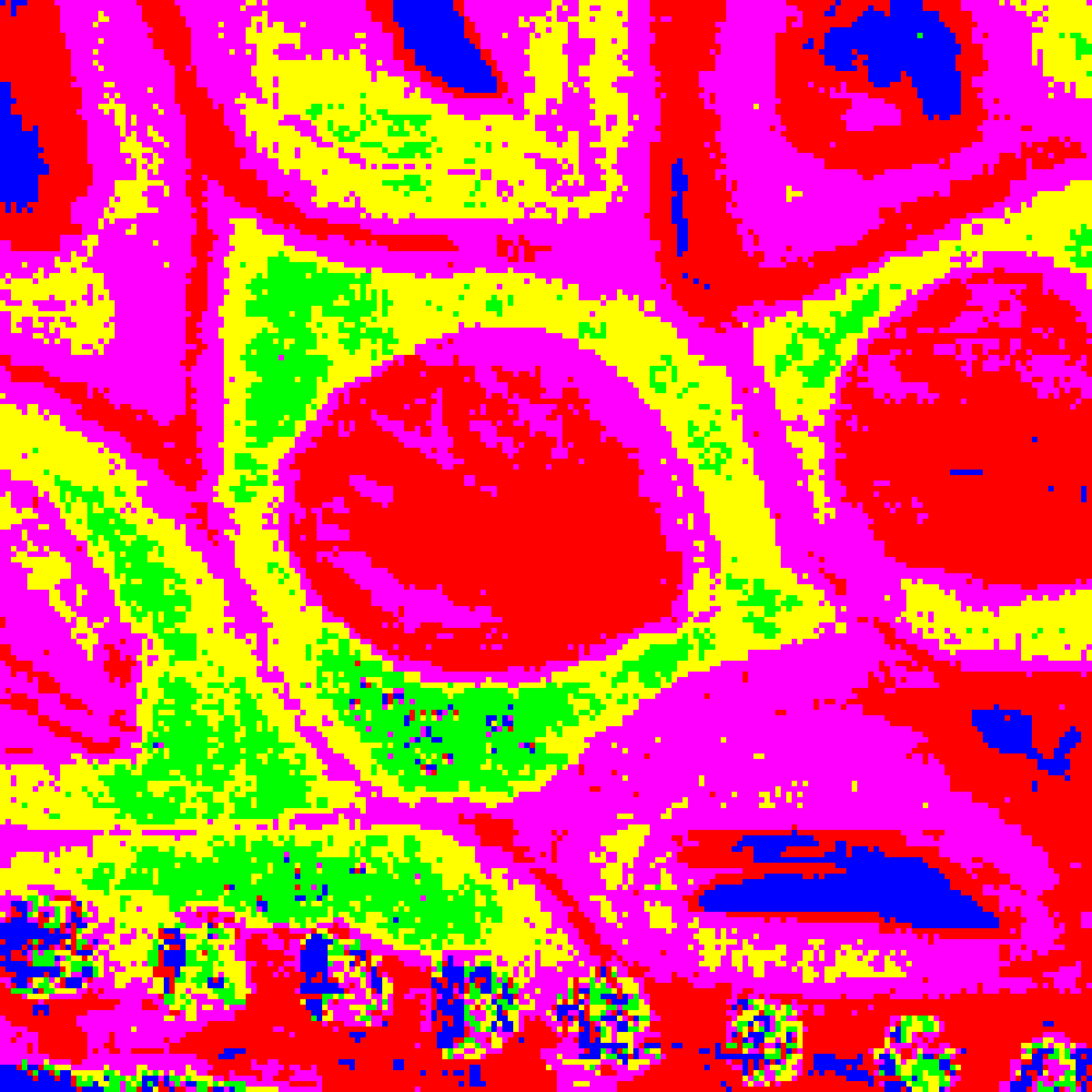
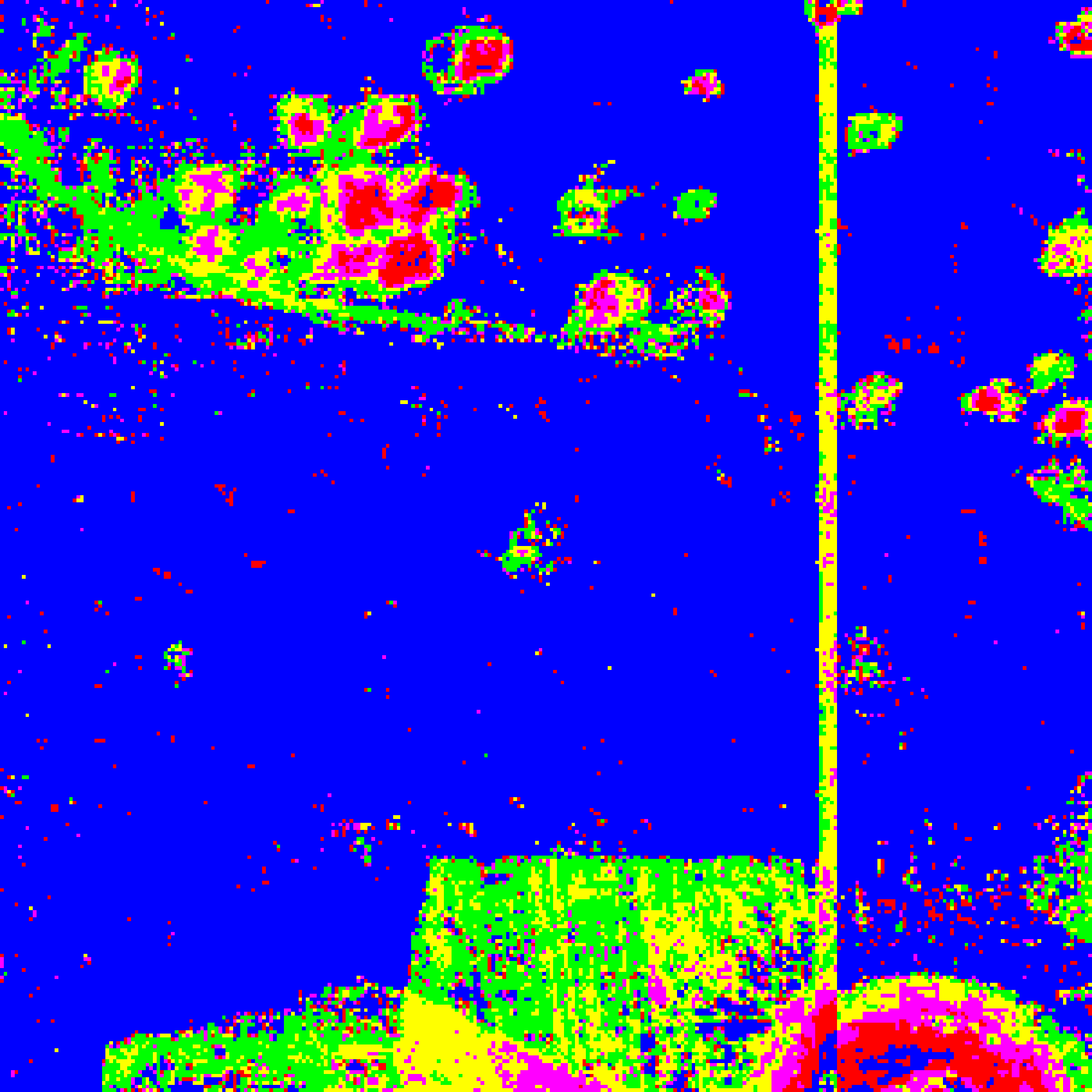
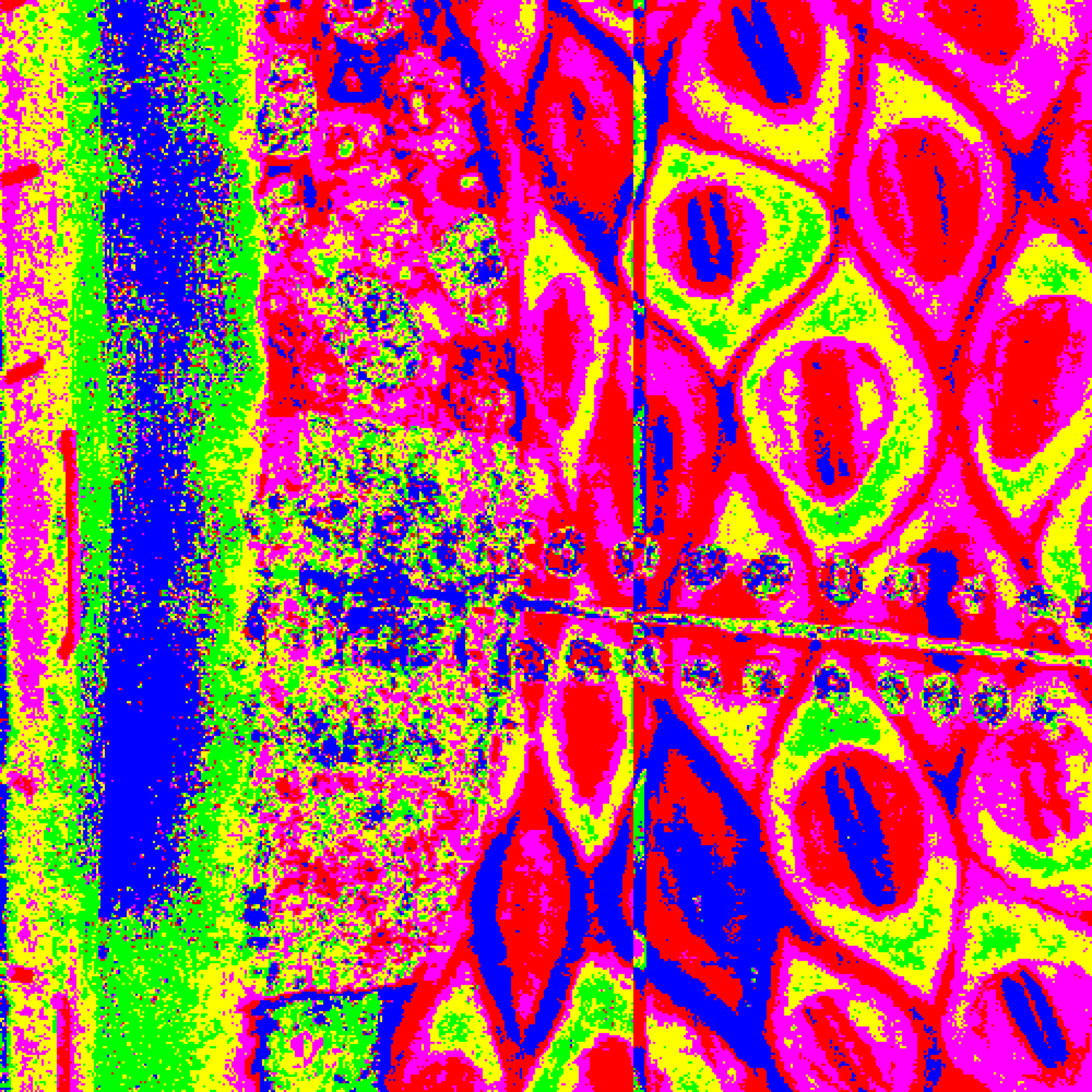
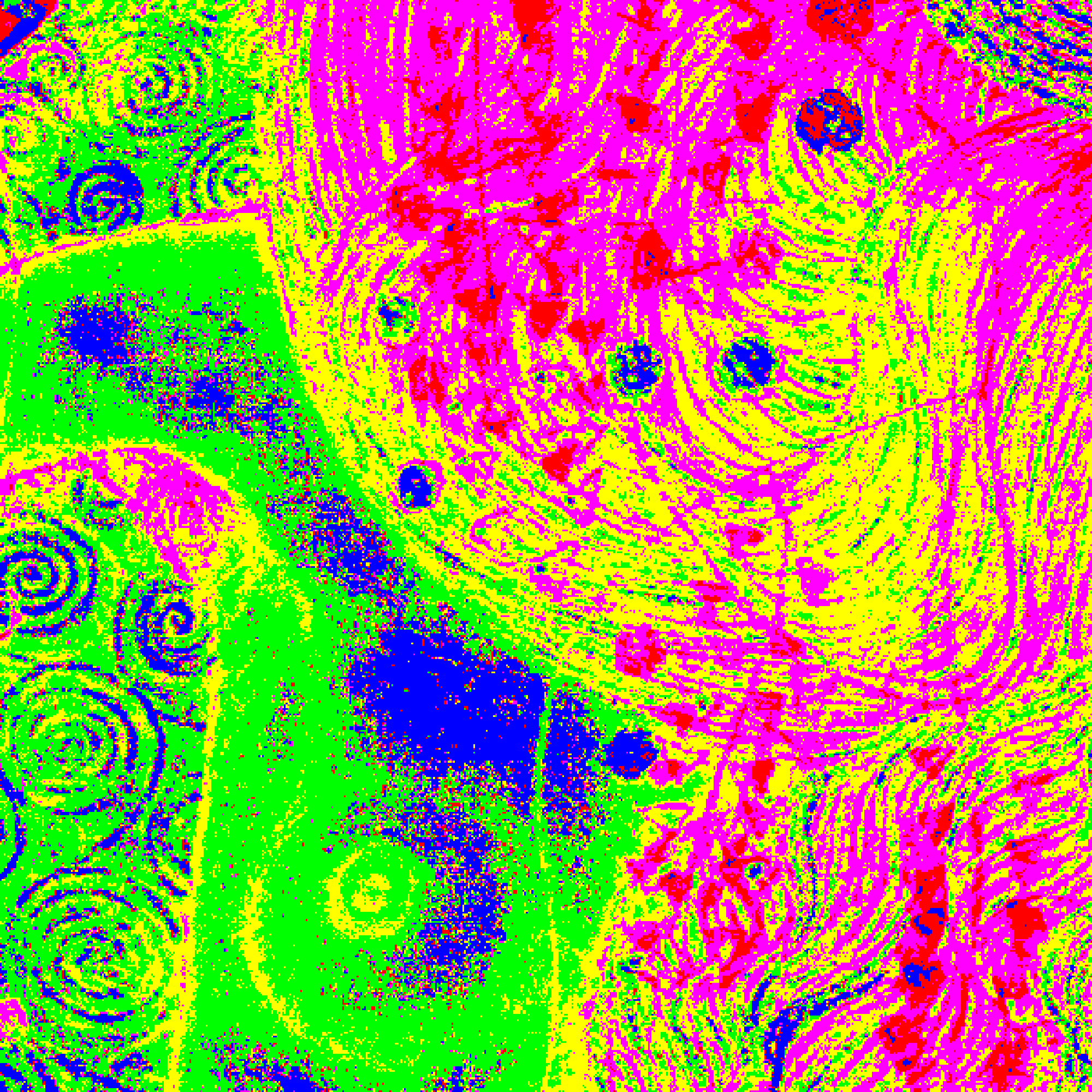
26.03. pipeline v1
res:2000x2000


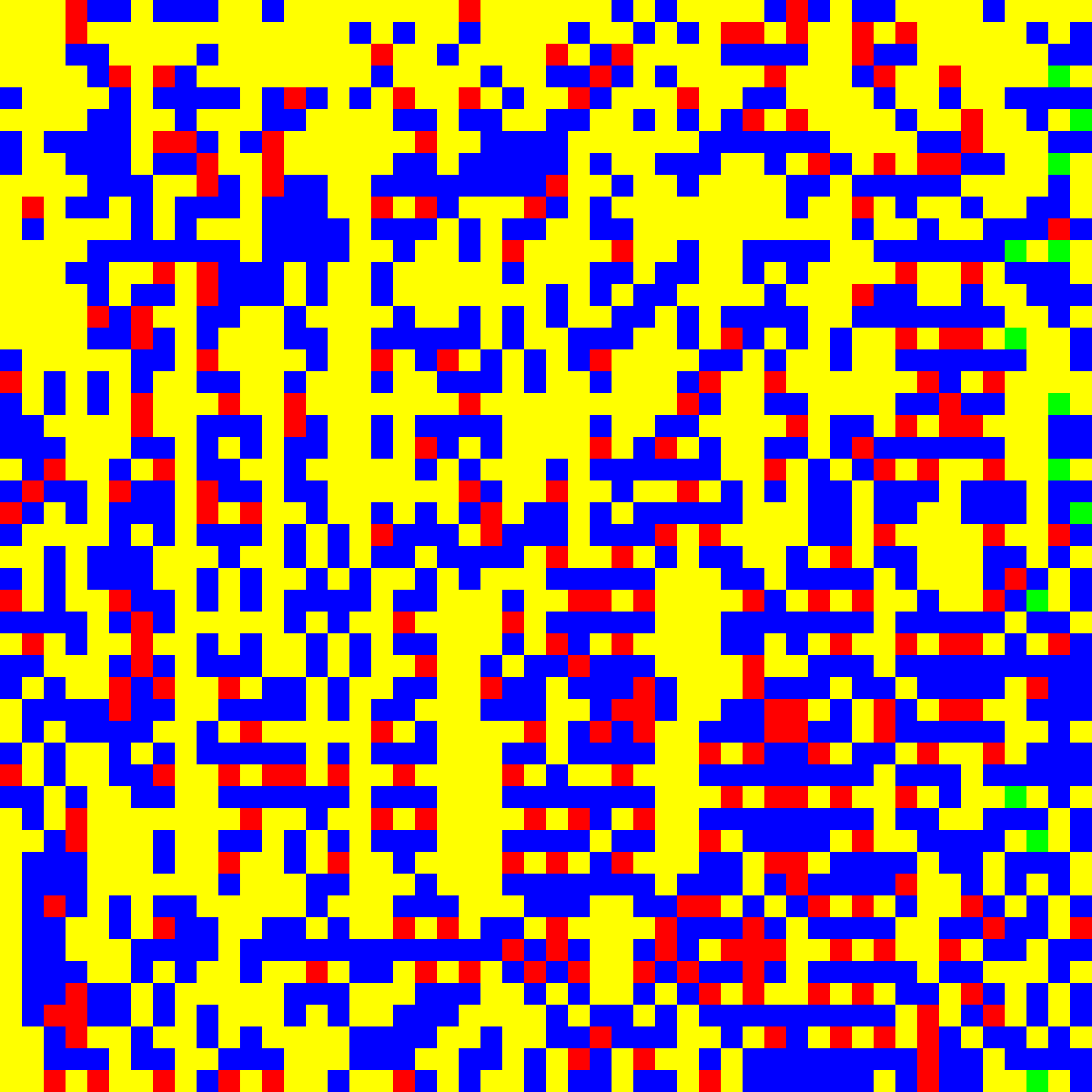
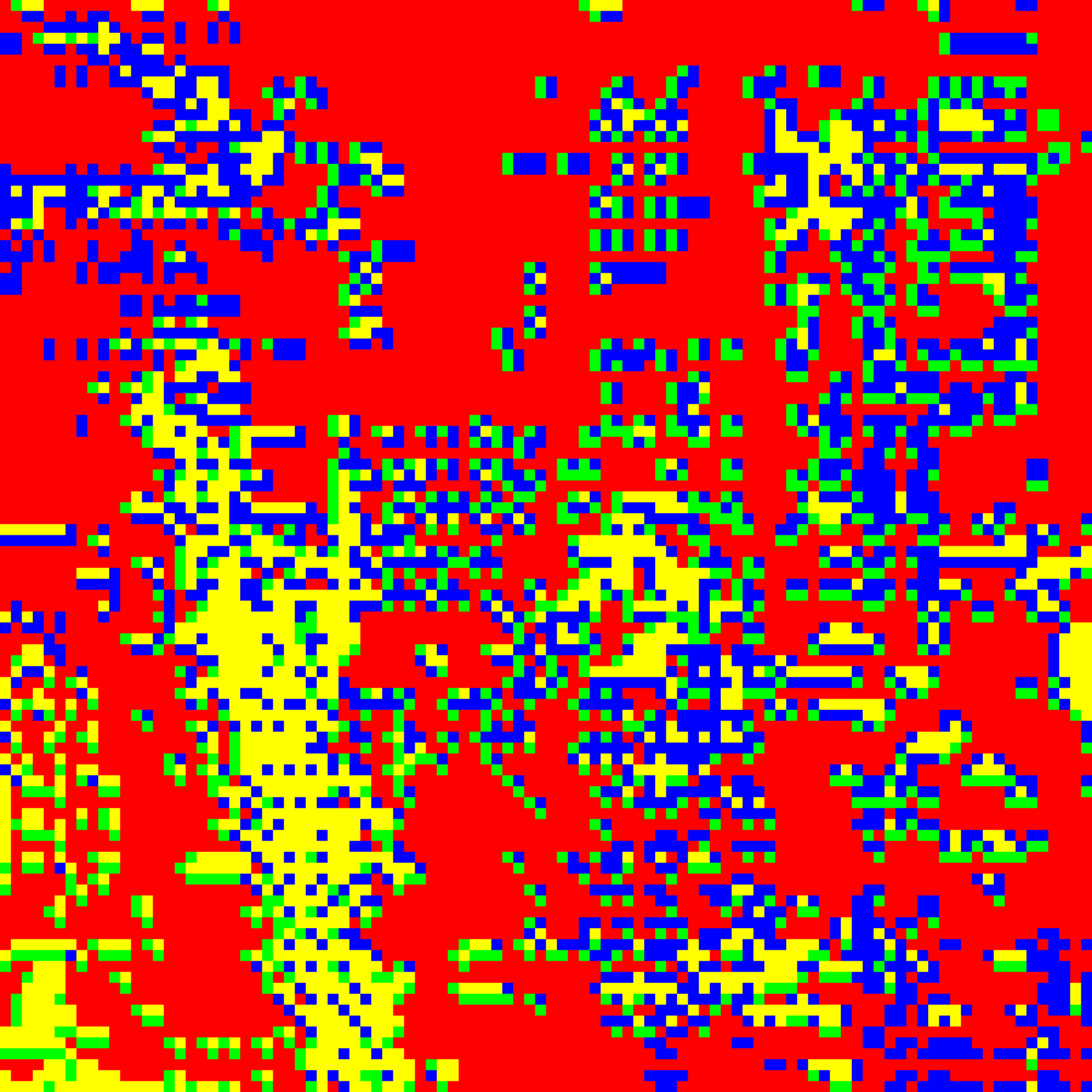
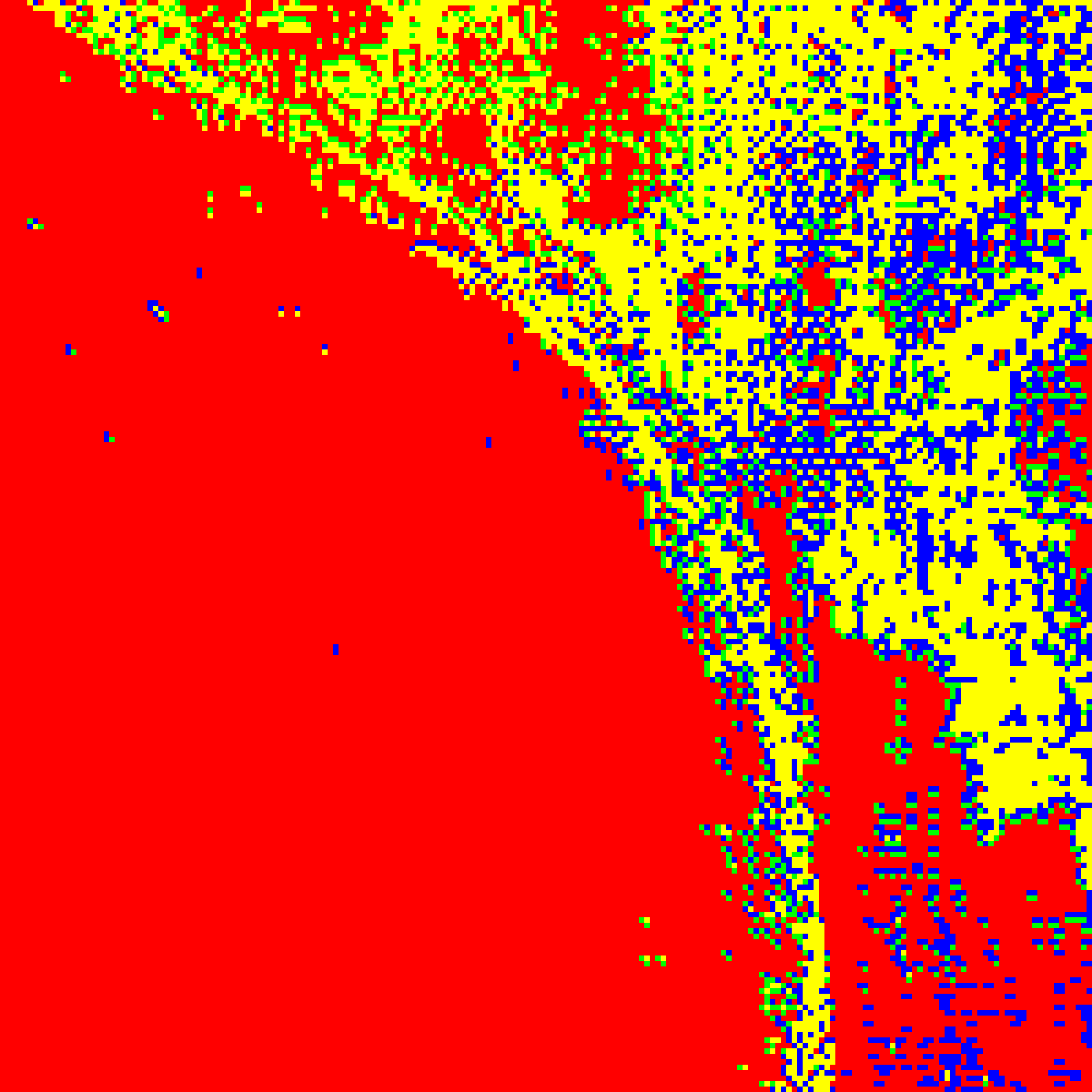
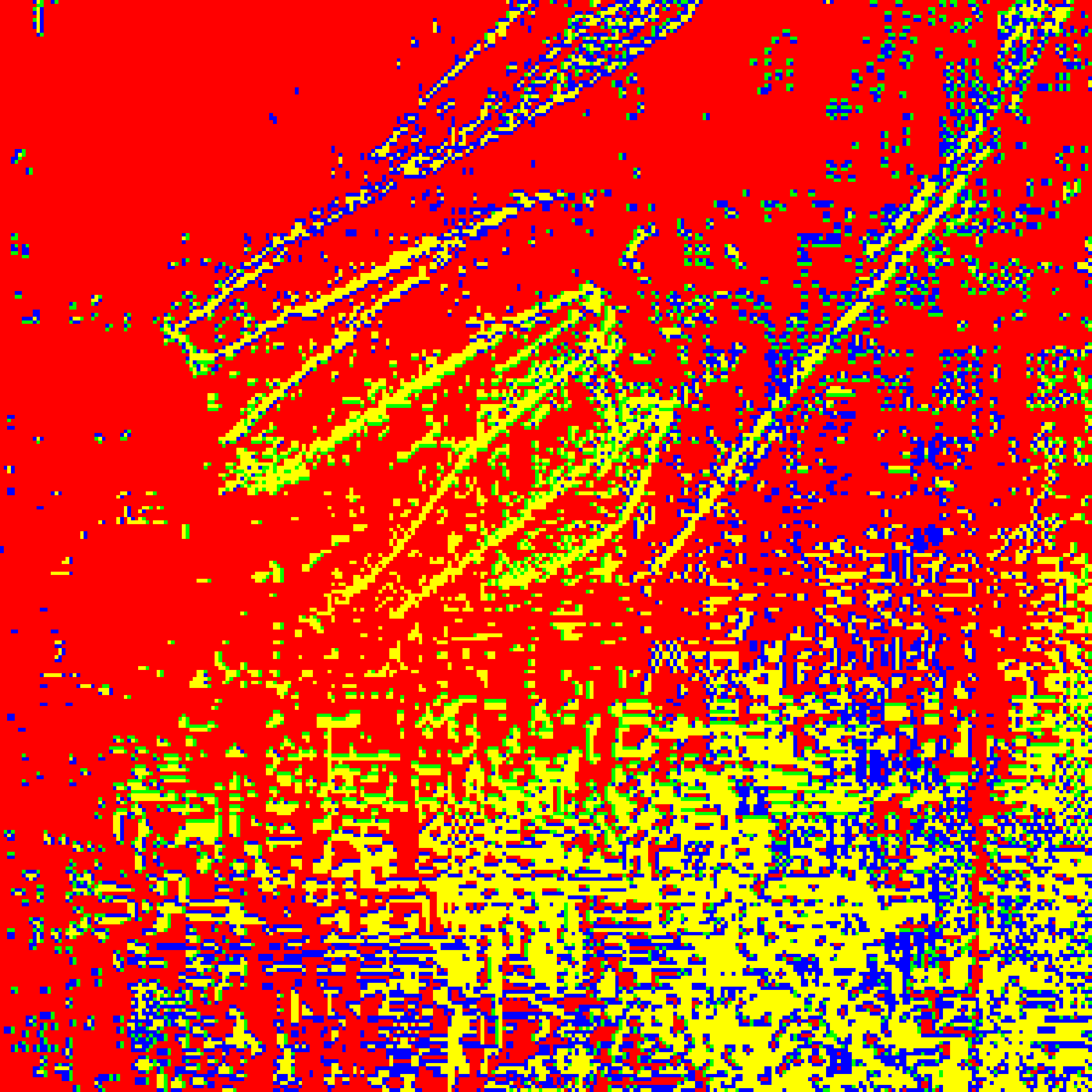

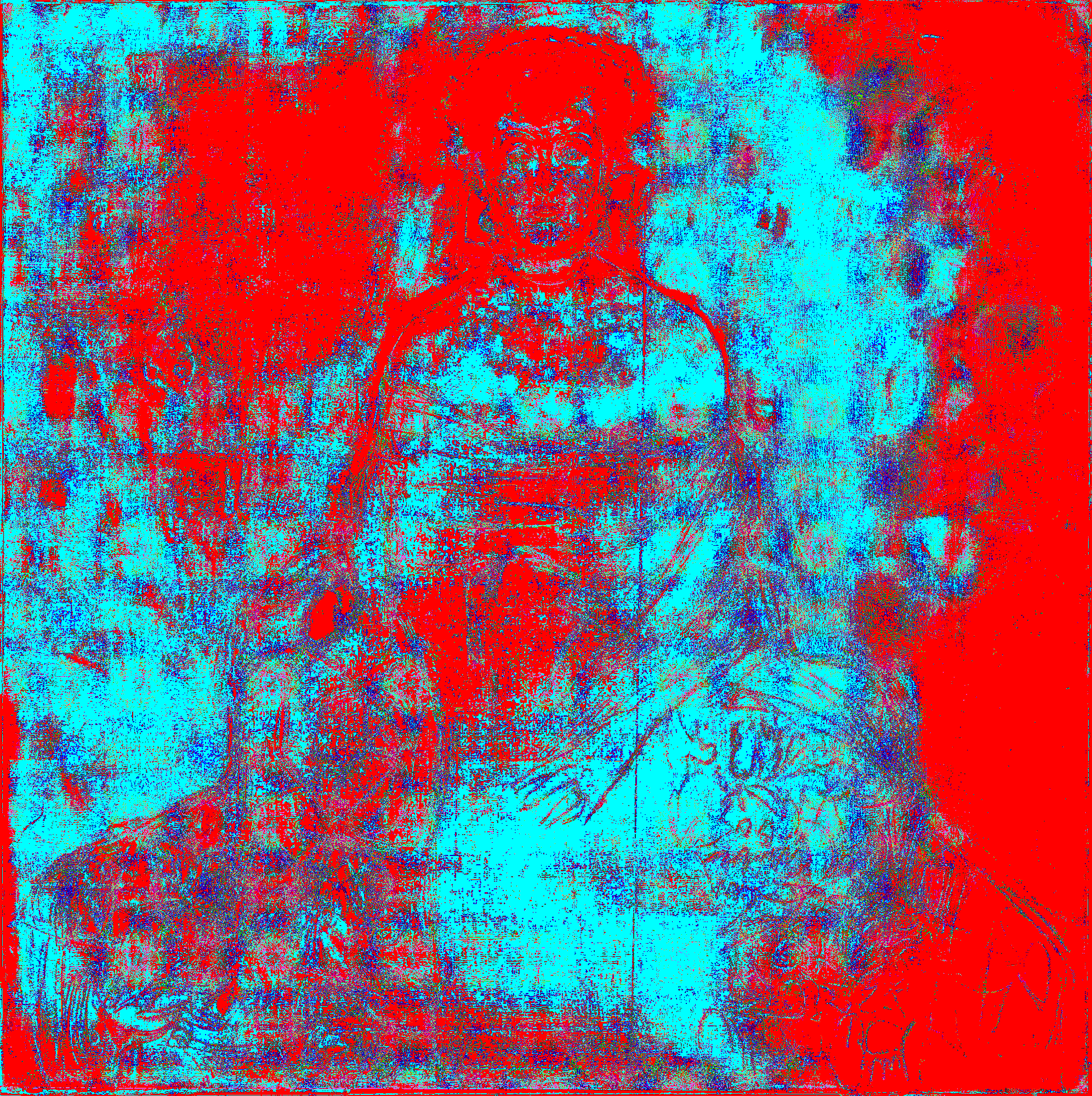
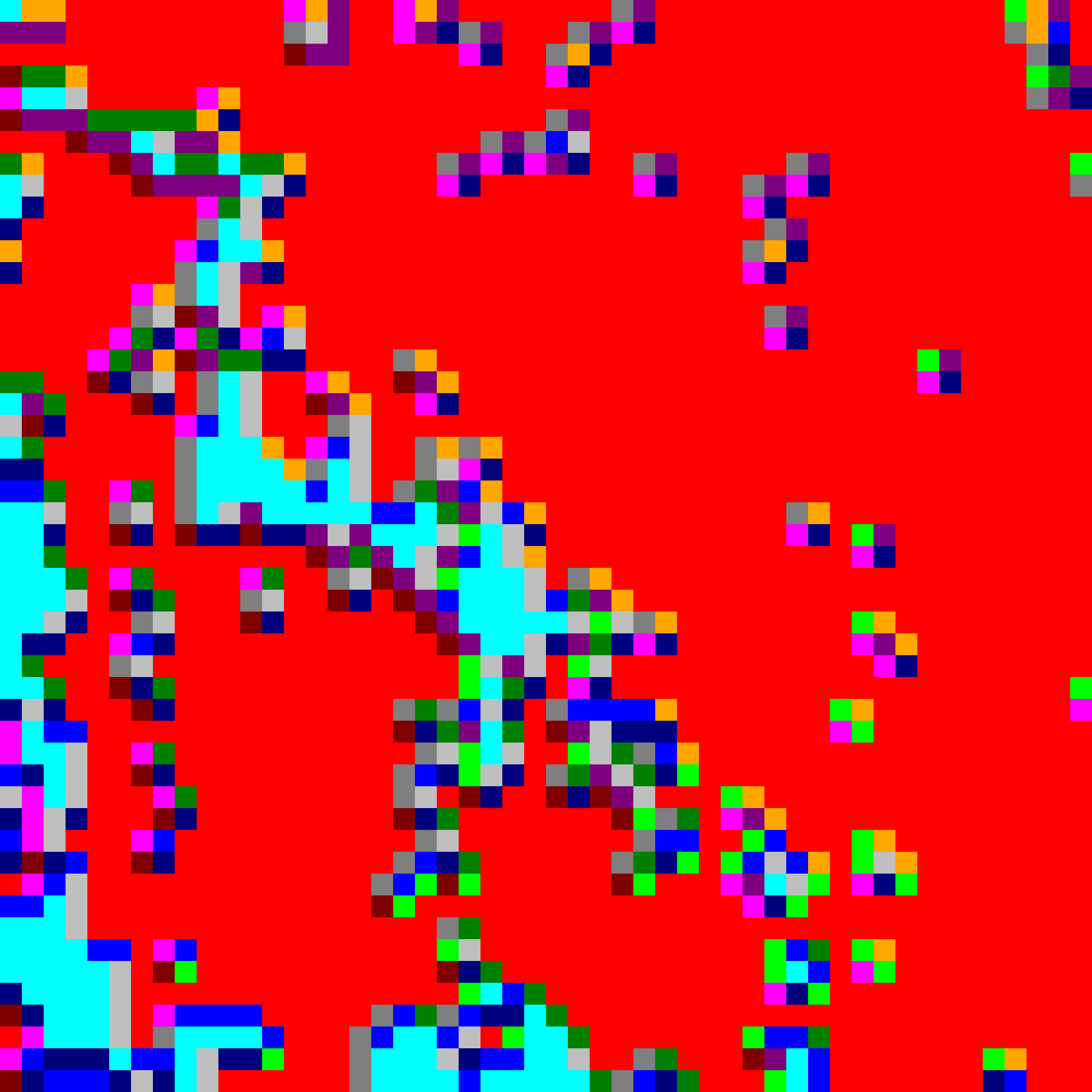

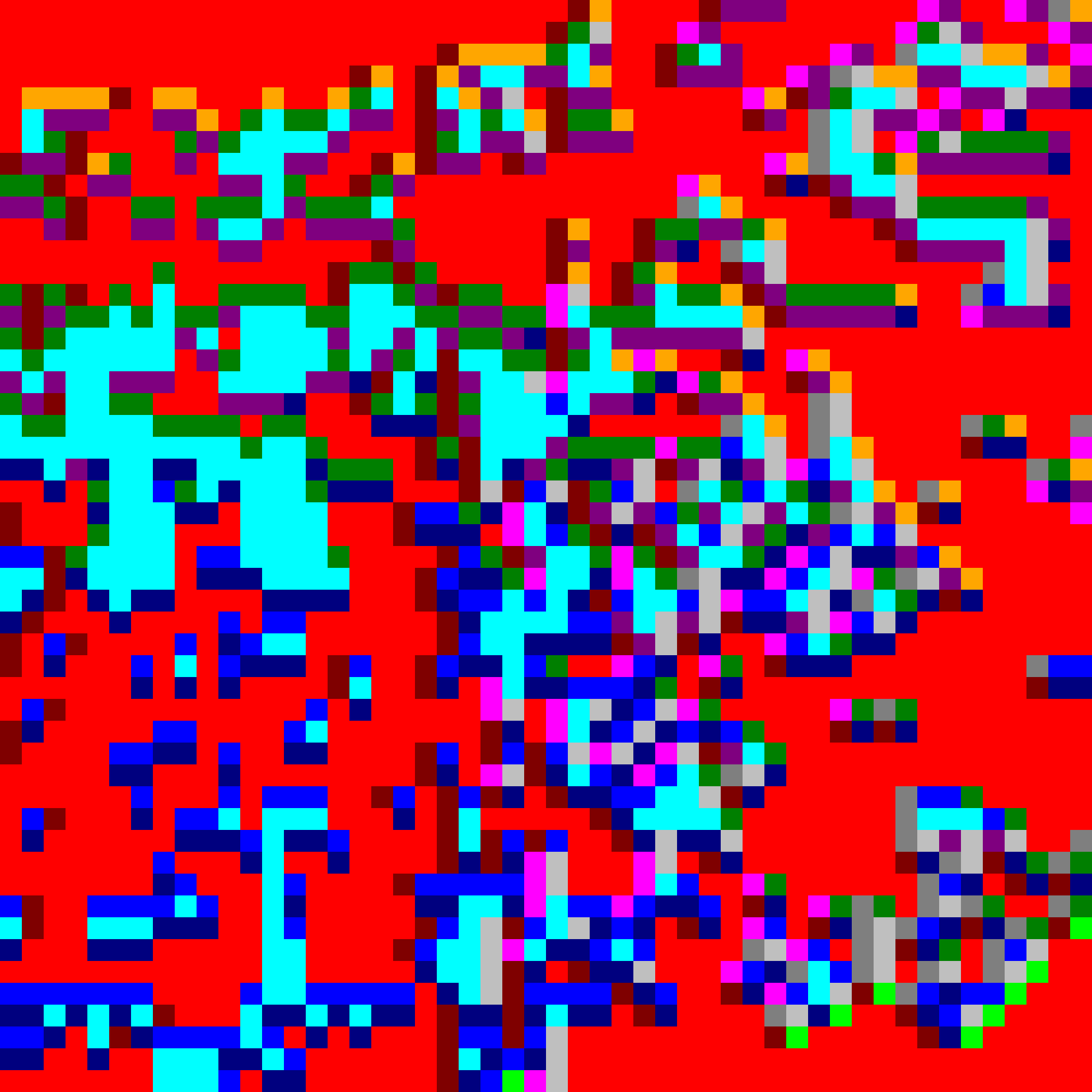
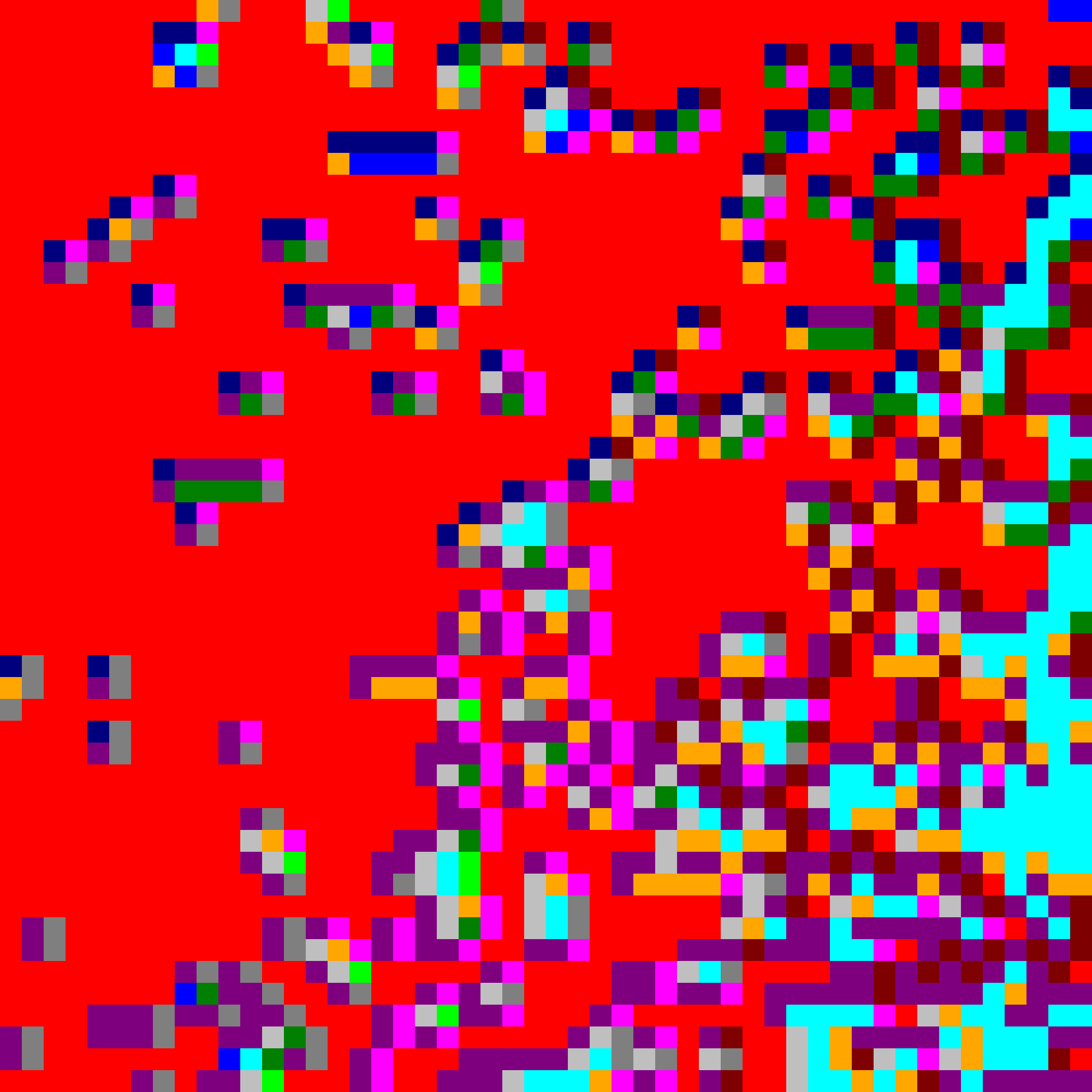
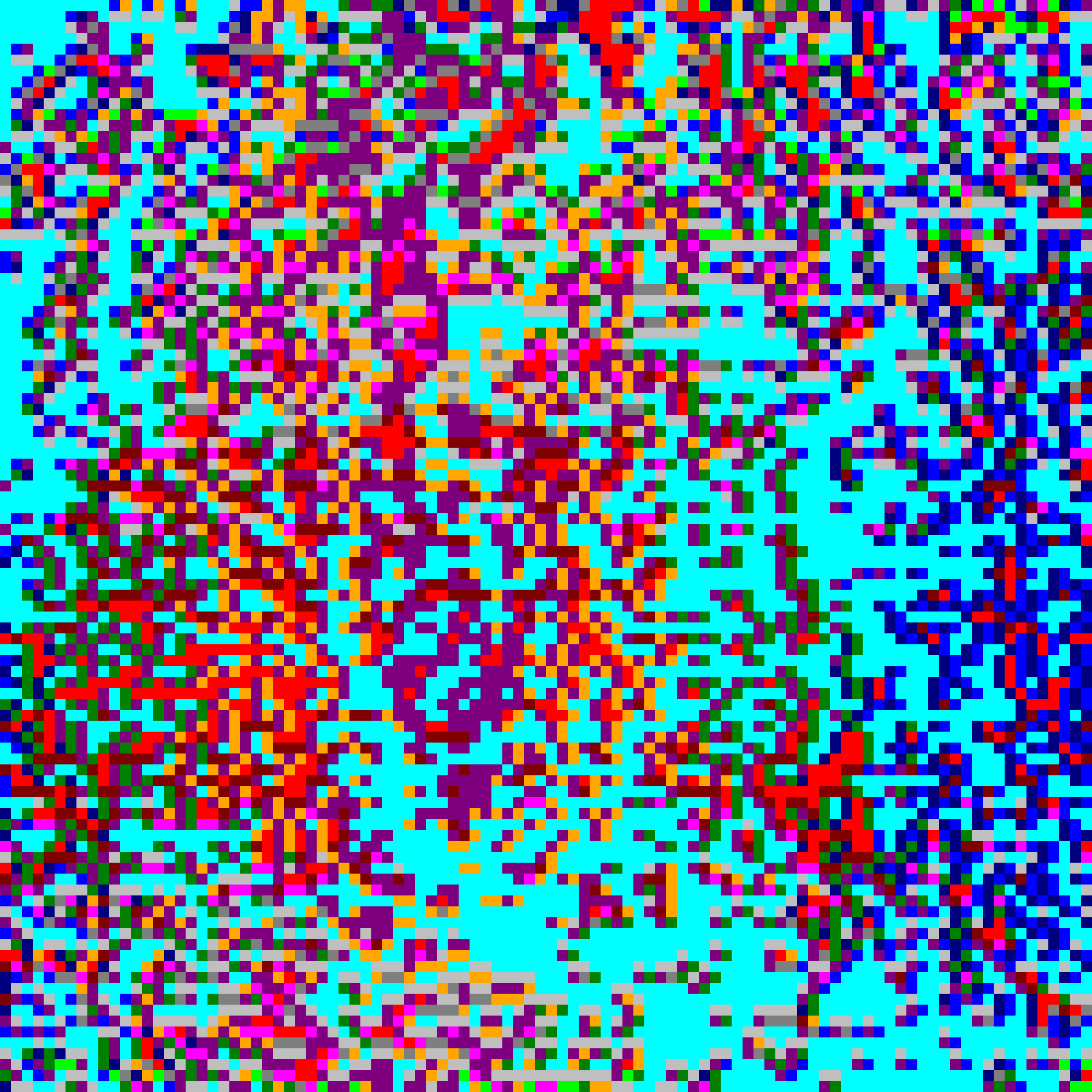
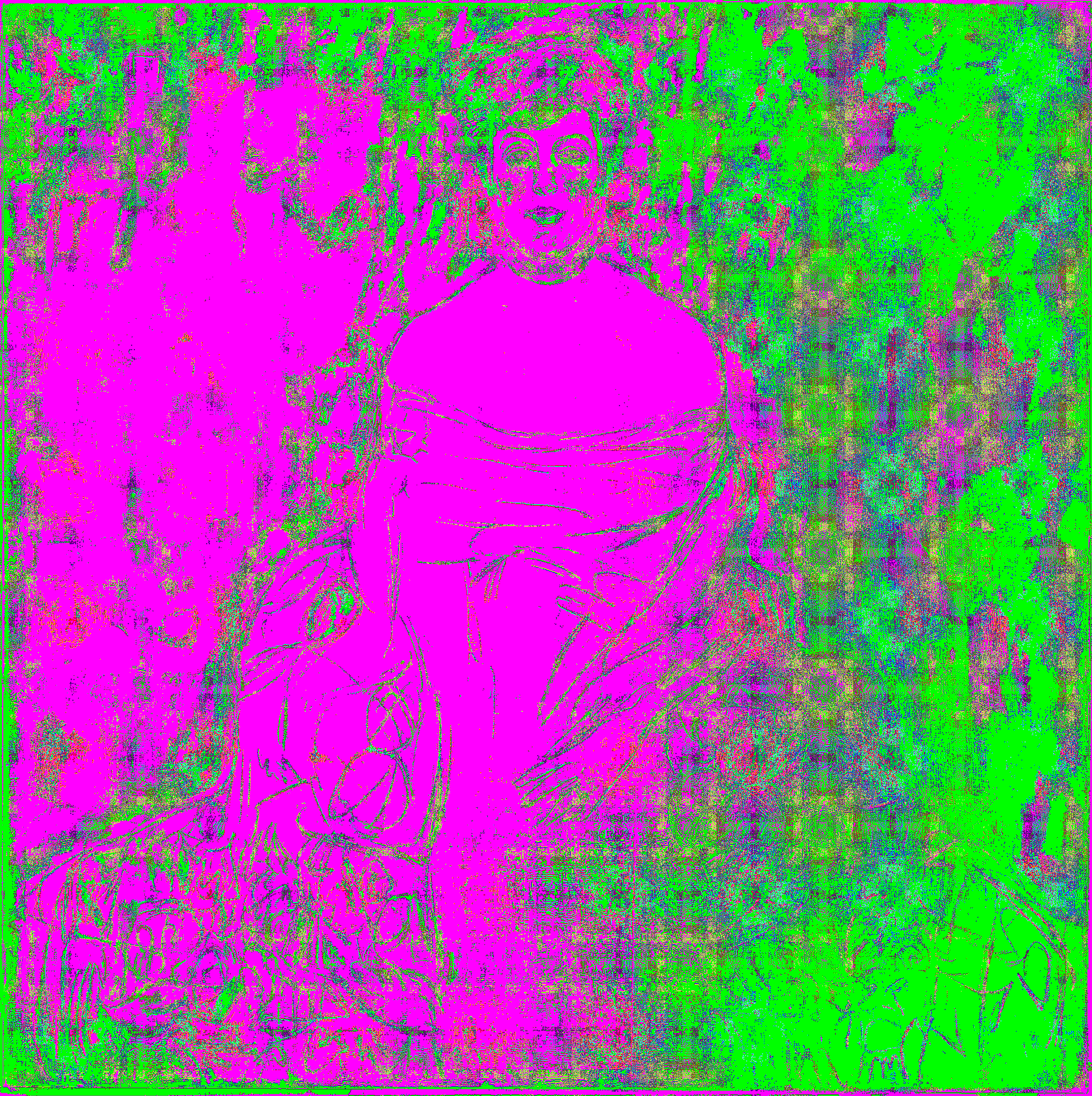
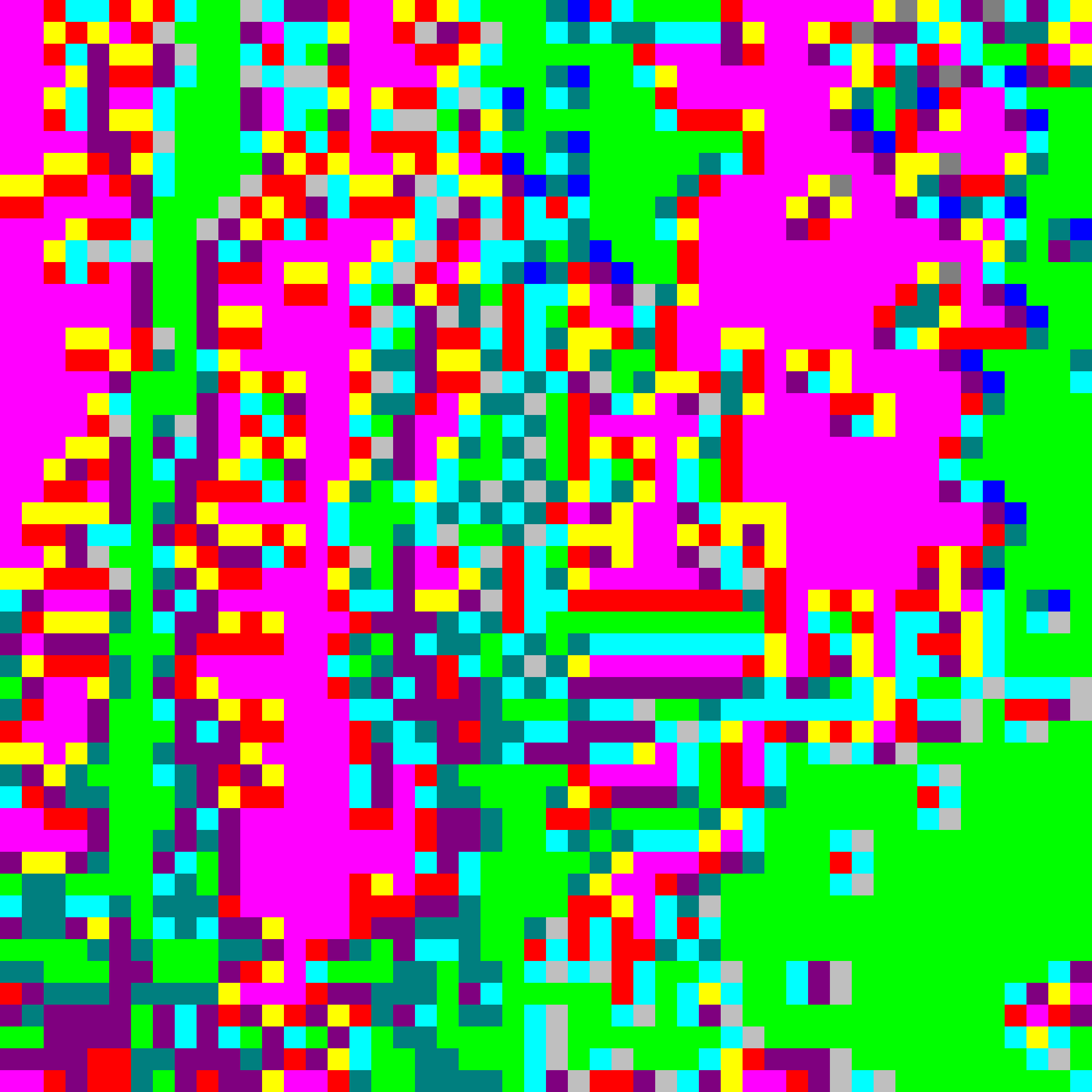
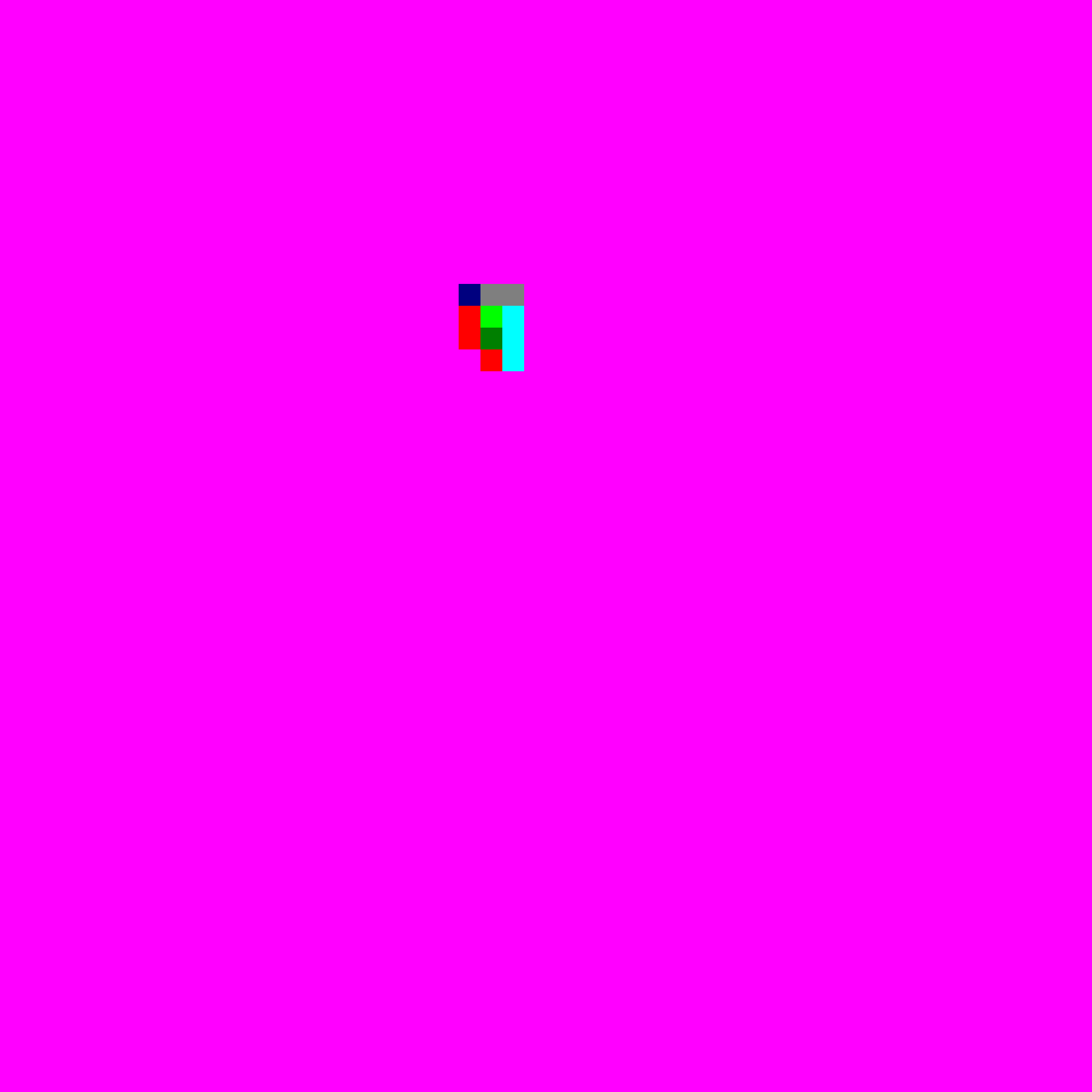
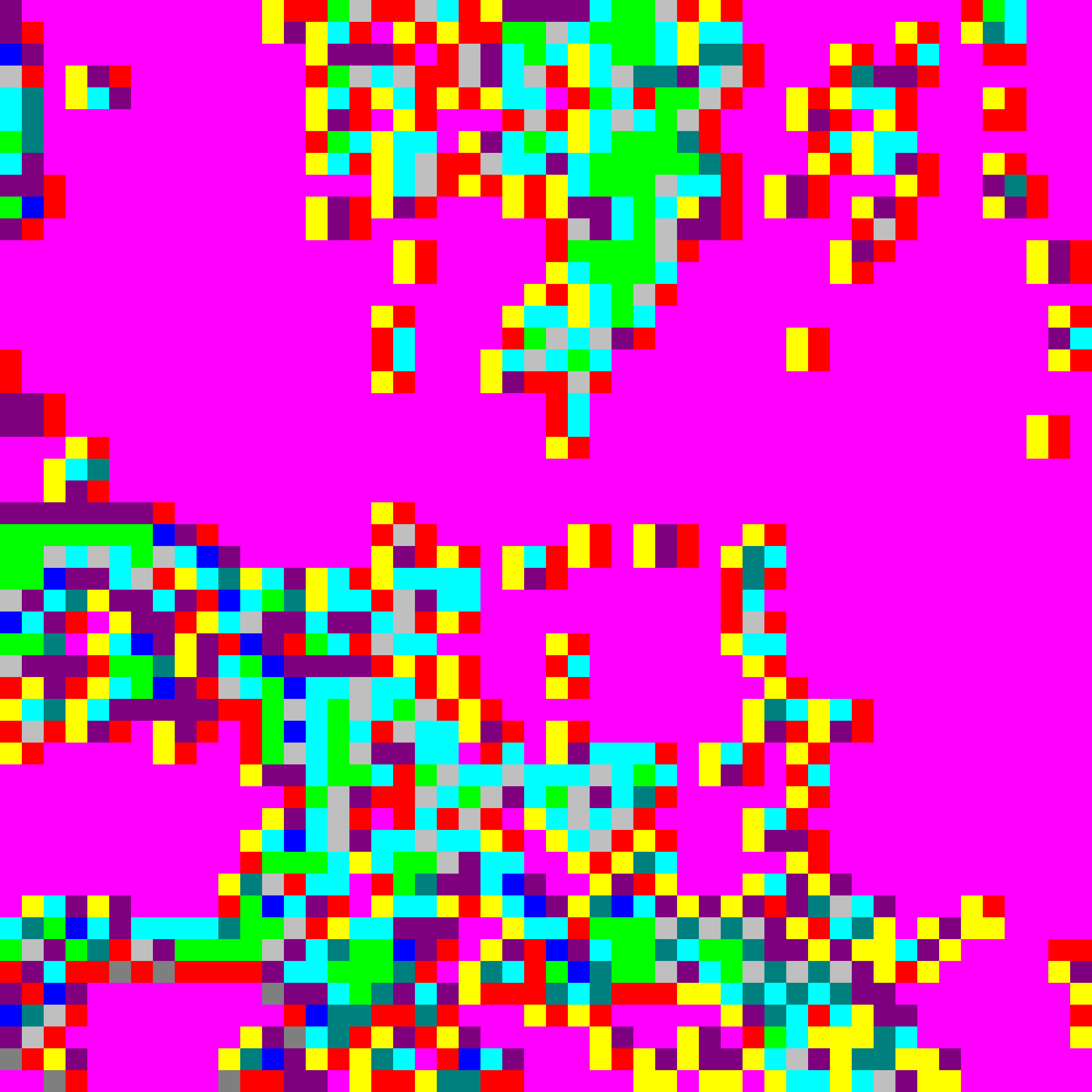
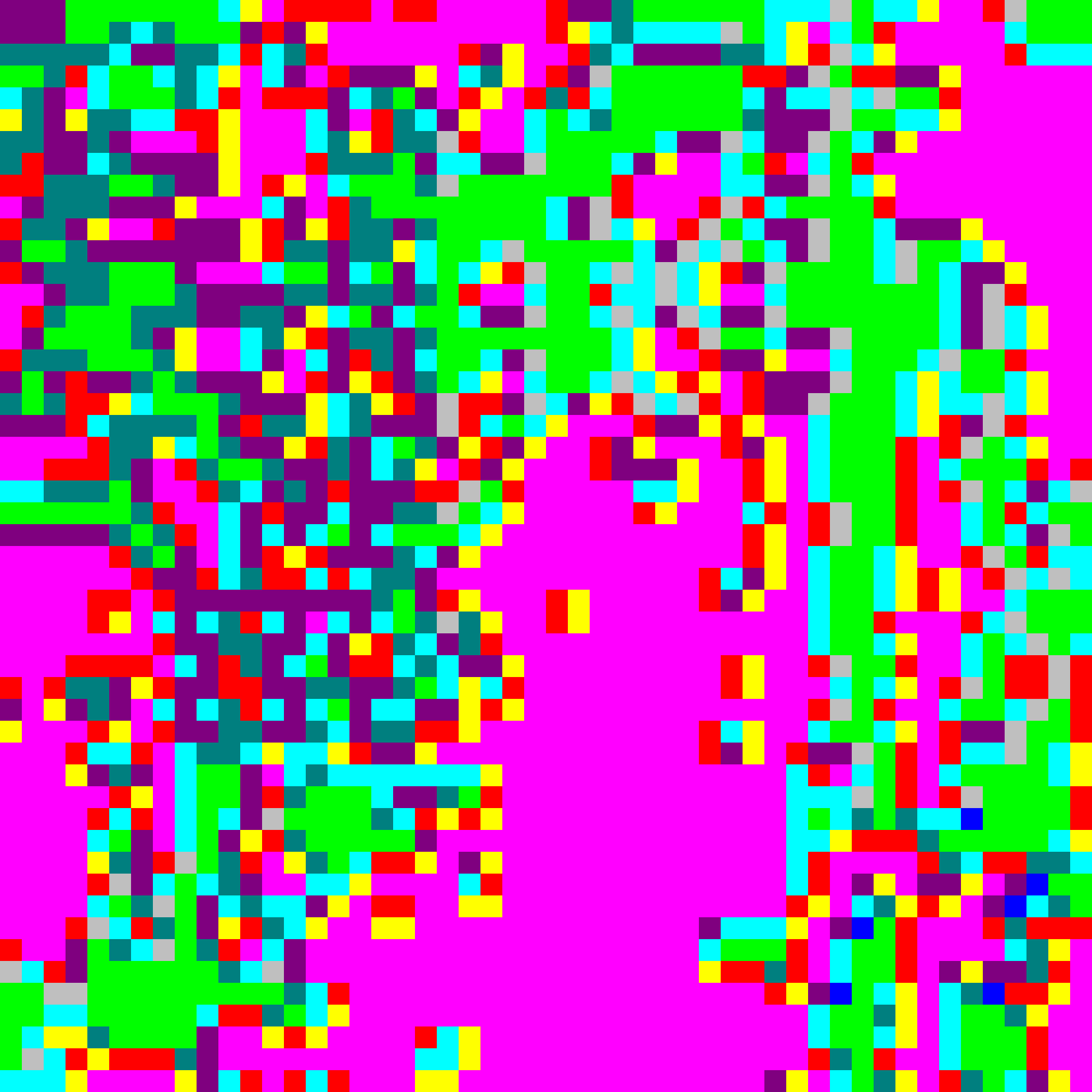
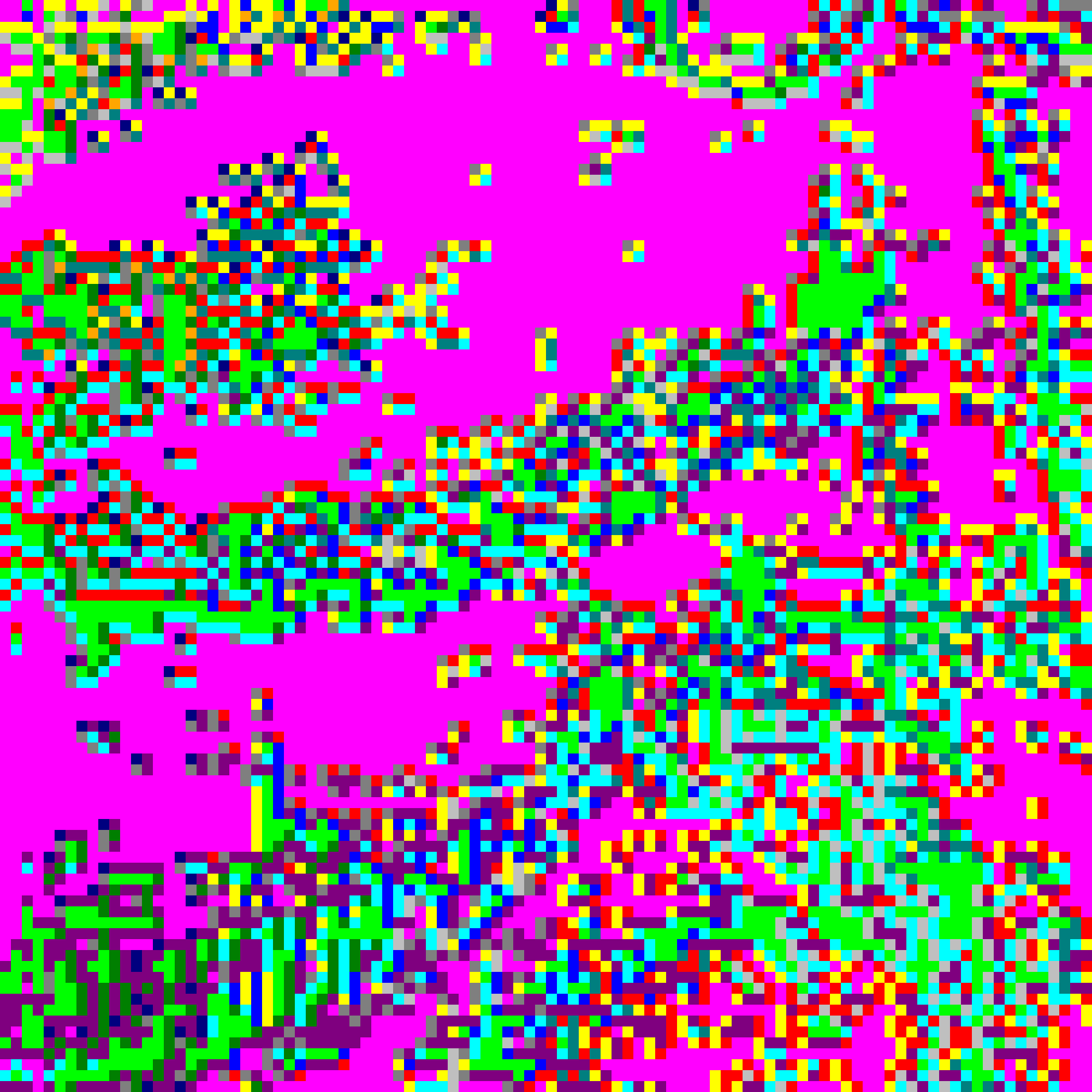
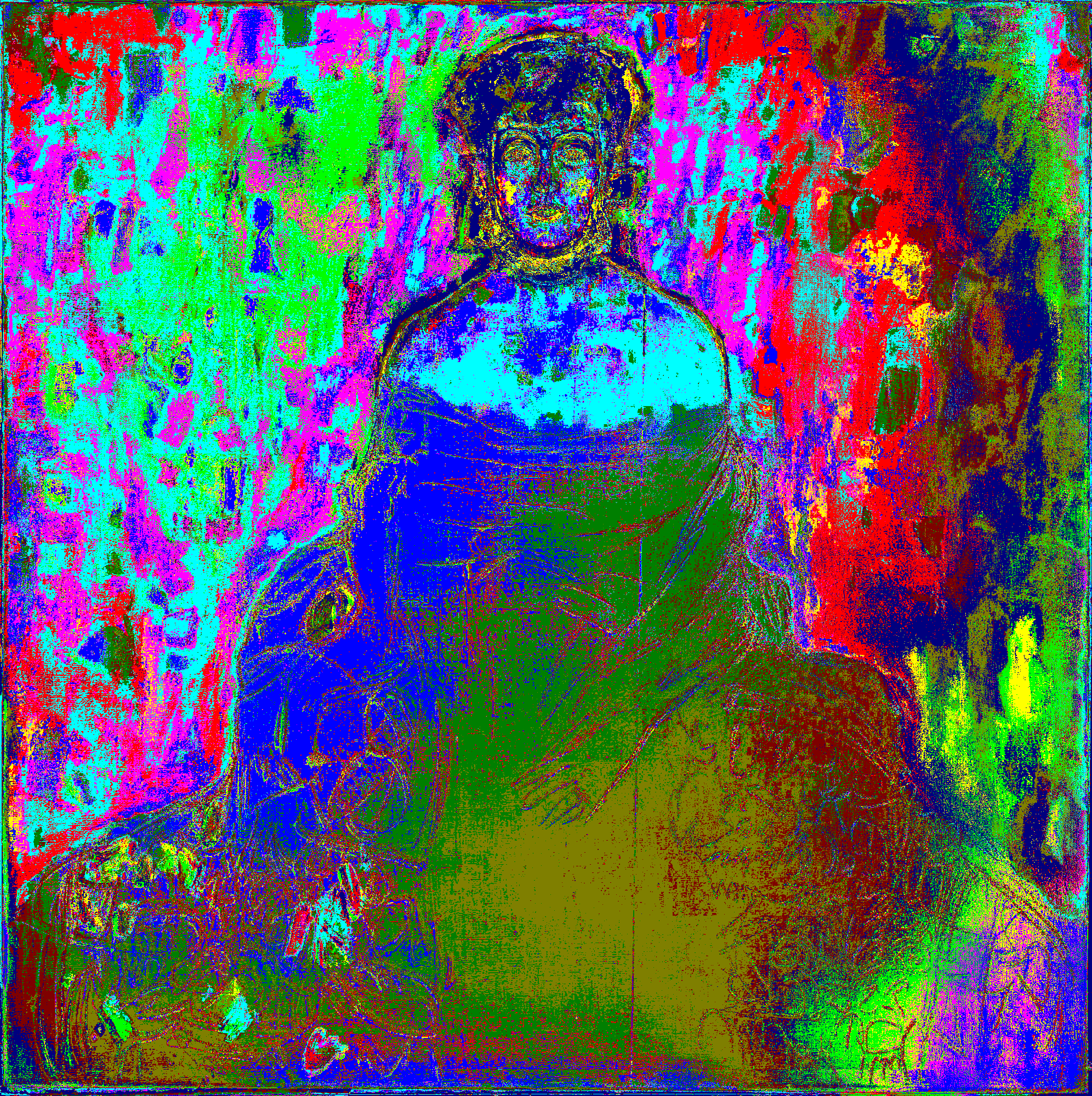
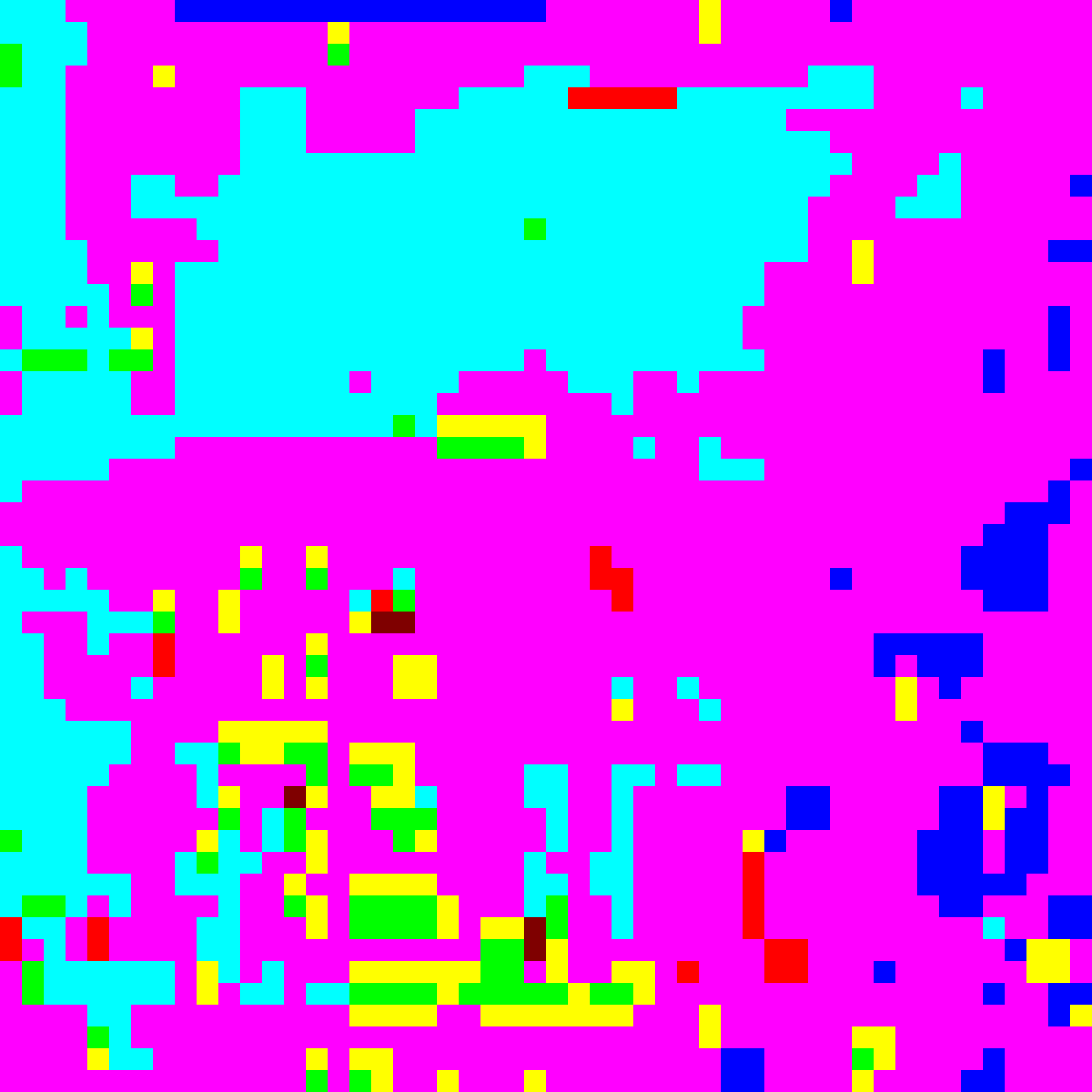
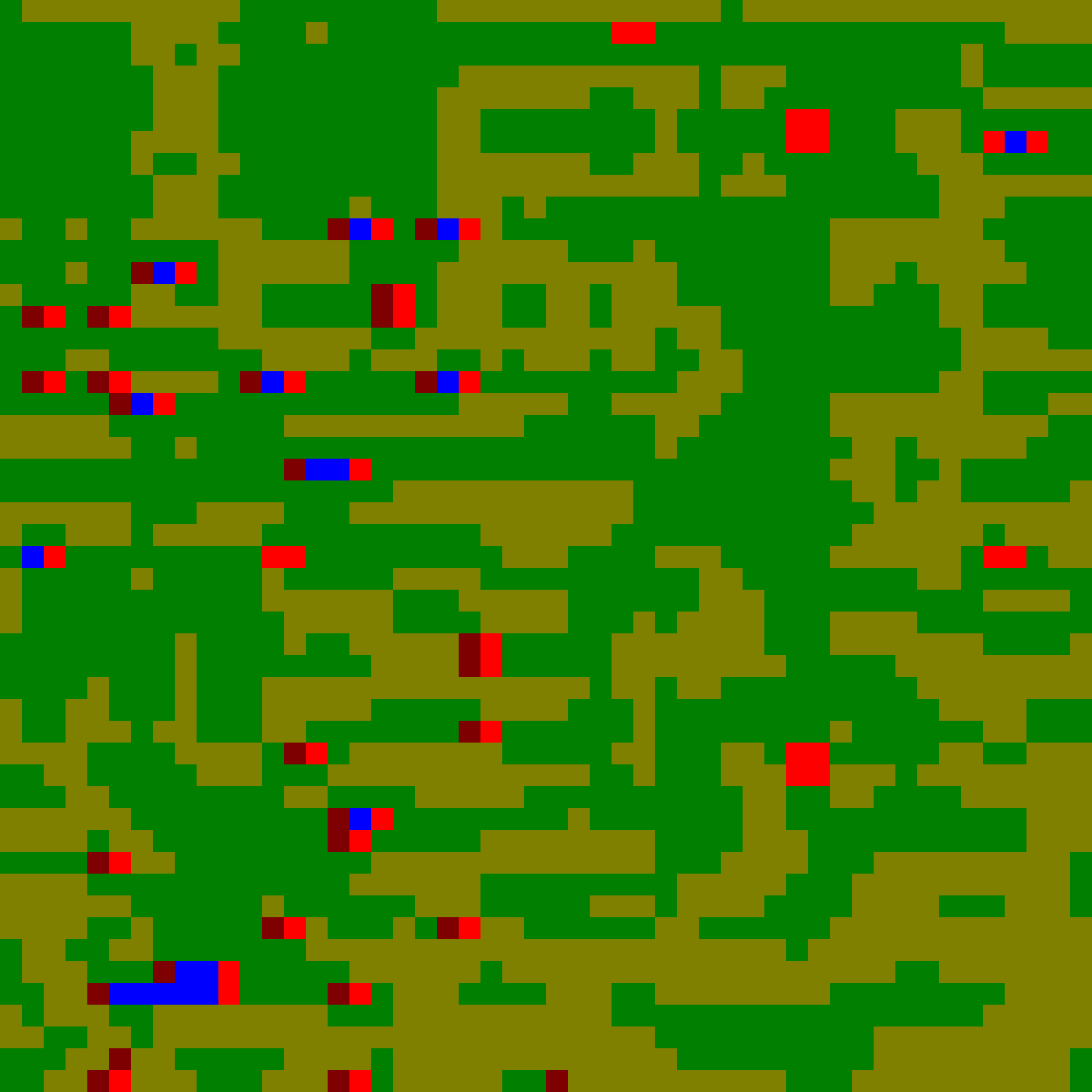
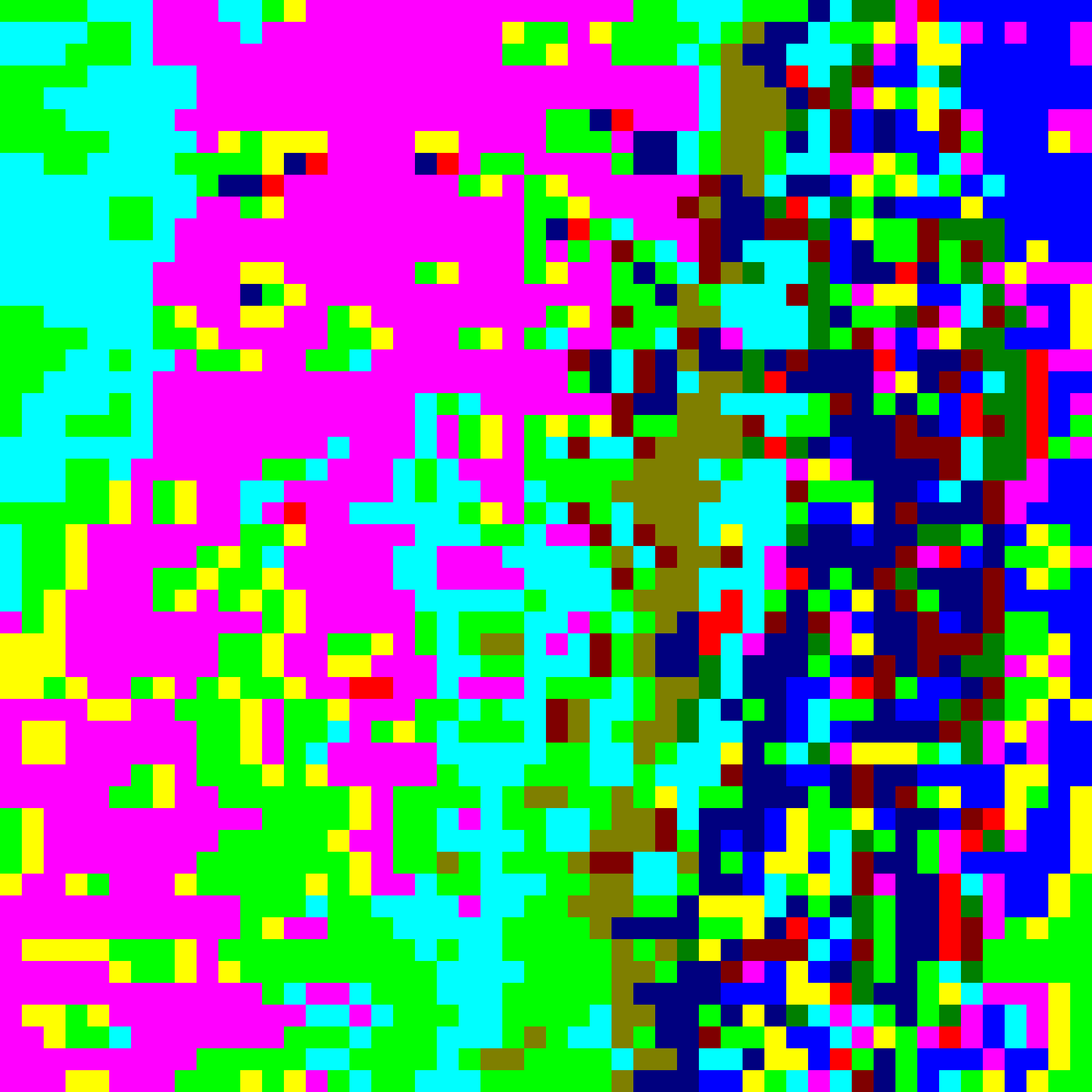
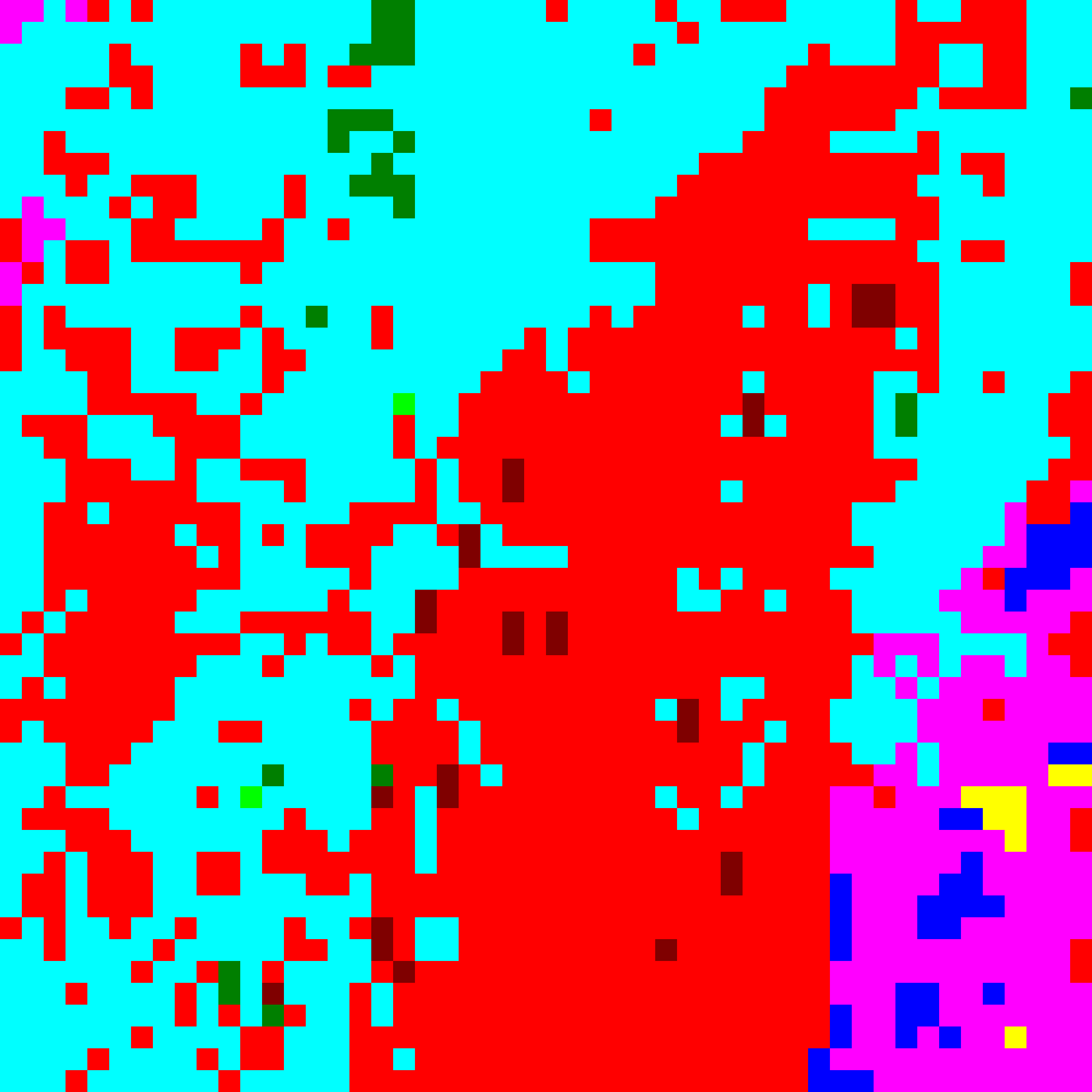

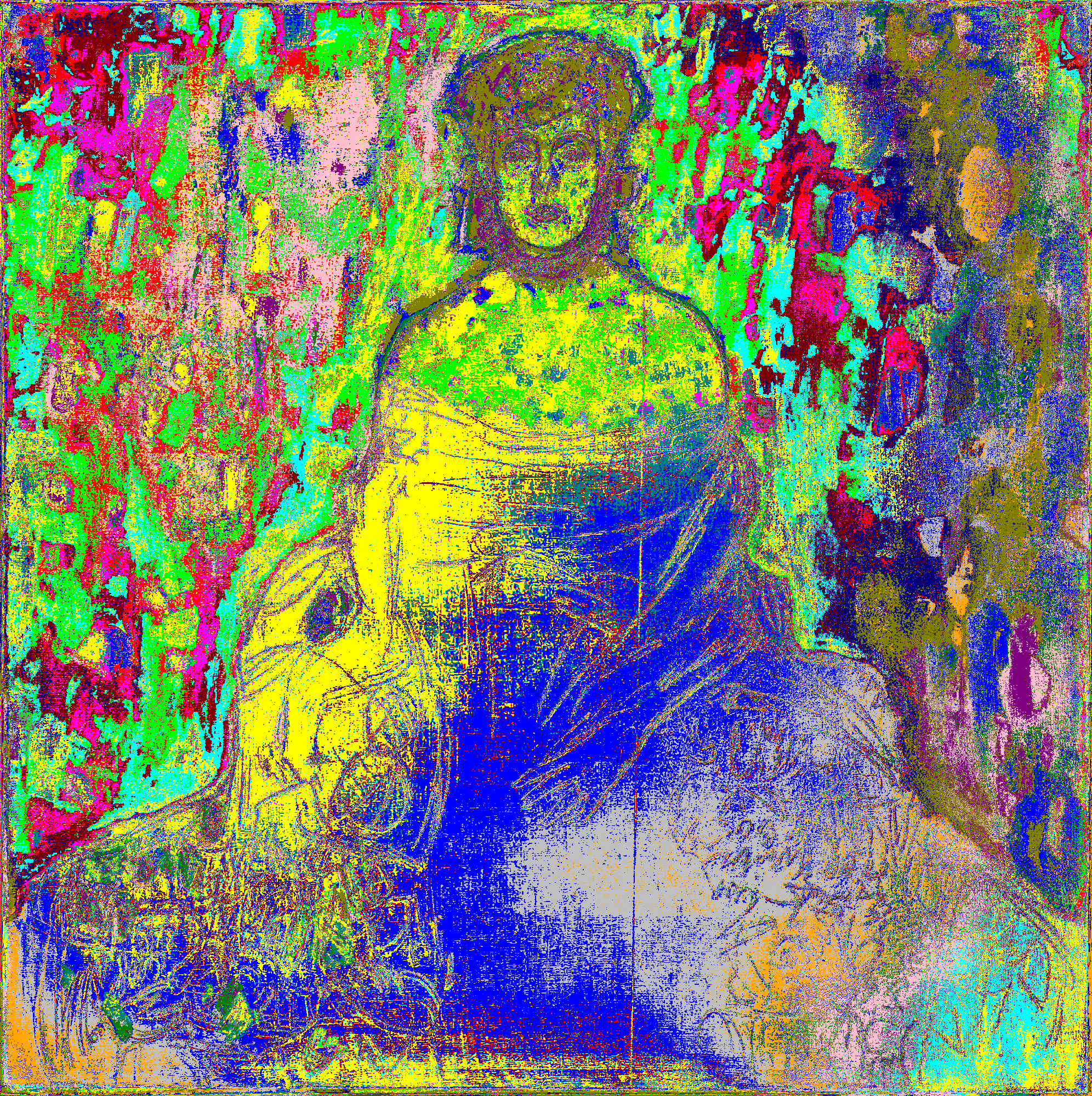
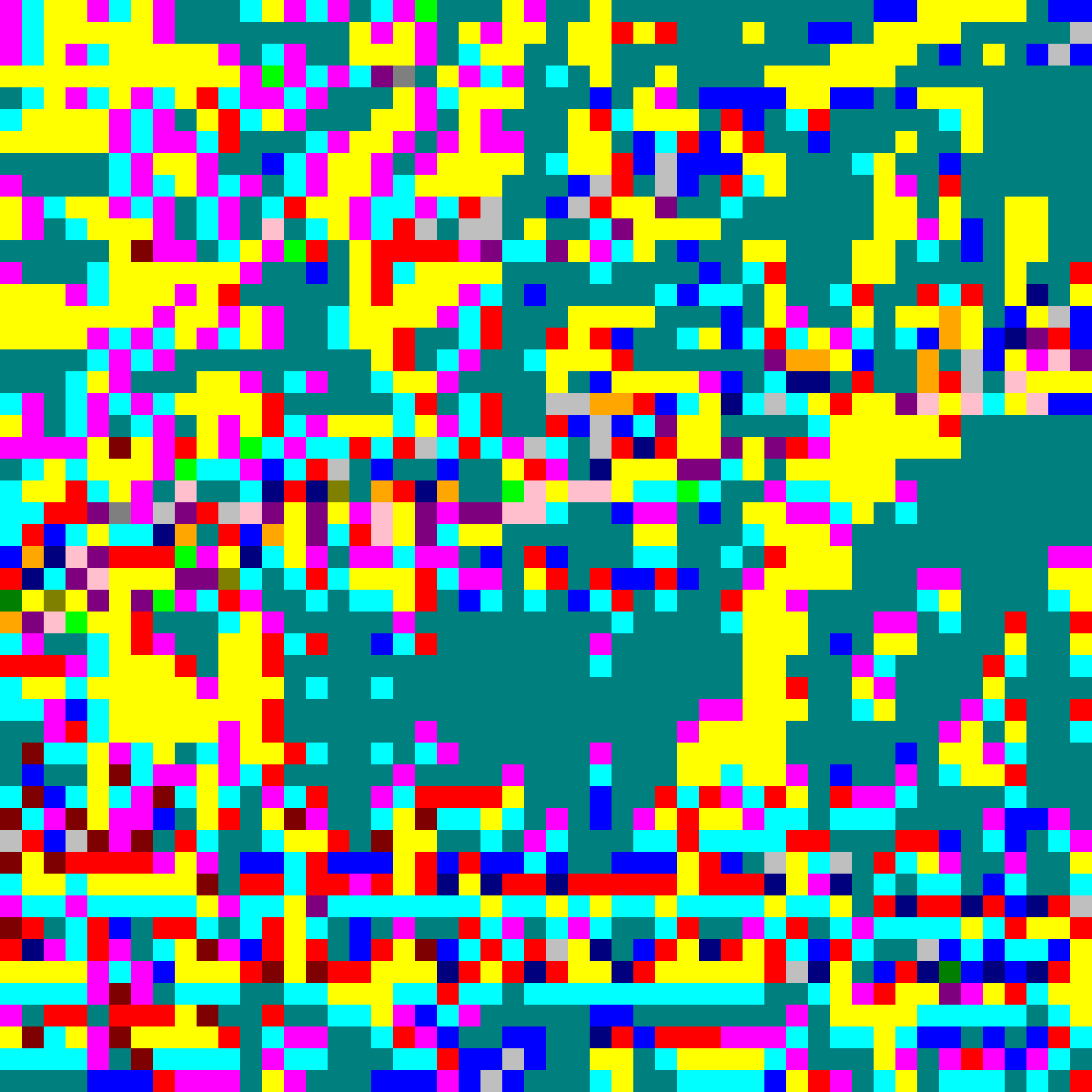
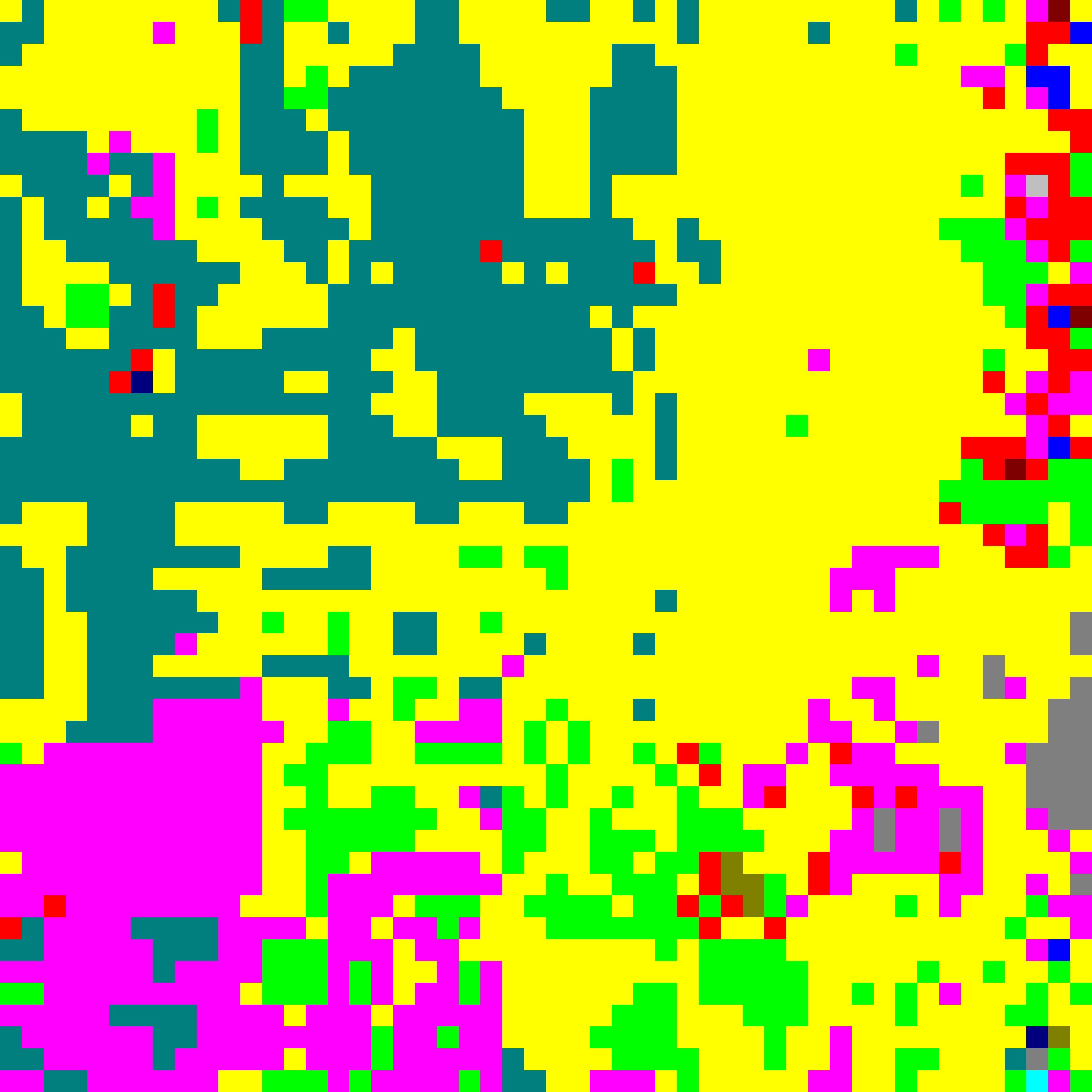
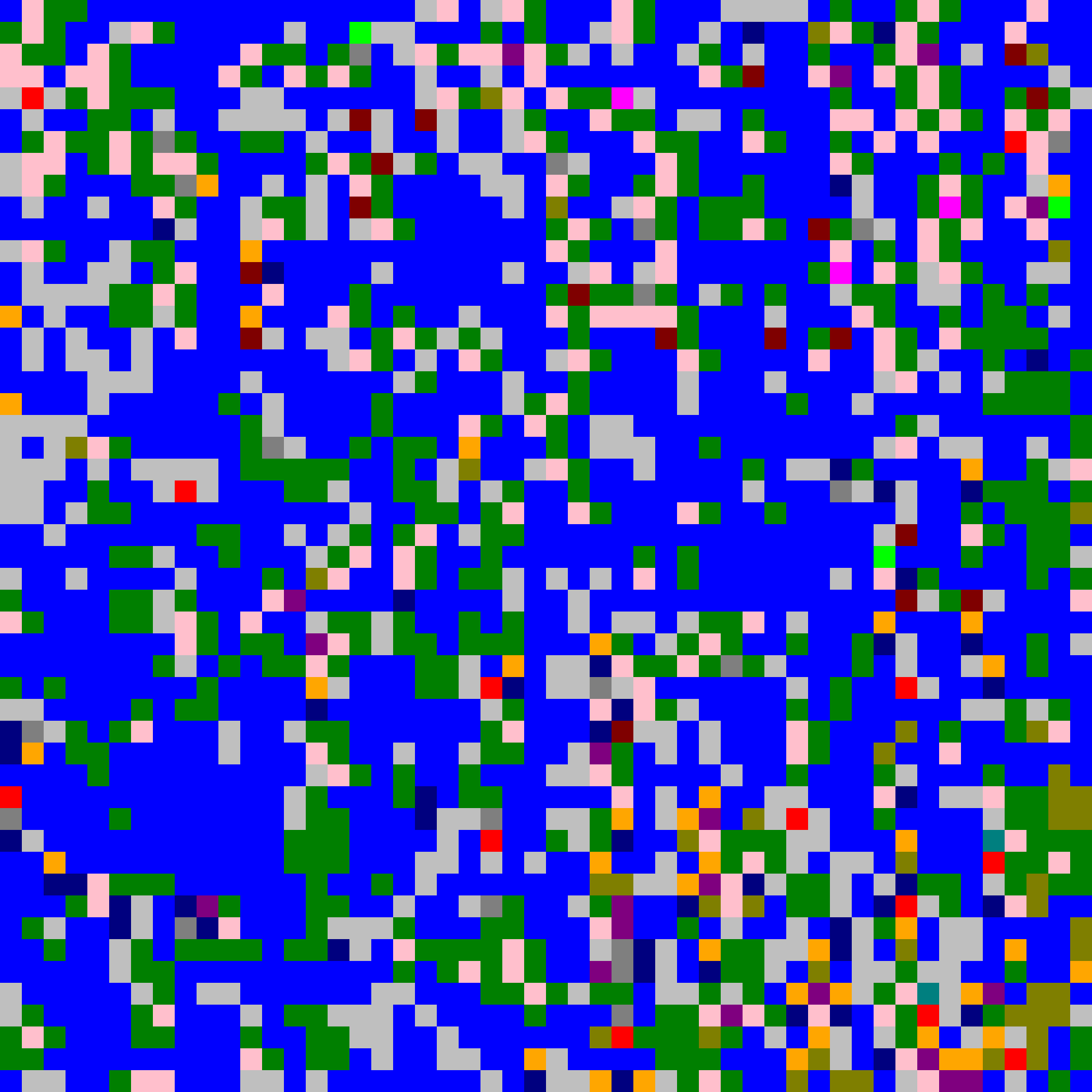
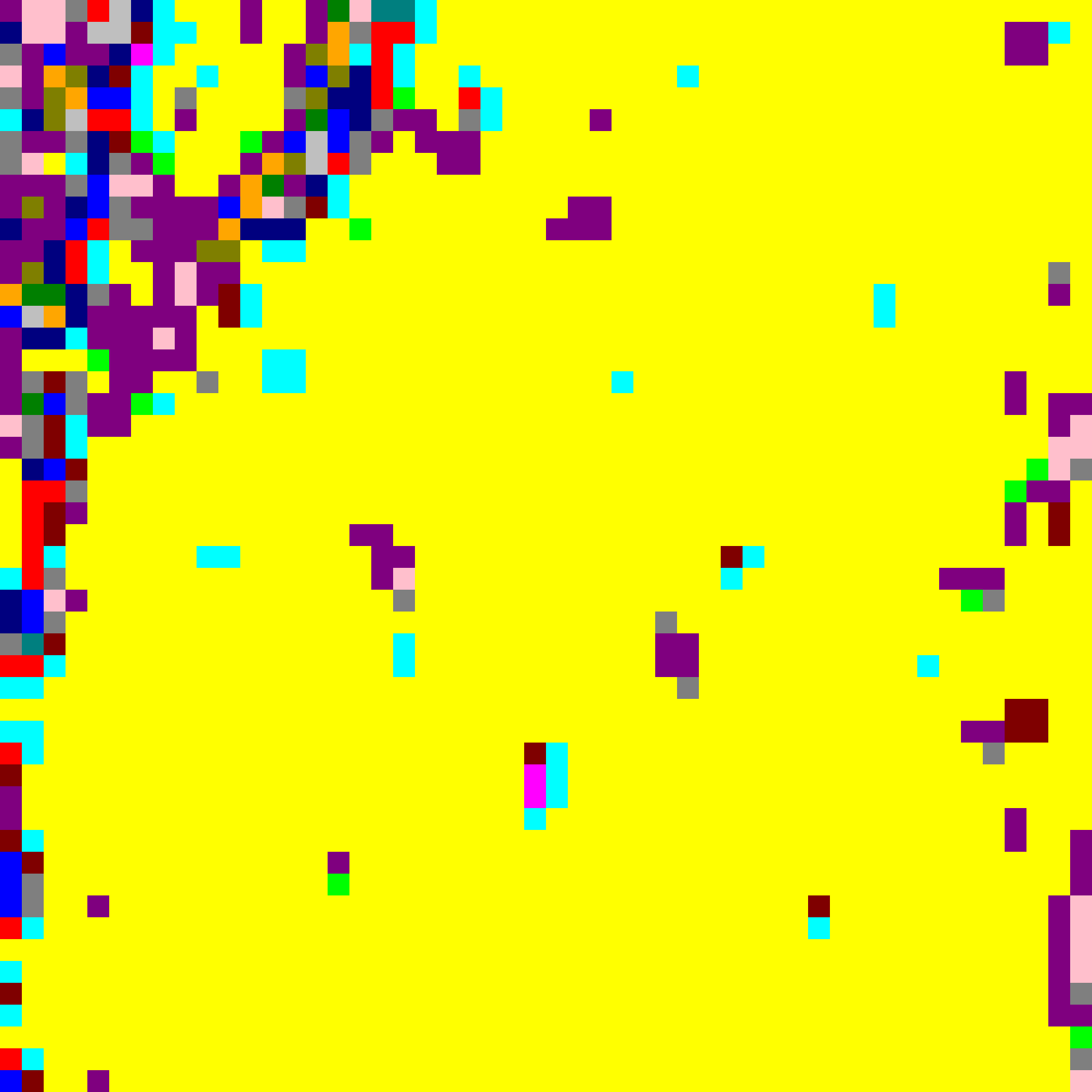
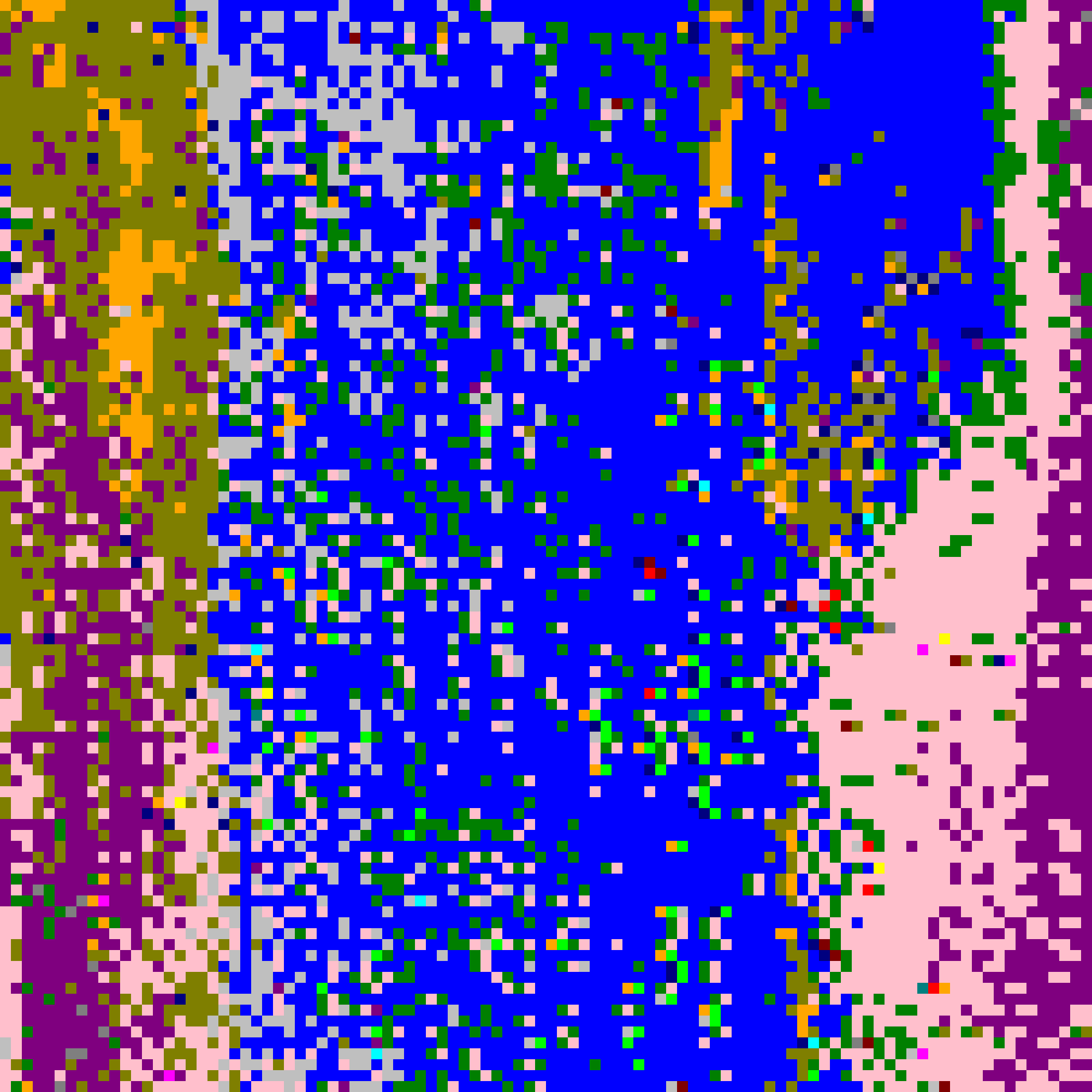
without kmeans:
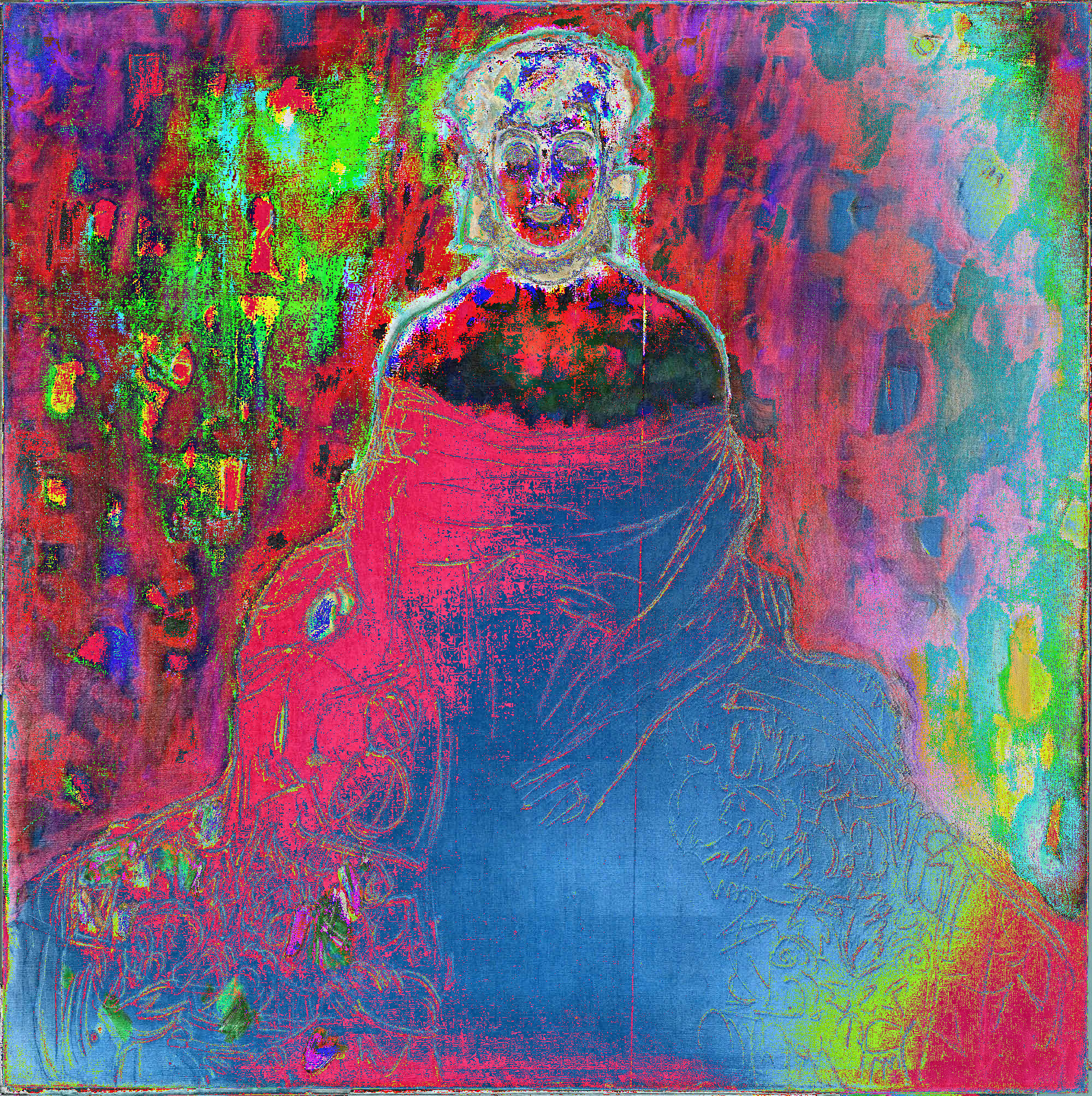
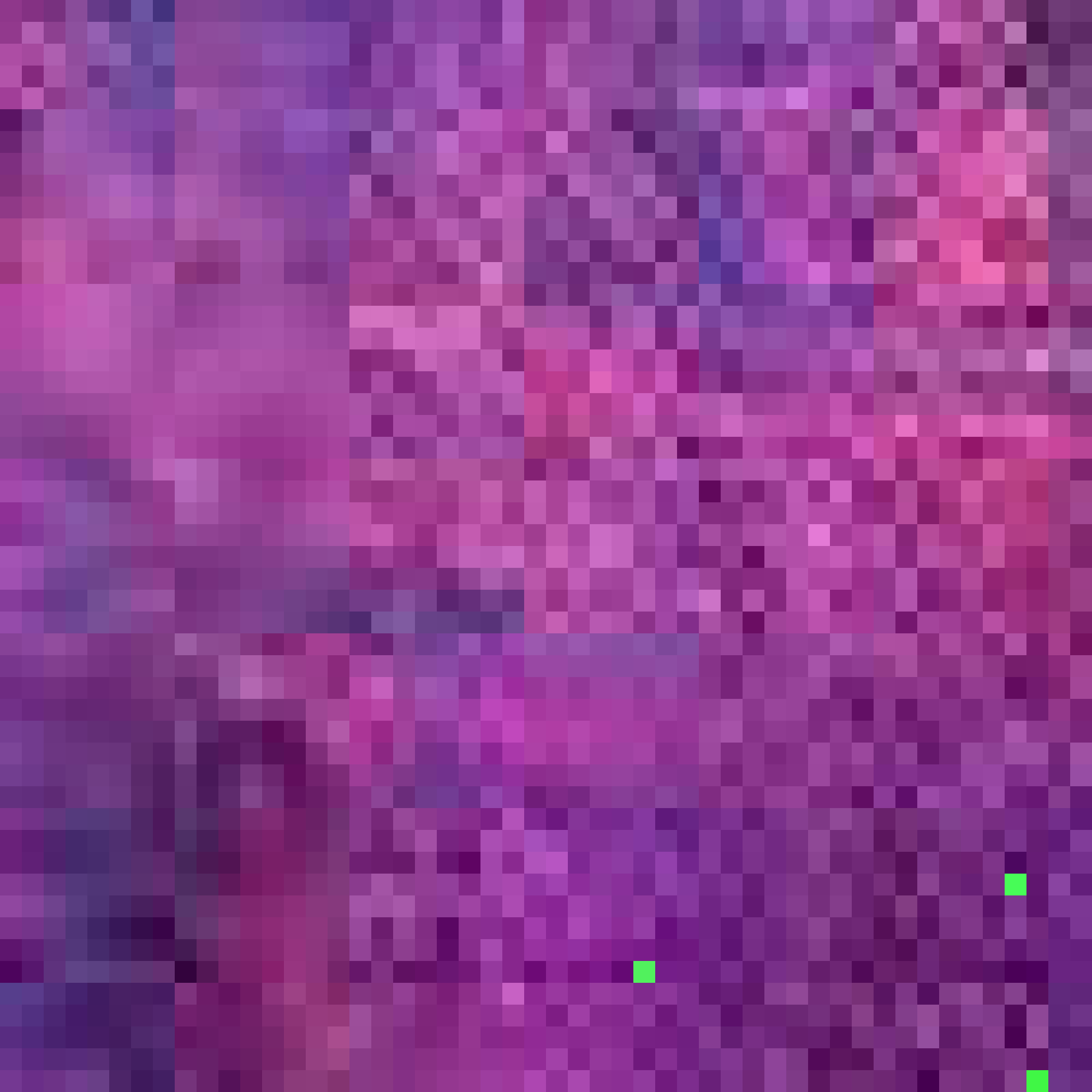

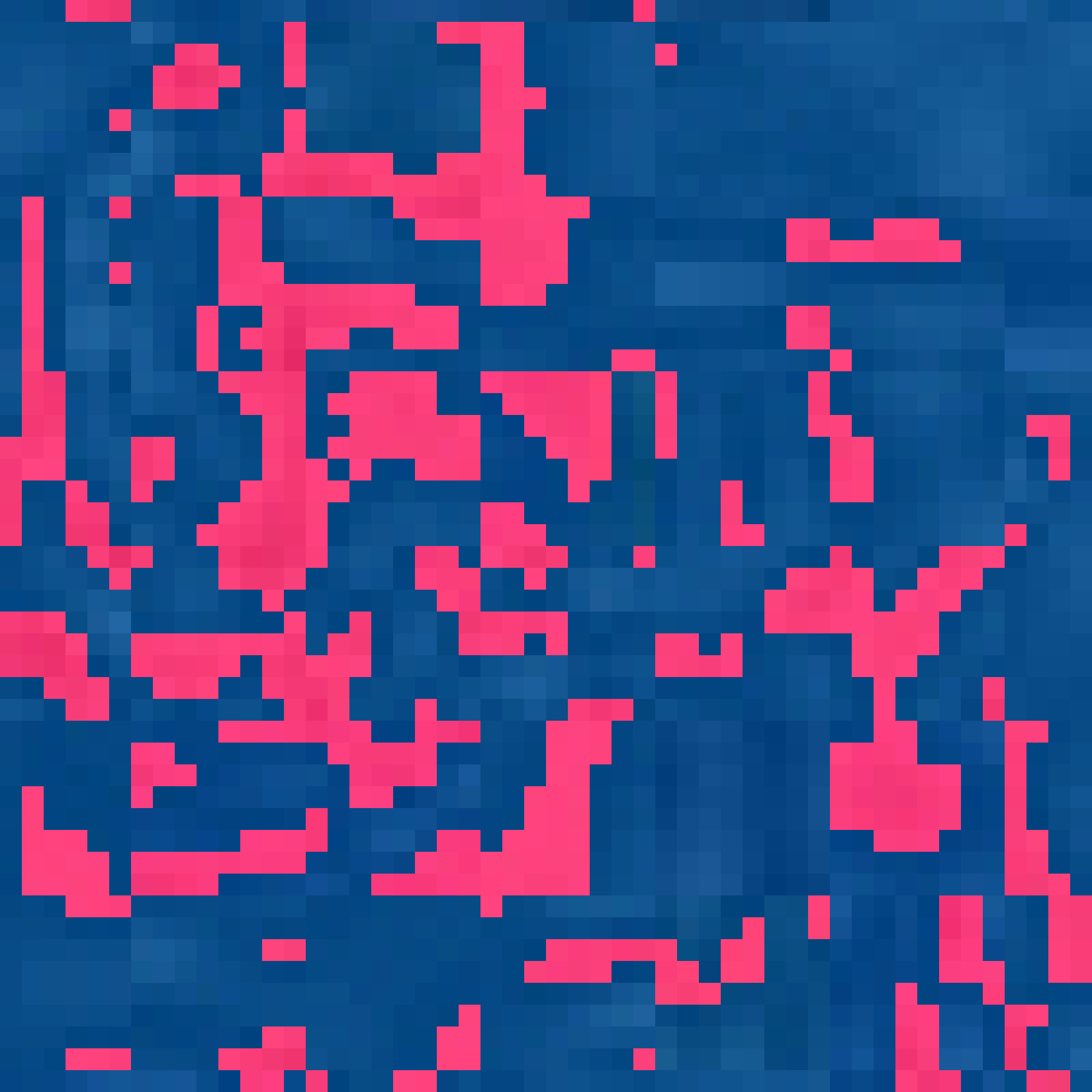
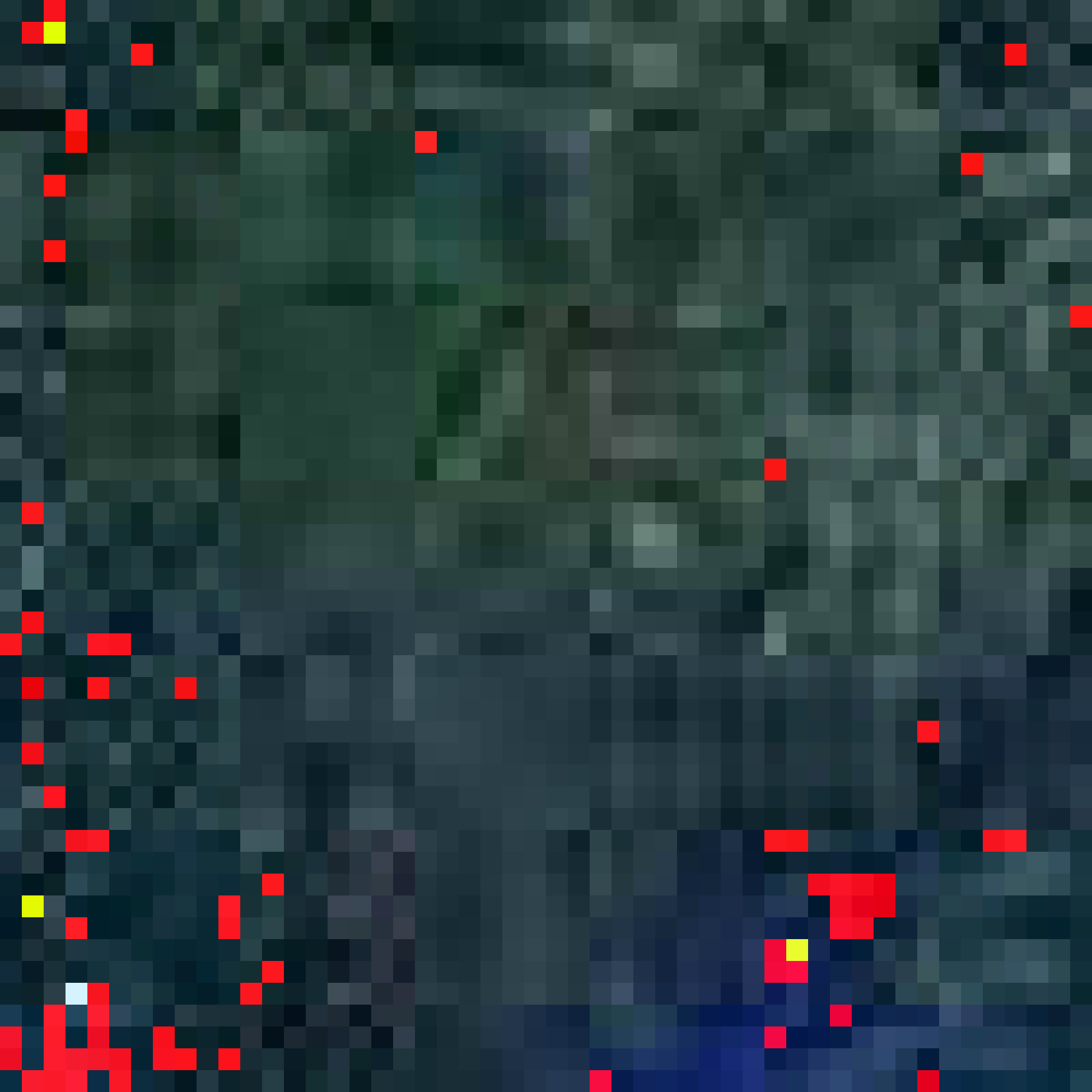
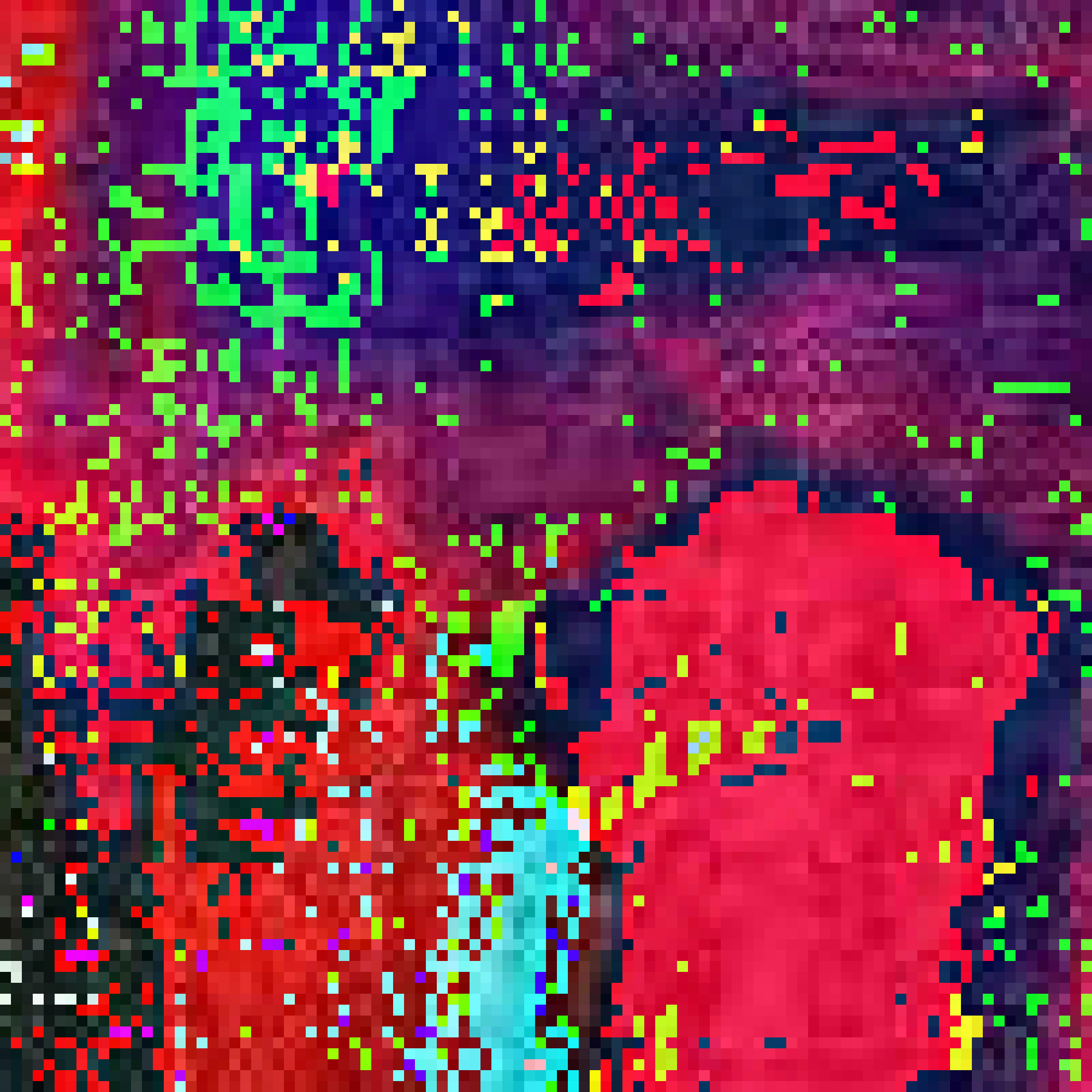
workflow: k-means on low-res cropped image. then scale to 2000x2000
27.03. V1
v1. params: cropsize, clusters, spatial
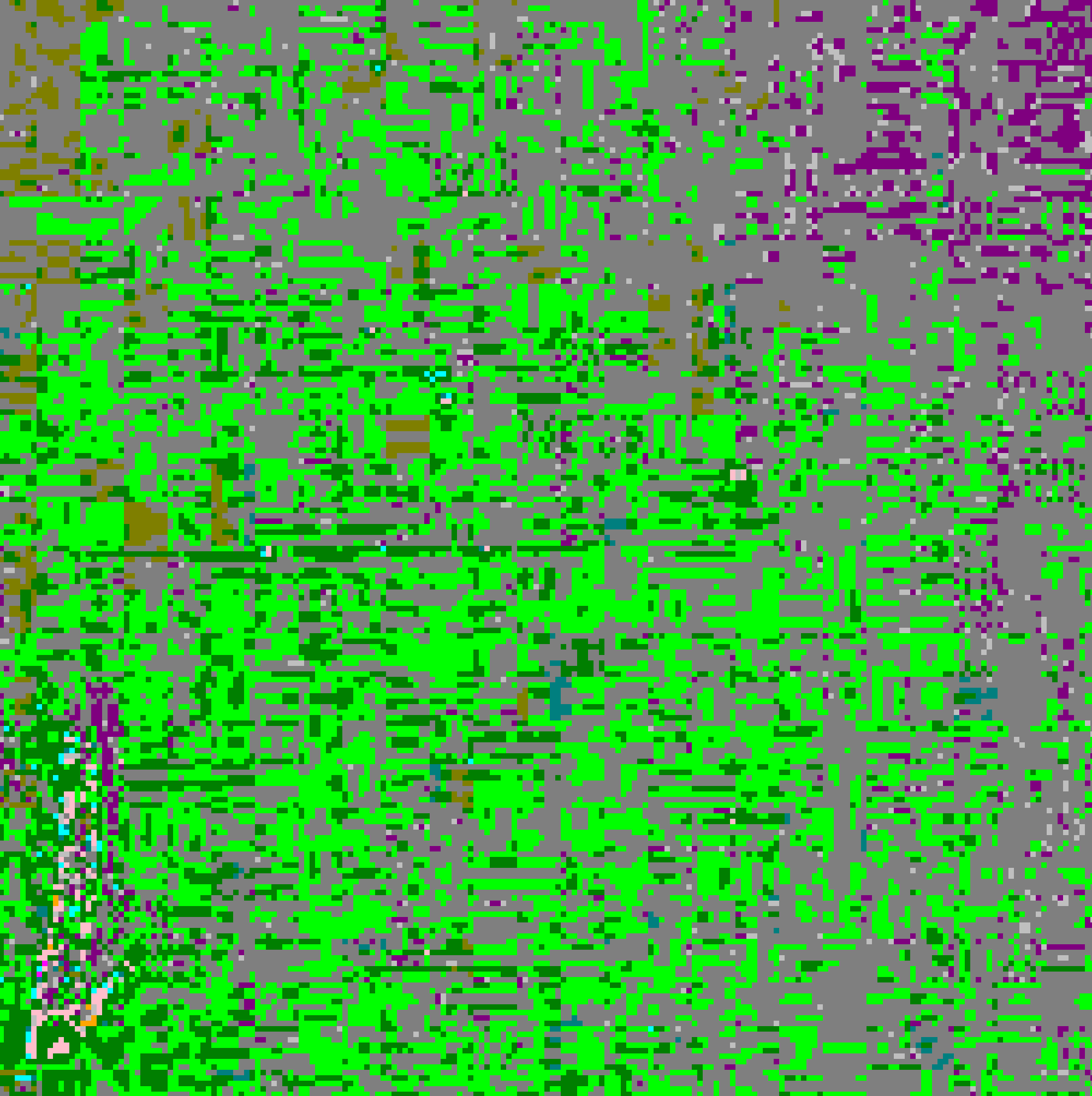
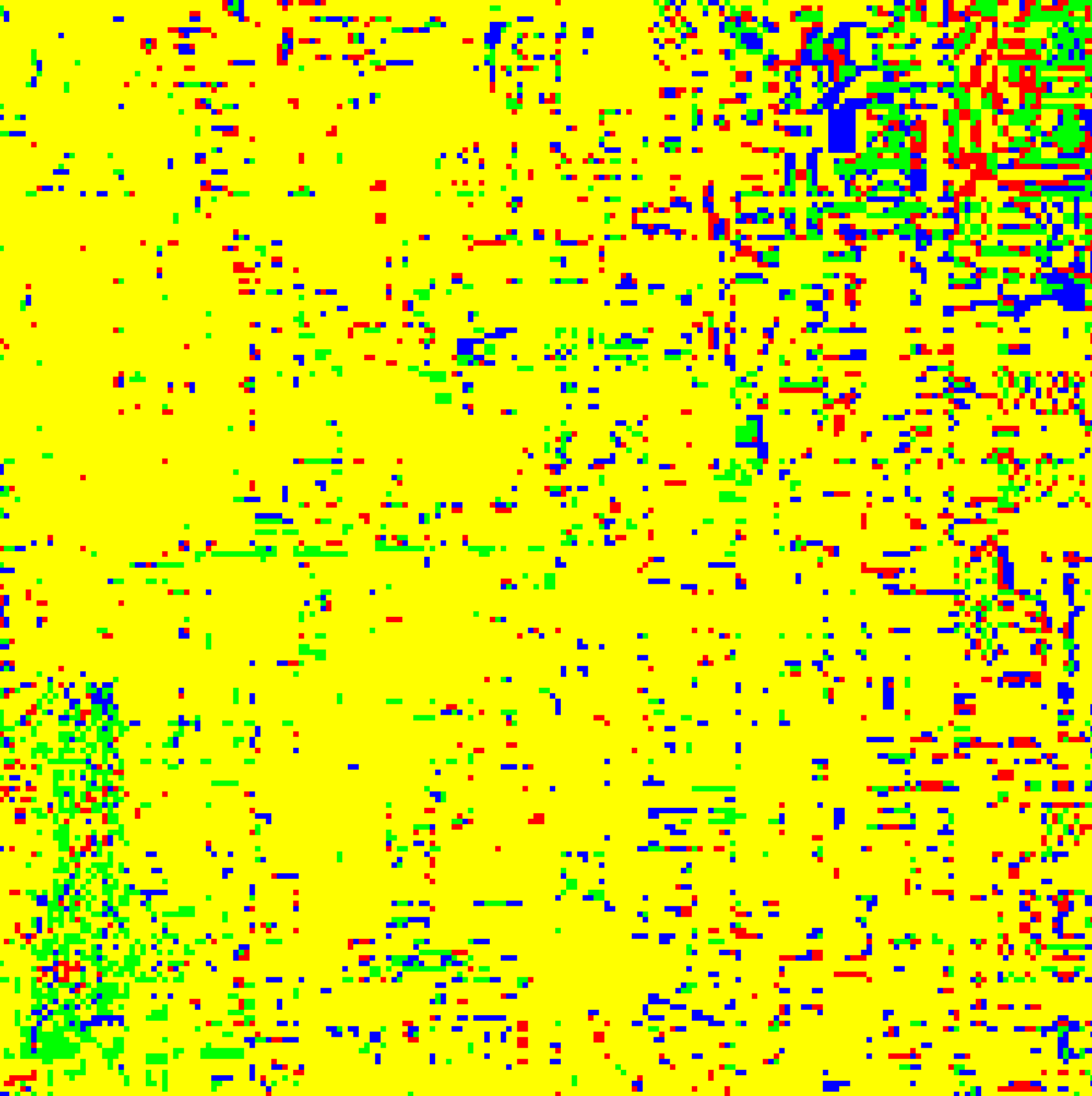
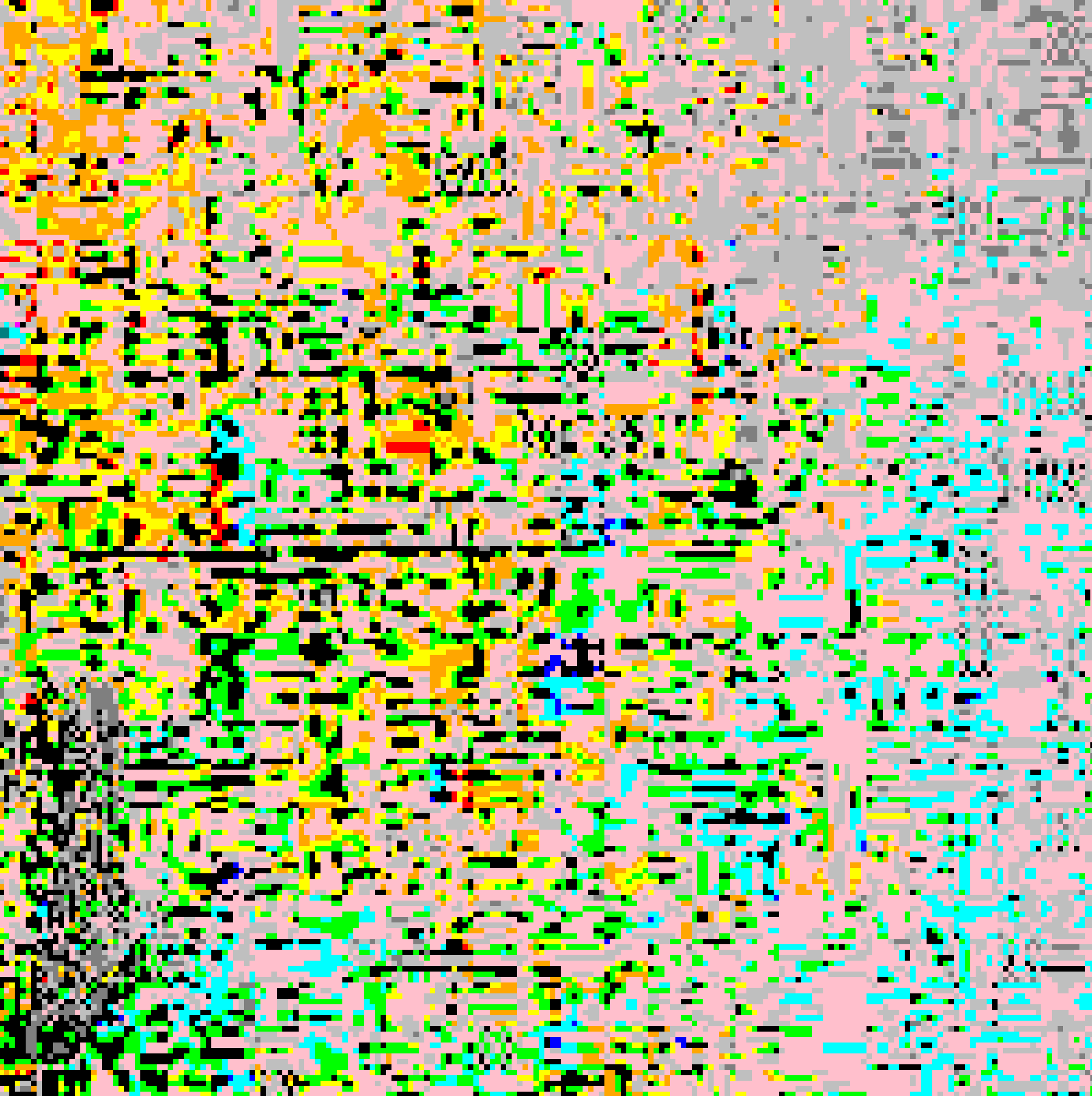
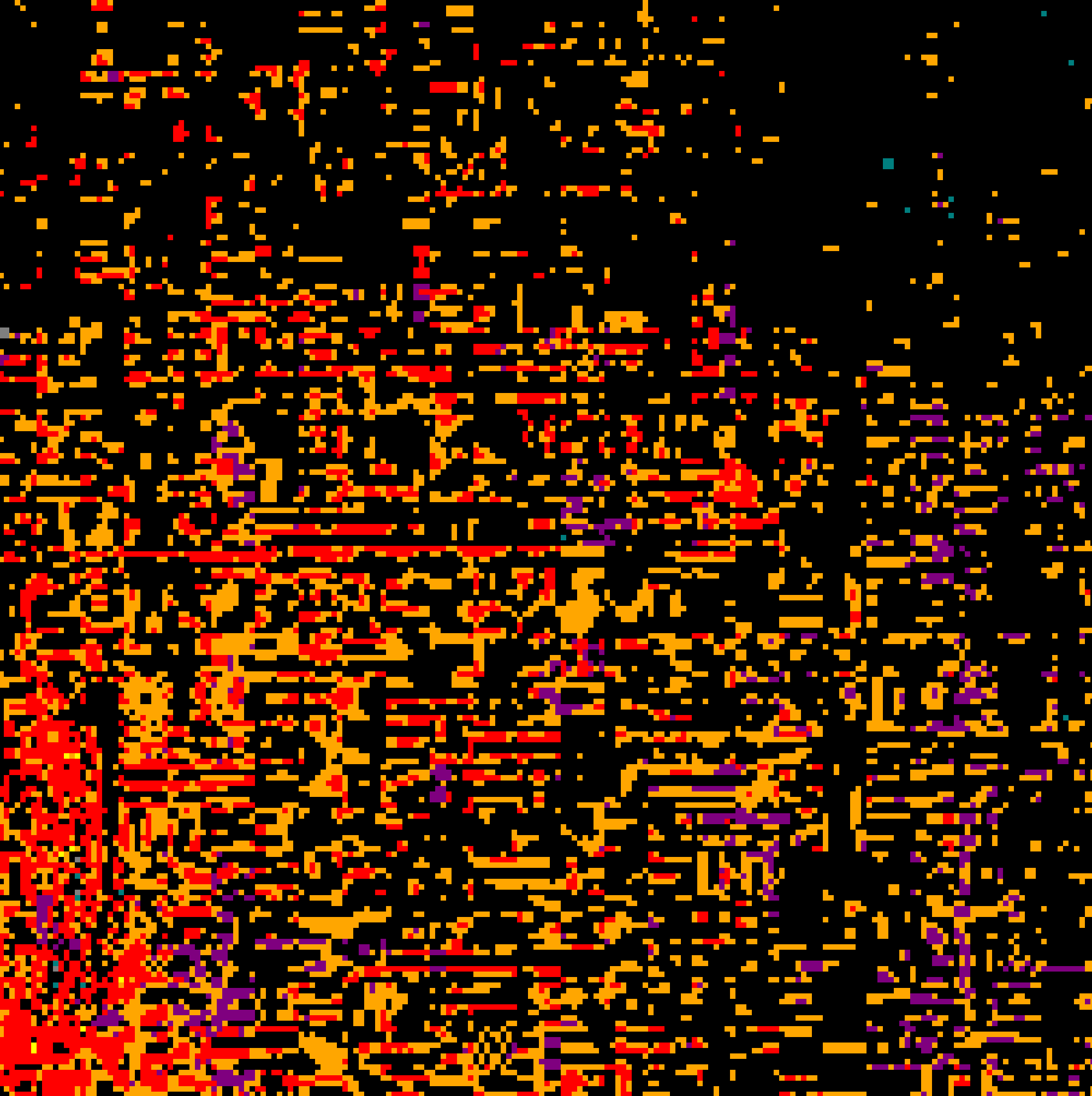
28.03. v1 final
ffmpeg -framerate 30 -i %07d.png -vf "scale=500:500" 0328_v5.gif
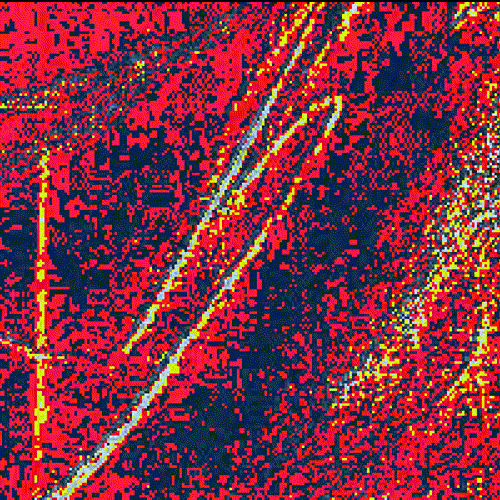
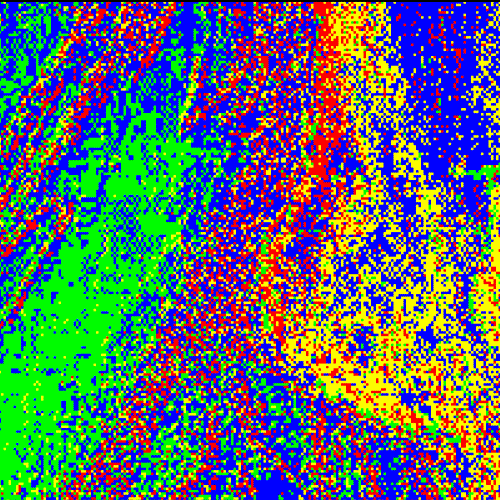

reading:
https://www.workingtheorys.com/p/make-something-heavy
https://www.e-flux.com/journal/10/61362/in-defense-of-the-poor-image/
https://pixlpa.substack.com/p/elements-between-domains
01.04.
.jpg)
cycling without a second image. testing to see if this is another vector. but it isnt
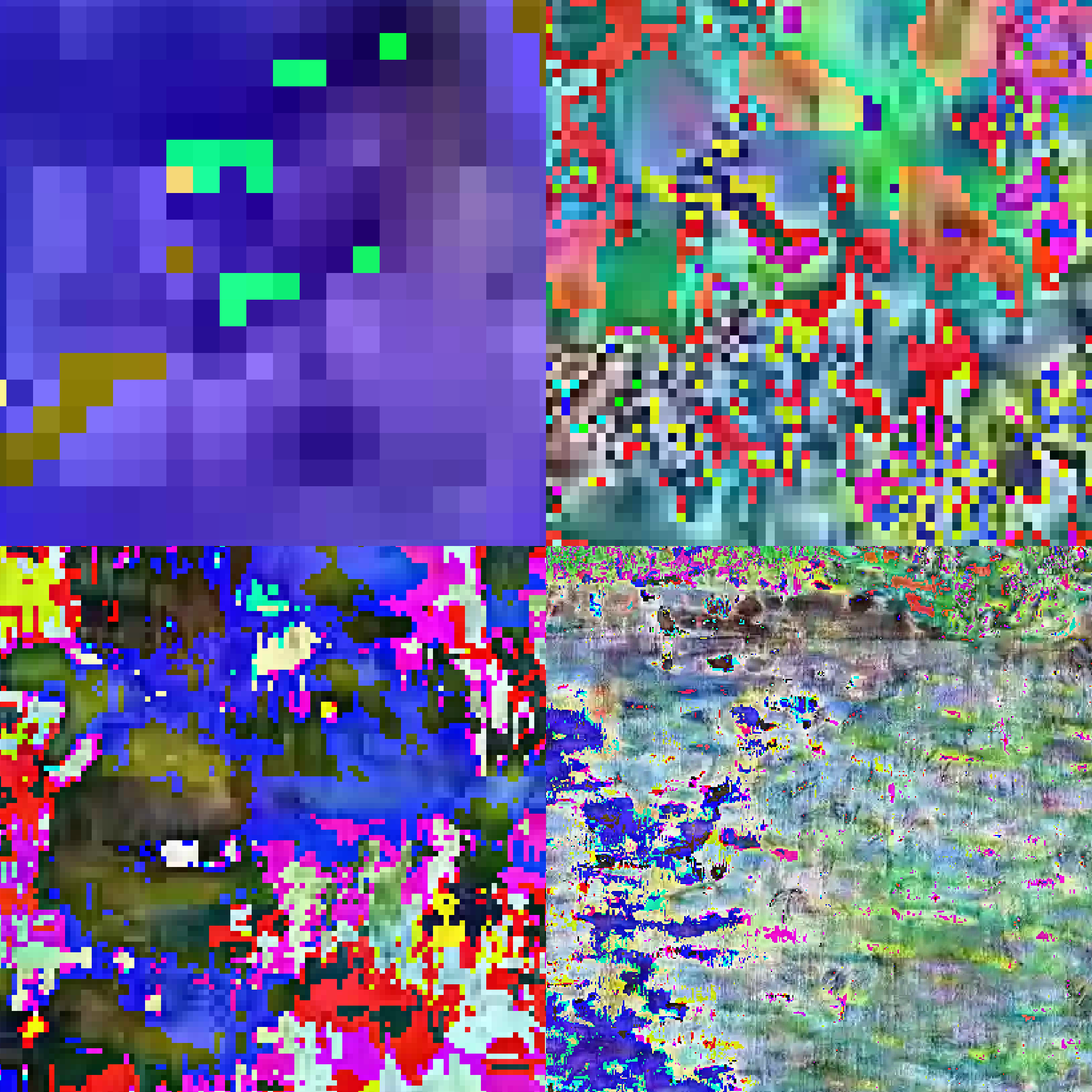
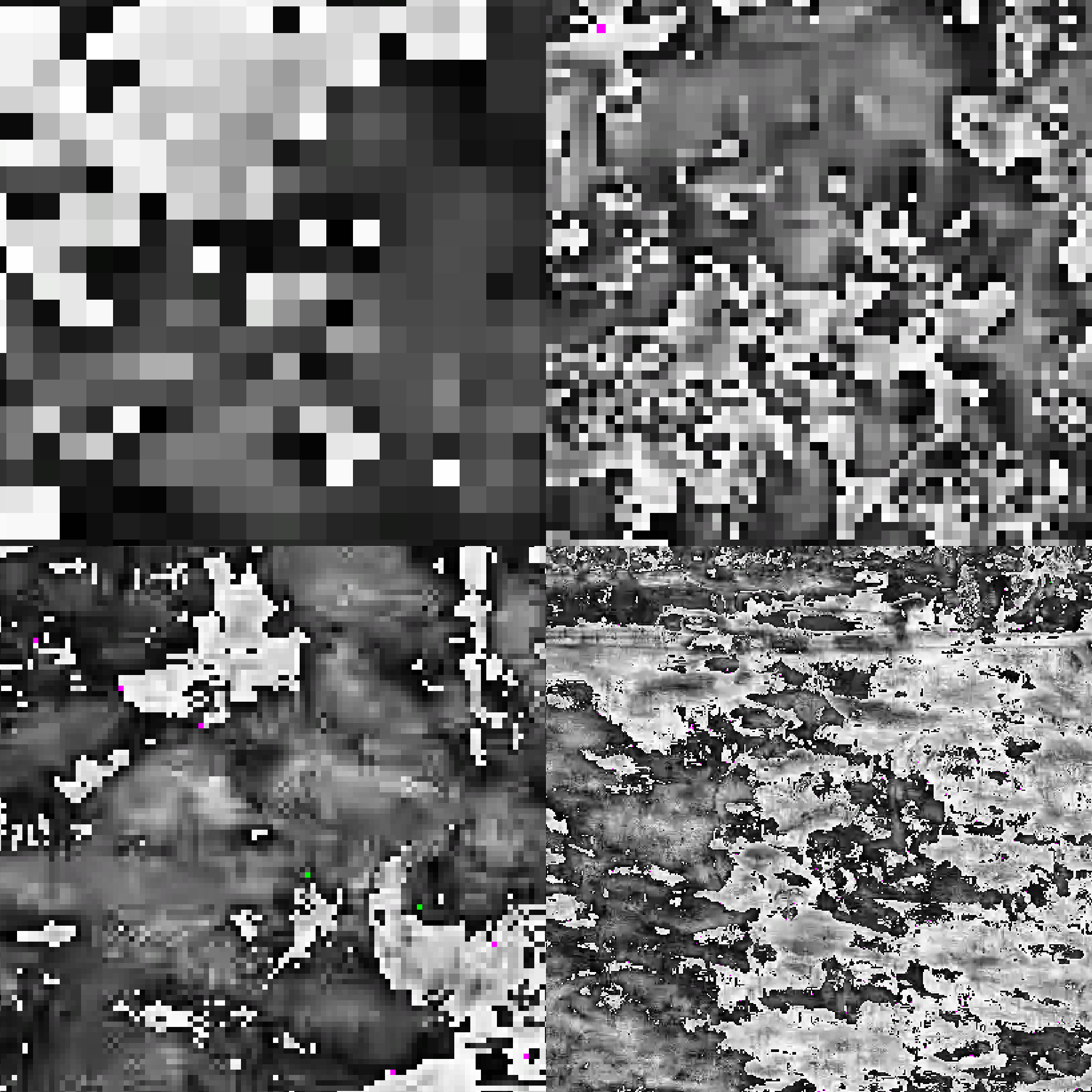
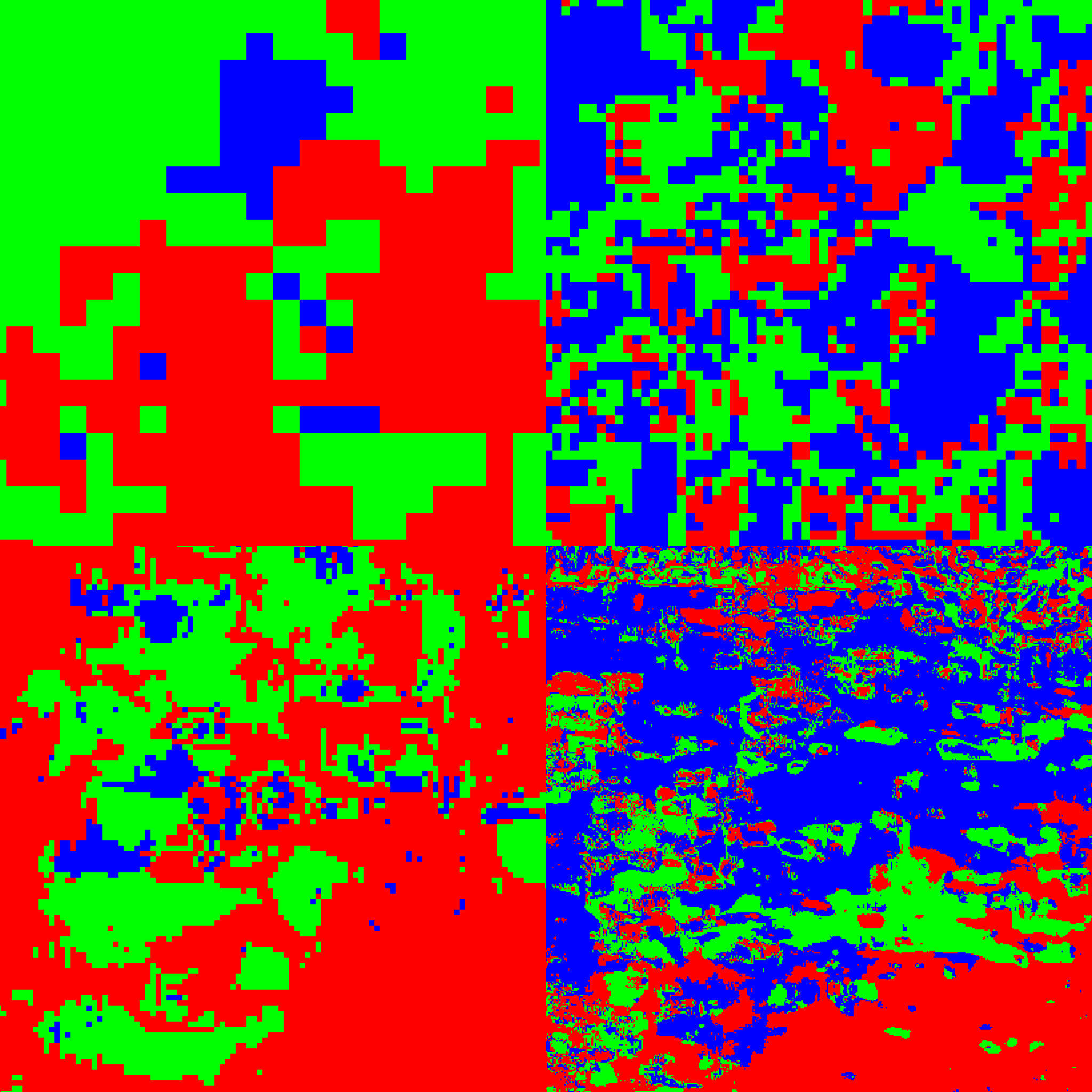

various zoom-level sectors
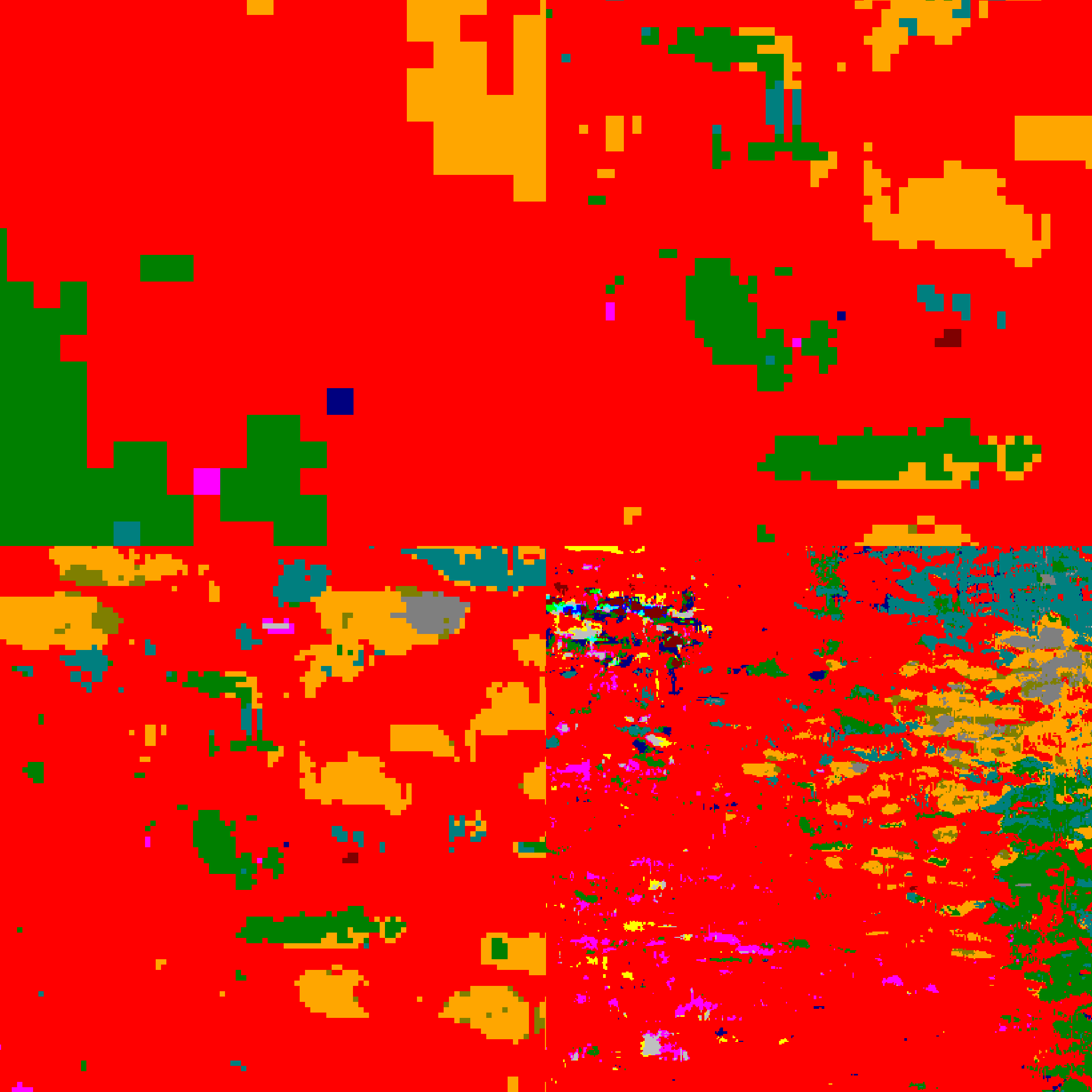
w/ focus on same area
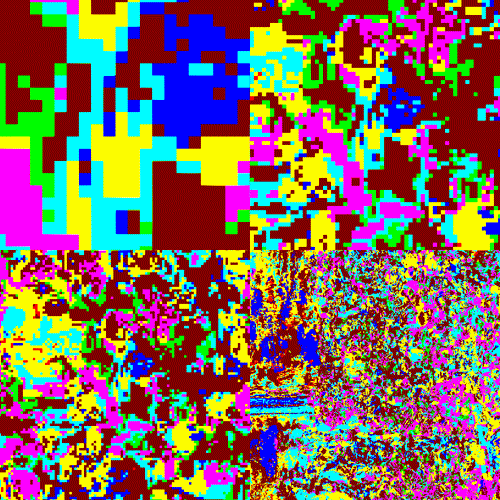
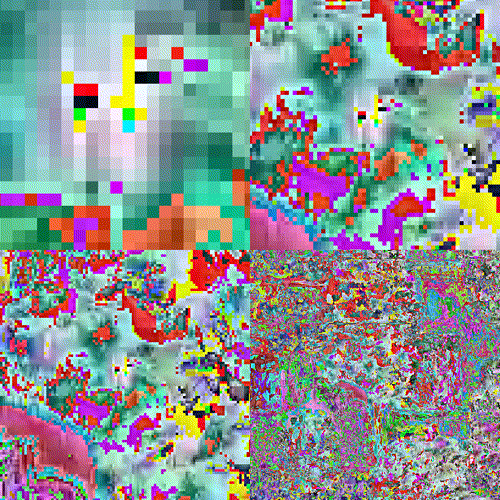
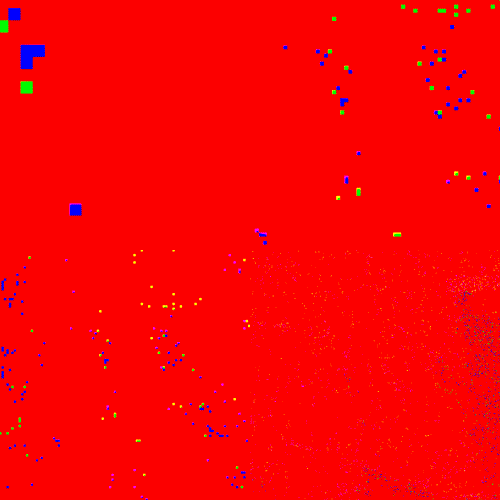
animation in centerpos and extrapolation factor
05.04 - animation, colors, multi-setup
.jpg)
anim: extrapolation, position, zoom, spatialweight.
random: color palette (2-16 colors), kmeans 80%, 6 paintings, each 6 combinations
16.04 - v2.3
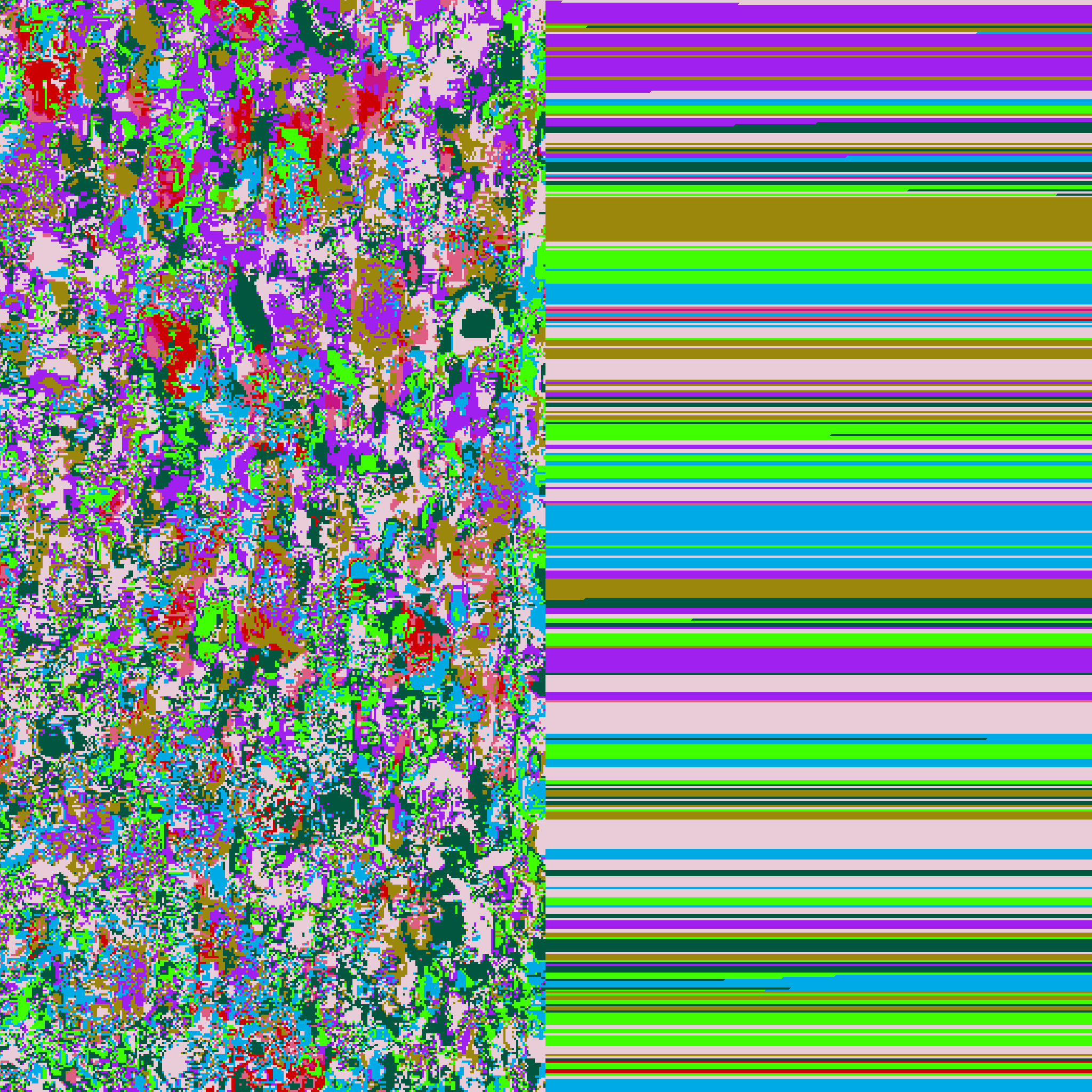
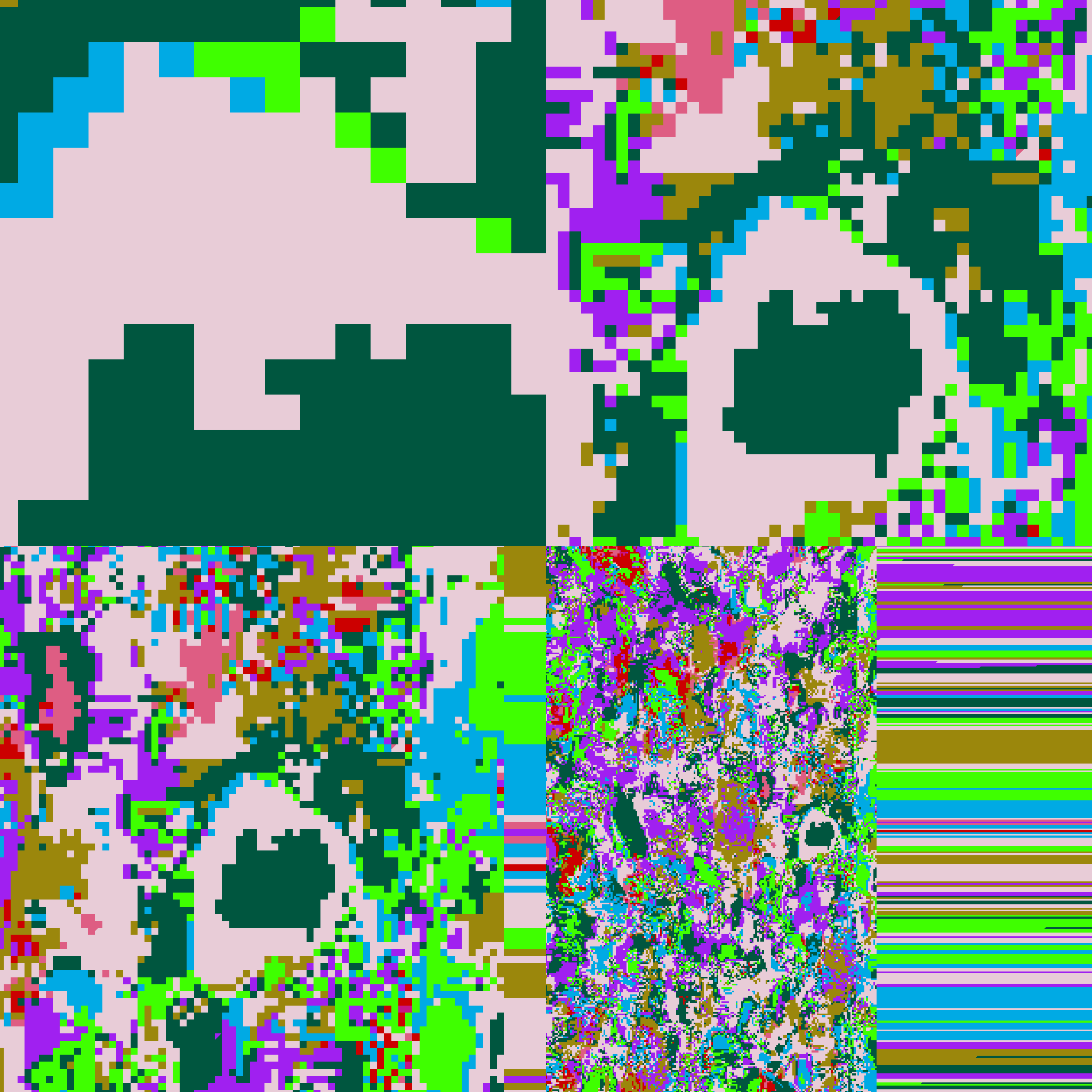
interaction:
click to zoom into quadrant
keys:
s: save png
i/o: start/stop video capture
r: random parameters
k: random anims
m: stop anims
v: extrapolate anim
b: spatial weight anim
c: zoom anim
x/y: x/y anim
1-6: random image pair of painting #1-6
click bottom green text copies "hash" to clipboard
ctrl+v applies a "hash"
.jpg)
edge detection on 4th quadrant
29.04. interface research & UMAP

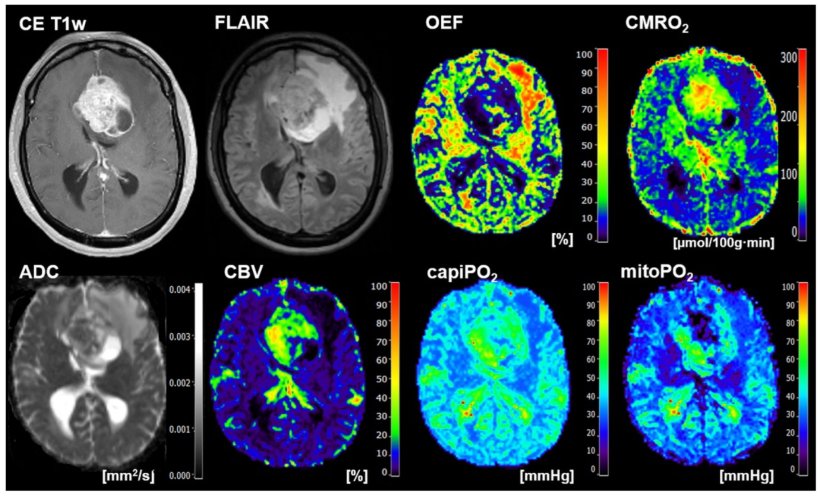
simple umap via pca on 600x600px imgs
.png)
100 images, n_components=70
.png)
600 images, n_components=100
.png)
1500 images, n_components=100
05.05. concept from transcript
EXTRAPOLATION: Venturing Beyond the Visible
This generative art project explores the speculative realm that exists beyond the known dimensions of Gustav
Klimt's masterpieces. Working with multiple imaging techniques (standard photography, infrared, ultraviolet,
and X-ray) of Klimt's paintings from the Belvedere Museum, I create digital artifacts that extend beyond the
visible spectrum into imagined territories.
The Speculative Nature of Extrapolation
Extrapolation, by its very nature, is an act of speculation – a mathematical and philosophical venture into
the unknown based on established patterns. Where interpolation connects known points with reasonable
certainty, extrapolation reaches beyond the boundaries of what we can directly observe, proposing what might
exist if patterns continue. In this project, I embrace the inherent uncertainty and creative potential of
extrapolation as a conceptual framework.
Why Two Image Layers?
The power of using two different image layers (such as standard photography and infrared or X-ray and
ultraviolet) lies in the contextual relationship they create. A single image transformation might produce
interesting effects, but lacks the meaningful dialogue that emerges between two perspectives of the same
subject. By extrapolating between two different imaging techniques, patterns emerge that reveal something
about their relationship – how structure informs appearance, how underdrawings influence final composition.
These different imaging techniques each reveal distinct aspects of Klimt's process – the visible surface
that audiences have known for a century, the preliminary sketches visible under UV light, the structural
elements revealed by X-rays. By algorithmically extending beyond these known perspectives, this work
speculates on another dimensional layer of these paintings, one that exists only in the digital realm but is
directly derived from the physical artwork.
The resulting compositions invite viewers to reconsider what we mean by "seeing" an artwork completely,
suggesting that even our most advanced imaging technologies capture only specific facets of the whole.
Through digital extrapolation, we can imagine new ways of engaging with historical art that honor both
preservation and reimagination.
25.05.
Hommaga à Klimt
Out of Bounds
Out of Distribution
A scanner darkly
Spectral Extrapolation
07.06.
Sucher
View Finder
Science Fiction
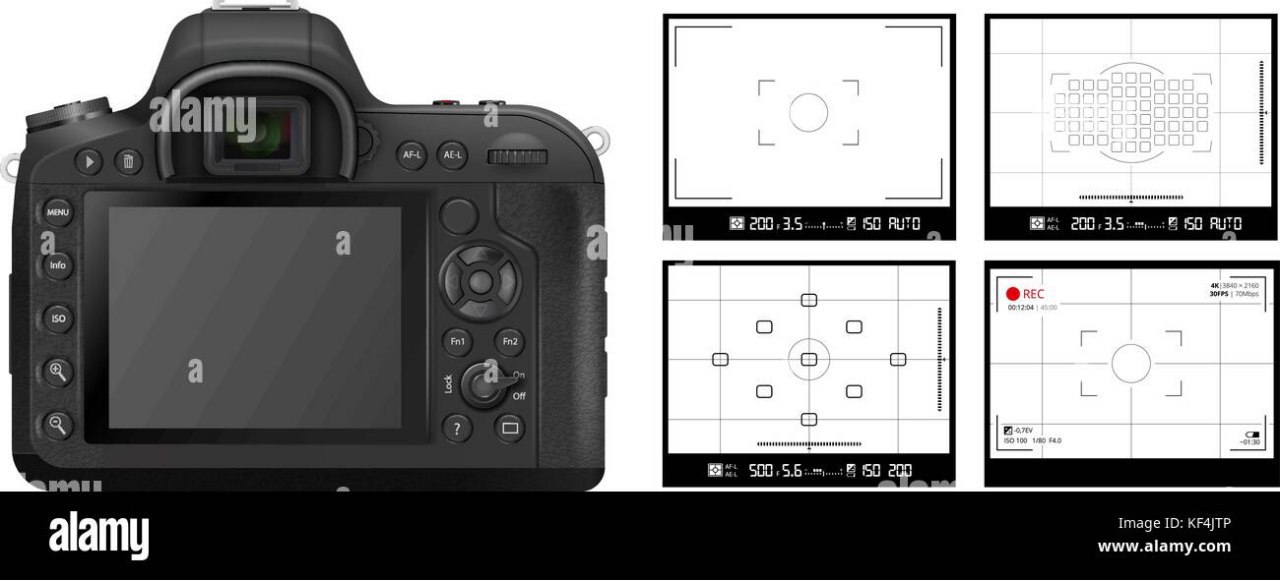
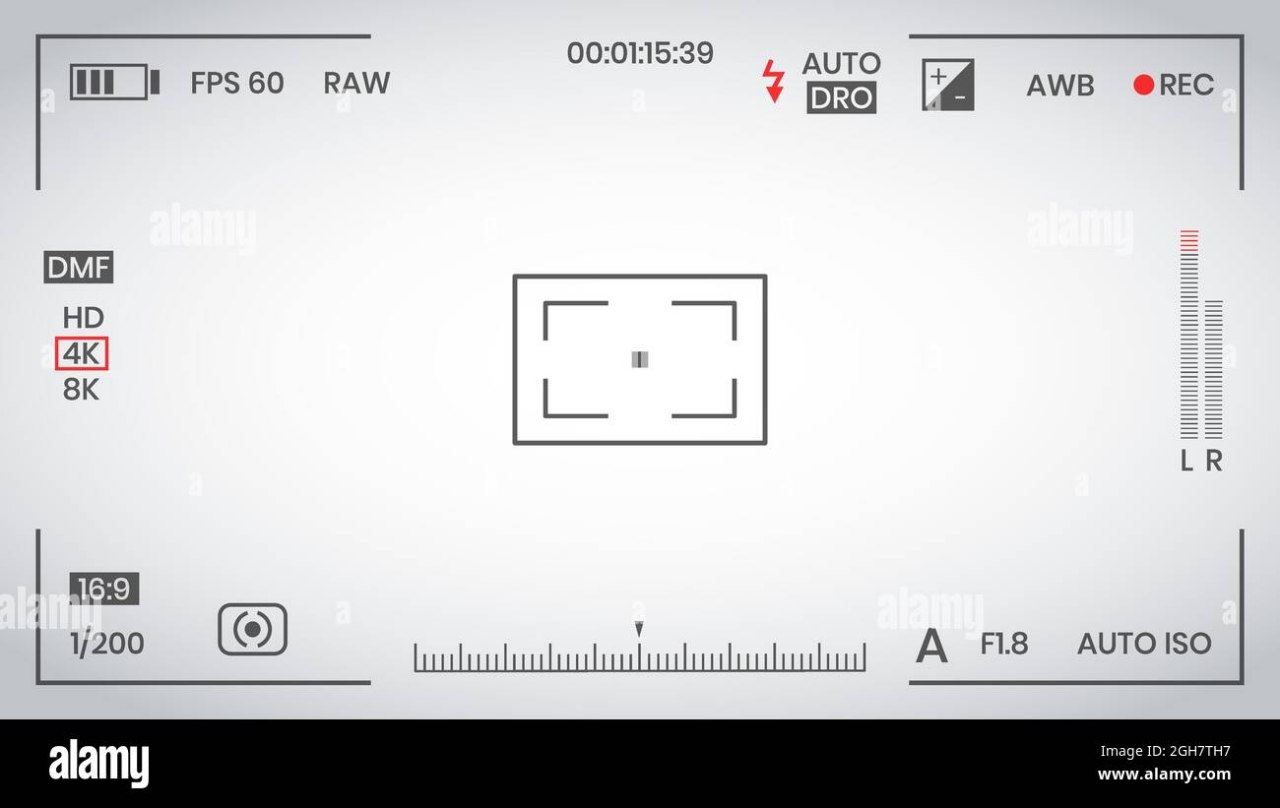
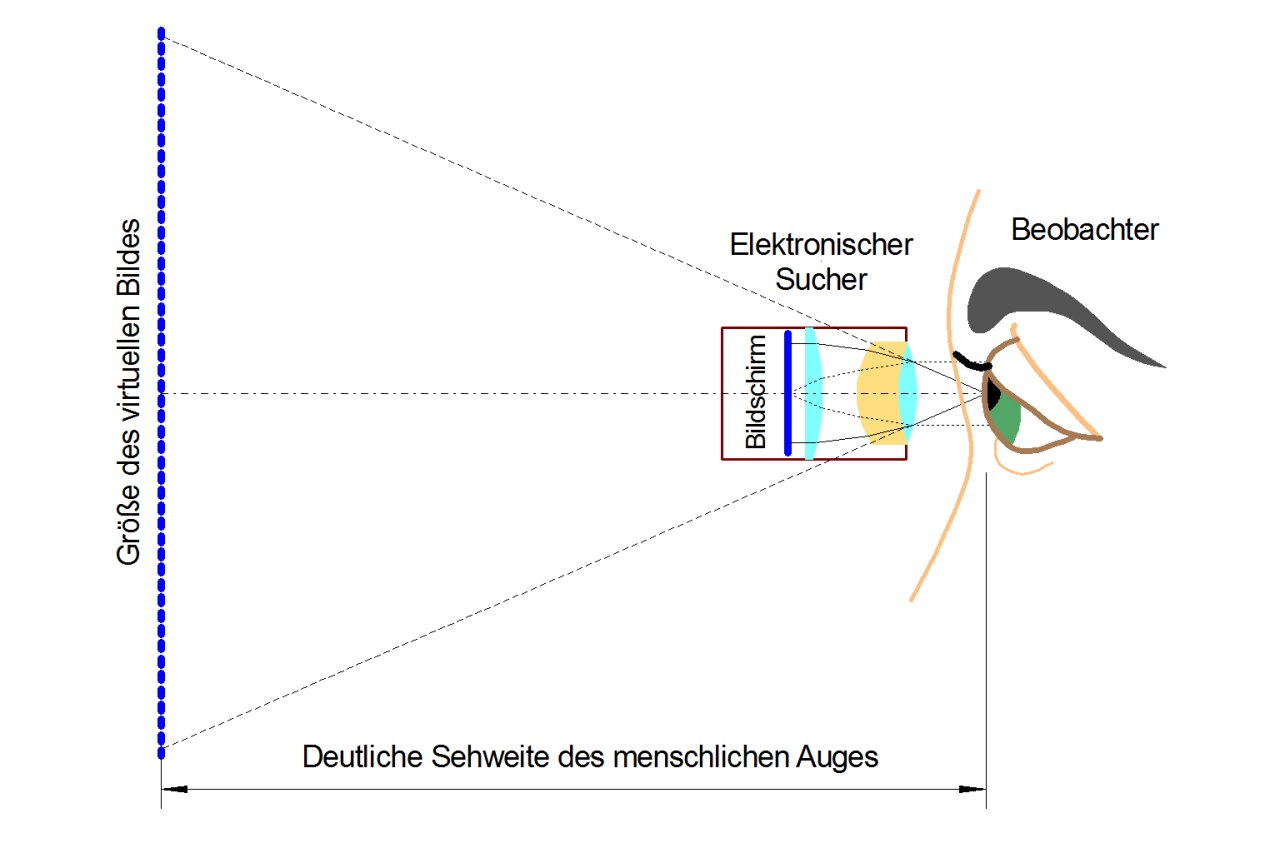
inspiration // references
Jan Robert Leegte: http://scan.leegte.org/
Cory Arcangel Cooker: https://artonthemart.com/news/how-to-cory-arcangels-cookery
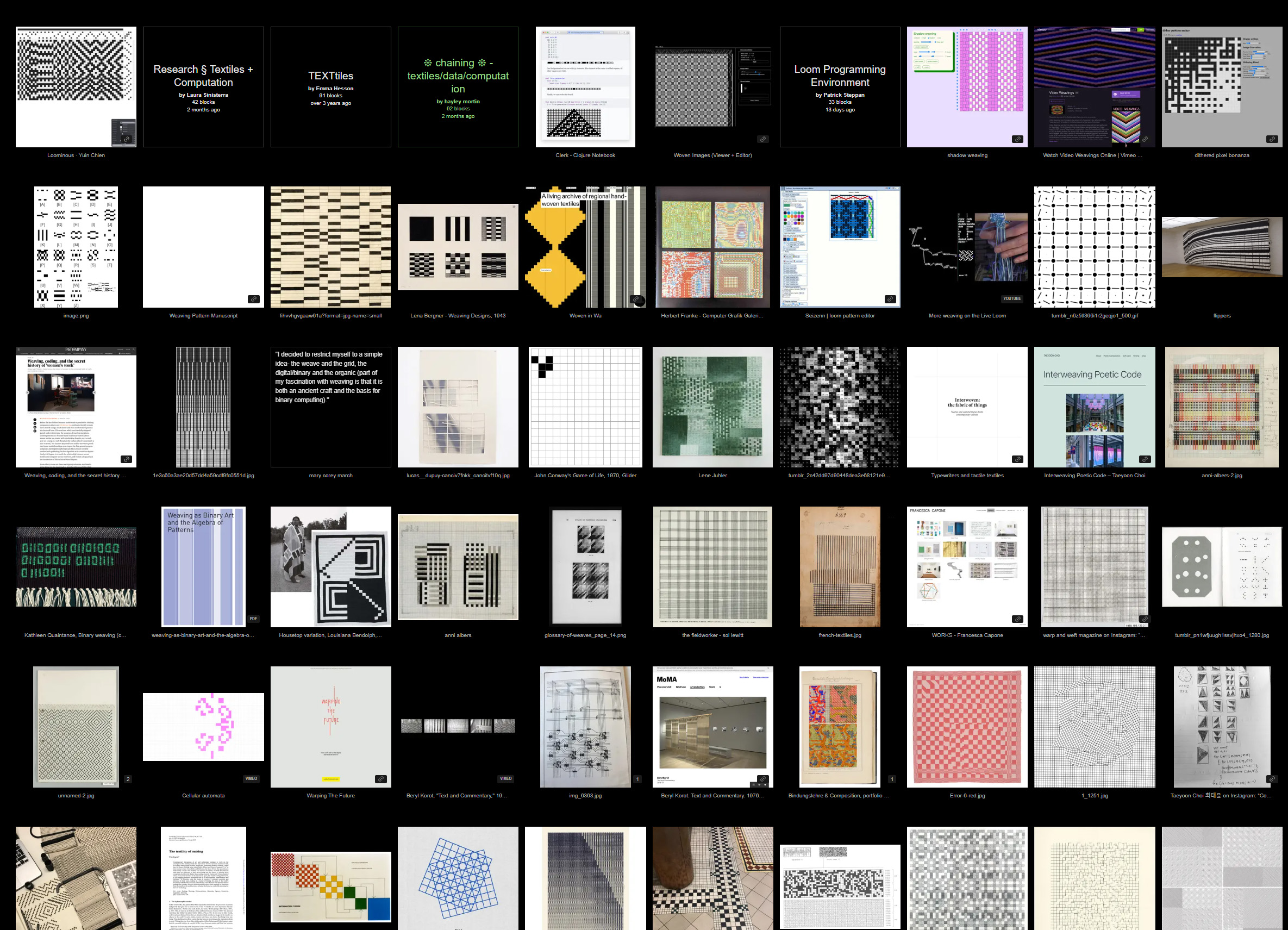
https://www.are.na/amandine-david/weaving-coding
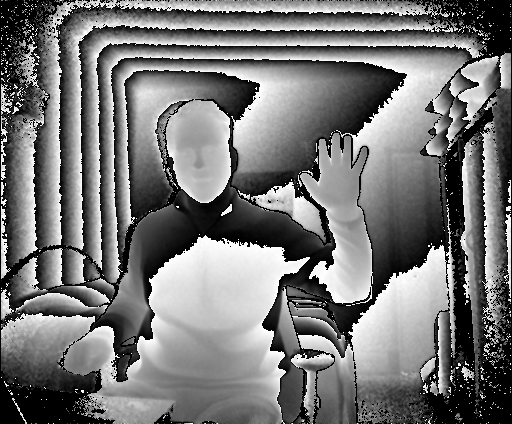
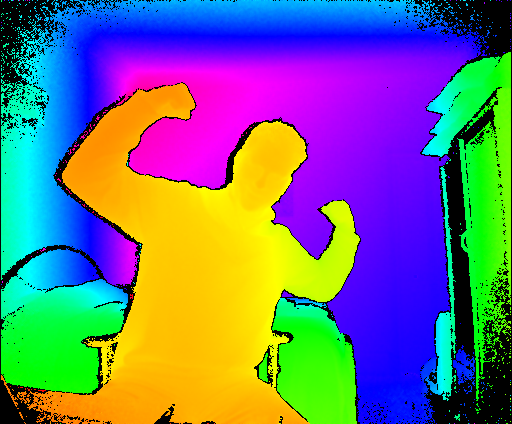
Kinect depth map wrap around
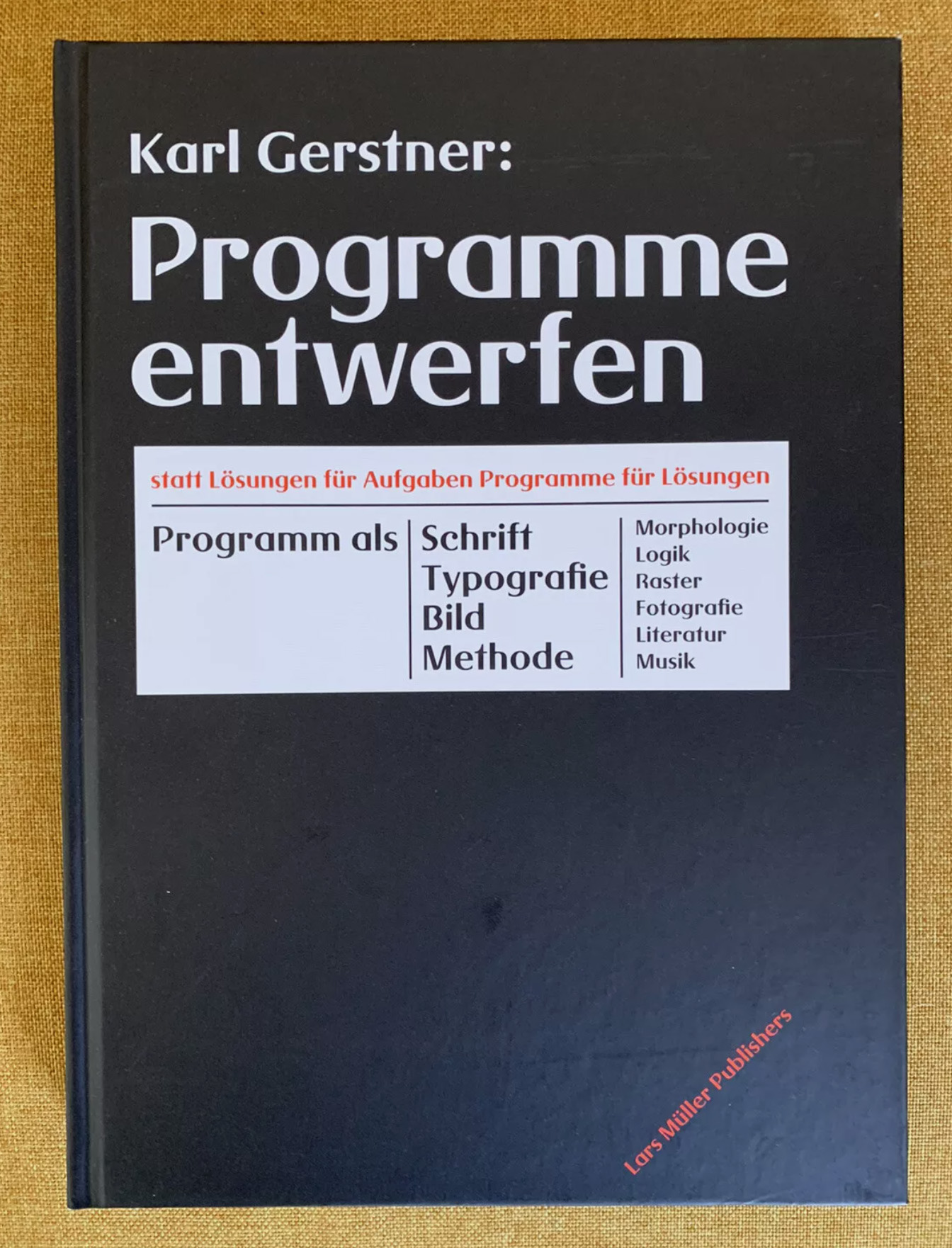
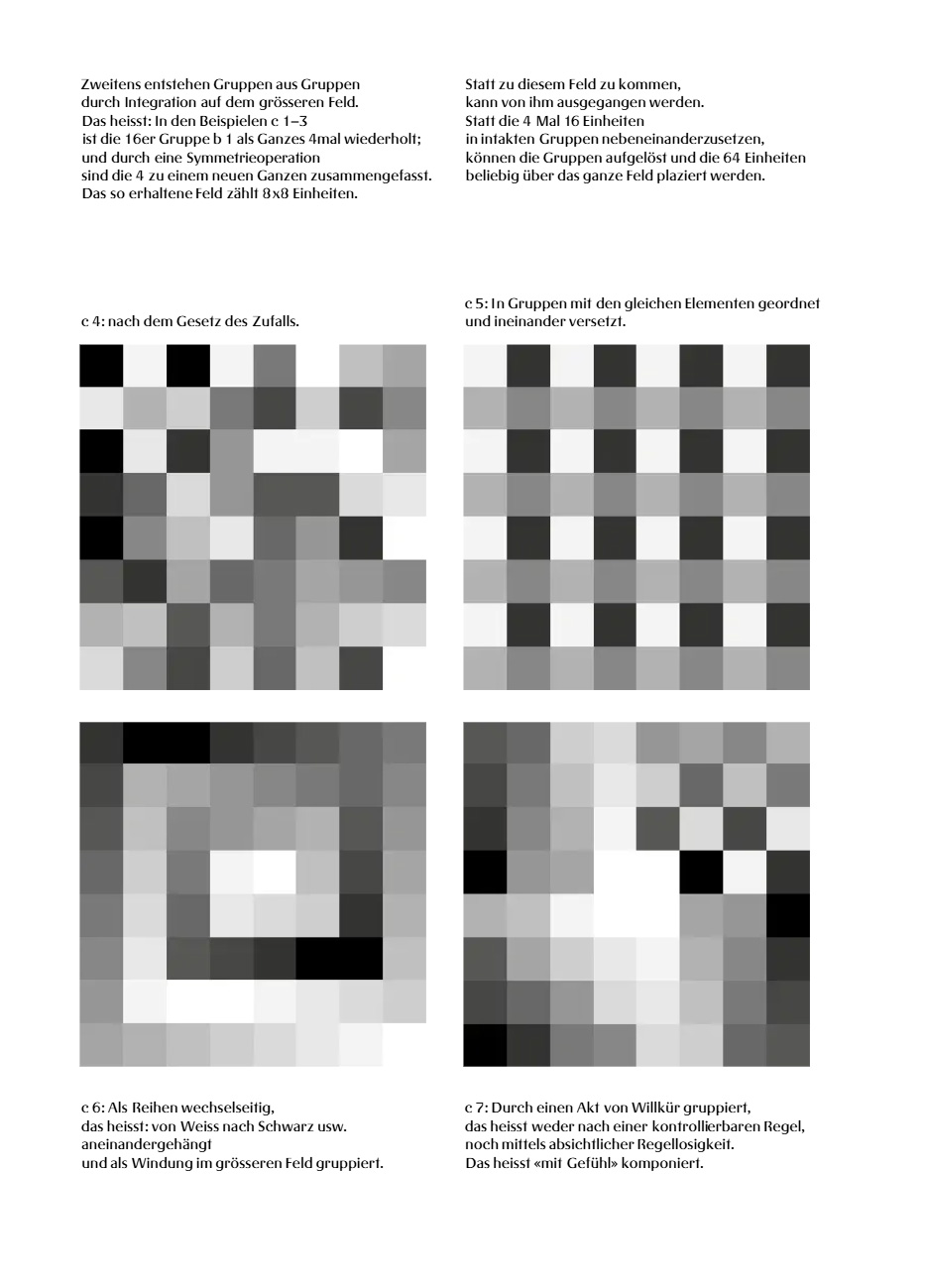

Karl Gernstner- Programme Entwerfen (1964)
.jpg)
Travess Smalley - Coordinates

Gustav Groer- Bindungslehre & Composition (1890)